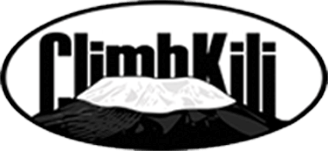
Speak with our Summit Experts 24/7

+1-888-589-1884
+1 843 589 1884, most recommended company on tripadvisor.
MOUNT KILIMANJARO TOURS & SAFARI
Welcome to Climb Kili, your trusted partner for unforgettable journeys to the summit of Kilimanjaro. Our unwavering commitment is to offer memorable, high-quality adventures to those with a spirit of exploration and a desire to conquer the highest freestanding peak in the world.
The Climb Kili Difference
At Climb Kili, we distinguish ourselves in the landscape of Kilimanjaro expeditions, not merely through our expertise but also our dedication to crafting a unique experience for every adventurer. We understand that climbing Kilimanjaro is more than a trek – it’s a transformative journey. It’s about immersing oneself in the awe-inspiring grandeur of nature, pushing personal boundaries, and discovering inner resilience.
More Than Guides, We Are Your Partners
We are not just your guides; we are your partners on this voyage of self-discovery. Our team ensures that your journey is not only safe and thrilling but also profound and meaningful. We aim to leave each climber with a sense of accomplishment that comes from conquering Africa’s highest peak and memories of an extraordinary journey that will be cherished forever. Every step with Climb Kili brings you closer to a meticulously curated and personally fulfilling epic adventure. Embrace the climb! It’s time to conquer Kilimanjaro with Climb Kili.
The Magic of Kilimanjaro Tours
Every Kilimanjaro tour unravels a story of revelation. From unique biomes to the unparalleled panoramas at the summit, our Kilimanjaro tours offer an immersive experience that captures the essence of this awe-inspiring mountain.
The Best in Kilimanjaro Expeditions
At Climb Kili, our pride lies in being recognized as one of the top facilitators for Kilimanjaro expeditions. Our wise and accomplished team is committed to orchestrating every Kilimanjaro trek with precision and unwavering dedication to your absolute safety and satisfaction.
Expert Kilimanjaro Guides at Your Service
The aspiration to ascend Mount Kilimanjaro can be a daunting endeavor, but under the guidance of our expert Kilimanjaro guides, your well-being is ensured. Our guides, seasoned mountaineers, have dedicated their lives to traversing Kilimanjaro’s trails, ensuring a nurturing, enlightening, and secure environment throughout your journey.
Tailored Kilimanjaro Treks
Our belief rests in tailoring Kilimanjaro treks that resonate with the unique preferences and requirements of our climbers. Whether you’re a seasoned trekker in search of a challenging route or a beginner yearning for a less demanding trail, we have a Kilimanjaro expedition option that aligns with your expectations.
Join Us for a Memorable Kilimanjaro Adventure
For those who dream of reaching the ‘Roof of Africa,’ we invite you to embark on a journey beyond the ordinary. At Climb Kili, we combine years of expertise, meticulous preparation, and a passion for exploration to create Kilimanjaro journeys that leave lifelong memories.
Our Kilimanjaro guides have been assisting adventures from all over the world climb Kilimanjaro for over three decades. You choose your start date!
CLIMB KILI SAFARIS
As we run our own Safari company, we can do any length and itinerary safari you'd like.
With a Local office on Zanzibar, we can take care of all your Zanzi needs. The Zanzibar archipelago consists of over 50 islands – which vary from tiny outcrops to the larger
Page Welcome Package
Years of experience, summit success rate, they summited kili with our guides.
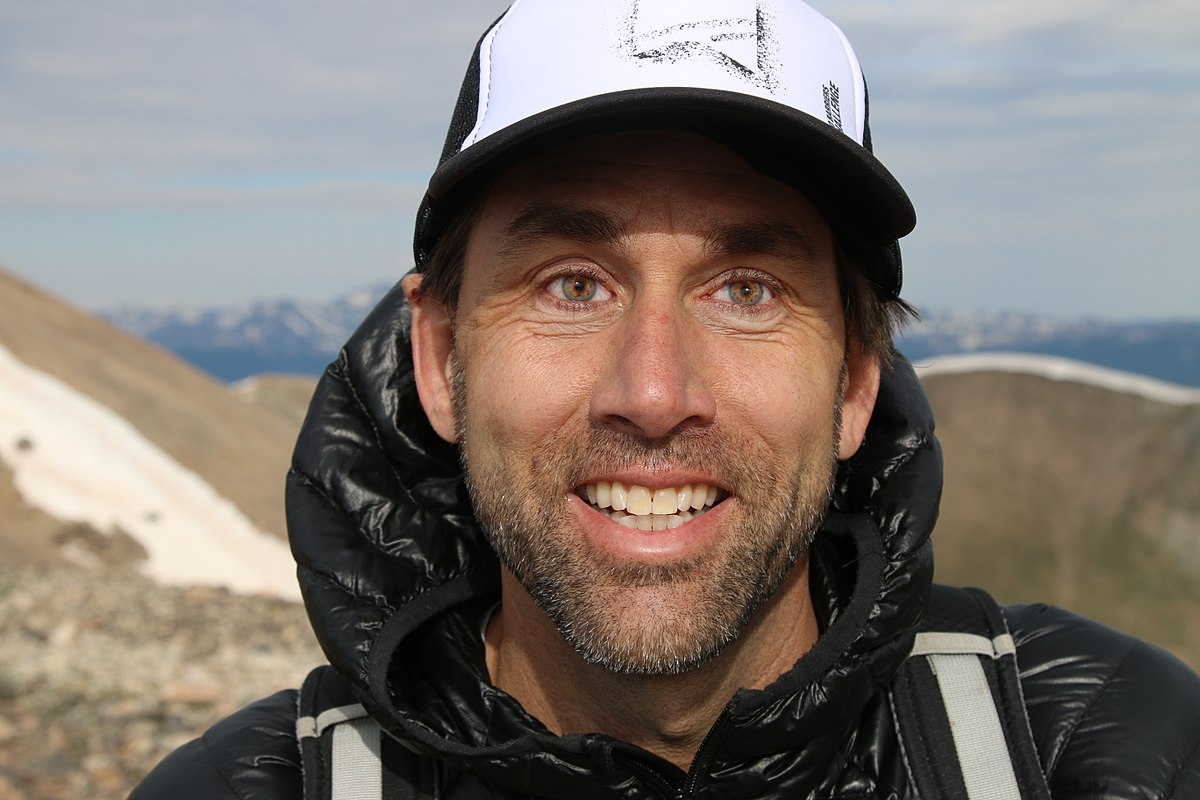
Trusted Experience Since 1984
With nearly 40 years experience summiting Mt Kilimanjaro, Why are we the best Kilimanjaro tour Company? We guide you long before the climbing Kilimanjaro by answering When is the best time to climb, how do you train for Kilimanjaro, what is the best route on Kilimanjaro and much more! Climb Kili is the premier trekking company for climbing Kilimanjaro and Tanzania safaris and we answer all the Kilimanjaro Questions.
At Climb Kili, we pride ourselves in providing the safest Mt Kilimanjaro treks with our certified equipment and professional Mt Kilimanjaro Guides. Make your reservation for a Kilimanjaro tour today!
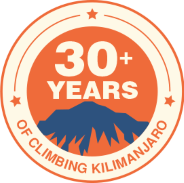
Which Kilimanjaro Trek is Right for you?
7 day machame, 8 day lemosho, today on kilimanjaro.

Frequently Asked Questions
Absolutely! Kilimanjaro’s climbing ability caters to individuals across the fitness spectrum. Our diverse trails cater to a range of skill levels, with our proficient guides accompanying you at every step, ensuring your safety and success.
Our history is steeped in leading adventure enthusiasts up Kilimanjaro. Our seasoned guides, comprehensive preparation, and thorough route planning, coupled with a commitment to your safety and enjoyment, set us apart.
We equip our climbers with a comprehensive gear list, including critical items like thermal clothing, hiking boots, and a headlamp, among other essentials. Our team is ready to answer any questions and assist you in your preparation phase.
Seize the opportunity at Climb Kili for an unparalleled adventure, reaching towering heights and creating memories to last a lifetime! Don’t overlook this incredible opportunity.
CLIMB KILI BLOG
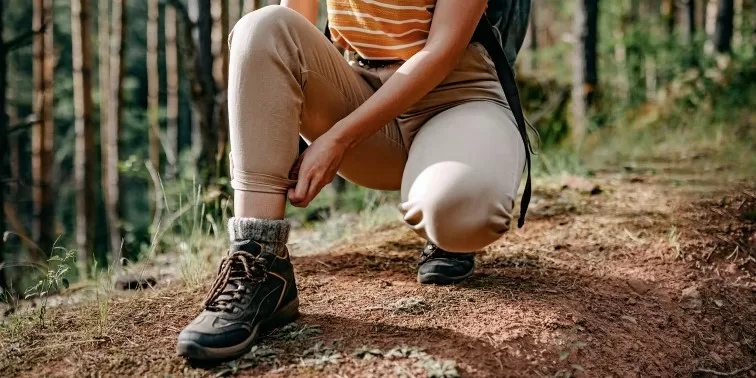
Top 3 Best Men’s and Women’s Boots for Kilimanjaro 2023
Embarking on a challenging adventure
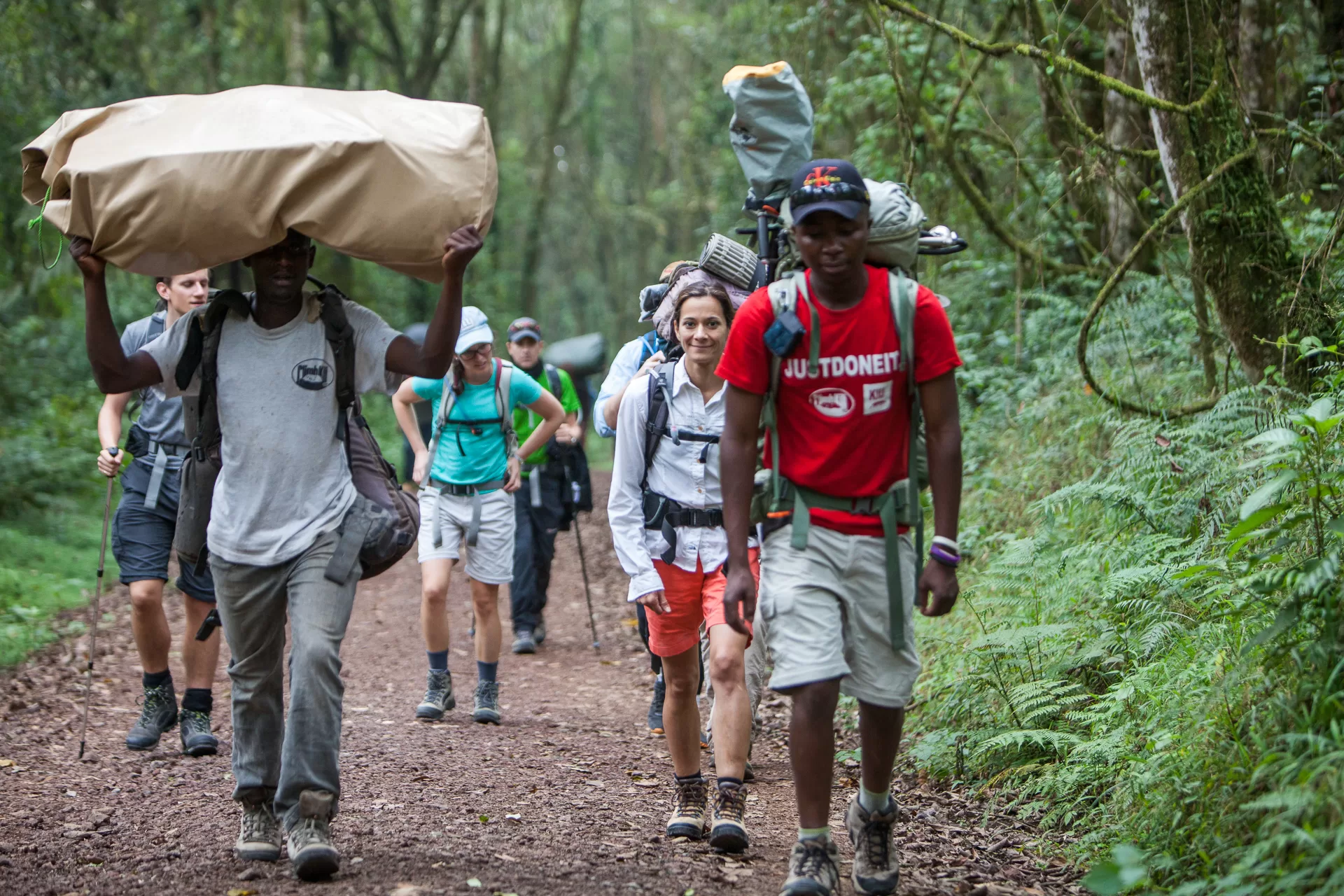
Kilimanjaro Training Living at Sea Level
Training for Kilimanjaro Living at
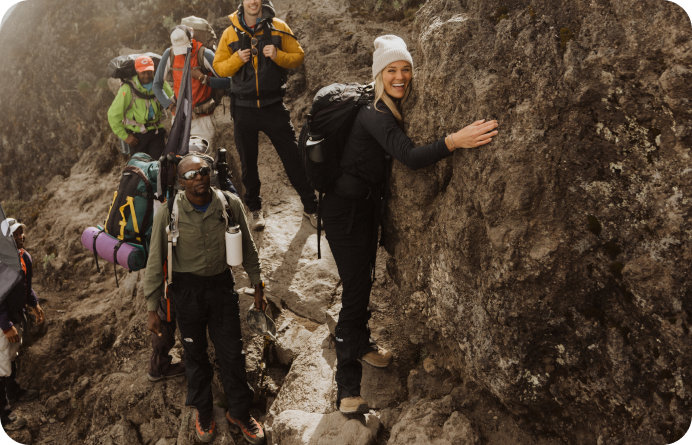
Solo Female Trekking on Kilimanjaro
Is is safe to climb Kilimanjaro as a Solo Female Trekker?
MOUNT KILIMANJARO TOURS & SAFARI REVIEWS
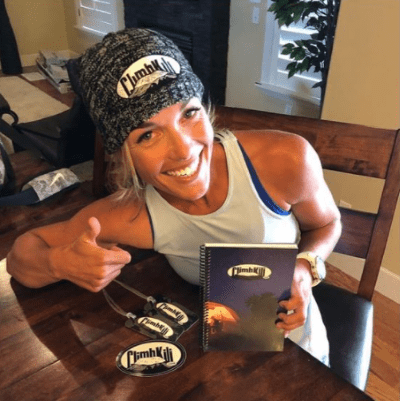
Nomadic Matt's Travel Site
Travel Better, Cheaper, Longer
The Ultimate Guide to Climbing Mount Kilimanjaro
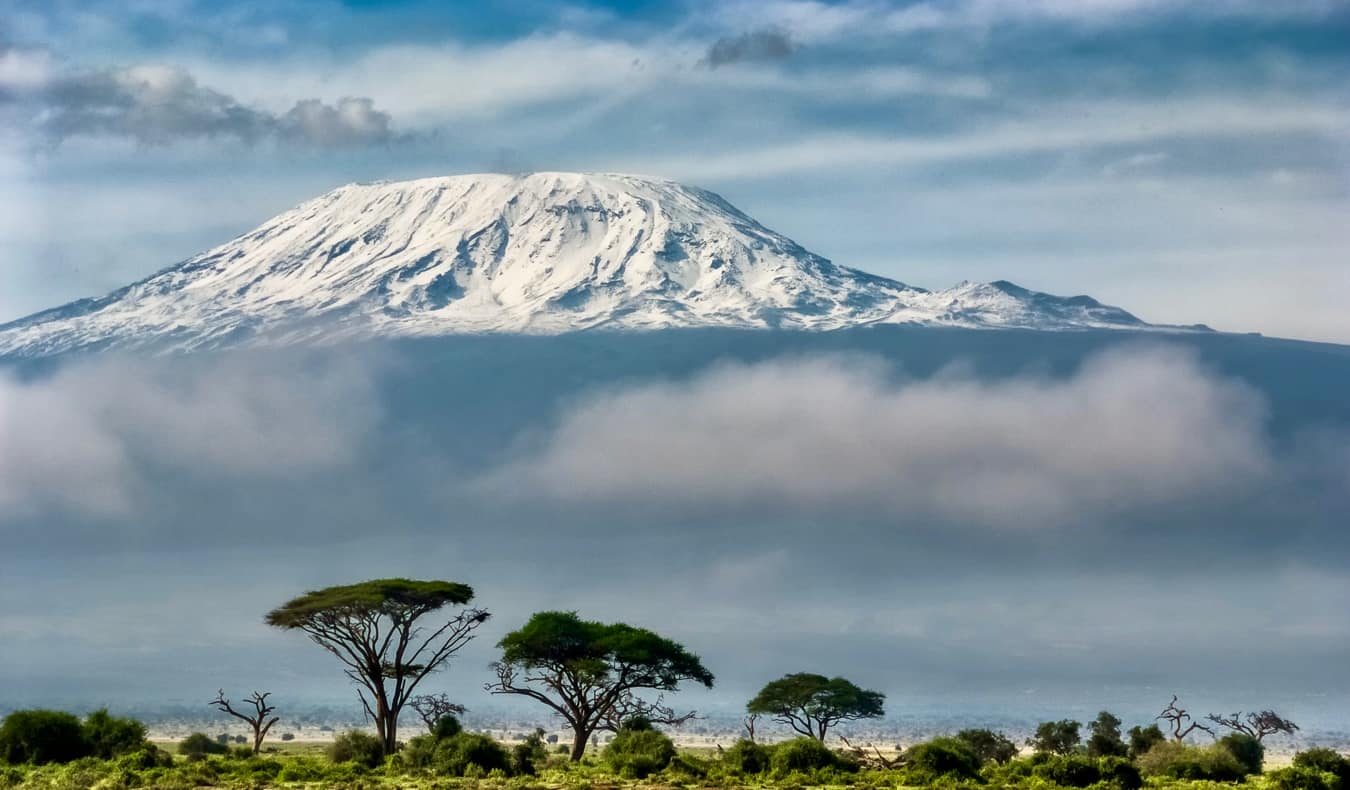
Hiking Kilimanjaro is something atop the list of many travelers’ bucket lists. Each year, the iconic mountain attracts thousands who spend days attempting to reach her snowy summit.
Since I’ve never hiked the mountain, I’ve invited my community manager, Chris, to share his tips and advice to help you save money and boost your chances of reaching “the Roof of Africa.”
Standing on top of Kilimanjaro at sunrise was one of the most amazing feelings I’ve ever had. After a week of struggle — including hiking over 17 hours in a single day — I had made it to the frigid summit. For a few moments, I was the highest person on the entire continent. That was a truly magical feeling.
Kilimanjaro holds a special place in the travel world. It’s one of those activities — like Everest base camp, Machu Picchu , or the Camino — that attracts a certain kind of traveler. The kind who wants a challenge, who wants to push themselves, to test themselves.
While hiking Kilimanjaro has become more tourist-friendly over the years, it’s still a serious challenge. People still get hurt — and die — on the mountain every single year. Only 45–65% of people who start the hike make it to the top.
However, with a little planning and preparation, you can greatly increase your chances of reaching “the Roof of Africa.” Here’s everything you need to know to make the most of your trip:
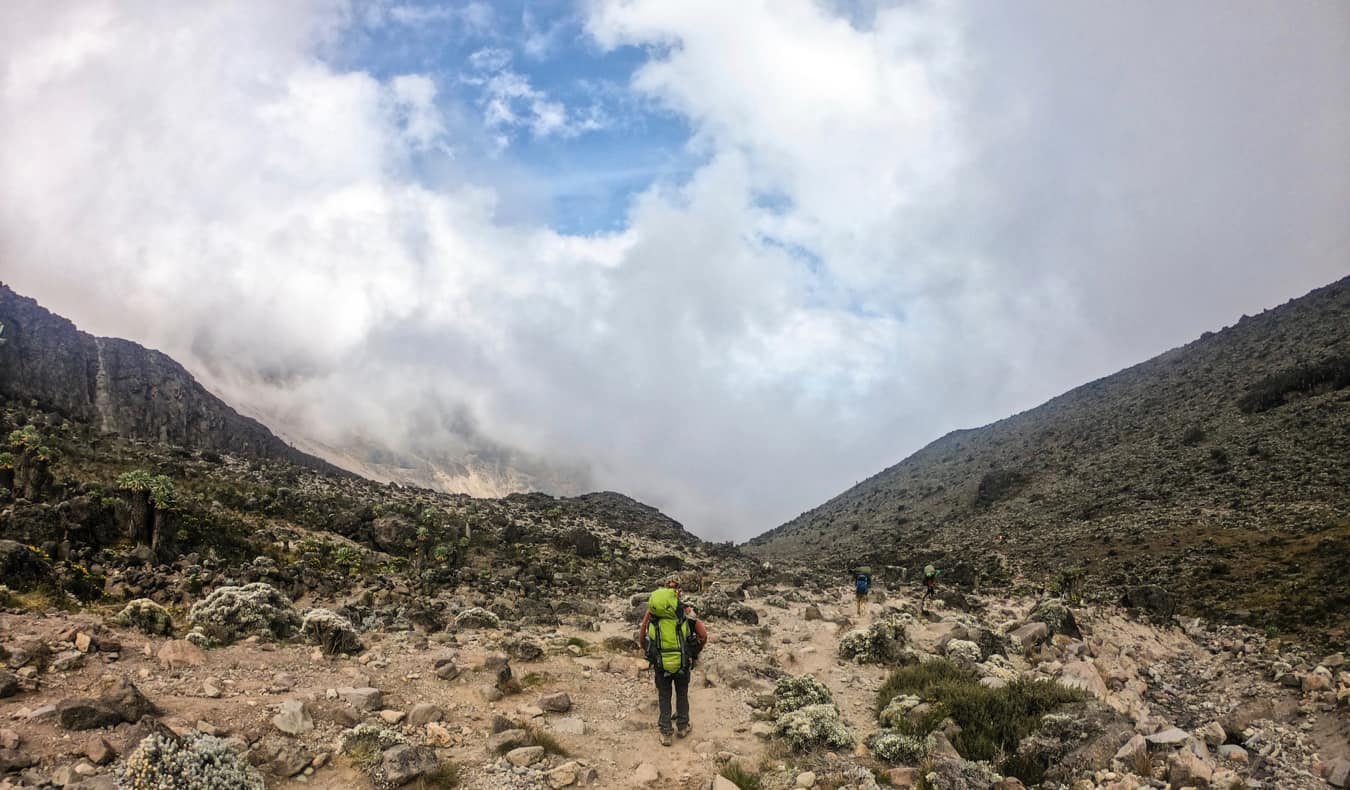
Here’s an overview of the main routes:
Marangu : This is “the Coca-Cola route,” named after the fact that there are huts along the way where you can sleep and buy things — like a cold Coke. It actually has a low success rate, however, as people underestimate the challenge and opt to rush to the top in five days instead of taking more time to acclimatize.
Machame : This is the most popular route. When done in seven days, it has a success rate of over 60%, hence its popularity. It’s called “the whiskey” route,” hinting at the fact that it’s a more serious challenge than the Coca-Cola route.
Rongai : This is the easiest route on Kilimanjaro. It’s a bit less scenic and more expensive (there aren’t as many budget operators here), but it’s the only route that approaches from the north. It’s also much less busy.
Shira : This route jumps into some high-altitude gains early on before joining the Machame route. It’s challenging and more expensive, since you start in the west before linking up with the main route.
Lemosho : This is the most beautiful route up the mountain, which is why I chose it. It offers lots of variety and plenty of challenge. It’s one of the more expensive routes, however.
Umbwe : This route is really only for experienced climbers looking for an extreme challenge. It’s a lot of scrambling and climbing as opposed to regular hiking.
Regardless of what route you take, I would suggest nothing less than seven days. Don’t rush this trip. Although it will cost more money, the slower you go, the better your body adapts to the altitude, which is the #1 thing you can do to drastically increase your chances of success.
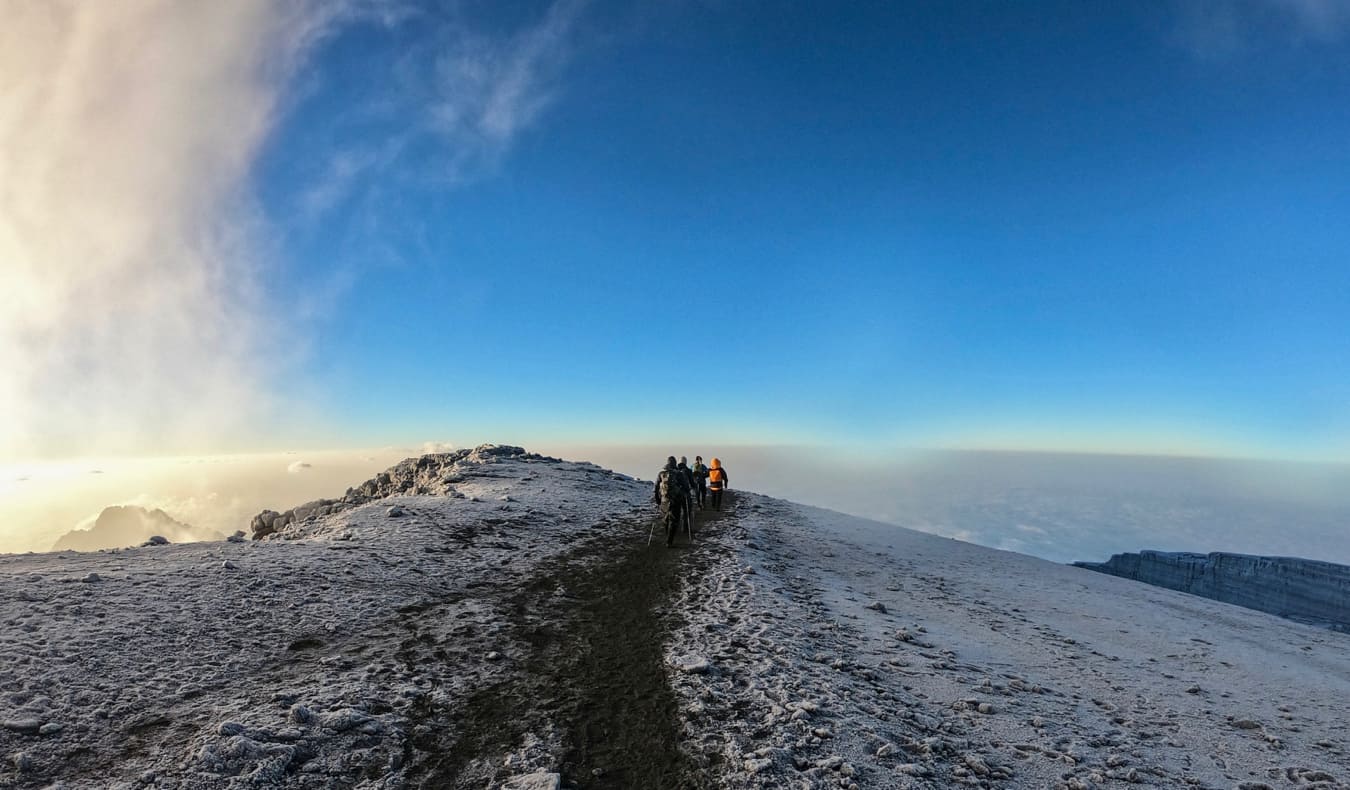
I suggest going for a more middle-of-the-road company for two reasons:
First, they will have more qualified guides, so you can learn more during your hike. These companies also usually pay their porters fairly, so you can be confident your team is taken care of.
Second, you’ll know that the company isn’t cutting corners. There is a lot of competition for Kilimanjaro treks, so you know if one company is just too cheap to be true that they are likely skimping on something. Since this is a once-in-a-lifetime adventure, don’t be cheap.
Prices range from $1,000 to over $5,000 USD per person. I wouldn’t book with any company charging less than $2,000 USD (I paid around $2,200 for my trip, before tipping — see more on that below), as anything under that is going to be bare-bones.
Remember, people get seriously injured on this mountain every year, and around 10 are killed. Don’t cut corners! Pay for a reputable company with good reviews. Not only will you enjoy your trip more but you’ll feel more comfortable and be safer.
Finding a Tour Company
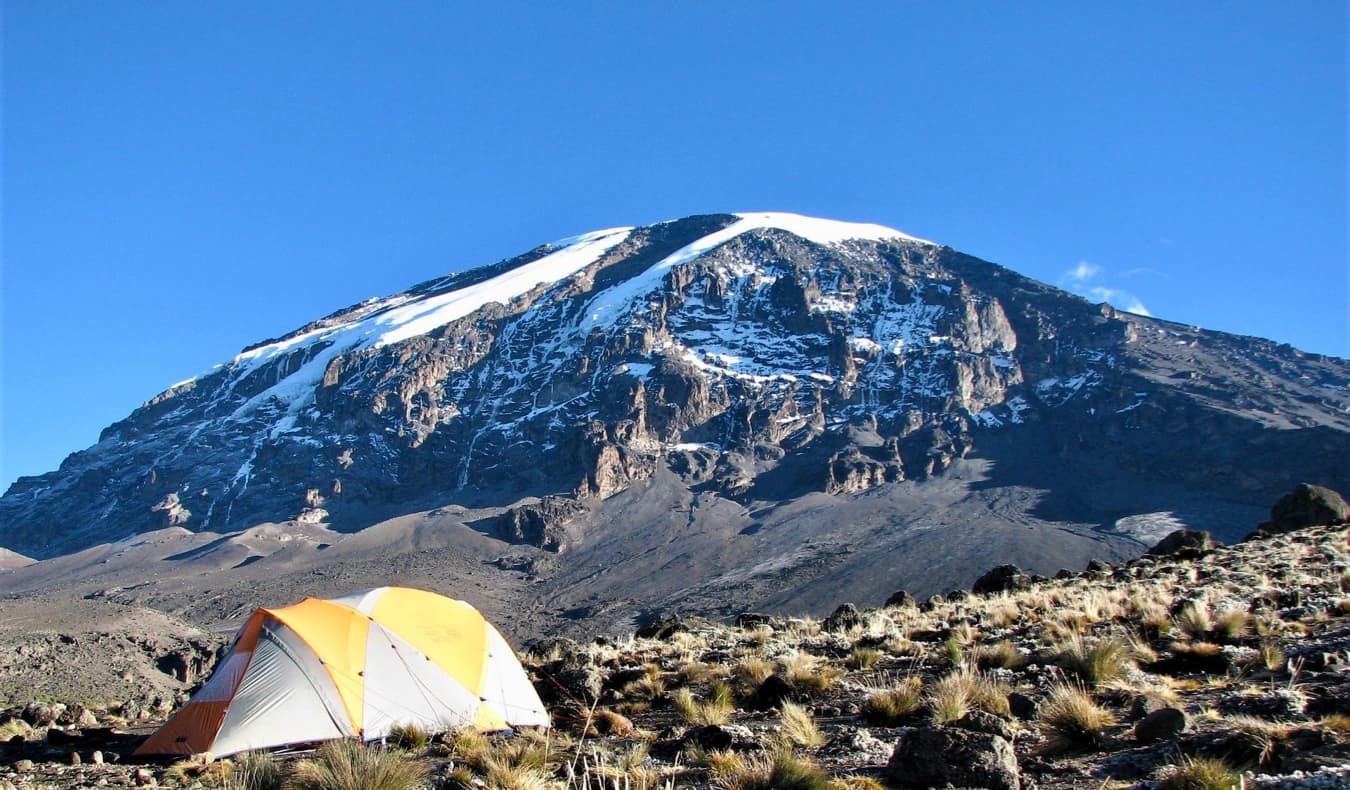
But there are tons of companies available. How do you decide which to go with?
Here are a few tips:
1. Read reviews – Once you’ve narrowed down your choices based on your budget, look for a company that has positive reviews. While online reviews should always be taken with a grain of salt, they will help you establish a first impression. Keep an eye out for details about the gear and food provided.
2. Ask about their client/porter ratio – How many other travelers will you be going with? And how many porters/guides/assistant guides will be included? You don’t want to be stuck in a huge group where you don’t get personalized attention if you have questions or concerns.
3. What is their success rate? – What is the company’s success rate for the route you’re looking at? While they can’t control the weather, they can do everything in their power to get their clients to the top.
4. Are they a responsible company? – The Kilimanjaro Porters Assistance Project has a list of tour operators that meet their standards for responsible and ethical travel. Book with a company on this list to ensure that your porters are fairly treated. I didn’t know about this list before I went, and it’s one of my biggest regrets about the trip.
5. Pick a company with included accommodation – Most companies include a free hotel stay for the night before your trek and for the night after (as well as pick-up and drop-off). Make sure you choose a company that offers this, so you can get a decent night’s sleep before your hike and enjoy a real bed after your strenuous time on the mountain.
Intrepid Travel and G Adventures are two companies I would recommend. They meet KPAP’s guidelines and offer a variety of treks with qualified local guides. Start your search with them.
A Note on Tipping Your Guides
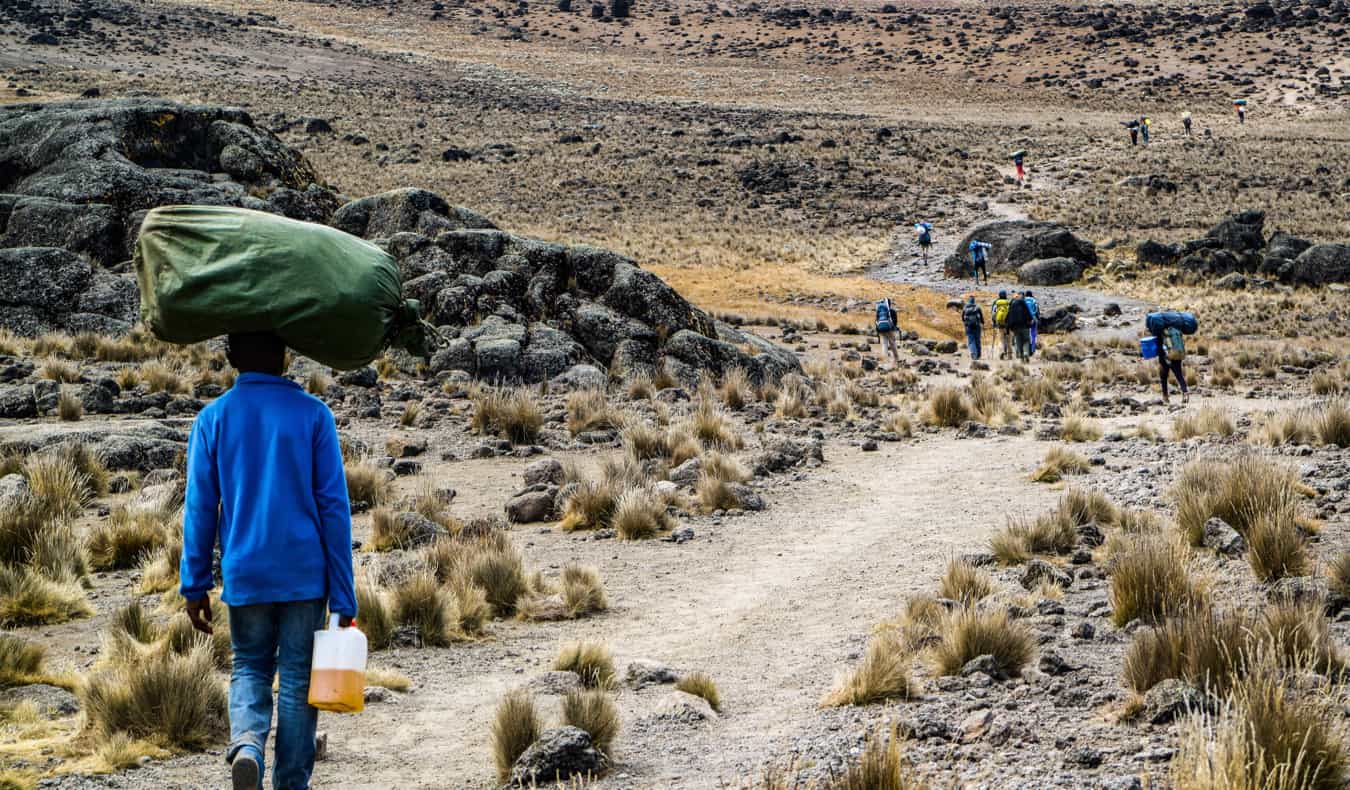
At the end of your trip, usually while you’re still on the mountain, you’ll need to tip your team. This has to be done in the local currency — which means you’ll need to get all that cash before you hike and carry it with you on the trek.
You’ll be tipping a specific amount per day to each porter, a bit more to the cook, and then a bit more to the guides. Breakdowns usually look something like this:
- Main guide – $20 USD per day
- Assistant guide – $15 USD per day
- Cook – $12 USD per day
- Toilet engineer – $5-10 USD per day
- Waiter – $5-10 USD per day
- Porters – $5-10 USD per day (each)
What I read online beforehand stated that a 15% tip is customary. So, if you paid $2,500 USD for your trip than you’d tip at least $330 USD to the team. When I asked my guide about this, he said a normal tip was closer to $1,000 USD…which is almost a 50% tip.
As you can imagine, things can get awkward if someone is expecting $1,000 USD and you give them an envelope with just $400 USD — and most teams will open the envelope while you’re standing right there in front of them. It can get a little uncomfortable.
Obviously, your porters deserve to be paid fairly. They are doing incredibly challenging work. If you can afford a generous tip, they 100% deserve it. For minimum tipping guidelines, I encourage you to follow the Kilimanjaro Porters Assistance Project’s guidelines .
13 Tips for Hiking Kilimanjaro
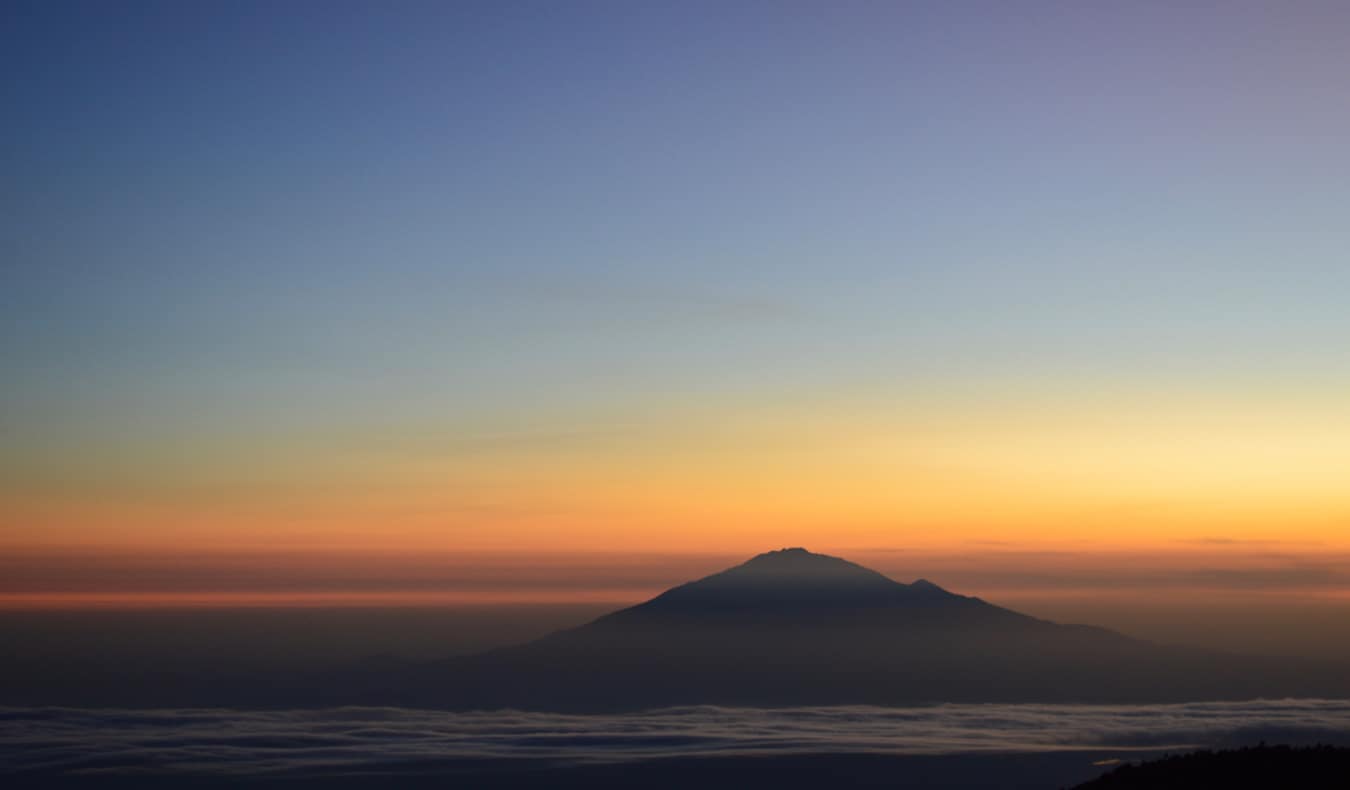
2. Train in advance Every route on Kilimanjaro will offer its own challenges. In order to meet — and overcome — those challenges, you need to make sure you’re physically fit. While most days on the trail are relatively easy, you do a lot of elevation gains, and the last day can involve upwards of 17 hours of hiking in a 24-hour period. I’m not saying you need to be jacked, but you do want to make sure you can handle a week of walking uphill.
3. Prepare for a mental battle Kilimanjaro is just as much of a mental battle as it is physical one. While the final day is incredibly physically challenging, it’s also a mental marathon. Hiking for up to 17 hours, in freezing temperatures, in the pitch black, while also battling the altitude and the weather? That’s a recipe for disaster unless you can keep your mental fortitude.
4. Bring altitude medication The altitude really does impact everyone differently. I saw people less than an hour from the summit who turned back because of it. I highly recommend you bring and take altitude medication just in case. I found it super helpful. Your doctor can give you an overview of your options and their side effects, but I took Diamox and didn’t really suffer any altitude sickness at all. However, the side effect was that I had to pee constantly (which can be inconvenient for women).
5. Bring a water filter Your porter team will make sure you have water during your hike. It’s collected from different areas on the mountain, boiled, and then served to you. Since the water is boiled, it’s perfectly safe. However, it never hurts to be extra safe. Bring a filter like LifeStraw or SteriPen to ensure that your water is free from bacteria. Better safe than sorry!
6. Book a company that includes gear If you’re an avid hiker, chances are you have all the gear you need. However, bringing it with you to Tanzania is likely more hassle than it’s worth — especially when you consider that you need cold-weather gear for summit night, which takes up a lot of space. For that reason, make sure you book a company that has all the gear you need: hiking poles, winter hiking gear for the summit, sleeping bags, gaiters — the list goes on. Most companies include gear, but it’s always a good idea to double-check.
7. Bring snacks! This one is super important for your mental well-being. While the cooks on the mountain are incredibly gifted, I encourage you to bring snacks, so you have a pick-me-up to look forward to. I brought several bags of cookies and candies, so I had a sugar boost during the day for, as well as something for camp. Just make sure you save a bunch for summit night because that’s when you’ll need it most.
8. Pay extra for a toilet Most companies will charge extra for a portable toilet that will accompany you (it’s just a small travel toilet in a narrow tent so you have some privacy). It’s incredibly basic but absolutely worth every penny. The few toilets in the various camps are disgusting, so having your own private toilet tent is a worthwhile expense.
9. Stay hydrated I drank 4-5 liters of water per day while hiking. I was literally drinking all day every day. You’ll need at least 3L on you during the day, and the rest you can drink in camp. That means you’ll need a 2-3L water bladder and then maybe an extra 1L bottle. Always make sure they are full before you set off for the day — and make sure they are empty by the time you get to camp. Staying hydrated is one of the most important things you can do to increase your chances of making it to the top.
10. Break in your footwear If you’re buying new hiking boots for this trip, make sure you break them in. You’ll want at least one month of regular wear in the boots to make sure you don’t get blisters. Over the years, I’ve seen some nasty wounds among travelers who didn’t break in their boots for one hike or another. Don’t make the same mistake!
11. Go slow — and then go even slower I’m a fast walker and a fast hiker, so this was tricky for me, but it’s super important that you take it slowly so you can acclimatize. Your guides will constantly remind you of this —listen to them! On summit night, my speed was half a foot per stride (compared to my usual stride of around three feet). The slower you go, the more likely it is that you will succeed.
12. Double-check your dietary concerns If you have an allergy or special diet, make sure the company knows. And then remind them — multiple times. I informed our company three times that my sister is vegetarian and I am vegan — and we still got meat on day one. Fortunately, we got it all sorted out and had an amazing cook for our trip, but that could have gone sideways very easily. Kili is the last place you want to be lacking calories (or running to the toilet!).
13. Bring extra batteries for your camera After 7+ days of hiking, chances are your phone and camera will be dead. Bring an external charger and/or extra batteries for your camera so that you can be sure to have juice for summit day. You don’t want to get to the top and not be able to snap some photos!
Hiking Kilimanjaro: Frequently Asked Questions
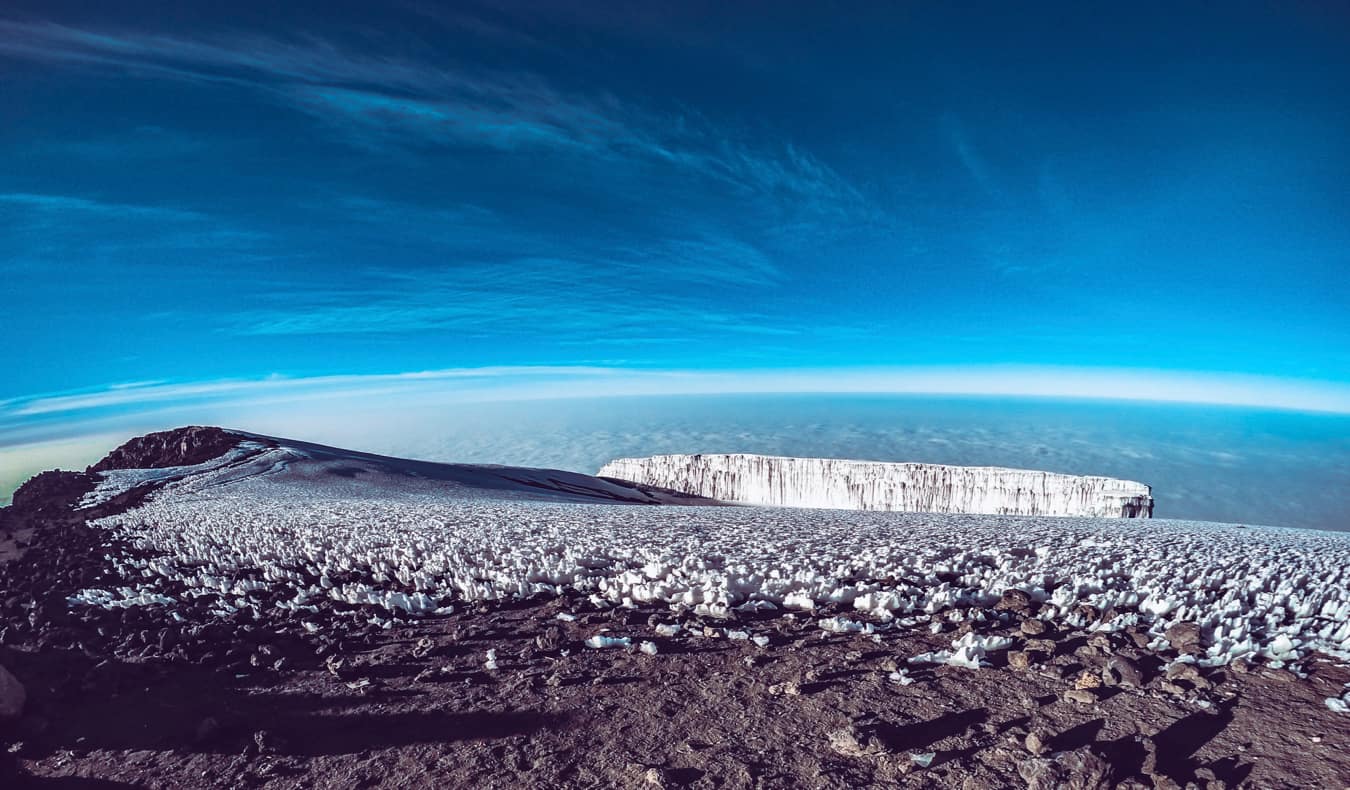
Can you get altitude sickness on Kilimanjaro? The altitude can cause headaches and fatigue, so take it slow and bring altitude medication just to be safe. I took altitude medication and never had any issues. However, I saw numerous people turn back — even someone who was just an hour from the top — because of the altitude. So take it slow, listen to your guide, and bring medication just in case.
How hard is the hike? It’s challenging. Most days aren’t particularly hard, but there are some days that were exhausting. You’ll want to be physically fit.
Personally, I only found summit day challenging. It involved hiking all day, sleeping for a few hours, and then starting for the summit around midnight. You hike in the dark, and it’s incredibly cold (I had five layers on). After 20 minutes on the peak, you head back down, which means you hike upwards of 15-17 hours in a 24-hour period. It’s exhausting but worth it!
Do you need oxygen to hike Kilimanjaro? Nope!
What is the best month to climb? The best times to climb Kilimanjaro are from December to March and from June and October. That’s when it is the driest.
How cold is it at the top? At night, it can get as low as -20°C (-4°F) at the summit. It was frigid when I arrived at the top at sunrise (my water bottle and water bladder were frozen).
Why don’t people succeed in making it to the summit? The main reasons people don’t make it are the weather, altitude sickness, and lack of physical fitness. Make sure you train in advance and bring altitude meds to boost your odds of reaching the summit!
Hiking Kilimanjaro is an amazing, challenging, and rewarding adventure. While it isn’t cheap and does takes some planning (and training), reaching the summit makes it all worthwhile.
By taking the above tips and advice to heart, you’ll not only save money and get more out of your trip, you’ll drastically increase your odds of succeeding on your trek, giving you the opportunity to stand on the roof of Africa and bask in the continents natural beauty.
Book Your Trip: Logistical Tips and Tricks
Book Your Flight Find a cheap flight by using Skyscanner . It’s my favorite search engine because it searches websites and airlines around the globe so you always know no stone is being left unturned.
Book Your Accommodation You can book your hostel with Hostelworld . If you want to stay somewhere other than a hostel, use Booking.com as it consistently returns the cheapest rates for guesthouses and hotels.
Don’t Forget Travel Insurance Travel insurance will protect you against illness, injury, theft, and cancellations. It’s comprehensive protection in case anything goes wrong. I never go on a trip without it as I’ve had to use it many times in the past. My favorite companies that offer the best service and value are:
- SafetyWing (best for everyone)
- Insure My Trip (for those 70 and over)
- Medjet (for additional evacuation coverage)
Want to Travel for Free? Travel credit cards allow you to earn points that can be redeemed for free flights and accommodation — all without any extra spending. Check out my guide to picking the right card and my current favorites to get started and see the latest best deals.
Need Help Finding Activities for Your Trip? Get Your Guide is a huge online marketplace where you can find cool walking tours, fun excursions, skip-the-line tickets, private guides, and more.
Ready to Book Your Trip? Check out my resource page for the best companies to use when you travel. I list all the ones I use when I travel. They are the best in class and you can’t go wrong using them on your trip.
Got a comment on this article? Join the conversation on Facebook , Instagram , or Twitter and share your thoughts!
Disclosure: Please note that some of the links above may be affiliate links, and at no additional cost to you, I earn a commission if you make a purchase. I recommend only products and companies I use and the income goes to keeping the site community supported and ad free.
Related Posts
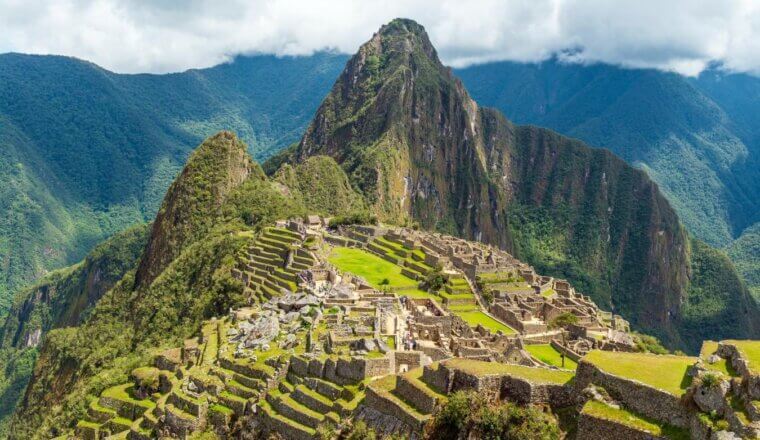
Get my best stuff sent straight to you!
Pin it on pinterest.

The Ultimate Guide to Climbing Mount Kilimanjaro

Mount Kilimanjaro is the fabled Roof of Africa. Climbing Mount Kilimanjaro demands determination, dedication, and energy. But it’s also a summit that rewards with visions of African ice caps, wanderings through moss-caked cloud forests, encounters with elephants, and – of course – a chance to stand at the highest point on the continent. Soaring 19,341 feet (5,895 meters) above sea level in the midst of northern Tanzania, it crashes through the clouds to a trio of volcanic cones that were formed millions of years ago.
You’ve stumbled across this post because you’re interested in Africa’s highest mountain. Mount Kilimanjaro is one of the most popular destinations for trekkers around the world. In this ultimate travel guide, you’ll discover expert information to help prepare you for one of the best climbing adventures of your life!
What’s in this Guide?
- My experience on Mount Kilimanjaro
- About Mount Kilimanjaro
- History of climbing Mount Kilimanjaro
- Getting to Mount Kilimanjaro
- An overview of Moshi, Tanzania
- When is the best time to climb Mount Kilimanjaro?
- Mount Kilimanjaro climbing routes
- Sample itinerary of Kilimanjaro’s most popular route
- Key sites while climbing Kilimanjaro
- Preparation and training
- Other adventures near Mount Kilimanjaro
1. My experience on Mount Kilimanjaro
Mount Kilimanjaro is a trek that asks a lot but gives a huge payoff. Seven days of climbing this sleeping giant from the farms around Moshi, Tanzania to the scree-rimmed summit took me through some of the most incredible landscapes I’ve ever encountered.
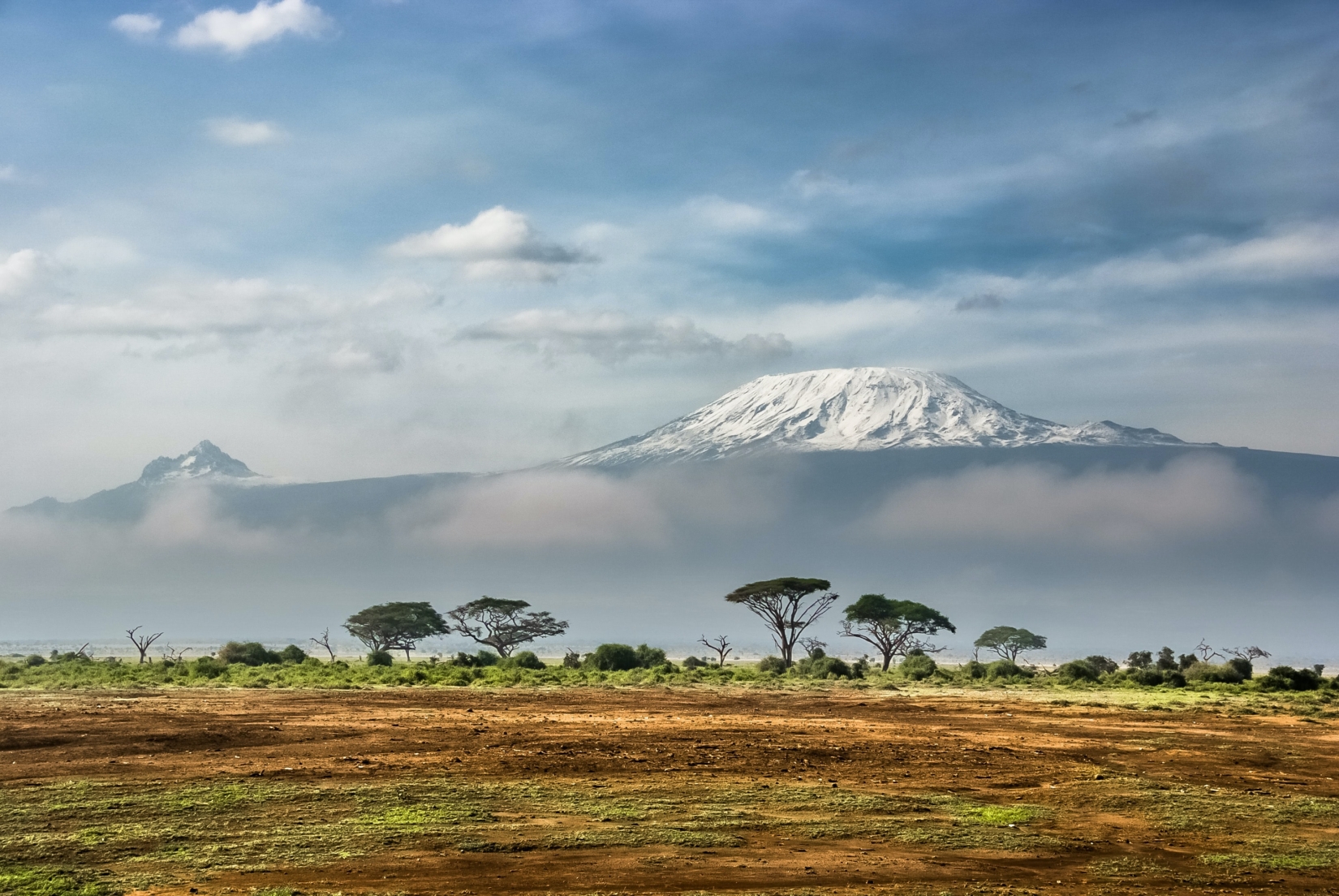
I opted for the common and wildly popular Machame Route. It’s got the highest success rate of all the seven routes up Kilimanjaro and peppers the journey with welcome acclimatization camps. My summit push happened on day six of seven. It was the true highlight of the Mount Kilimanjaro hike, opening vistas that sweep north into the elephant-stalked savannahs of Kenya and across to mystical Mount Meru deeper into Tanzania. I’ll never forget that view and you must see it for yourself!
2. About Mount Kilimanjaro
Mount Kilimanjaro is the highest mountain in Africa, located in Tanzania. It clocks up an altitude of 19,341 feet (5,895 meters) and anchors the amazing Kilimanjaro National Park in the far north of Tanzania. It’s actually a dormant volcano that’s formed of three main cones. They sit almost equidistant apart, running from Shira (the lowest) in the east to Mawenzi in the west. Hikers are usually aiming for Kibo, the middle cone. That’s where Uhuru Peak, the pinnacle of Kilimanjaro and the final goal of most treks, shoulders above the crater on a bluff.
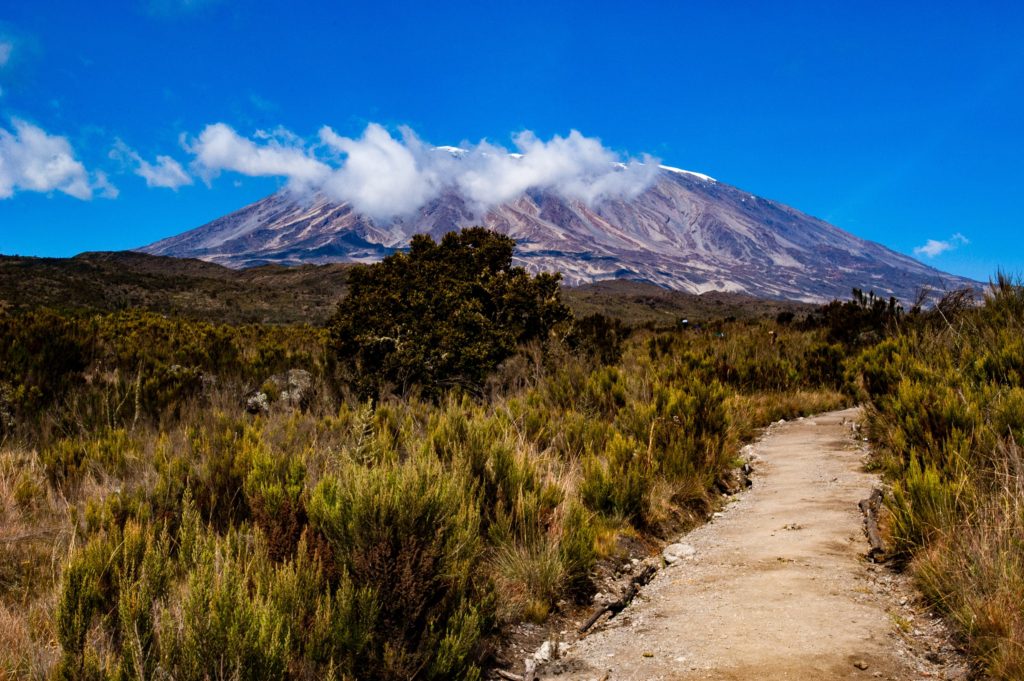
Kilimanjaro is a mountain of two sides. The northern slopes are softer and host way less vegetation. They drop away towards the Tanzania-Kenya border in sinews of lava chutes and dusty scree. The south is encircled by a lush ring of montane forest and cloud forest, and the main peaks of Uhuru and Mawenzi loom steeper overhead.
One of the defining features of Kilimanjaro is what’s known as the Saddle Plateau. It’s where the mountain sort of flattens out at around 14,400 feet (4,400 meters), forming a tabletop region between the smaller craters with Kibo right in the middle. Good news for trekkers, it gives ample space for multiple acclimatization camps – the whole Saddle measures close to 14.9 miles (24 kilometers) from end to end! Still interested in learning more? Check out these 10 Fast Facts About Mount Kilimanjaro .
3. History of climbing Mount Kilimanjaro
The volcanic activity that formed the cloud-shattering tops of Mount Kilimanjaro is thought to have started around a million years ago and lasted something in the region of 500,000 years. It gave rise to a hulking mass of a peak that has itself inspired human legends. The Tanzania region’s Swahili Chagga people tell of ancient elephant burial grounds on the summit. Others have posited it as the potential source of the life-giving River Nile.
Recorded attempts to climb Kilimanjaro didn’t begin in earnest until the Germans came to East Africa in the second half of the 19th century. Hans Meyer and his Austrian climbing partner Ludwig Purtscheller are now hailed as the first Europeans to conquer the top of Kibo crater and complete the Kilimanjaro hike, which they finally managed in 1889 after a former failed attempt. They did it with help from a team of Swahili porters and camp builders. If this rich history excites you, check out our other Five Top Adventure Destinations for History Buffs !
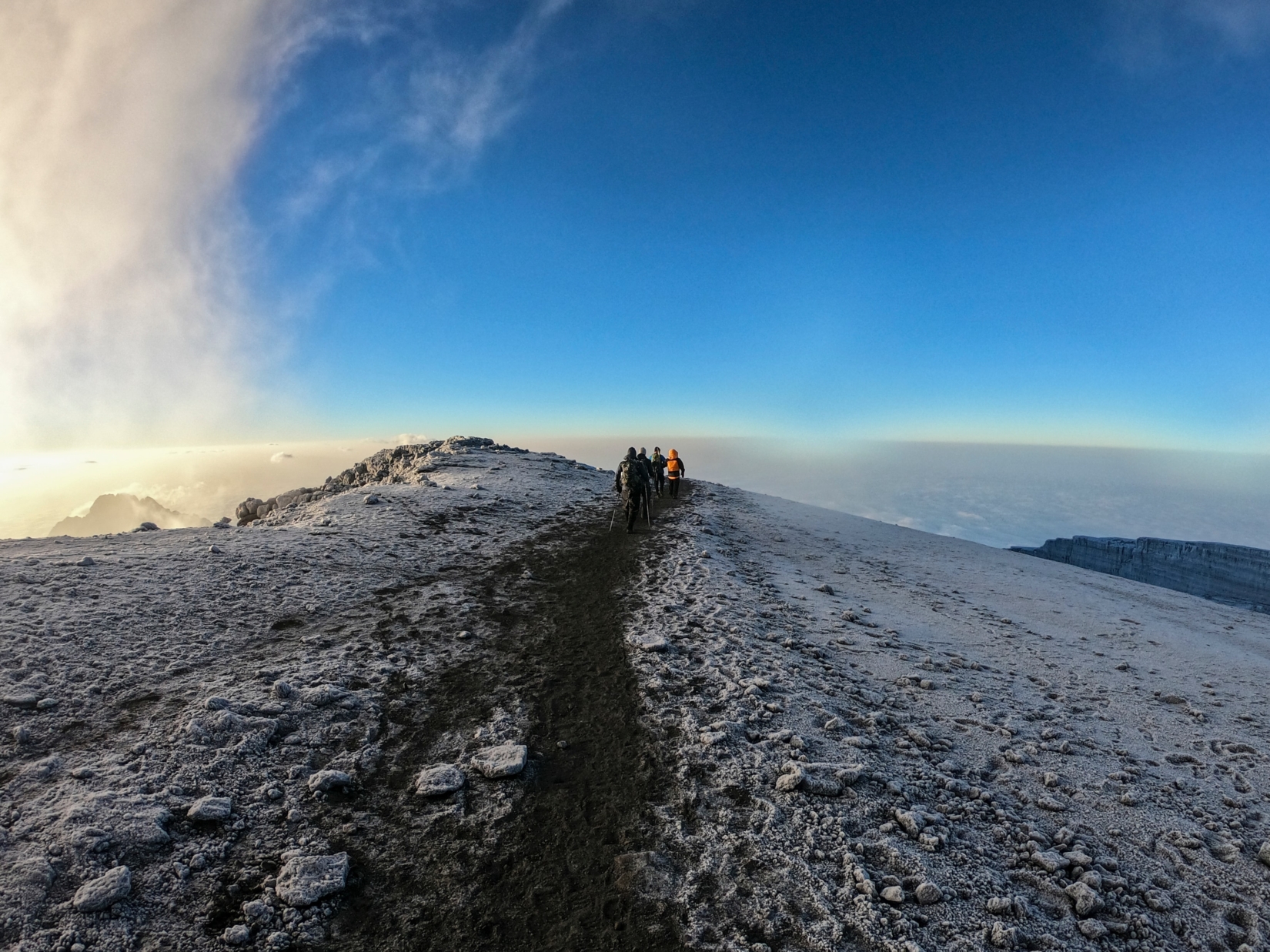
Since then, the allure of the mythic Roof of Africa and the journey to climb Kilimanjaro has only grown and grown. Today, the mountain sustains a whole industry of climbers and climb assistants in Tanzania – one estimation is that it supports up to 11,000 jobs in the region. A whopping 35,000 to 50,000 trekkers are thought to attempt the Mount Kilimanjaro climb each year, with just over two-thirds of them making it to the summit and successfully completing the Kilimanjaro hike.
4. Getting to Mount Kilimanjaro
There’s no better way to get right into the base of the great mountain than with a flight to the Kilimanjaro International Airport where your quest to climb Kilimanjaro begins. It’s not only the gateway to the trailheads for Africa’s highest peak, though. It’s also one of the prime access points for the safari meccas of Arusha National Park, the Ngorongoro Crater, and the savannahs of Tarangire National Park. That means there will be high competition for airfare, so don’t hang around when you come to book.
Thankfully, there’s a good mix of long-haul carriers coming in from Middle Eastern hubs like Istanbul and Doha, along with big European changeover points like Amsterdam Schiphol. There are also plenty of arrivals from African destinations, including Nairobi, Dar es Salaam, and Entebbe.
From the Kilimanjaro International Airport, look to get to Moshi, Tanzania. There’s a good chance that the pickup and transfer will be included in your trekking package. If not, a private taxi from the terminals to any hotel in the town is set at a fixed rate of $50. There are also shared shuttle buses run by Precision Air that cost closer to $5 a head.
All prices are in US Dollars.
5. An overview of Moshi, Tanzania
Moshi is known as the loveable, ramshackle hub of the whole Kilimanjaro region. A cacophony of honking 4X4s and crying goat herds, it’s the launchpad for the vast majority of expeditions to climb Kilimanjaro. During peak climbing season (more on that below), you can hardly move for trekkers – some fresh-faced and raring to go, others tanned and tired but with one line less on the bucket list– completing the Kilimanjaro hike to the summit.
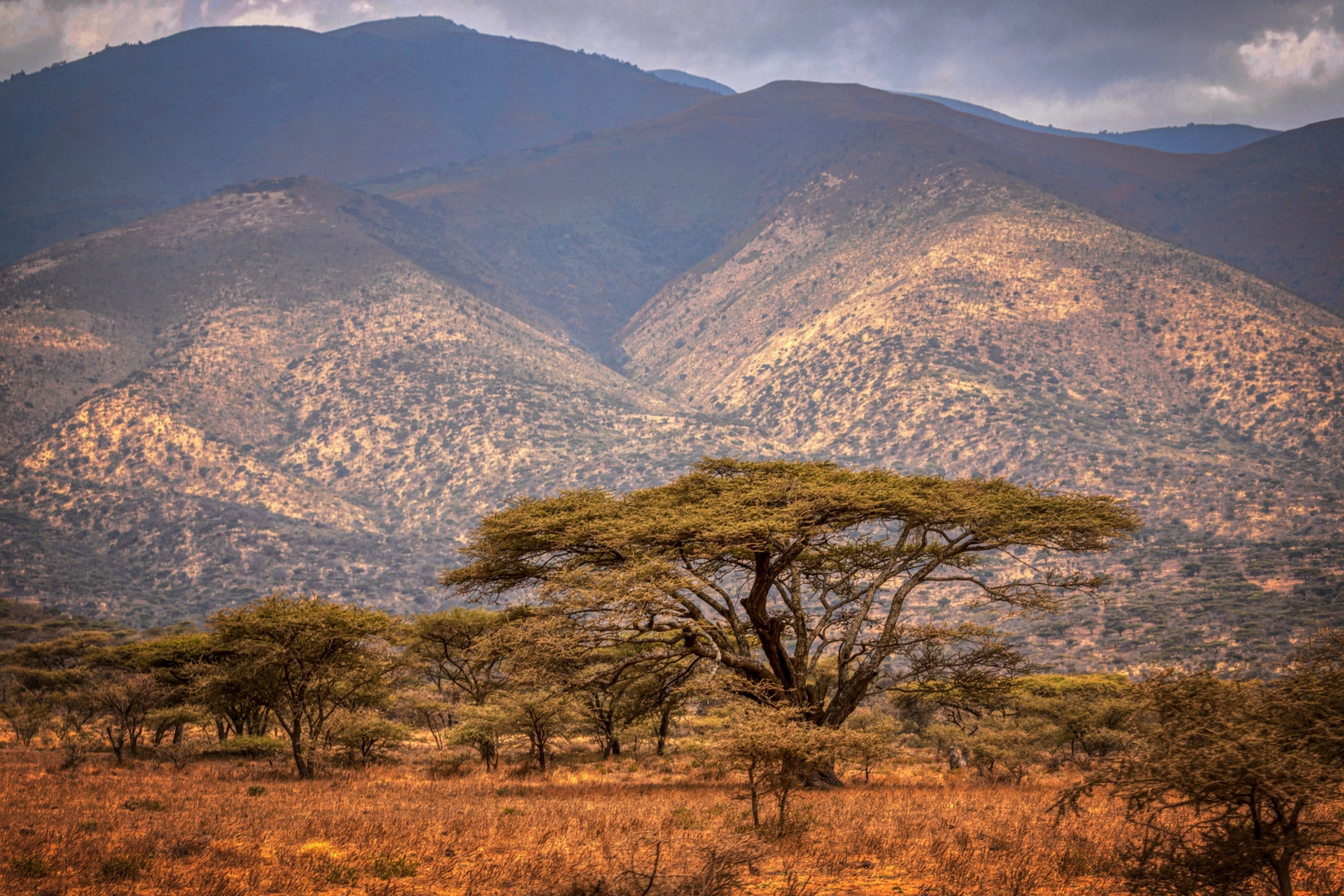
Don’t whiz out of Moshi for the trailheads too quickly. Take some time to delve into the frenetic Chagga Street bazaar or navigate the stalls of the Mbuyuni market down Double Road, taking in all that Tanzania has to offer. They are working trading places where you can buy everything from used hiking gear to unusual healing roots from Maasai medicine men (not recommended!).
Moshi also has a fine gastronomic offering to help you fuel up before the Kilimanjaro hike or rejuvenate after returning from the summit. That comes in the form of Indian cookhouses selling spicy curries from across the Arabian Sea, a few Italian kitchens, and plenty of coffee stops – you’re in one of Tanzania’s top bean-growing regions, remember?
If you’re doing an organized tour and you haven’t already joined your trekking group at the airport, then you’re likely to do it in Moshi. It’s where you’ll leave from on the first day, usually to the starting point of the Machame Route, which is roughly a 30- to 40-minute drive to the northwest of town.
6. When is the best time to climb Mount Kilimanjaro?
So you want to climb Mount Kilimanjaro when the time is best. The general rule for climbing Mount Kilimanjaro is to dodge the wet seasons. Tanzania has two of those: the short monsoon season and the long monsoon season. The first – just as the name implies – is over pretty quick. It lasts from the start of November to the first or second week of December. The second spans about three months, from March until May. That really leaves two windows of opportunity for trekkers who want what I’d consider to be peak conditions for their Mount Kilimanjaro hike:
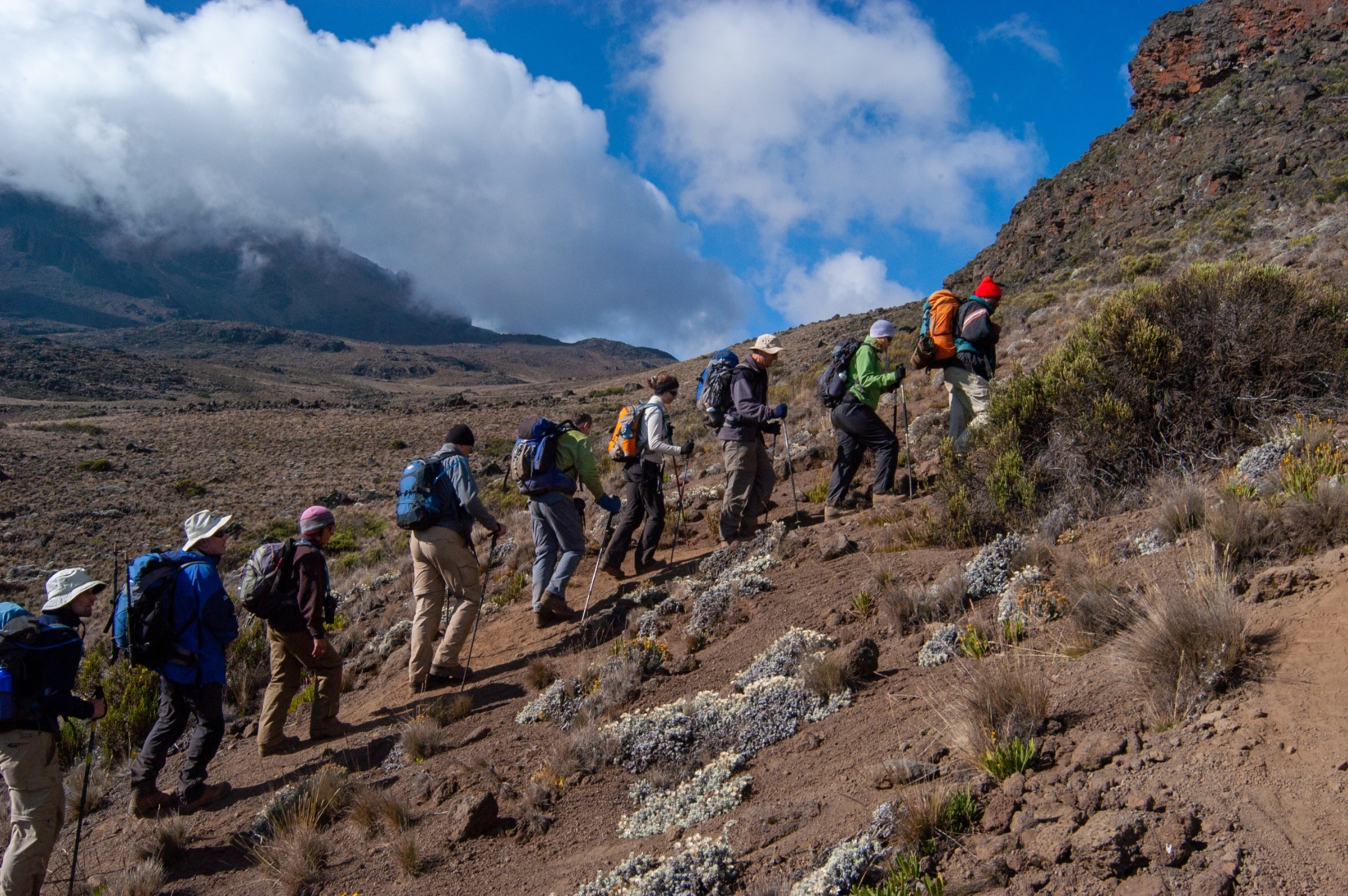
- July-October – This is the busiest time to hike Kilimanjaro but also strikes the best balance when it comes to trekking weather. Rainfall dips to a quarter of what it was only three months before (0.8 inches (20 millimeters) over 30 days on average) and that means clearer skies for better views of the Tanzania landscape as you climb Kilimanjaro. The main downside is the uptick in traffic on the Kilimanjaro routes. Popular trails to the summit, the Machame Route included, see their highest numbers of climbers between July and August. That’s largely because this is during the European holiday, so things should start to temper a little towards October with less people attempting to climb Kilimanjaro. Expect some sub-zero nights as this is the cooler time of the year in Tanzania.
- January-February – The hiatus between the short and long rainy seasons is also one of the best times to climb Kilimanjaro. It’s a lot warmer than the window from July to October and generally stays dry, allowing for more comfort on your Kilimanjaro hike. What’s more, it doesn’t coincide with any major vacations in Europe or the US, which keeps crowds throttled a touch. The only thing to note is that you do risk losing the views come the afternoon. Mornings are typically clear, but heat hazes and clouds can gather by 1 o’clock in the early afternoon, disrupting the gorgeous views as you climb Kilimanjaro.
You don’t necessarily have to stick to the above seasons to make climbing Kilimanjaro a success. It’s actually possible to climb Mount Kilimanjaro at any time in the year. It’s just that the monsoons bring unpredictability into the mix and that means there’s less of a chance that your Kilimanjaro hike will be a success. More practically, traveling during the rainy season means contending with heavy downpours and muddy trails, so you’ll need to pack accordingly.
7. Mount Kilimanjaro climbing routes
How long does it take to climb Mount Kilimanjaro? Depending on your choice of climbing route, the trek takes between five to seven nights from base to summit. Choosing the right climbing route is arguably the single most important part of planning to climb Mount Kilimanjaro. There are seven routes up Kilimanjaro and each promises a unique experience of the mountain and varying cost to climb. These include the Machame, Marangu, Shira, Lemosho, Umbwe, Rongai, and the Northern Circuit routes.
One might be a slow slog to the summit over seven nights. Another could be a quick five-day romp from base to summit that requires pre-acclimatization and plenty of training to climb Kili on this route. Each trek crosses a different part of the peak on the way to the summit, so you’ll see different things as you climb Kili – cloud forest, montane jungle, scree – depending on which you choose. However, most converge on the upper Saddle Plateau where you prep for the final push to Uhuru Peak.

Here’s a closer look at each of the seven routes up Kilimanjaro:
- Machame – Now the most popular route of all for climbers on Kilimanjaro, Machame involves three days of trekking high and then sleeping at camps that are lower down on the way to the summit. That’s proven to help with acclimatization, which gives the Machame path an overall success rate of 85% on the seven-day version of the Kilimanjaro hike. See why Machame is popular? It’s harder than Marangu, though. In fact, the Machame Route is dubbed the ‘Whiskey Route’ precisely for that reason. Expect steep climbs after leaving the rainforests on the south slopes and camping the whole way along.
- Marangu – They call Marangu the ‘Coca-Cola Route’ because it’s one of the most popular routes and is the most well-established. It’s also rated the easiest way to hike Kilimanjaro. There’s now hut accommodations the whole way along the Marangu route, so you don’t need to pitch tents and carry loads of gear while you climb Kilimanjaro. Marangu can be completed in five days, though that speed usually requires pre-acclimatization on Mount Meru or elsewhere. It’s a steady up and back on the same path on the southeastern edge of Kilimanjaro, making Marangu a great choice for less experienced climbers.
- Shira – The Shira Route for climbing Kilimanjaro begins at the Shira Gate before skirting along the Saddle to join up with the Machame Route before the push to the summit. This route to climb Kilimanjaro is usually reserved for more experienced climbers and certainly not for those on their first long-distance trek, mainly because it begins at an already-challenging altitude of around 11,480 feet (3,500 meters).
- Lemosho – Widely considered to be the most beautiful of all the ways to hike Kilimanjaro to the summit, Lemosho starts on the western side of the park, close to the gate for the Shira Route. But it takes a different path of climbing Kilimanjaro through the lower forests and offers better acclimatization from the get-go (you begin at 7,500 feet (2,286 meters) above sea level – not 11,000!). Sightings of elephant herds and strange fauna are more common along this path to climb Mount Kilimanjaro, and you should find that the path is nowhere near as busy as the high-trafficked Machame.
- Umbwe – The Jimmy Chins out there might want to consider picking the Umbwe Route. The Umbwe route is the hardest of all the ways to climb Mount Kilimanjaro. Umbwe starts with two days of very steep walking directly through the rainforests and then the exposed alpine zones of the south slope. Later, Umbwe either connects with the Machame Route to reach the top or takes the cutback path to the Western Breach, one of the few true technical sections on the Kilimanjaro climb that’s open to experienced mountaineers only. Either way, Umbwe is sure to be a challenging, yet rewarding, route for any trekker.
- Rongai – The sole way to climb Kilimanjaro to the summit via the northern side of the mountain, the Rongai Route basically begins right on the Tanzania-Kenya border. It’s a five- to seven-day trek that makes use of the relatively gentle slopes on this half of the peak, although that can make proper acclimatization a little difficult while climbing Kilimanjaro. Descents are usually done on the south side of the mountain.
- Northern Circuit – One of the newer additions to the lineup of Kilimanjaro routes, the Northern Circuit fuses the best of the Shira and the Rongai paths into one nine-day romp. The real pull is that you’ll get to see parts of the volcanic Saddle that other trails go nowhere near, allowing for a more unique way to climb Kilimanjaro.
You should also be aware of the Mweka Route of climbing Kilimanjaro. It’s reserved for descents of the mountain on the south side and has a single camp pitstop on the way. It finishes at the Mweka Gate, which is only a 35-minute transfer back to Moshi. Can’t decide which route is best for you? Contact my team at The Explorer’s Passage, the premier adventure tour company on the planet, for a free travel consultation to help you find the best fit for your Kilimanjaro hike!
8. Sample daily itinerary of the popular Machame Route
As we’ve already mentioned, the Machame Route is now by far the most popular way to scale Kilimanjaro and it’s easy to see why.
First off, it offers what we think is the most diverse array of scenery of any trekking path here, first in the lush jungles on the southwestern side of the peak and then along the lunar-like Shira Plateau.
Secondly, it’s been designed to fit with best practices in acclimatization, allowing trekkers to climb high and sleep low. It’s not for nothing that it has an 85% success rate – the best of all the paths on the mountain.
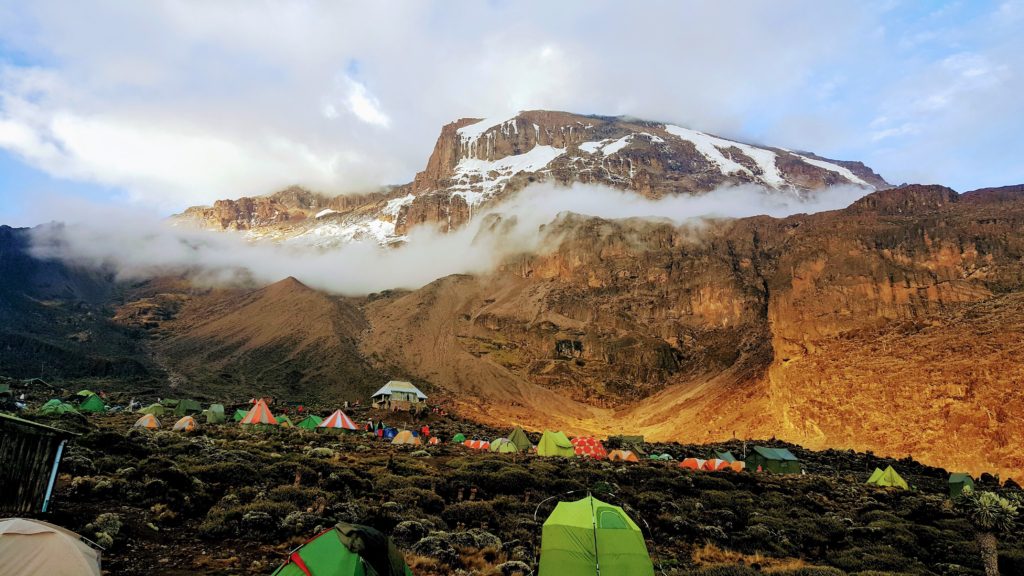
The Machame Route is one of the routes we offer on our very own Kilimanjaro expeditions . So, here’s a closer look at what to expect each day, from the moment you arrive in Moshi to the last descent through the Mweka Gate and your departure from Tanzania:
- Day 1: Arrival in Moshi – You’ll be greeted at Kilimanjaro International Airport and be taken to your hotel in Moshi. There, you’ll meet your guides and fellow trekkers. Expect everyone to be buzzing with excitement!
- Day 2: Cultural orientation to the Kilimanjaro region – Before starting the trek up the great peak, you’ll first get immersed in some cultural explorations. You’ll meet the local Chagga tribe, visit their farms, and see one of the oldest churches in Tanzania.
- Day 3: Begin the climb – It’s time to start your climb on the Machame Route. The trailhead is about an hour from Moshi itself. There, you’ll join a path that weaves through the native rainforest to reach the Machame Camp at 9,875 feet (3,000 meters) above sea level.
- Day 4: Up to Shira Camp – There’s a hefty altitude gain on the fourth day that sees you lift over 2,600 feet (790 meters) to the edge of the main plateau. There are big rewards for your effort during this session – clear days will reveal visions of Mount Meru far on the horizon, along with the outline of Kilimanjaro’s summit looming overhead.
- Day 5: Skirt the mountain edge – Your trek continues on as you push up to 15,000 feet (4,600 meters) and skirt the edge of the Shira Plateau past lava stacks. The main challenge will be completing the technically demanding Western Breach portion of the trail. However, you’ll be rewarded with scenic views. After that, you drop to lower altitudes to rest for the next day.
- Day 6: Karanga Camp – The sixth day of our itinerary is the fourth on the mountain. It’s also one of the most amazing, as you traverse deep canyons and gorges carved into the higher reaches of the plateau. On a clear day, this is where you’ll see the great ice walls of the Kersten Glacier.
- Day 7: Nearing the summit – Day seven crosses a final dash of exposed scree slopes to get you to the last camp beneath the main summit. It’s only three hours’ trekking but can be very tiring on account of the altitude. The remainder of the afternoon is spent resting in preparation for the big push to the peak that begins around midnight.
- Day 8: Summit day – The day begins in the darkness and on extremely steep slopes that lead the way to Kilimanjaro’s legendary Crater Rim. Sunrise usually hits as you push above 19,000 feet (5,790 meters). It’s truly an unforgettable moment, as you watch the light illuminate the African plains and the surrounding lava fields. Later on, you’ll conquer Kilimanjaro by hitting Uhuru Peak.
- Day 9: The descent – You will have dropped back to 12,440 feet (3,790 meters) above sea level straight after hitting the summit. That leaves the last day on the mountain for the descent to Mweka Gate, where you’ll be met by our team and returned to the comfort of your hotel in Moshi for a hard-earned shower and meal!
- Day 10: Lively breakfast and farewells – Breakfast on the final day of your trip will be a very contemplative and jovial affair. All trekkers buzz with the endorphins that come with hitting the highest point in Africa. From here, you can keep exploring the local safari parks or choose to depart Tanzania anyway you like.
9. Key sites while climbing Kilimanjaro
Climbing Mount Kilimanjaro isn’t about checking off the sights like you do on a city break. It’s about moving through primeval cloud forests and jungles to scree ridges carved and blasted by ancient volcanic eruptions. It’s about scaling ridges above the clouds to survey plains dotted with elephants that look no bigger than ants below. To put it another way: Climbing Mount Kilimanjaro is about the journey.
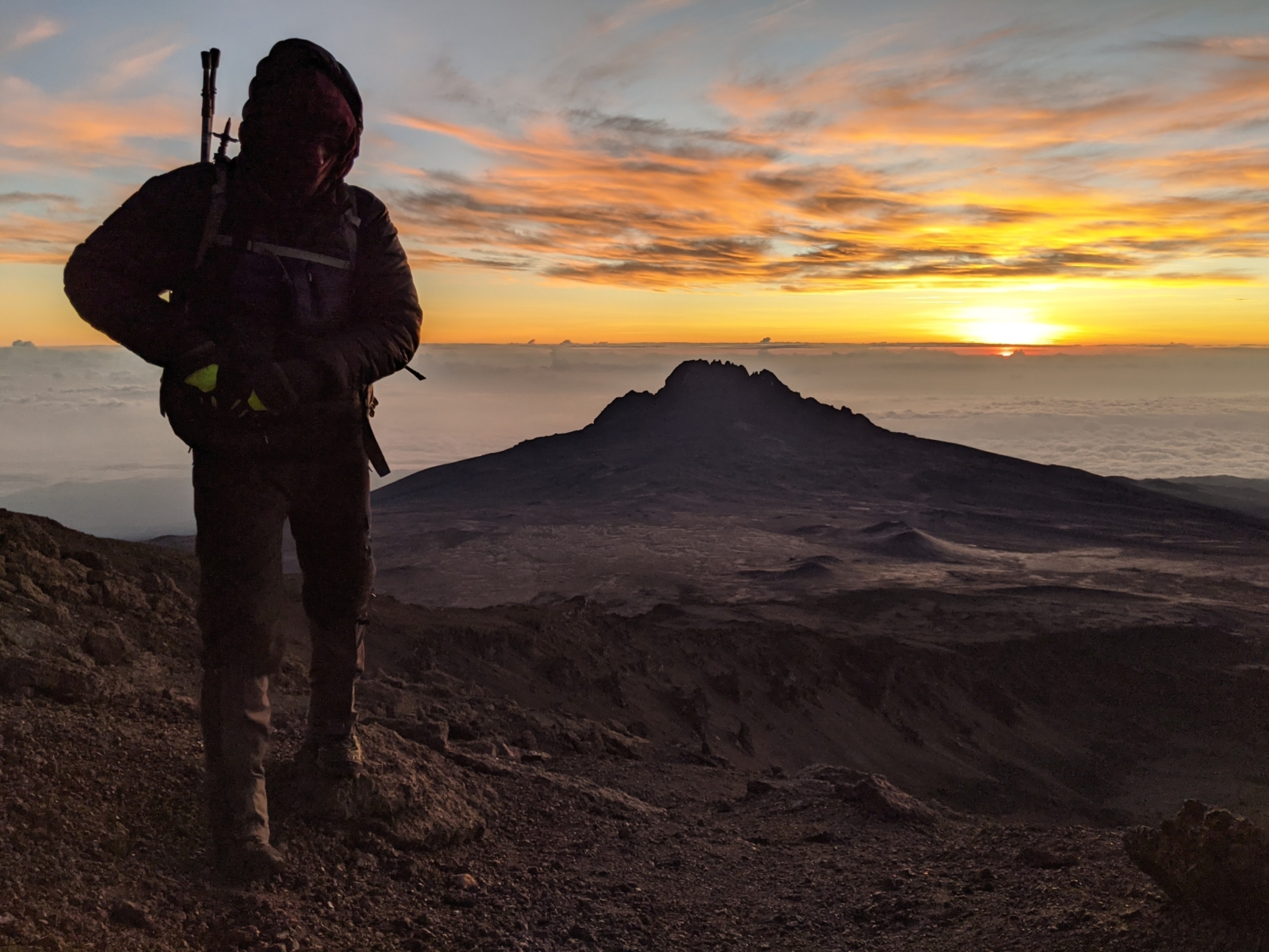
That said, there are a few points of interest on the Kilimanjaro hike that you should know about before setting off. They’re the key markers, the camps, the landmarks, and the geological features that you’ll meet along the way as you climb Mount Kilimanjaro:
- The Saddle – The vast plateau that joins Shira cone to Mawenzi cone, crossing the whole top of the mountain. This lunar-like area is where you’ll spend the middle sections of most treks to climb Mount Kilimanjaro.
- Barranco Wall – A famous scrambling section on four of the main routes to climb Kili, including the Shira Route, Lemosho route, Umbwe Route, and the popular Machame Route, the Barranco Wall is an 850-foot (259-meter) rock face that climbers need to traverse to make it to the upper portions of the mountain. It’s not technical but can take two hours to complete.
- Uhuru Peak – Standing at 19,340 feet (5,895 meters) above sea level, Uhuru Peak is the highest point on Mount Kilimanjaro and offers mesmerizing views of Tanzania.
- Furtwangler Glacier – Just one part of the ever-diminishing ice cap that crowns Kilimanjaro, this one’s worth knowing because you’ll likely pass its hulking, 20-foot (six-meter) snow walls on the final push to Uhuru Peak. This glacier can be seen on either the Lemosho or Machame routes.
- Lava Tower – A bluff of basalt and frozen lava that rises above a campsite along a short detour off the Machame and Lenosho Routes.
- Mawenzi Peak – The name for the second-highest summit on Kilimanjaro, Mawenzi is the easternmost cone of the mountain and can be seen on the Marangu or Rongai routes. It’s open to climbers but is a much more dangerous prospect than climbing Kilimanjaro. The first ascent here wasn’t until 1913 and it requires expert knowledge of pitching and rope climbing to reach the summit.
- Mweka Camp – Mweka Camp sits along Mweka Route, the main path down the mountain after hitting the summit. It’s here that you’ll get that dopamine rush and gaze back at the sleeping giant you’ve just conquered. Campfire parties and good vibes are the name of the game as you reminisce on your Kilimanjaro hike!
10. Preparation and training
Training for climbing Kilimanjaro is no easy task. The best prep for hiking Kilimanjaro is hiking itself. If you haven’t already, get walking. Try to clock up sessions of four to six hours on comparably rough highland trails close to where you live. Better yet, do that wearing the very same boots you’re taking to Africa (see below) and carrying a full day pack on your back.
On top of that, road running, trail running, and weight training can all work wonders for training to climb Kili. Climbing Kilimanjaro demands a decent level of all-round fitness. That’s why it’s a good idea to take a holistic approach while training to climb Mt. Kilimanjaro and up your trekking game across the board – in cardio, strength, and stamina.
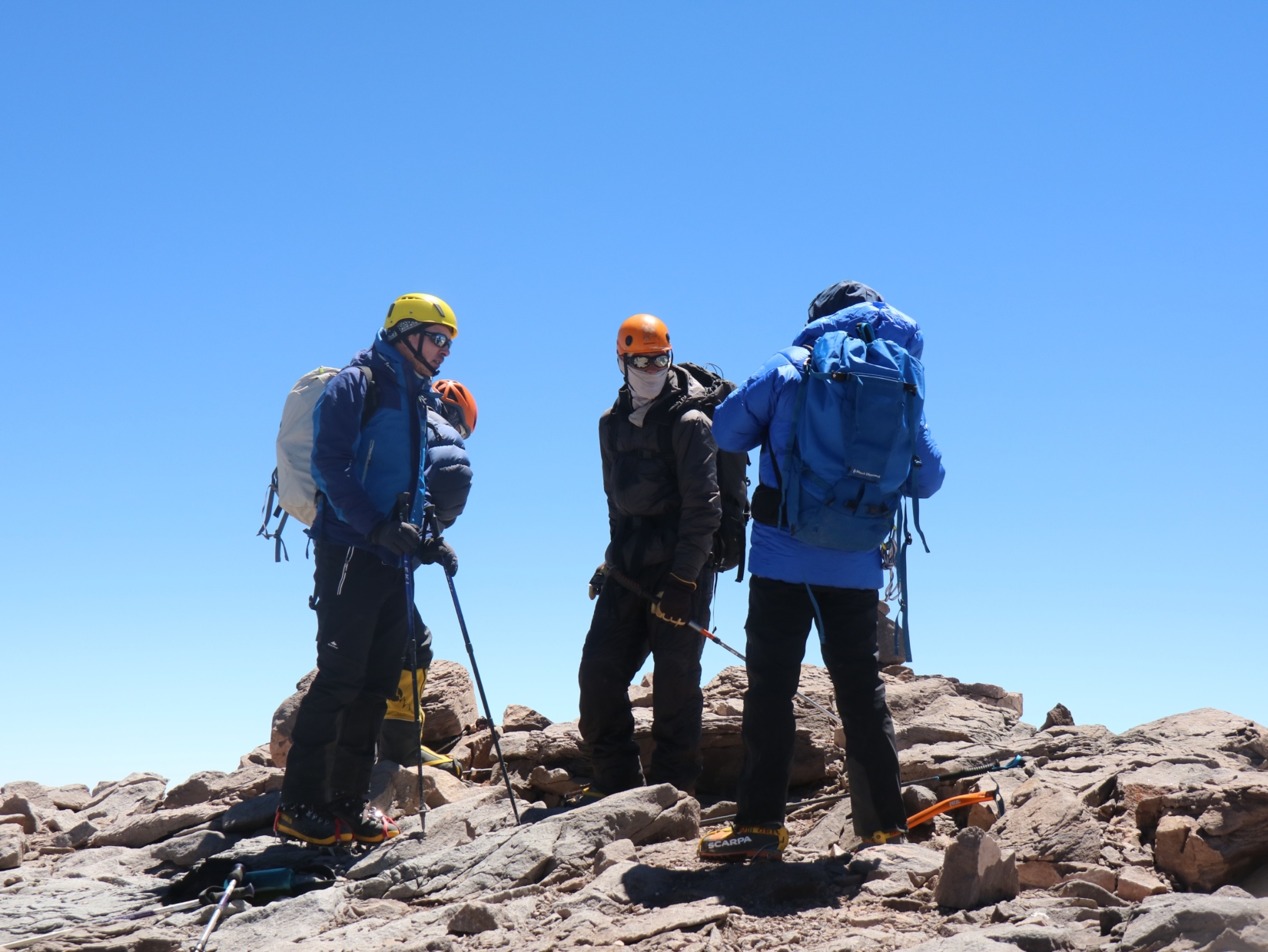
What gear do I need to climb Mount Kilimanjaro?
There’s two pieces of good news when it comes to packing to climb Mount Kilimanjaro. One: This isn’t a technical climb, so you don’t need any fangled harnesses or fancy carabiners. Two: The bulk of your pack and gear – including all your food, your sleeping setup, and cooking utensils – will be transported by your team (hence why it’s not unusual to have three porters to every one trekker!).
Your responsibility will be to prepare and pack for long-distance trekking while climbing Kilimanjaro that can last upwards of seven days and involve very unpredictable weather conditions. The best time to climb Kilimanjaro is July to October when the weather is milder, however, Kilimanjaro can summon all four seasons in just as many hours. Snowstorms, torrential rains, sub-zero temperatures, soaring tropical humidity – you can have the lot in a single trekking session. That means layers are key and waterproofs are necessary as you climb Kilimanjaro.
Always pack thermals. If you don’t use them in the heat of the Tanzania day, then you almost certainly will at night when the mercury can plummet below nothing without warning. This is another reason why early fall is the best time to climb Kilimanjaro when the weather is milder. Strong hiking sunscreen is a must as you climb Kili in the open sun. Oh, and be sure to pick a pair of boots that you know are comfy. New boots that aren’t worn in already aren’t a great idea because there’s no way to swap them out once you’re up on the saddle!
Altitude considerations for climbing Kilimanjaro
There are many things to consider when hiking at high altitudes . The altitude adjustment as you climb Mount Kilimanjaro is surely the number-one enemy of climbers looking to hike Kili. But, as one of the great Seven Summits, no one said it would be easy, right? Thing is, Kilimanjaro has an added twist: It’s prominence. Whereas you can start the push for Everest at a basecamp more than 16,400 feet (5,000 meters) up, the Machame Gate is a mere 5,900 feet (1,800 meters) above sea level.
That has ramifications as you climb Mount Kilimanjaro. First, it means you have further to climb on this trek than you would between basecamp and summit on even the highest peak on the planet – it’s 11,433 feet (3,485 meters) from Everest Base Camp to Everest’s top but over 13,400 feet (4,084 meters) from the Machame trailhead to Uhuru Peak on Kilimanjaro!
Second, and most importantly, it means that you don’t have the pre-trekking to help you acclimatize. Here, you’re instantly dropped onto a path from relatively low altitudes and quickly gain as you climb Kilimanjaro.
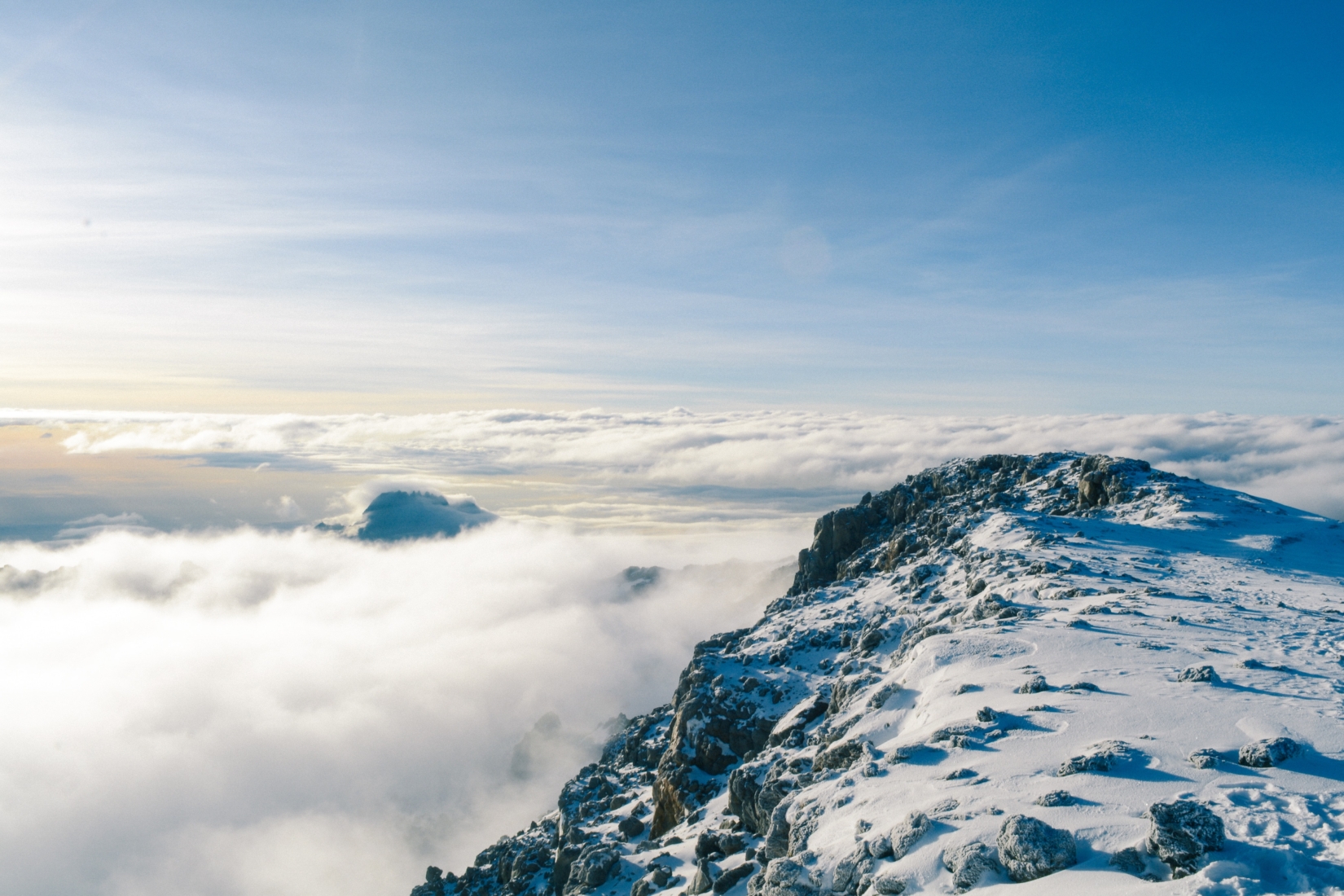
Anyone who knows anything about Acute Mountain Sickness (AMS) will tell you that it’s not good. Not good at all. However, there are ways to deal with it as you climb Kilimanjaro. In fact, one of the reasons that the Machame Route is now so popular is because it works in two or three nights of sleeping low and trekking high, which is perfect for acclimatizing before the summit push. The result? An overall higher success rate and happier trekkers to boot.
You can also work in treks before you hike Kilimanjaro proper. Mount Meru is a smaller option that’s close by and doable in three or four days and a great way to prepare to climb Mount Kilimanjaro. Climbing Kilimanjaro is no easy task, and you are sure to learn a thing or two along the way .
It’s important to be aware that you’ll be trekking for extended periods above altitudes that are considered safe for humans as you climb Kilimanjaro. Estimations are that around 70% of climbers hiking Kilimanjaro suffer at least some symptoms of AMS. They could be anything from light fatigue to severe headaches and vomiting. Always communicate any level of symptoms to your guides and be ready to descend to lower altitudes if things get too bad as you climb Mount Kilimanjaro. Safety is our number one priority, so make sure you’re aware of the many important reasons to turn back during an adventure .
Mount Kilimanjaro permits
It’s been almost 30 years since the Tanzanian government imposed the requirement that all trekkers who wish to climb Kilimanjaro engage a licensed guide. There’s no going at this one alone, folks. You have to get help from a qualified company that specializes in trekking in the region, though those are certainly not all created equal, but that’s another story.
In addition, everyone entering the Kilimanjaro National Park is liable to pay certain fees. These actually make up a hefty chunk of the cost of most trekking packages, sometimes accounting for as much as 70% of the total cost to climb Kilimanjaro. They include a conservation fee of around $70 per day, a camping levy of $50 per trekker, per night, and $2 per porter and guide, per day. As you can imagine that all adds up over a seven-day expedition to climb Kilimanjaro– you’re looking at around $955 in fees for the normal Machame Route. Thankfully, these are usually included in quoted costs to climb Kilimanjaro as part of your travel package and are paid by the tour organizer beforehand.
All prices are in US Dollars.
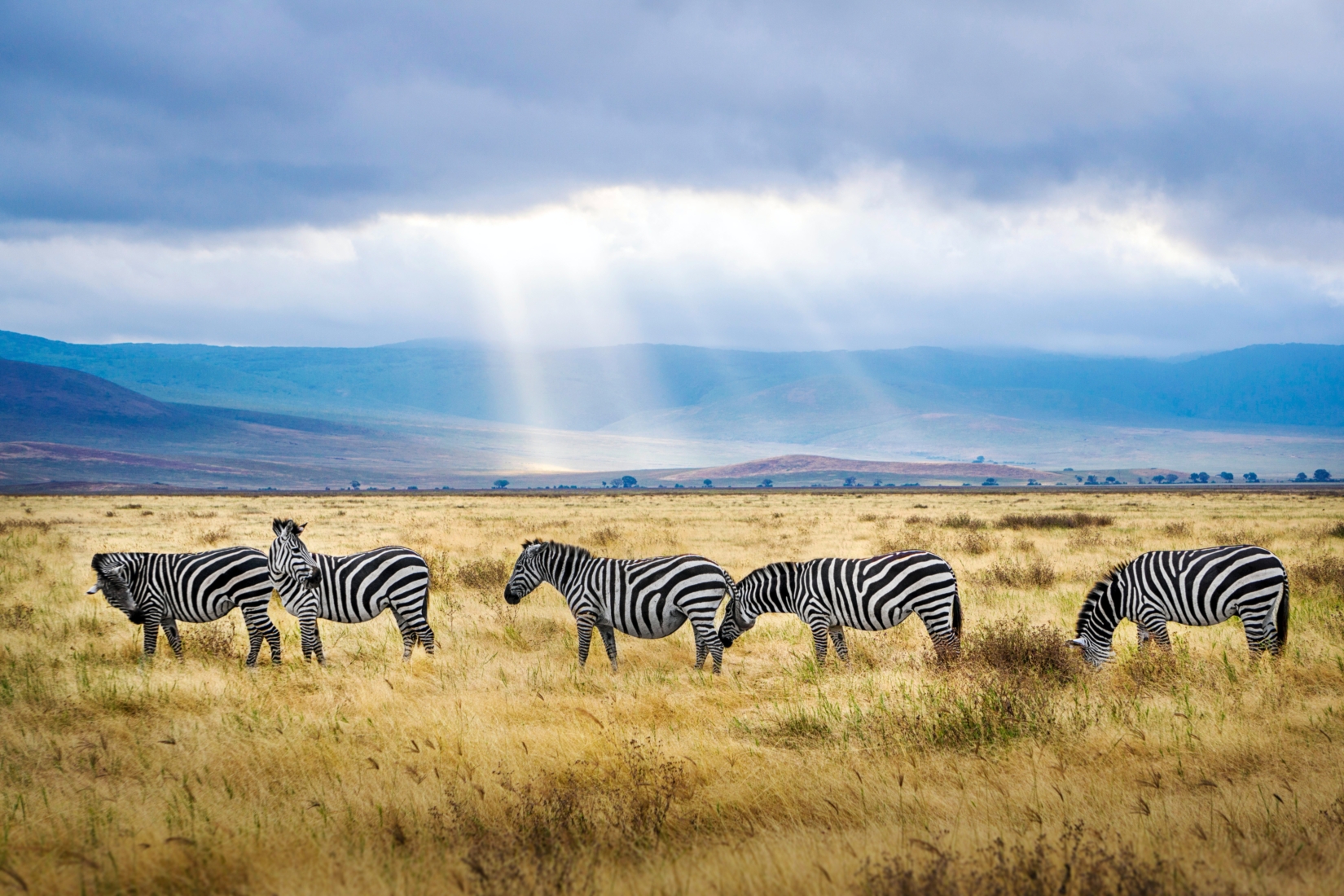
Passports and visas to visit Tanzania
There’s a little visa admin to go through either before you touch down in Kilimanjaro or as you pass through the airport on the way to Moshi, Tanzania. That is, unless you’re from one of the 70 or so countries that get visa-free access to Tanzania. Sadly, the USA and the UK aren’t included in said list, though it is possible to get a 90-day visa on arrival. It costs $50 for non-US citizens and $100 for US citizens and must be purchased in dollars.
You can now also pre-authorize your visa to reduce waits at the airport (and there can be waits!) by applying for an eVisa on the official Tanzania immigration portal online. These expenses are important to factor in when considering the total cost to climb Mount Kilimanjaro. If all this sounds overwhelming, don’t worry! The Explorer’s Passage is always here to work with you and your preferences to craft a trip that fits your needs .
11. Other adventures near Mount Kilimanjaro
The desire to stand at the very top of Africa draws something like 50,000 trekkers to Tanzania to climb Mount Kilimanjaro every year. But that’s actually only a fraction of the total number of people who come to the beautiful country of Tanzania. Yep, the surrounding Kilimanjaro National Park can pull in 5,000 extra day visitors itself, and that’s not even mentioning the safari meccas, lakes, waterfalls, and other natural jewels that abound in the greater region.
Here’s a look at just a few of the most enticing adventures to be had near Mount Kilimanjaro:
- Climb Mount Meru – A little under 43 miles (69 kilometers) to the southwest of Kilimanjaro, Mount Meru is the next great peak that scores the Serengeti. It hits 14,900 feet (4,542 meters) and can be conquered in three or four days. It’s often seen as a fantastic acclimatization hike before climbing Kilimanjaro proper.
- Swim in the Marangu Waterfalls – As the name implies, these gushing waterfalls are close to the Marangu Route that goes to the summit of Kilimanjaro. They can be seen on a day trip from Moshi, too, offering wild swimming amid the vine-strewn tropical jungles under the mighty mountain itself.
- Bathe in the Kikuletwa Springs – What’s a volcano without hot springs? Cue the Kikuletwa Springs, where you can soothe post-hike muscles in lukewarm water beneath drooping palm trees.
- Lake Chala – Cruise down the A23 (a major road) from Moshi to the Tanzania/Kenya border and you’ll find this glimmering crater lake. It’s possible to kayak and swim in Lake Chala, but it is home to Nile crocs, so be wary!
- Lake Jipe – Eight-mile-long (13-kilometer-long) Lake Jipe is a good alternative to Lake Chala. Come here to see traditional fishing techniques in action and spot hippos between the reed-sprouting banks.
Cultural activities in the Mount Kilimanjaro region
The Mount Kilimanjaro region is a unique melting pot of East African peoples and cultures. It’s a land where the Maasai merge with the Chagga folk, where the Pare peoples of the highlands mingle with descendants of Indian émigrés. If that sounds like a great place for cultural excursions, then that’s because it is. Check out:
- The Olpopongi Maasai Cultural Village and Museum – See the traditional Maasai Boma huts made from dung and shop for folk trinkets at this cultural village on the west side of Kilimanjaro.
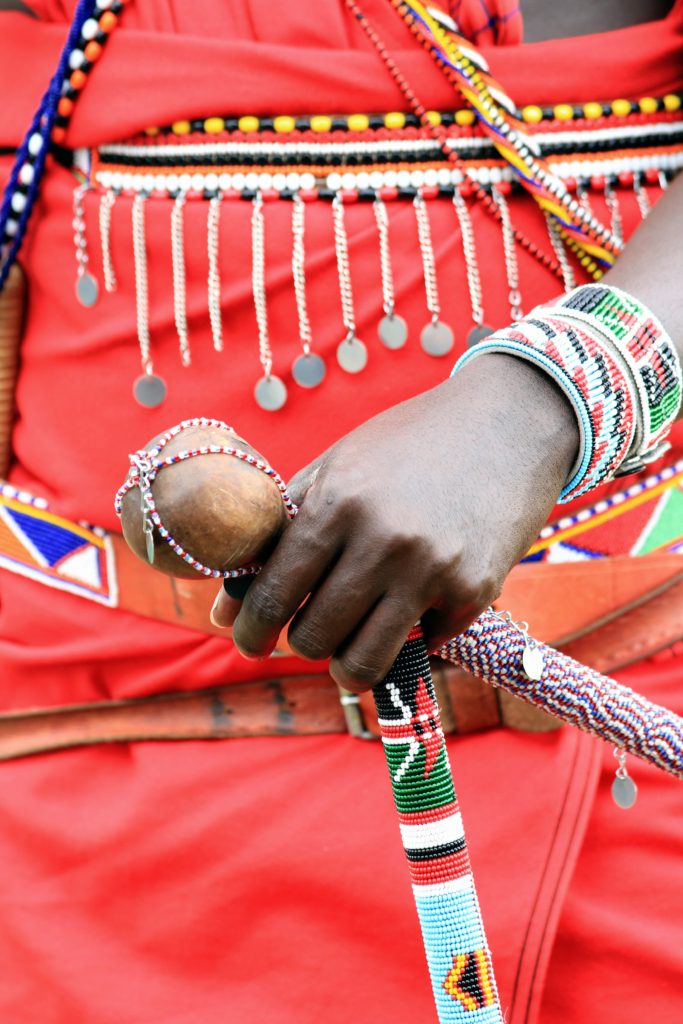
- Chagga Villages – Tour the hamlets north of Kibosho village and Moshi to see how the local Chagga folk cultivate exotic crops in the unique volcanic lowlands around Kilimanjaro.
- Coffee Union Café – No trip to northern Tanzania could be complete without a sampling of the local beans. Do it here, in a café that’s owned and run by the Kilimanjaro Native Cooperative Union, the oldest cooperative in Africa. It’s all roasted right there on site.
Safari options in Tanzania
Got some time left after your seven-day Kilimanjaro climb? There’s no better way to fill it than with a Tanzanian safari. In fact, the region around Moshi is considered one of the finest safari destinations on the planet. It’s got a string of five reserves (the Mount Kilimanjaro National Park among them) that are together referred to as the Northern Circuit, offering glimpses of diverse habitats and the fabled Big Five game .

- Ngorongoro Conservation Area – The Ngorongoro Conservation Area is one of Africa’s most famous safari destinations. On the edge of the Serengeti, it’s hemmed in by the crater rim of an old volcano, making it relatively easy to track lion prides and even more elusive creatures like cheetahs.
- Arusha National Park – Mount Meru crowns this compact park some 40 miles (64 kilometers) west of Moshi. It’s one of the safari jewels of Tanzania, replete with flamingo-filled tarns and gallery woods laden with blue and colobus monkeys. Arusha National Park is not the best for big-game viewing but it’s one of the more accessible and unique safaris in Tanzania.
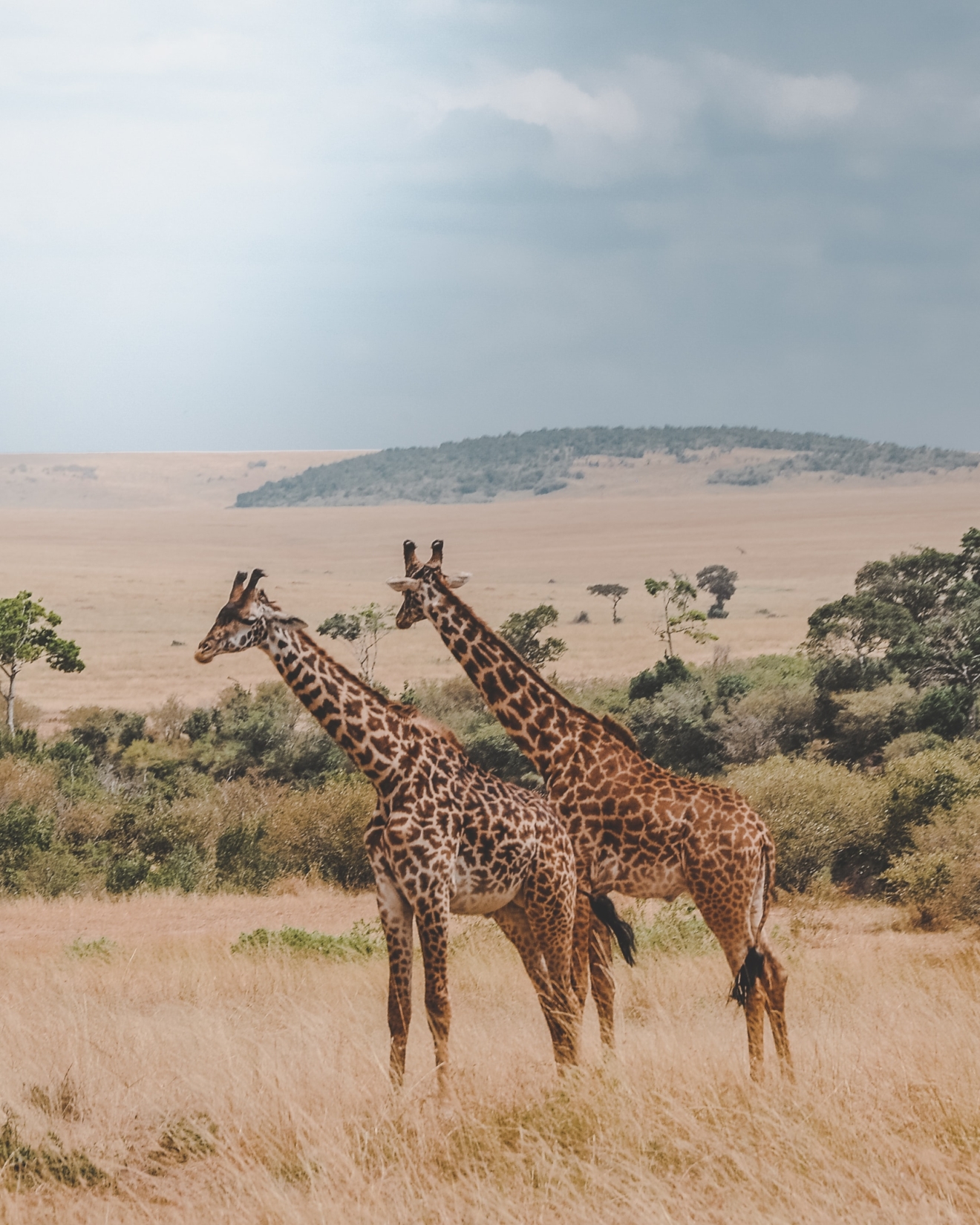
- Serengeti National Park – Covering a whopping 18,641 square miles (48,280 square kilometers) of land at the heart of the Great Rift Valley, the Serengeti has become a byword for safari going the world over. And for good reason. It’s arguably the bucket-list destination, counting all of the Big Five and much more. It’s also the best place to witness the legendary great wildebeest migration across Tanzania.
This trip guide is just a taste of what you’ll experience on a remarkable trek up Mount Kilimanjaro. For more things you should know before climbing Mt. Kilimanjaro , check out the curated list of educational blog posts located on our website.
Better yet, if you have more questions on hiking Kilimanjaro or need help planning your trip to Tanzania, let’s connect! Our knowledgeable Adventure Consultants would love to hear from you so contact us and let us show you what’s possible .
Why travel with The Explorer’s Passage?
We pride ourselves on delivering extraordinary tours based on travelers’ needs and are humbled by our guests’ testimonials . In fact, our dedication has earned us a 5-star rating on Tripadvisor , and awards by Travel+Leisure Magazine and Newsweek. Check us out and discover why so many travelers worldwide choose us . My team and I would love for you to join us on the trek to Mount Kilimanjaro or any of our many other adventure trips !
Cheers, Jeff
Jeff Bonaldi Founder & CEO The Explorer’s Passage
About Jeff Bonaldi
Jeff Bonaldi is the Founder and CEO of The Explorer’s Passage, a premier adventure travel company. His mission is to provide travelers with the opportunity to transform their lives and the planet through the power of adventure.
Learn more about Jeff’s story and his company HERE .
Share This Amazing Location!
Related posts.
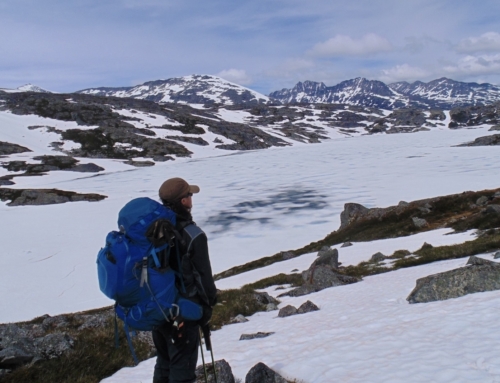
A Traveler’s Must-Read Guide to the Chilkoot Trail Hike
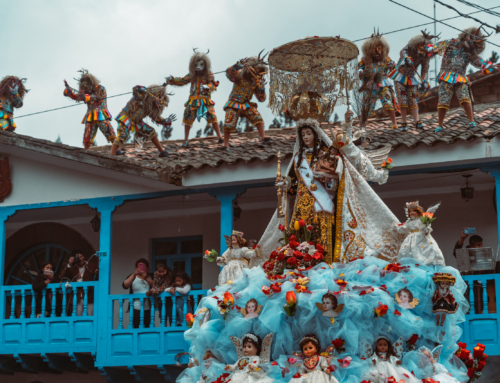
All You Need to Know About the Virgen del Carmen Festival in Peru
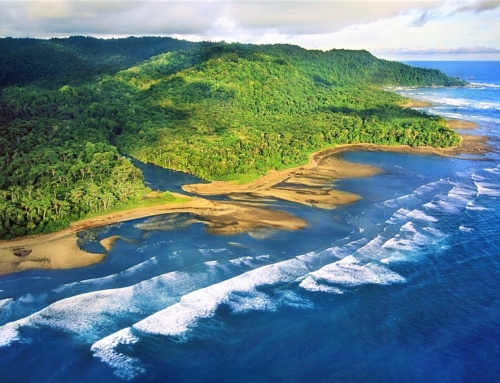
Top Attractions on the Osa Peninsula in Costa Rica

Ultimate Guanacaste Travel Guide – Explore Costa Rica’s Coastal Paradise
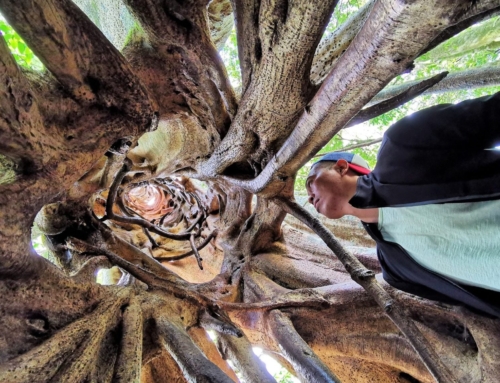
Top Things to Know Before Visiting Monteverde, Costa Rica

A Traveler’s Handbook to Manuel Antonio in Costa Rica – Everything to Know for Your Trip
What I wish I knew before climbing Kilimanjaro
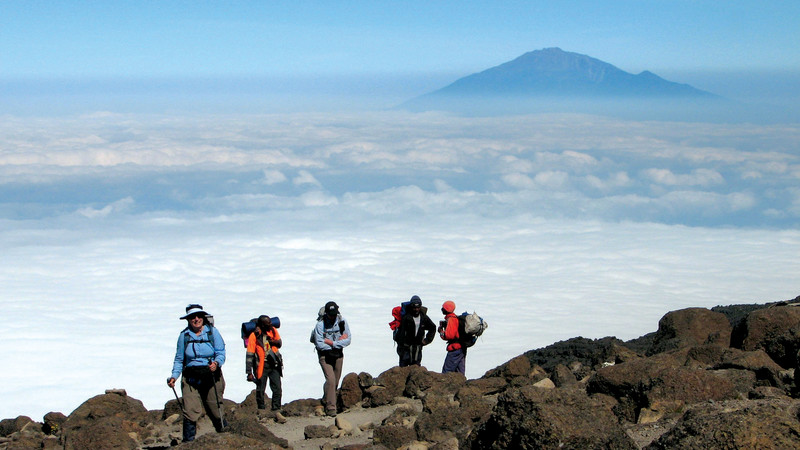
My hike to Kilimanjaro started a year before I even set foot on Tanzanian soil.
I was on a domestic flight in neighboring Kenya and the pilot announced that if we looked out the window to our right, we could see the summit of Mount Kilimanjaro – the tallest peak in Africa. I decided there and then that I would climb this iconic mountain – and I did.
Kilimanjaro is a popular peak, high on the list of ultimate treks (along with Mt Everest and Machu Picchu in Peru ), taken on by many who covet the title of climbing the tallest mountain in Africa. We humans love superlatives – the biggest, the tallest, the oldest. But do not be fooled into thinking that just because many have gone before you, it will be a walk in the park. Oh no – this is the most challenging thing I have ever done. But I couldn’t recommend it more.
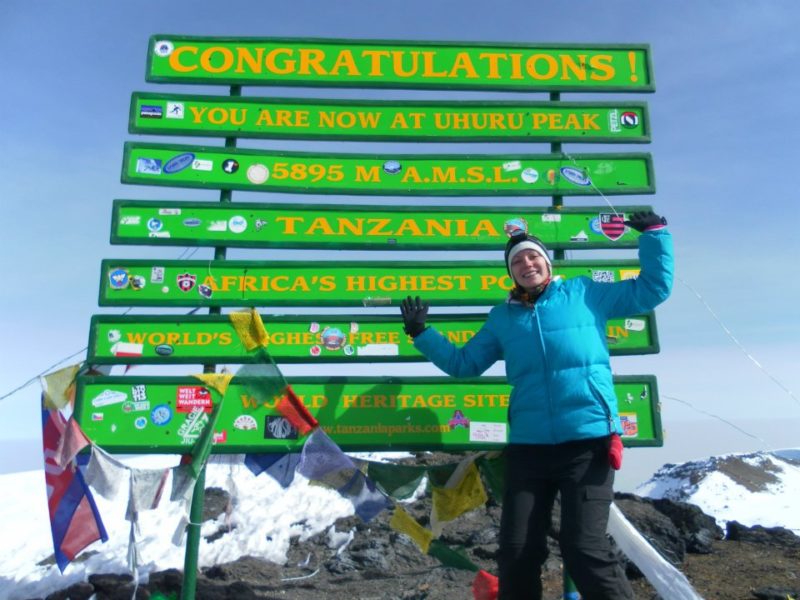
The best feeling
I am a firm believer that anyone can accomplish this truly life-changing feat – I am still nudging my mum to get up there.
Here are my top tips to help you get up there too.
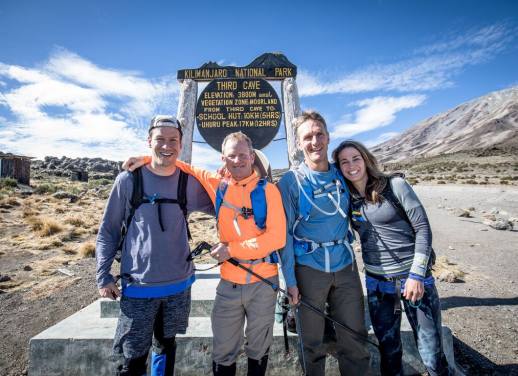
Before I went on this trip, I read every blog going on altitude sickness – what were the symptoms, what could I do to prevent it – so to save you from all that reading, here ya go: top tip – go slow. I would wait until everyone had gone on ahead and join the line right at the back, so I knew that I couldn’t go any slower.
The reason to go slow is that your body is working harder at altitude. The air is thinner and there is less oxygen to breathe. The porters will tell you “pole, pole” which means “slowly, slowly”. Think of The Hare and the Tortoise. Be the tortoise. Walk slower than you normally would, and your body will thank you.
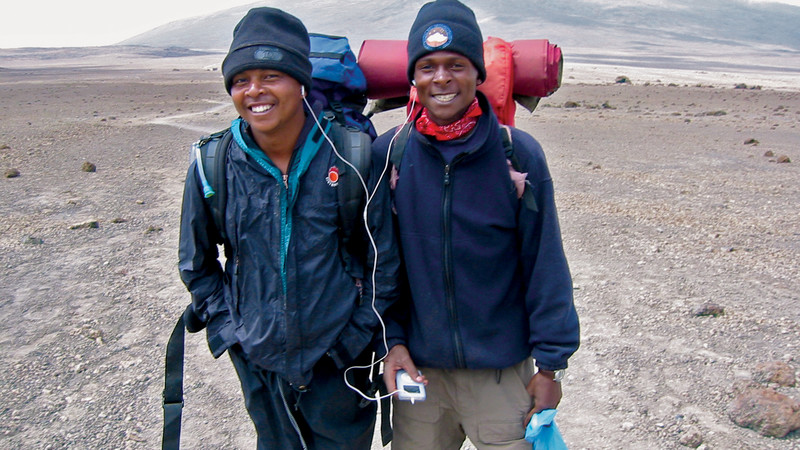
Porters on the Kilimanjaro trek
Hikes like these are not a race. This is actually one of my favorite things about hiking – it’s not a competitive sport. It’s the opposite in fact, everyone wants everyone to succeed. So don’t be ashamed to be at the back like I was. I didn’t get altitude sickness, and I also made good friends with the porter whose job it was to bring up the rear. His grandfather was one of the first porters to work on the mountain. I wouldn’t know that if I was pacing at the front.
WANT MORE TIPS? TREK KILIMANJARO WITH INTREPID’S LOCAL EXPERTS
Drink plenty
Hydration will also ward off possible altitude sickness. Ensure you have a CamelPak or Platypus instead of a bottle so that water is constantly accessible as you walk. When your hands are cold you don’t want to be taking off your gloves to unscrew a bottle top. Plus, you should be drinking three liters a day, and it’s a hassle to have to stop to take a bottle out of your bag every time you take a sip.
And more than just water – take hydration salts. I put one sachet straight into my CamelPak every day just to make sure I was uber-hydrated. Diarrhea is common at altitude, and in general if your body is adjusting to being overseas, so salts like Dioralyte are your best friend.
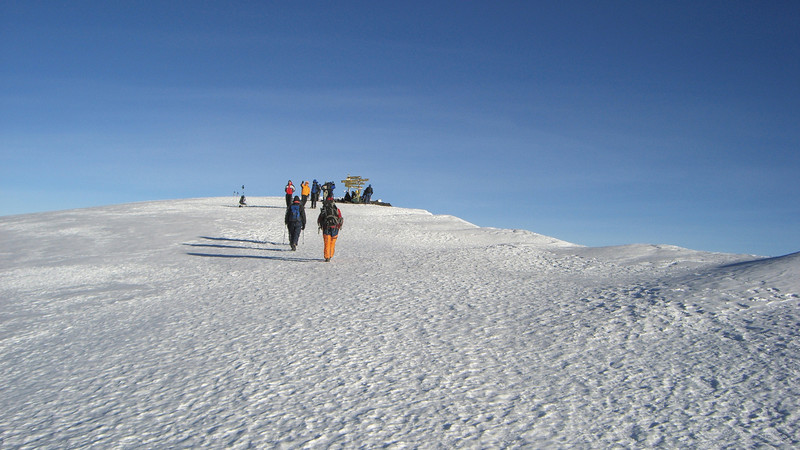
A hike you need to be prepared for
Get the right gear
I met someone recently who climbed Kilimanjaro and hated the experience – I was heartbroken – but not surprised when she explained why. The reason she doesn’t swoon nostalgically over how life-changing and magical summit night was, is because she was completely unprepared. She didn’t have enough or even the right type of clothing for the hike. And to top it off, she accidentally left her walking boots at a petrol station on the way to the starting point, and had to climb in trainers. I can’t imagine how awful it must have been.
Even if you go to the mountain with all the physical training and mental preparation possible, without walking boots or warm clothes, you will hate every second. I wore thermal layers, two pairs of gloves, a hat, scarf, a down jacket and had a heavy-duty sleeping bag, and I still shivered at night.
So get quality thermal gear, enough layers (of appropriate materials like fleece – not cotton which gets heavy with sweat), a down jacket is a must, a four season sleeping bag and hand warmers. Stuff your clothes to the bottom of your sleeping bag each night so they’re warm(ish) in the mornings.
Tough but beautiful hiking conditions
Also remember a sun hat and sun cream. I got sunburnt on day one and trust me, when cold winds blow against burnt skin, it’s not fun. Plus a head torch with enough batteries – for your tent, for toilet trips and for summit night.
MACHAME OR MARANGU? WE ASK AN INTREPID LEADER WHICH KILIMANJARO ROUTE IS BEST
Sing and laugh
These are scientifically proven ways to release endorphins and have a good time, which is so important when you’re doing something this intense.
At the beginning of day four, where some of our group were really suffering from the altitude, morale was low. It was bitterly cold when we woke because we were shaded from the sun. Trips to the toilet were, to put it lightly, brisk. But as we started walking we started singing – it was either Lose Yourself by Eminem, or Hakuna Matata from the Lion King, both appropriate for our situation – and morale soared instantly.
Whenever you have enough lung capacity, sing.
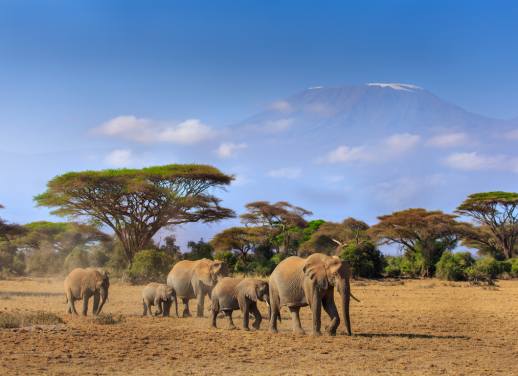
Find allies
One thing is for sure – you cannot climb this mountain alone. If there was ever a time that you will need other people, climbing Kilimanjaro is it. You need them to look out for you. And by look out for you I mean literally keep guard as you pee behind a rock when there are no toilets around (which is anytime you’re not in a camp).
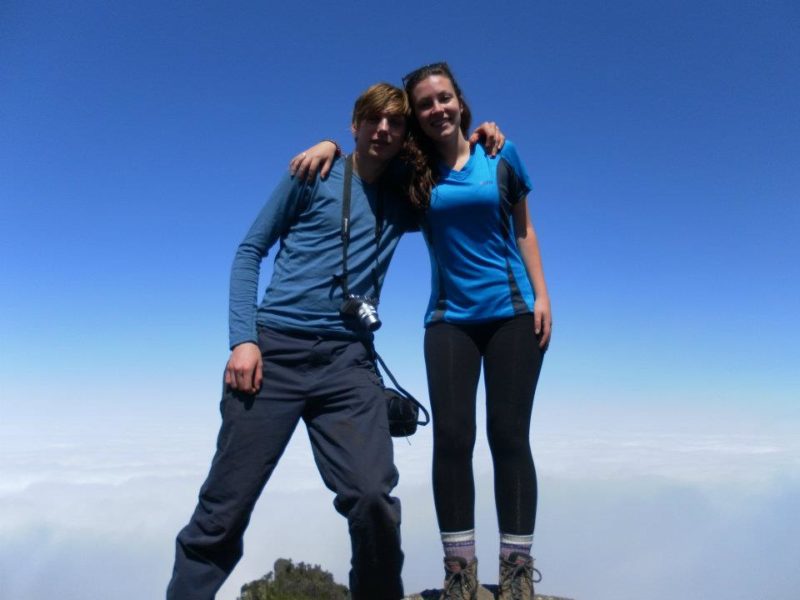
New friends
You also need allies to keep you motivated. At the end of Day 4, the night before the summit, I was at a low point. The Machame Route is popular because the route aids acclimatization by climbing high and sleeping low, giving your body a chance to adapt. So though we’d gained 4000 meters since we left the town of Moshi, which is a mean feat in itself, we’d actually climbed more than that in order to come back down to sleep.
As we sat in the mess tent having dinner, I couldn’t help but cry. I wasn’t sad, I was utterly exhausted. I couldn’t stop the tears from falling. And instead of making it awkward, my fellow climbers just laughed at me and got out their cameras – this is the sort of attitude you need to keep going on the mountain!
LISTEN TO THE SWAHILI SONG THAT WILL GET YOUR TIRED LEGS UP MOUNT KILIMANJARO
Prepare physically
I don’t say this for every hike, but for Kilimanjaro it is necessary.
Altitude sickness strikes indiscriminately – it doesn’t matter whether you’re an Olympian or reigning pie-eating champion, you could get hit. But regardless, being fit for this hike is important. Make sure you do training hikes up hills back home before heading over to Africa.
Prepare mentally
Summit night is the hardest thing you’ll ever do. It’s why it’s also the most amazing thing you’ll ever do. But you have to prepare. It becomes way more about your mindset than your physical strength at that point. I was literally falling asleep as I walked, a porter supporting me in case I fell. Porters will help you as much as they possibly can – and they truly are angels – but at the end of the day it is down to you.
Knowing this, I made myself a summit playlist on my iPod Classic (may she rest in peace) full of motivating tunes. I tucked it beneath about eight layers of clothing to ensure the battery didn’t freeze (a legit concern) and pressed play. Rocketman by Elton John started me off. All good. But when the song ended, it started again. I had left the “repeat” setting turned on and I was going to either listen to Elton on repeat for the nine-hour ascent, or listen to nothing. So I pulled out the earphones and instead listened to myself say “step by step, take it step by step”.
It sounds cliché but when you do this ascent, crawling up loose scree in the dead of night, you uncover strength that you didn’t know you had. Just take it step by step.
And make sure you stop to take in that sunrise – it’s phenomenal.
How Long Does it Take to Climb Mount Kilimanjaro?
It takes five to nine days in order to reach the Mount Kilimanjaro Summit and then descend to the finishing point. The more days spent on Mount Kilimanjaro the more likely you will successfully summit, as you will become more acclimatised to the altitude and will be less fatigued.
Tempted to take on the adventure of a lifetime? Trek Kilimanjaro with Intrepid Travel.
Looking for a beach break post Kilimanjaro? Zanzibar is paradise.
Image credits from top to bottom: Ian Jones, Jen Welch, Michelle Tennant, Intrepid Travel, Ian Jones, Jen Welch, Jen Welch
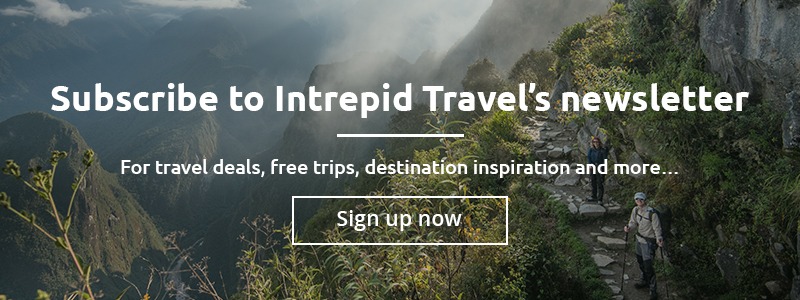
I've dragged my backpack across six continents, but for now it rests in the bottom of my wardrobe in Melbourne. I have a healthy obsession with bookshops, hammocks and coffee, and when not plotting the next adventure, teach English abroad. Don't ever make me choose between mountains and beaches.
You might also like
Intrepid’s new women’s expedition is exploring saudi arabia..., this is what it’s like to explore antarctica’s..., 12 hours in the shoes (or muck boots)..., when your day job is leading expeditions to..., to celebrate turning 50, kerryn took her 50th..., what it’s like to spend a day gorilla..., encounters in the mist: exploring uganda’s gorilla sanctuaries , following in sacred steps on a journey from..., a trip to southern africa helped this plus-size..., pair your pride all over the world with..., globetrotters share what it’s like to spend your....
- BOOK YOUR NEXT TRIP
- 206.378.1927
- GEAR ACCOUNT

Mount Kilimanjaro
(19,340ft/5,895m) tanzania, climb mount kilimanjaro.
Overview | The Mountain | FAQ’s | READING LIST | ENVIRONMENTAL RESPONSIBILITY
Climb Kilimanjaro with Alpine Ascents
“Of all the great guide services on Kilimanjaro, Alpine Ascents might be the best. Its success rate is close to 96%, and though its treks are longer and pricier, they avoid the jam-packed Marangu Route.” – Outside Magazine. Selected once again by Outside Magazine !
Named one of the Top Adventure Tour Outfitters in the World by Travel + Leisure, who highlighted our Kilimanjaro trip. We are proud to be the only climbing company chosen as a 5 star outfitter.
Acclaimed by climbers, industry professionals, and media alike, Alpine Ascents provides a one-of-a-kind experience on Kilimanjaro. We employ a professional mountain guide from our Seattle-based staff on each trip. Your guide is generally one of our full-time Alpine Ascents mountaineering guides and adds an unmatched level of summit success and risk awareness based on their broad range of climbing experience. Our guides are Kilimanjaro climbing experts first and foremost, but have an extensive mountaineering and wilderness medical background.
Our “real ” success rate is over 95% for the last 25 years.
Every one of our Kilimanjaro expeditions is led by an professional mountaineer; a very unique part of our ability to offer the highest quality, safety conscious expeditions.
See guides at: Alpine Ascents mountain guide.
Please note all our Kilimanjaro staff is fully vaccinated.
We Offer Three Routes To Climb Kilimanjaro
Every one of our Kilimanjaro expeditions is led by an Alpine Ascents mountain guide.
The right route for you: why we recommend the 7 Day Machame, 8 Day Lemosho or the 9 Day Lemosho.
Choosing a route is not as complicated as some would have you believe: Alpine Ascents, using a western guide, has an approximately 96% success rate.
Machame 7 Day Route – This has been our bread-and-butter Kilimanjaro climbing route over the last 30 years, traveling through five distinct ecosystems in seven days. This is the classic climb of Kilimanjaro with Alpine Ascents. Most of our offerings are on the Machame and with over a 95% success is an excellent non-technical route for both beginners and those with some prior climbing experience. It should be noted that the “Lemosho” becomes the Machame route on day 3 or 4.
The Lemosho 8 Day Route – Starting on the Western slope of Kilimanjaro and joining the Machame route on day 4. Enjoys an extra day of acclimatization with the additional camp at 13,400 feet. This is an excellent route for those who want an extra day on the mountain compared to the Machame route. Like the Machame we maintain an over 95% success rate on this route.
Lemosho 9 Day Route – Our nine-day Kilimanjaro climbing itinerary is geared toward the very fit trekker/climber with a chance to sleep at the crater floor after summit. This program has an extra camp above 15,000 feet in the middle of the climb to help with acclimatization. The route is similar to the 8 day, adding a night after the summit in the crater floor, giving a half day for climbers to explore the crater, glaciers and the ash pit – simply fantastic! The 9 day also has a later start time on summit day, leaving around 6am by morning light, rather than headlamp.
It was without a doubt the most enjoyable expedition I have been a part of. From the beginning to end, the level of competency, attention to detail, knowledge base, and guideship was top notch. Not only was the western guide a pillar of knowledge, the Tanzanian crew were clearly a cut above the other outfits crews. My partner and I were incredibly satisfied with every aspect of the expedition. From the guide, to the Tanzanian crew, to the accommodations and meals, the entire expedition was incredibly enjoyable and exceeded our expectations. On a scale of 1-10, everything was a 10! I would go anywhere in the world with you.
Most outfitters employ local African staff with relatively limited climbing and medical skills, and many are simply safari or trekking companies, as their name implies. In addition to providing a professional, US-based guide, we offer the utmost in quality of services that include chef-prepared meals, dining tents, and real toilet tents. This creates a unique blend of high-end luxury tour company and professional mountain guiding.
Alpine Ascents’ Success on Kilimanjaro:
We have been guiding Kilimanjaro for over 20 years with over 95% true summit success, touting one of the highest success and safety records in the industry. In recent years we have led over 1,000 people to the summit! (Some outfitters do not count all climbers in their statistics.)
Ascending Kilimanjaro with a mountain climbing organization will greatly improve your chances of success, and we provide one of our Seattle-based guides to lead every scheduled expedition. Every trip is organized with the utmost care and quality: from our lead Western guide, to chef-prepared meals, to dining and toilet tents. We look to take care of all elements with great attention to detail.
Every one of our Kilimanjaro expeditions is led by an Alpine Ascents mountain guide. Along with our lead guide, we employ highly experienced local guides and generally have a 2:1 climber-to-guide ratio. On summit night we typically add other local senior staff, bringing the climber to guide ratio to better than 2:1. Most of these experienced local guides have between 100-500 summits each and have worked with us for many years. Some have been guiding for between 20-35 years on Kilimanjaro. The importance of this level of experience can not be emphasized enough.
Absolutely enjoyed it! Everything — from general coordination and accommodations to small details like the flowers on the table in our dining tent — was amazing. All of the guides were wonderful. I feel I learned a lot from all of the guides – Swahili, backpacking and climbing skills, nutrition/hydration, dealing with altitude, and general information about the mountain, Tanzania, the culture, etc. By the end, the entire crew felt like a big family. Everything was top of the line and I was amazed at the five-course meals we had all day long. AAI does so much so well that it would be difficult to list all of the strengths! Clearly everything is well-organized and executed. Our group was the envy of the mountain! My expectations were not just met, they were exceeded – in fact, they were exceeded time and time again! The level of organization for the entire trip was outstanding, from being met at the airport through the summit and return!
Climb Kilimanjaro Pricing
Machame Route 7 Day Climb + 4 Day Safari: $7,970 / $8,350 ( summer 2025 ) 7 Day Climb Only: $5,420 / $5,700 ( summer 2025 )
Lemosho Route 9 Day Climb + 4 Day Safari: $9,370 / $9,850 ( summer 2025 ) 9 Day Climb Only: $6,820 / $7,200 ( summer 2025 )
8 Day Climb + 4 Day Safari: $8,770 / $9,200 ( summer 2025 ) 8 Day Climb Only: $6,220 / $6,500 ( summer 2025 )
Note: climb only itinerary 3 days shorter for all routes
Climb Kilimanjaro Schedule
Summer 2024 Machame Route unless noted otherwise
June 22 – July 6, 2024 – 1 space remaining Lead Guide: Eric Murphy July 6 – 20, 2024 – 1 space remaining Lead Guide: Eric Murphy July 20 – Aug. 3, 2024 Lead Guide: Eric Murphy Aug. 3 – 17, 2024 Lead Guide: Ben Jones August 14 – 30, 2024 – 9-Day Lemosho Lead Guide: Rachel Molstad Aug. 17 – 31, 2024 Lead Guide: Ben Jones Aug. 31 – Sept. 14, 2024 Lead Guide: Ben Jones Sept. 14 – 28, 2024 Lead Guide: Ben Jones
Winter 2024-25 Machame Route unless noted otherwise
Dec. 6 – 20, 2024 Dec. 19, 2024 – Jan. 2, 2025 Dec. 27, 24 – Jan. 12, 25 – 9 Day Lemosho Jan. 10 – Jan. 24, 2025 Jan. 18 – Feb. 2, 2025 – 8-Day Lemosho Jan. 19 – Feb. 2, 2025 Lead Guide: Ben Jones Jan. 31 – Feb. 14, 2025 Lead Guide: Ben Jones Feb. 9 – 23, 2025 Lead Guide: Ben Jones Feb. 21 – Mar. 7, 2025 Lead Guide: Ben Jones
Summer 2025 Machame Route unless noted otherwise
June 21 – July 5, 2025 July 5 – July 19, 2025 July 19 – August 2, 2025 August 2 – August 16, 2025 August 16 – August 30, 2025 August 30 – September 13, 2025 September 13 – September 27, 2025
CANCELLATION/REFUND POLICY
Climbing Level
No prior climbing experience is required.
Pack Weight
Climbers must be able to carry an average of 15 lbs.
Physical Conditioning to Climb Kilimanjaro
Kilimanjaro, at 19,340 ft. is an extreme, high-altitude climb and is perhaps the most underestimated of the seven summits. You should be comfortable walking four to eight hours per day. Summit day is the most demanding portion of the climb, typically involving eight hours for the ascent, and six to seven hours for the descent. Our expeditions require strength and endurance. Being in sound physical condition is the single most important aspect for climbers to maximize their climbing potential. The better your physical condition, the more likely you are to perform well and have an enjoyable experience. The most frequent comment we have received over the years is that climbers have underestimated the fitness level needed to fully enjoy their trip. Additionally, inadequate fitness will affect the atmosphere, pace, and overall enjoyment of the climb for all participants. We highly recommend checking with your physician before undertaking any strenuous activity. Comprehensive training information can be found here .
The Mountain
Crowned by eternal snows, the mighty Kilimanjaro (19,340 ft.) is the highest free-standing mountain in the world and dominates its landscape unlike any other mountain. Located in Tanzania, this dormant volcano looms over five ecosystems and large game reserves, and is certainly one of the world’s most impressive sights. The terrain is nothing short of dramatic. As a mountaineering company, we treat this adventure as a mountain climbing expedition. We offer scheduled departures for two routes on the mountain: the Machame Route and the Lemosho Route.
Kilimanjaro is unique in many ways, but stands as the only one of the seven summits (the highest points on each continent) that is truly a nontechnical climb. Using well-marked trails to the summit along with our expert guide staff, a fit enthusiast has an excellent chance of reaching the summit. The combination of our expert guides, choice of routes, success and safety record has set Alpine Ascents apart from our peers. We invite you to review the “Why Climb With Us?” section of our website.
Kilimanjaro is an attractive climb for anyone interested in a physical challenge: climbers, wilderness enthusiasts, and hikers alike. Over the past 20 years, we have emerged as a leader in guiding climbs on Kilimanjaro, applying expertise from other formidable mountains to the wilds of Africa. We consider the Kilimanjaro climb and safari expedition to be one of the most appealing and treasured adventure experiences we offer.
Following our climb, we begin a four-day safari to the spectacular game parks of Tanzania, Ngorongoro Crater, The Tarangire River and National Park, and Serengeti National Park. Throughout the safari, we lodge in luxurious hotels and travel by Land Cruiser across the Great Rift Valley, following wildebeests, lions and other indigenous wildlife. More details can be found in our Safari Overview page and on our Itinerary pages.
Unique Characteristics
Kilimanjaro is a dormant volcano composed of three extinct volcanic cones of varying ages: Kibo (5,895 m); Mawenzi (5,149 m); and Shira (3,962 m). It is one of the world’s highest free-standing mountains: its mass rises 4,800 m above a rolling plain that averages 1,000 m above sea level. After reaching a height thought to be 5,900 m during its last major eruption 360,000 years ago, Kibo has been eroded by glaciers, rivers, and landslides to its present height. It is believed that Kilimanjaro, like its neighbor Mt. Kenya, is losing glaciers due to localized deforestation and global warming.
The Name Kilimanjaro
Given the stature and greatness of Kilimanjaro, there is relatively little recorded history of the peak. Even the origins of the name present somewhat of a dilemma. Many people believe the name derived from the Kishwahili tribal name, Kilima, meaning “mountain.” The local Wachagga people claim to have no name for Kilimanjaro, but did name the dual peaks “Kipoo” and “Kimawenzi.”
Alpine Ascents Climb Kilimanjaro Frequently Asked Questions
Upon sign up we will forward our famed comprehensive pre-trip planning details.
All of our Kilimanjaro climbs avoid the two rainy seasons in Tanzania: the “long rains” in April and May and the “short rains” from late October through November. It is important to understand, however, that weather on Kilimanjaro is as changeable and unpredictable as mountain weather all over the world is. Some light rain is virtually constant in the lower sections of the mountain throughout the year, but it might dry out on any given day or week. And the upper reaches of the mountain, which are quite arid, can see passing rain or snow storms at any time of year.
Even though it is only about three degrees south of the equator, Northern Tanzania has surprisingly variable temperatures through different times of the year. July and August are generally referred to as “winter” by the locals, and it is the coolest time of the year in Nairobi and Arusha. Nighttime lows are typically about 48 degrees F, and daytime highs might only be in the high 60’s or 70’s. You are probably thinking these sound like very pleasant temperatures, and you are right. We tell people, “if you leave the US in the summer months and travel to East Africa, you are going to a cooler climate.” This is surprising to most people, but very true. Safari, and the time you spend in Arusha during these months, can be wonderful in terms of weather – never as hot and steamy as you probably imagine tropical Africa to be. Similarly, if you are on a trip during our winter, you will find the weather to be as much influenced by altitude as latitude. It is warmer in December or February, but it is still not extremely humid or hot.
The above description is for the lower elevations. It gets very different on the upper reaches of the mountain. Talk to anyone who has climbed Kilimanjaro at any time of the year, and they will probably comment about how cold they got on summit day. This has more to do with the mild hypoxia (lack of oxygen) and the exertion that climbers experience, than it has to do with temperatures, or even wind. When you go to 19,000 ft., anywhere on the earth, at any time of year, you need to have very efficient insulation and be prepared to conserve your body’s energy effectively. There is little difference in the degree of “warm” that can be experienced on a summit day on Kilimanjaro at any given time of year.
The most popular months on Kilimanjaro are July and August, with December running a close third. Alpine Ascents’ trips tend to fill at any time of year they are run, but you will see fewer people from other groups in months other than August or December.
Most trips run with between 12 and 15 people – though we will run smaller groups if a certain date has fewer sign ups. We also run Private Climbs year round.
We currently use three-person tents on our Kilimanjaro program. Two climbers per tent.
Yes, we have a large dining tent and tables and chairs that are used at all camps. (OK, sometimes we forgo the table and chairs at High Camp) These are especially nice if it happens to rain. Often people will go inside to get their food and then eat outdoors in beautiful evening light. We also provide toilet tents with commodes.
You will need a medium-sized backpack (say 2,500 to 3,500 cubic inches) that can hold your layers of clothing for changing temperatures and activity levels through the day. One thing that many people do not expect is the porters who carry your large bags will probably move slower that you do. It is not uncommon to get to camp as the afternoon and evening temperatures cool off, ahead of the porters, but with lots of photographs to be taken and relaxing to be done. You need to be prepared to be inactive through part of each day, as well as to hike. Most people carry packs that weigh about 20 lbs. You could pare this down to perhaps 15 if you were careful, but with a lot of camera equipment, or other personal preference-type items, it might be more.
We always plan to go to Uhuru, the true summit of Kilimanjaro, at 19,340 ft. A medical emergency that would require a lead guide’s attention rather than an African guide’s would be the only reason that they would not, but this has not happened to date.
We normally take one or two lead, or “chief,” African guides, plus three assistant African guides, for a total of five guides (including our guide) on a typical summit attempt. All of these guides are well-known to us and we have done many successful summits together. Obviously, this does not leave options for an unlimited number of turn-arounds during the summit attempt, but we have always been able to get people who really need to descend headed in the right direction very quickly, and under excellent care and supervision. This is in addition to our staff of lesser assistant guides, porters, cooks, cooks’ helpers – a staff of 50+ on full expeditions.
We offer carefully planned, highly nutritious meals prepared by trained chefs on the mountain; food quality is one of the highest praises we receive. It is not just about the great food, but getting the right food during such a demanding climb. As a climbing company (as opposed to a safari or light trekking company), we understand what and how people need to eat while in the mountains. We are happy to give you an outline of our menu plan. The quality of our expedition food is well known for all our expeditions, but is something special on Kilimanjaro climbs.
Resupplying during our trip allows us to provide lots of fresh and whole grain cooked foods. We have the best chefs and food on the mountain, hands down.
Here is a link to a sample menu in pdf.
We have private toilet tents set up at every camp. These are clean, sit down, commode-type toilets with water.
Yes, all hotels for the scheduled trip, meals on the mountain and on safari, airport transfers, and shuttle to Arusha are included. One thing that is not included in town and on safari are bottled drinks (soft drinks, bottled water, alcohol.) Also not included are tips at the hotels, tips for safari drivers, and tips for guides and porters at the end of the trip on the mountain.
We stay in high-standard safari lodges run by the renowned Sopa chain. We use these places to relax and reward ourselves after a rigorous climb. They really are beautiful in terms of setting and amenities. The safari drives have their own demands, long dusty days, and a lot of excitement and adventure with all the wildlife. One of the greatest feelings is to go into your room at the end of one of these days, get a shower and some clean clothes on, and go have a nice dinner with your friends who you recently climbed Kilimanjaro with. The sun will be setting on the African landscape and the large glass windows will scarcely separate you from this. Pretty civilized. We currently stay at the Ngorongoro Sopa Lodge, Tarangire Sopa Lodge, and Serengeti Sopa Lodge on our four-day, three-night Safari.
You will be in a Land Cruiser, with a maximum of five or six per vehicle. An experienced guide will drive your vehicle. He is the only person who ever drives his vehicle and is responsible for its complete operation and maintenance for the two to three years it sees service after it is purchased new by our agent in Arusha. The only seat that sometimes becomes undesirable if the vehicle is full is the front seat with the driver. Everyone in the back is under a canopy that extends up so that you can stand for wildlife viewing and photography while you are in the parks.
On the mountain, we will provide you with a large three- to four-gallon cooler of water at each camp, and during our sit down lunches. This water is cartridge filtered by the staff using a large, commercial Katydyn filter. We strongly recommend that each client then treats this water one liter at a time as you fill your bottles several times each day, using iodine or other recommended water treatment solutions. We have found that this two-stage process is the most effective in preventing water-borne issues. Steri Pens work well, but use a lot of batteries and can break, so you always need the backup treatment pills.
For the past few seasons, we have relied on the satellite phone for possible emergency communication while we are on the mountain. Things change from season to season, however. We also carry a cell phone and radio phone on the mountain and safari. All our Kilimanjaro trips are run in our normal, self-contained expedition style. That is to say, complete medical kits and equipment to deal with emergencies travel with us. This self-reliant approach is especially important in Tanzania where, unlike, say, Nepal, helicopter evacuation is very limited. The staff of 40+ experienced Chagga men who travel with each group are who we really rely on for possible emergency response. If necessary, they could carry an injured person, and they can run from any location on our route to a road head and telephones in less than one day.
ENVIRONMENTAL RESPONSIBILITY

Created by longtime Kilimanjaro guide, Eric Murphy, with help from our local contractor, Nicholas Minja of Big Expeditions, we began utilizing an extra porter or two on each trip, and instructed them to pick up any excess garbage from other groups during our seven days on the mountain. During an average trip, we were removing up to 80 kg (165 lbs.) of extra trash. The Kilimanjaro National Park quickly took notice. In late 2012, a new park warden was elected to manage Kilimanjaro National Park, and he increased the national park’s enforcement of garbage removal. The park is now looking the cleanest we have seen it in recent times. We continue to encourage Kilimanjaro National Park to educate local operators, tourists, and porters about Leave No Trace principles (LNT) while enjoying the mountain.
Alpine Ascents is deeply committed to maintaining ecosystems at home and around the world. With each expedition, trek, and course, we not only attempt to leave the environment as we found it, but strive to assist the local population in protecting the land and people indigenous to that region. Alpine Ascents reaches for the highest ethical business practices at home and abroad. Each staff member is dedicated to environmentally sound alpine ascents. On Kilimanjaro, Alpine Ascents now hires at least one porter per trip whose sole purpose is to oversee waste removal and clean up.
At Alpine Ascents, environmental stewardship remains one of our core values and we take Leave No Trace ethics and practices very seriously. The mountains are our home and we are unwilling to sacrifice their preservation for human objectives. On every one of our courses and climbs we teach and follow the environmentally appropriate Leave No Trace principles and practices.
Over the years, with the assistance of our Sherpa teams, we have stepped up efforts to clean Mt. Everest. Our Wag Bag® program made a pioneering step in human waste management for the National Park System and Forest Service in the North Cascades. On Aconcagua, we pioneered a waste removal system on our climbs, utilizing the WAG Bag® system. And we continue our on-going maintenance and minimal impact plans wherever we guide. We believe that given the proper information, most people will do all they can to help protect and maintain the environment. Alpine Ascents is committed to developing risk cognizant, self-reliant, and environmentally conscious mountaineers.
Supporting Local Climbing Staff

COVID-19 Hunger Relief Fund for Kilimanjaro Crew: Our Kilimanjaro Program Manager and longtime Kilimanjaro guide Eric Murphy launched a fundraiser to benefit the Tanzanian staff and crew of Big Expeditions – our partner company and outfitter on the mountain. You can read more about the fundraiser and how to contribute on our blog.
Recent Kilimanjaro Newsletters

READING LIST
This is a highly recommended shortlist and we would be happy to pass on a longer reading list for those interested. These links will bounce to Amazon.com with reviews.
The Shadow of Kilimanjaro
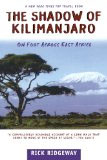
Kilimanjaro & Mount Kenya: A Climbing and Trekking Guide
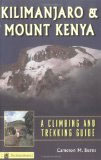
The Snows of Kilimanjaro: And Other Stories
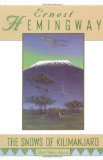
Zombies on Kilimanjaro: A Father/Son Journey Above the Clouds

Awesome trip, the guide’s skill level was superb. This was my third trip with Alpine Ascents and we have had 100% success on all 3 climbs!

Mount Kilimanjaro BLOG

2022 Kilimanjaro Webinar
Are you planning on climbing to the roof of Africa this summer? If so, check out the 2022 Kilimanjaro webinar that we hosted on May 25th. Our Kilimanjaro Program Director, Eric Murphy, outlined our COVID-19 protocols, the Tanzanian VISA process, and gave a detailed overview of the trip and what to expect. We wrapped up […]

Kilimanjaro COVID-19 Hunger Relief Update
by Eric Murphy Our ongoing and very successful ($37,000 +) Kilimanjaro Covid-19 Hunger Relief Fundraiser has just completed the 2nd food distributions for all 310 crew and staff. Members from our Tanzanian partner company Big Expeditions handled all aspects of whole purchase and transport of over 12,000 lbs of rice, corn and sugar. Arusha crew […]

Kilimanjaro: A Tribute to our Tanzanian Crew
by Paul Koubek As one of the western guides fortunate to work with the Alpine Ascents Kilimanjaro Program, when I was asked to write a blog post about any topic I wanted, the first thing that came to mind for me about my experience on Kilimanjaro was: the people! Every Alpine Ascents climb of Kilimanjaro […]
WHY BOOK WITH ALPINE ASCENTS
Knowledge & expertise.
Alpine Ascents International leads expeditions that have become benchmarks of quality in the climbing community. We operate what we believe is the finest mountaineering school in the country. This expertise is based upon years of accumulated experience-not just from individual mountain guides, but through experience on particular mountains where details are fine-tuned over time.
Our guides are an integral part of Alpine Ascents because they understand and share our climbing principles. These individuals are dedicated to sharing their excellence with others. Many of our guides have been with Alpine Ascents for over five years, with a handful of veterans working with us for most of their careers. The quality of our Guide Staff is the primary difference between us and our competitors.
Environmental Reponsibility
Leave No Trace principles are fundamental to our program, and we encourage all who climb and trek with us to understand proper wilderness practices. We help facilitate this effort by passing on Leave No Trace training and literature to every Alpine Ascents climber.
Partners & Accreditations
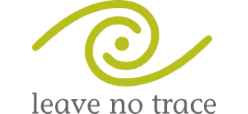

Ultimate Kilimanjaro
The #1 guide service for climbing kilimanjaro.

11 Ways to Boost Your Hiking Endurance for Climbing Kilimanjaro

12 Things You Need to Know Before Going on a Tanzanian Safari

The 7 Most Important Gear Items for Climbing Kilimanjaro

Why is Kilimanjaro Famous?

5 Simple Ways to Avoid the Crowds While Climbing Kilimanjaro

Ultimate Kilimanjaro Guides 89 Year Old on Kilimanjaro For New World Record

Ultimate Kilimanjaro® – Why We’re Different

Will Mount Kilimanjaro Erupt Again?

Why People Fail When Climbing Kilimanjaro

The 10 Biggest Misconceptions About Climbing Kilimanjaro

The Seven Summits – Highest Mountain on Each Continent

The Beginner’s Guide to Climbing Kilimanjaro

10 Reasons You Should NOT Climb Kilimanjaro

10 Reasons to go on a Tanzanian Safari

7 Things They Don’t Tell You About Climbing Kilimanjaro

5 Medications that Help Acclimatization & Combat Altitude Sickness

15 Amazing Sights to See While Climbing Kilimanjaro

What Should I Wear to Climb Kilimanjaro?

Common Objections to Climbing Kilimanjaro (& How to Overcome Them)

Kilimanjaro Map & Climbing Route Selection

Why Do Climbers Summit Kilimanjaro at Night?

How Hard is it to Climb Kilimanjaro?

Are All Kilimanjaro Crews Treated Fairly?

Can an Unfit Person Climb Mount Kilimanjaro?

10 Places for the Best Photographs on Mount Kilimanjaro

10 Tips for a Successful Climb on Mount Kilimanjaro

Is it Worth it to Climb Kilimanjaro?

Kilimanjaro Meaning – How Did Kilimanjaro Get Its Name?

Is Climbing Kilimanjaro Really Dangerous? Kilimanjaro Deaths

7 Hard Truths About Climbing Kilimanjaro (That You Need to Know)

Is Mount Kilimanjaro Too Crowded?

What are the Most Dangerous Routes on Kilimanjaro?

2024 Ultimate Kilimanjaro Gear List Recommendations

Can I Climb Kilimanjaro as a Complete Novice?

What Celebrities Have Climbed Kilimanjaro?

7 Myths About Altitude (That You Probably Think are True)

The Woman’s Guide to Climbing Kilimanjaro

12 Things You Need to Know Before Climbing Kilimanjaro

Climbing Kilimanjaro is Easy (Not Hard)

How to Stay Warm on the Summit of Kilimanjaro

8 Ways to Prevent Injuries on Mount Kilimanjaro

12 Interesting Facts About Mount Kilimanjaro
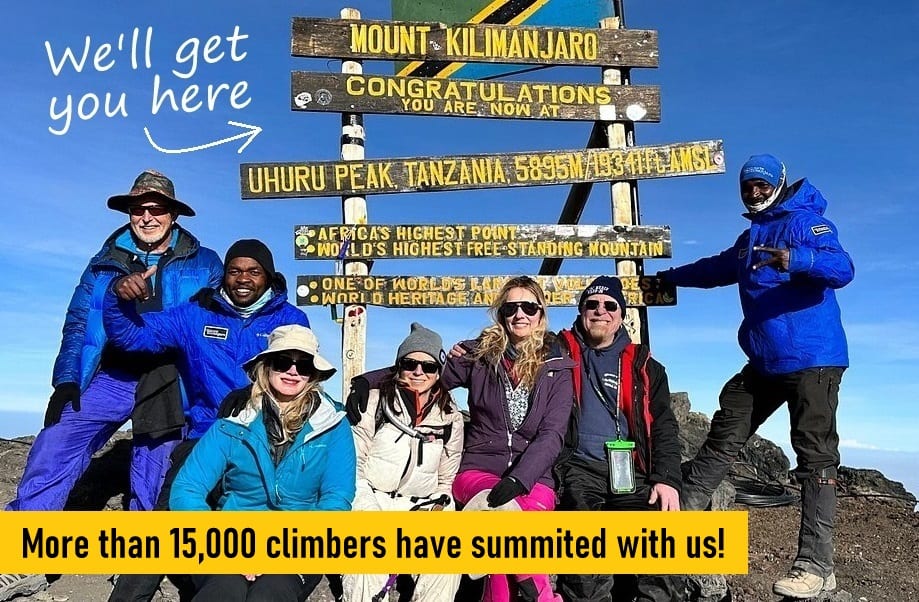
Do you want to climb Mount Kilimanjaro?
Every year, over 30,000 people just like you come to Tanzania to scale the world’s tallest free-standing mountain and Africa’s highest peak. Climbing Kilimanjaro does not require any technical skills or special equipment, just some physical fitness, determination, and the right guide service to help you along the way.
That’s where we come in.
WHY CLIMB WITH ULTIMATE KILIMANJARO®?
For over 18 years, we have provided the highest quality Kilimanjaro climbs at a reasonable cost.
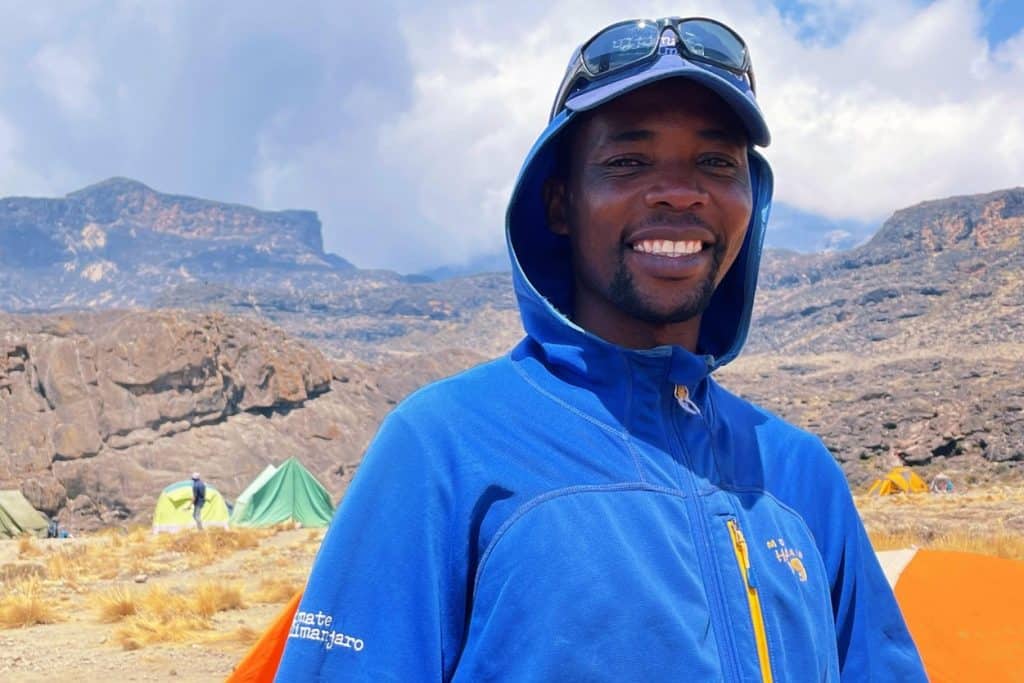
EXPERT GUIDES
- Hand selected, licensed local guides
- Decades of climbing experience
- Certified Wilderness First Responders
- Over 15,000 clients led to the summit
- Top performers in the industry
HIGH QUALITY STANDARDS
- Rugged, 4-season Mountain Hardwear tents
- Warm Mountain Hardwear sleeping bags
- Hot meals from fresh, local ingredients
- Clean water treated with WaterGuard
- Private toilet tent on all climbs
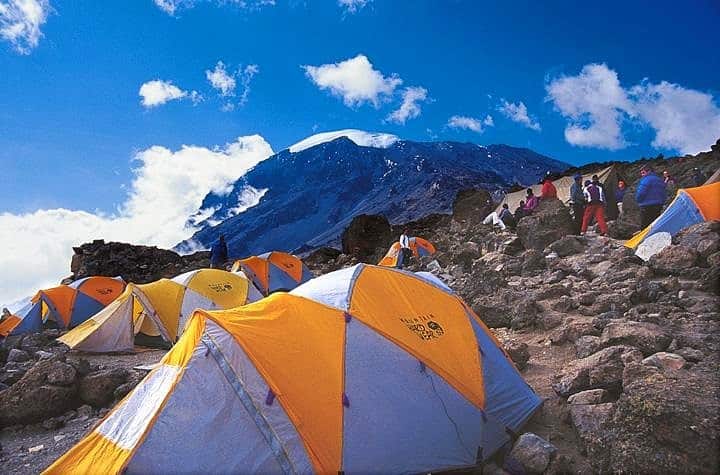
SAFETY FOCUSED
- Trained in first aid & mountain rescue
- Health checks performed twice per day
- Monitor oxygen saturation & heart rate
- Emergency oxygen included on all climbs
- Helicopter evacuation
HAPPY CUSTOMERS
- 89 year old Guinness World Record holder
- Celebrities, television hosts & producers
- US Senator, US Ambassador & Lt. Governor
- Filmmakers, authors & journalists
- Disabled veteran (with two prosthetic legs)
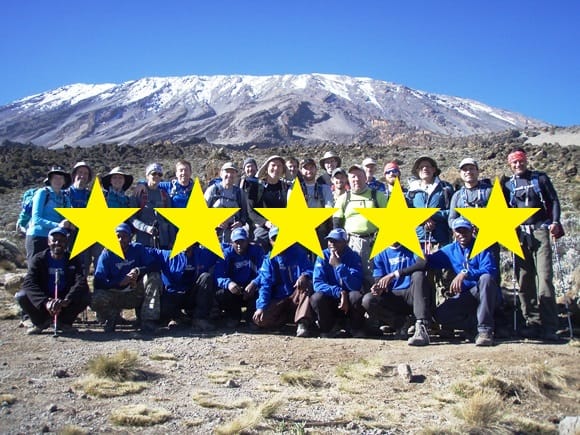
HIGHLY REGARDED
- U.S. and foreign newspapers
- International magazines
- Best selling books
- Award winning films
- and more…
wHAT’S IT LIKE TO CLIMB KILIMANJARO?
Whether you’re a complete beginner or an experienced mountaineer, our team be there every step of the way to help you along. We provide everything you need to succeed on Mount Kilimanjaro. Watch the video below to see how we guide clients on the Roof of Africa.

we have a reputation for excellence
Ultimate Kilimanjaro® is one of the largest and most reputable operators on Mount Kilimanjaro .
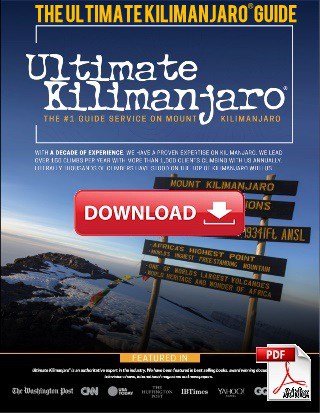
Due to our hard working, dedicated team, we have gained a reputation for excellence in the field among our peers and our clients. We are an authoritative expert in the industry.
Every year, we lead over 150 climbs and guide more than 1,000 people. Our clients have included celebrities, film makers, senators, ambassadors, authors, and journalists. We have successfully guided the world record holder for the oldest person (an 89 year old woman), a disabled war veteran (with two prosthetic legs), and a United States Senator to the summit.
All agree, you won’t find a better Kilimanjaro outfitter.
Our expert guides, high quality standards, and focus on safety have made us the top choice for thousands of customers from all over the world. In short, we know what it takes to get you to the summit – in an safe, fun, and affordable way.
Thousands of people have stood on the summit of Mount Kilimanjaro with us. Won’t you join us on the Roof of Africa?

OUR MOST FAMOUS CLIMBS
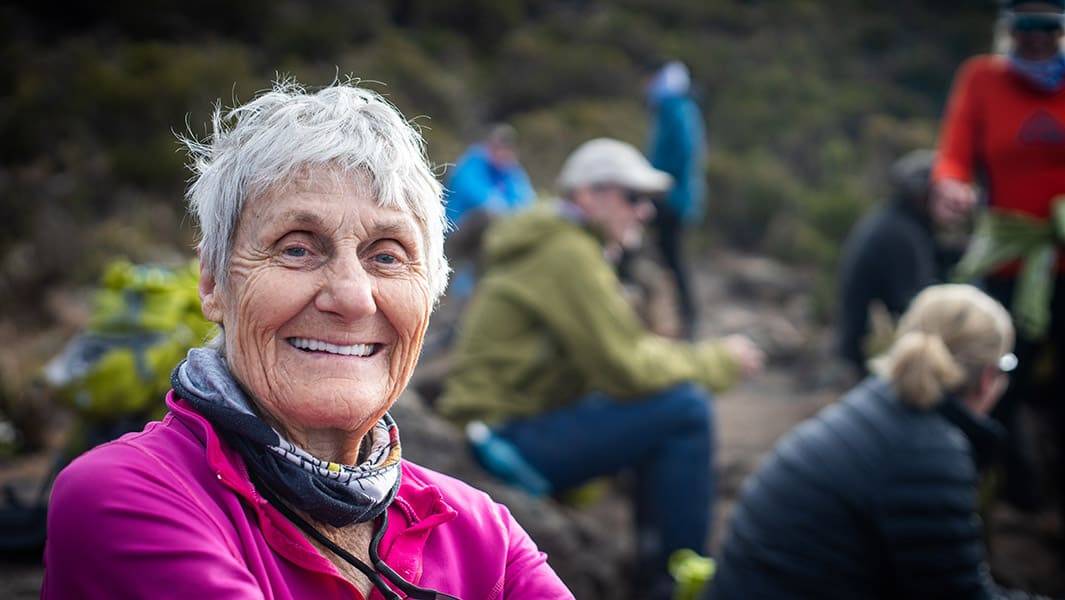
LATEST videos

Climbing Kilimanjaro? Do it the right way. Enter your email and get your free e-book instantly.
Deals of the Week European Long Weekends Up to 50% OFF
Mt Kilimanjaro Trek Tours
Located in stunning Tanzania right near the border with Kenya , Mount Kilimanjaro is a dormant volcano and a bucket list destination for any adventure lover. Climbing Kilimanjaro has never been easier. Embark on a tou r that will take you on majestic hiking routes, where you will get to visit impressive landmarks and travel accompanied by like-minded people. Discover here how to get to Kilimanjaro .
Filters applied
250+ mount kilimanjaro tour packages with 2,508 reviews.

- Hiking & Trekking
- Mountain Hikes
- Christmas & New Year
Mt Kilimanjaro Trek - Machame Route (8 Days)
James and his team were incredible. They really take care of you. I was hit hard by a variety of symptoms throughout the week, and they still got me to the top. Food is great. Rent the porta-potty!
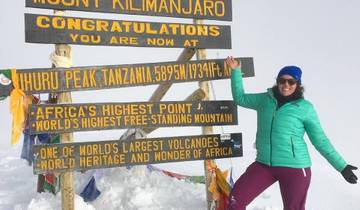
Kilimanjaro climbing machame route 7 days
All great organised, don't need to worry thanks to Almighty Kilimanjaro team. Whole group was able to accomplish and reach the top of the Kilimanjaro mountain, mostly thanks to great people like guide and his assistants. I highly recommend this company!
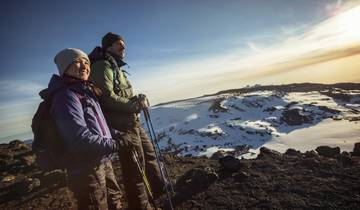
Mt Kilimanjaro Trek - Lemosho Route
The whole successful trip was, in large part, part due to the tremendous diligence and support by Bruno and his group. Can not speak highly enough of the efforts he/his made to get us up the mountain. Awesome guy.

Mount Kilimanjaro climbing via Marangu Route 8 days Tanzania (all accommodation and transport are included)
The Spider Tours team were awesome. Highly recommend. Great food, great service and great people in general. They go us up the mountain and were very lovely and patient.
- Book With Flexibility This operator allows you to rebook your dates or tours with them for free, waiving change fees.
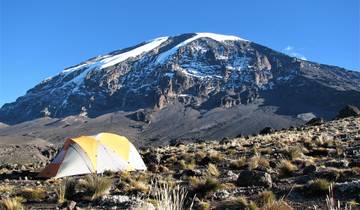
Kilimanjaro climb lemosho route 8 days
Cannot say enough good things about Almighty Kilimanjaro!! I went in Jan of 24 with my sister and some friends and our expectations were blown out of the water! Our guides Frankie, Sole, and Muntari were SO amazing! I would highly highly recommend them as guides to anyone that I know is hiking Kilimanjaro. They were funny, nice, supportive, answered all our questions and made sure that everyone was feeling well mentally, emotionally, physically, and medically! They were so inclusive and helped us gain moral when we were down at points. Even on summit night all the porters carried our bags and sang to us allll the way up. It was incredible, I bet they sang for 3 hours straight. It helped so much to help keep our mind off of what we were doing! Even one of the porters was putting my hands into his jacket to keep them warm while we were hiking! He routinely came over to make sure that my hands were warm enough and that I was doing okay. These people are truly amazing and I don’t think we could’ve made it to the top without them! I’m so glad we took the 8 day lemosho route as well. Hiking kili was my first real hiking experience (bad idea I know) but the 8 day route gave us enough time to acclimate and shorter days of hiking in order to keep spirits up! Everyone in our group did experience some pretty severe altitude sickness in spite of this but all the guides were so helpful on giving us advice on what medicines to take/ what to do in order to make us feel better. They let us sleep in when needed, we took breaks when needed, and they would tell us stories to keep us occupied during the difficult hikes. They seriously were so amazing!! One more piece of advice, please please please rent a private toilet. These were a legit LIFESAVER on our trip. Especially since some of the main symptoms of altitude sickness is GI problems and vomitting. I seriously don’t even want to imagine what that hike would’ve been like without the private toilets- best $50 I’ve ever spent!!
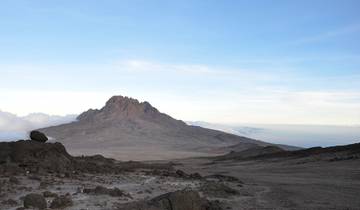
Kilimanjaro: Machame Route
This was an incredibly challenging and rewarding trip. The Intrepid guides were so knowledgeable, friendly and professional. We had a fantastic group with great dynamics, the food was good, the equipment was well looked after, our porters were such hard workers and our guides knew everything there was to know about the mountain and how to best deal with the altitude and looked after us all really well. I highly recommend climbing Kili with Intrepid.

Kilimanjaro Climbing Via Lemosho Route 10 Days (all accommodation and transport are included)
I'm more enjoy climbing Mount Kilimanjaro with spider tours and safaris. Professional and good local company. The meals and drinks during the hiking was good. Our guide and team was very supportive to make sure we made it to the top of Mount Kilimanjaro. And yeah, we all made it to the top and go down safely.

8 Days Mount Kilimanjaro Climbing - Lemosho Route
We took the Lemosho route with the team led by Arnold and crew who were very professional. You could feel that they were experienced in managing the climb and they went that extra mile to make sure everything went smooth. Even with the uncertainty of the weather. It was a very scenic and beautiful route. The food was great and there was plenty of it. All in all, we had a fantastic Kilimanjaro climb with Steppe Dogs Adventures.
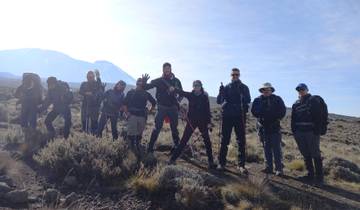
Climb Kili Lemosho Route 7 Day CLIMB, **Qualified Mountain Guides & Sustainability Certification**
We had a great time with William and Stevie! They really knew their stuff and safely guided us to the top. Would recommend 10/10!!
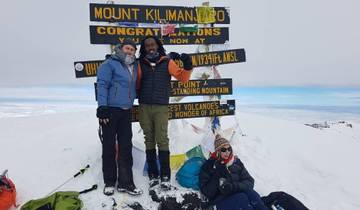
8 Days Mount Kilimanjaro Climbing - Machame Route
It was amazing 8 days in Machame Route on Kilimanjaro with Arnold and Sunday's guidance. Sunday is full of energy and active. Arnold is more quiet and full of patient. Both of them are all very professional and experiential on Mountain. Without their help, I might not be able to summit successfully. Not just guides, we got a very good supportive team, no matter cook, server and porters. They were doing the hardest and most physical challenging work for us. With their support made the trekking much easier. Lots of respect to them. Thank you so much Steppe Dogs Adventures and all the team members!!

Kilimanjaro Lemosho Route 8 Day
I recently went on the adventure of a lifetime climbing Mount Kilimanjaro via the Lemosho route on an 8-day safari with Kili Economy Safari and Mariki as our guide. I cannot speak highly enough about the exceptional service and experience provided by both the tour operator and our guide. Kili Economy Safari went above and beyond to ensure that every aspect of the trip was well-organized, from the pick-up at the airport to the accommodations and meals throughout the journey. The team was incredibly professional, knowledgeable, and attentive to our needs, making us feel safe and comfortable every step of the way. Mariki, our guide, was an absolute gem. His expertise and experience in leading climbs up Mount Kilimanjaro were evident from the very beginning. He was not only knowledgeable about the mountain and its surroundings but also had a genuine passion for sharing his love of nature and adventure with us. Mariki's patience, encouragement, and positive attitude were truly inspiring and helped us push through the challenging moments during the climb. Overall, climbing Mount Kilimanjaro via the Lemosho route with Kili Economy Safari and having Mariki as our guide was an unforgettable experience. I highly recommend this tour operator and guide to anyone looking to conquer Africa's highest peak while feeling supported and cared for every step of the way. Thank you, Kili Economy Safari and Mariki, for an incredible journey!
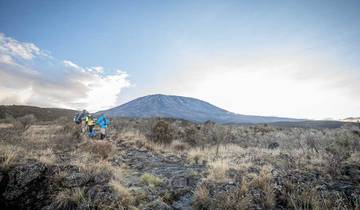
Kilimanjaro: Rongai Route
Great trip! Just prepare yourself with plenty of excercise/hiking/running preferably at altitude. Have the right gear! Guides, organisation was excellent. Can't fault intrepid at all for this. Amazing experience I will never forget.

Kilimanjaro Climb Machame Route 7 Days
Kwesa Tours will take good care of you…. Edward the Managing Director took a very good care for us since we landed in Moshi-Tanzania. Our adventure started on February and we had the chats since August. Everything went smooth as planned and they delivered what they promised. Big Five was there and the Uhuru Peak summit is a lifetime adventure. Thanks so much KWESA tours for hosting us a lifetime adventure
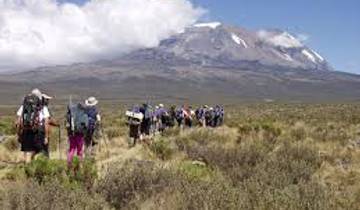
Kilimanjaro Climb Lemosho Route 8 Days
Very pleased with my trekking experience with Kwesa tour. The director Edward was great human. He truly made me feel like home. I am so glad I opt out using western companies and decided with local companies. My guide Tulzia, the waiter Juma and the whole crew that were supporting me in my journey to conquer Kilimanjaro were truly amazing people. I initially signed up for 8 days so summit day will be my birthday but ended up completing it in 6 due to misunderstanding but ended up being great. When I got back they threw me huge birthday party which ended up being the best. Also I ended up going as private since no one else has signed up for that day which worked out great. Please choose local companies and support locals.
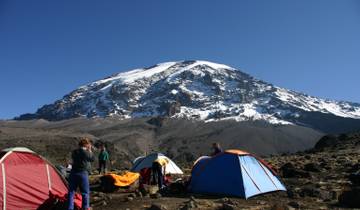
Kilimanjaro Climb -Machame Route 6 Days 5 Nights
My trip to Kilimanjaro with Migration Venture Africa was fantastic. From the start I was very well looked after, including equipment check, a brief introduction and hotel pick up the following day. The trekking experience was really nice, the sleeping huts cosy and the food was great. The whole crew and the guides Murati and Paul were very friendly and caring, also catering for extra wishes. Highlight was the summiting of Mount Kilimanjaro when the crew really went the extra mile to support our team. I can highly recommend this company if you are planning to climb Mt. Kilimanjaro.
- 5% deposit on some dates Some departure dates offer you the chance to book this tour with a lower deposit.
What people love about Mount Kilimanjaro Tours
I got Covid from someone in the group. For a high altitude hike like this, we should have been tested for Covid. It not like I could avoid it, we ate together in an enclosed tent.
Almighty Kilimanjaro provided us with the best memories of our life. Robert and Lily made the whole trip stress-free with their humorous and caring personality. They were amazing! Our stomach engineer cooked the most delicious meals and Femi made sure all our smallest needs were met. We couldn’t have made it to the top without the support of our wonderful team. We are very thankful for the amazing experience and ever-lasting memories. We highly recommend going with the same team!
Excellent tour as expected.
Mount Kilimanjaro Destinations:
- Marangu Route (55)
- Machame Route (55)
- Lemosho Route (53)
- Rongai Route (32)
- Umbwe Route (9)
- Shira Route (5)
Mount Kilimanjaro Tours starting in:
- Moshi (212)
- Arusha (101)
- Machame Camp (29)
- Mount Kilimanjaro (24)
- Kilimanjaro (24)
- Marangu (19)
- Mti Mkubwa Camp (16)
- Mandara Hut (12)
- Rongai Gate (8)
- Umbwe Camp (8)
- Hiking & Trekking (658)
- Group (559)
- Personalized (417)
- Fully Guided (408)
- Family (398)
- Partially Guided (265)
- Active (202)
- Explorer (159)
- Private (120)
- Safari (26)
- Bicycle (13)
- Jeep & 4WD (6)
- Self-Guided (6)
- Small Group (221)
- 3 Day Tours (18)
- 7 Day Tours (213)
- 10 Day Tours (218)
- 2 Week Tours (23)
- 3 Week Tours (6)
- Spring 2024 (427)
- Summer 2024 (461)
- Fall / Autumn 2024 (446)
- Winter 2024 / 2025 (443)
- Spring 2025 (329)
- Summer 2025 (312)
- Fall / Autumn 2025 (299)
- Winter 2025 / 2026 (290)
- April 2024 (409)
- May 2024 (433)
- June 2024 (456)
- July 2024 (451)
- August 2024 (449)
- September 2024 (443)
- October 2024 (444)
- November 2024 (424)
- December 2024 (433)
- January 2025 (376)
- February 2025 (344)
- March 2025 (329)
- April 2025 (300)
- May 2025 (302)
- June 2025 (312)
- July 2025 (303)
- August 2025 (298)
- September 2025 (298)
- October 2025 (296)
- November 2025 (281)
Other Regions in Tanzania
- Northern Circuit Tanzania (1698)
- Tarangire National Park (149)
- Serengeti National Park (132)
- Ngorongoro National Park (118)
- Zanzibar (88)
- Mount Meru (81)
- Southern Circuit Tanzania (53)
- Mikumi National Park (37)
- Selous Game Reserve (35)
- Ruaha National Park (11)
- Western Tanzania (5)
- Climbing Mount Kilimanjaro: Facts, Height & Maps
- How to Get to Kilimanjaro (from Nairobi & other Airports)
- Best Time to Climb Kilimanjaro? [Month by Month]
- Kilimanjaro Insurance, Vaccinations, Visa and Permits
- Kilimanjaro Packing List
- How to Prepare for Kilimanjaro Climb
- Best 10 Kilimanjaro Tour Operators & Trekking Companies
Travel Styles
- Budget (167)
- Luxury (12)
- Singles and Solo (324)
- For Couples (45)
- Seniors (107)
How to Climb Mount Kilimanjaro: The Complete Guide
:max_bytes(150000):strip_icc():format(webp)/anoukmarrakech-56a373305f9b58b7d0d20299.jpg)
TripSavvy / Ivey Redding
At 19,341 feet/5,895 meters, snow-capped Mount Kilimanjaro in Tanzania is the highest peak in Africa and the world's tallest free-standing mountain. It's also the world's tallest walkable mountain—and what a walk it is. To reach the summit, one must pass through five distinct climate zones ranging from rainforest to alpine desert and eventually glacial Arctic. Although it is possible to climb Mount Kilimanjaro without any specific mountaineering training or equipment, summiting the Roof of Africa is not an easy task.
Find a Tour Operator
Experts estimate that only 65% of climbers reach the summit of Kilimanjaro, but your chances increase significantly if you choose the right operator. It is compulsory to climb Kilimanjaro with a guide, and although you can find independent guides for slightly cheaper rates, organized tours offer a better experience and better back-up in case of emergency. Operators vary from first-class to downright negligent, so it's important to be selective and to prioritize safety over cost. Thomson Treks is a respected operator with a 98%+ success rate.
Top Tip: Avoid low-end companies and make sure to check operator reviews and success rates carefully before deciding.
Time Your Trip
It is possible to climb Mount Kilimanjaro all year round, but some months are distinctly more comfortable than others. Tanzanian weather patterns mean that there are two optimum seasons for trekking Kilimanjaro—from January to March, and from June to October. Between January and March, the weather is cooler and the routes are less crowded. From June to October, the mountain is busier (due to the season coinciding with northern hemisphere summer holidays), but the days are warm and pleasant. It's best to avoid the wetter months of April, May, and November while warm clothing is required at the summit all year round.
Top Tip: Book well in advance for peak season trips with the safest climbing conditions.
Prepare for Success
Although mountaineering training isn't necessary, a reasonable level of fitness goes a long way on Kilimanjaro. If you're somewhat lacking in this department, you'll want to work on your stamina in the months leading up to your trek. Practice hikes also give you the opportunity to break in your new hiking boots , minimizing the chance of debilitating blisters. Exertion at altitude can affect the body in different ways, so it's a good idea to get a medical check-up before departure. Even the most basic ailments can make your life miserable at 18,000 feet.
Top Tip: Comprehensive travel insurance is essential. Make sure that your plan includes cover for medical treatment and emergency evacuation by helicopter.
Choose Your Route
There are seven main routes up Kilimanjaro. Each one varies in terms of difficulty, traffic, and scenic beauty; and choosing the right one for you is a key part of the planning process. Timings depend on which route you choose, with hikes taking anywhere from five to 10 days. The routes with the highest success rate are those that take longer and ascend at a gradual rate, allowing climbers to acclimatize to the change in altitude.
Also known as the Coca-Cola route, Marangu is the classic Kilimanjaro route. It is traditionally considered the easiest, with a gradual slope and communal sleeping huts located at strategic locations along the way. It takes a minimum of five days to climb, although success rates for this time frame are low. Despite its reputation, experts do not recommend Marangu because it is the most crowded and least scenic of the Kilimanjaro routes.
Machame, or the Whiskey route, was opened as a tougher alternative to Marangu and has now replaced Kili's oldest route as the most popular choice for adventurous climbers . It can also get crowded, especially at bottlenecks in the rainforest section. It is steeper and more scenic than Marangu and enjoys a better success rate. You'll need at least six days to climb Machame, although seven is preferable. It is the most affordable route offered by Thomson Treks.
As one of the mountain's newer routes, Lemosho comes highly recommended by trusted operators like Thomson and Ultimate Kilimanjaro . It sees far fewer crowds than Marangu and Machame, and stands out for its unparalleled scenery with panoramic views from all sides of the mountain. This route takes a minimum of six days, although eight to nine days is recommended. Plenty of time for acclimatization and a daytime summit bid explain Lemosho's high success rate.
Northern Circuit
Those with plenty of time to spare should consider the Northern Circuit. Kili's newest route takes nine days and virtually circumnavigates the mountain, making it the longest choice both in terms of time and distance traveled. The extra days spent at mid-altitude allow for plenty of acclimatization, which in turn leads to a very good summit success rate. This is also the most remote route, with magnificent scenery including elevated views into neighboring Kenya.
Rongai is the only route to approach Kilimanjaro from the north, near the Kenyan border. It sees relatively few climbers, and is a particularly good choice if you decide to travel during the rainy season as the mountain's northern face sees the least precipitation. Cons include the fact that the scenery is not as varied as some of the other routes, and the fact that the descent takes you down the crowded Marangu route. Rongai takes six to seven days to complete.
The Shira route approaches the mountain from the west and is nearly identical to the Lemosho route. The only difference is that instead of starting the trek at the Londorossi Gate, climbers are transported by vehicle to the Shira Gate at 11,800 feet/3,600 meters. This allows you to skip the initial section of the climb but also puts you at greater risk of altitude sickness due to the relatively high starting point. This route takes between seven and 10 days.
As the most challenging of the Kili routes, Umbwe is only recommended for experienced climbers who are confident in their ability to acclimatize quickly. It takes a minimum of six days and involves steep, difficult slopes with a rapid ascent profile. You'll also be making your summit bid under cover of darkness. Because of this, Umbwe has a low success rate. However, it is also one of the least crowded and most visually impressive routes.
Top Tip: Allow time for a longer trek in order to maximize your chances of reaching the summit.
Pack Carefully
It's important to find the balance between packing light and making sure that you have everything you need. Layers are crucial given the diversity of Kilimanjaro's climate. You'll need sun protection for the lower reaches, and warm clothes for the summit. A good quality sleeping bag is essential, as is a basic first aid kit (your operator should provide more extensive safety equipment, including oxygen and a defibrillator). It is possible to rent equipment on-site, although quality and fit vary greatly. Remember to pack spare batteries for your camera, and photocopies of your passport/ insurance documents.
Top Tip: Make sure to carry cash for tipping your guide and your porter, who will carry up to 30 lbs/15 kg of your personal gear for you.
Get Acclimatized
Altitude sickness is the single biggest reason for failed summit attempts on Kilimanjaro. The best way to acclimatize to the mountain's extreme altitude is to choose a route that ascends gradually, taking six days or longer. Altitude sickness can affect anyone, regardless of your training or fitness, and as such it's vital that you are able to recognize the symptoms. Read up on the effects in advance and be prepared to descend if necessary, remembering that the most serious form of altitude sickness can be fatal.
Top Tip: Learn your limits and don't attempt to push them. When it comes to Kilimanjaro, slow and steady really does win the race.
Budgeting for Your Trip
A Kilimanjaro trek can cost anywhere from $2,400-$8,000+ per person. This fee should include camping, food, guides, park fees, and transport to and from the mountain. You need to make sure that your food is decent, that your guides and porters are fairly treated and well trained and that you get a good night's sleep. While the shorter routes are cheaper, your chances of reaching the summit are significantly reduced as a result of poor acclimatization. If you opt for a "good deal" make absolutely sure that your guides and porters are well-equipped to handle emergencies.
This article was updated and re-written in part by Jessica Macdonald on September 9 2019.
The Complete Guide to Climbing Morocco's Mount Toubkal
What I Learned From Climbing Mount Kilimanjaro
Top Tips for Climbing Mount Meru in Tanzania
Five Amazing Hiking Routes Among the High Mountains of the Himalayas
The World's Highest Places and Attractions That You Can Visit
10 Best Mountain Treks in Africa
13 Amazing Trips to Take Before You Turn 40
Want to Take Up Mountaineering? Get Started With These 8 Mountains
The 18 Best Things to Do in Tanzania
Where Is Mount Everest?
How to Choose and Prepare for a Hiking Trip
Simien Mountains National Park: The Complete Guide
The Best Countries in the World for Adventurous Travelers
Yosemite National Park: The Complete Guide
How to Climb Mount Fuji: The Complete Guide
The Best Time to Visit Tanzania

KILIMANJARO ROUTES
- KILIMANJARO GUIDE COST
- BOOK YOUR KILIMANJARO CLIMB

Mount Kilimanjaro Guides information on How to plan a trip to Mount Kilimanjaro
- Send Inquiry

So you probably have a lot of questions, like ” When is the best time to climb Kilimanjaro?” “Which route should I choose?” How difficult is Kilimanjaro? ” “How long does it take to climb Mount Kilimanjaro? “What are the routes on Kilimanjaro and how do I choose one? ” Climbing Kilimanjaro is an event in your life that will live with you forever. It is a journey of the soul through some of the most beautiful scenery. It does not require any technical expertise but does require lots of determination. So if you are committed, landing on this page is a good place to start.
- Kilimanjaro can be climbed by any physically fit person and no climbing experience is necessary.
- A Kilimanjaro Climb can be done at any time of the year. There are two rainy seasons – late March to mid June and October to November – and the best months are January to March and July to October as the days are usually cloudless.
- During the day the temperature at 4000m tends to be 15°C and at night falls to -10°C. At the summit, temperatures are about 5°C during the day and drop to between -18°C and -22°C at night.
So just how hard is Kilimanjaro?
- It is a 3-mile vertical climb.
- There are 5 different climatic zones from Bushland to the Arctic.
- The ascent to the summit: 6 – 7 hrs, a 1300m – 1400m ascent, it’s dark, it’s cold, and it will be below zero on the summit.
- Summit day is over 12 hrs long, including the descent from the summit to the next night’s stop.
- Altitude sickness is a real threat on summit day.
We can operate our private treks for any given departure date and any group size making this option ideal for family and friendship groups who wish to trek together.
We are happy to edit the itinerary to suit your preferences and please let us know if you wish to extend the trip in any way. We also offer the fabulous Tanzania Safari in Arusha National Park or the Serengeti National Park and this can easily be included to extend the itinerary.
Climbing Mount Kilimanjaro
Mount kilimanjaro guide: climb africa's highest peak | tips, routes & tours.
Climbing Kilimanjaro with a local guide is a safe and enjoyable experience. It is a requirement for anyone climbing Kilimanjaro to be accompanied by a licensed guide who is licensed by Kilimanjaro National Park. Most people who climb have a team of crew members consisting of a lead guide, assistant guide, cook, and porters. The best times to climb Kilimanjaro are from December to March and from June and October when it is the driest. Local guides are used to climbing the mountain on a twice-monthly basis, negotiating its trails with diverse groups of visitors. In contrast, visiting guides only climb a limited number of times a year – around 2-3 times on average. The Marangu route is one of the most accessible routes to climb up the mighty mountain of Kilimanjaro. The Machame route is the most popular route to climb Mount Kilimanjaro. It provides hikers with varying landscapes and incredible views from the highest point on Mount Kilimanjaro at Uhuru Peak.
Kilimanjaro Guide Services.
Kilimanjaro guide services typically include experienced guides, porters, and cooks, as well as necessary equipment and supplies. The guides are trained to ensure the safety and well-being of climbers, providing advice on acclimatization, route selection, and potential hazards. They also offer valuable insights into the mountain’s unique ecology and cultural significance.
Mount Kilimanjaro Guide offers a three-tiered pricing system to suit all budgets. Each level is underlined by our high standards of sales, service, and support, as well as the same impeccable standards of climb and safari logistics. We offer the only reliable, Fair Trade, community tourism option that guarantees equitable remuneration for all of our guiding and mountain support crews, who as a consequence are among the best in the industry.
Booking a Kilimanjaro Guide
Choose the Right Time to Visit: Consider the best time of year for your Kilimanjaro climb. The dry seasons (January to March and June to October) are generally recommended.
Select Your Climb Duration: Kilimanjaro treks vary in duration, typically 5 to 9 days. Choose a duration that suits your fitness level and preferences.
Pick a Kilimanjaro Route : There are several routes to the summit, each with its characteristics. Research and select a route that aligns with your goals and preferences.
Group Climb or Private Climb?: Decide whether you want to join a group trek or a private climb. Group treks can be more social, while private climbs offer flexibility.
How much does the guide charge for their services?: The cost of hiring a Kilimanjaro guide can vary depending on several factors, including the route, duration of the trek, and the level of service provided
Pay the Deposit and Confirm Your Booking: Once you’ve made your decision, pay the required 30% deposit to secure your spot.
Kilimanjaro trekking routes: There are seven established routes to climb Mount Kilimanjaro – Machame, Marangu , Lemosho, Umbwe, Shira, Northern Circuit, or Rongai, each one offering its unique scenery and sights en route, and each varying in difficulty. The Marangu, Machame, and Umbwe route all approach from the south of the mountain. The Lemosho, Shira and Northern Circuit routes approach from the west. The Rongai route approaches from the north. The Mweka Route is used as a descent route. On average, it takes 6 days to climb Kilimanjaro but extra days should be added to your trek to acclimatize to the high altitude.. It is recommended that climbers take a minimum of 6 days to do the climb. We have quoted the price based on 2 people doing the climb. It’s important to note that all climbers must be 10 years or older.
Can You Climb Mount Kilimanjaro Without a Guide
No, you cannot climb Mount Kilimanjaro without a guide. The Tanzanian government requires all climbers to be accompanied by a licensed guide. This rule is enforced to ensure the safety of climbers, as well as to protect the environment and maintain the integrity of the mountain. The climb can be challenging and potentially dangerous without proper guidance and support.
This means that anyone attempting to climb Kilimanjaro must hire a Kilimanjaro Local Guides to accompany them on their trek. The Kilimanjaro guide will not only ensure the safety of the climbers but also provide valuable information about the mountain, its history, and its ecology. Thus, it is mandatory to have a Kilimanjaro Local Guides when climbing Mount Kilimanjaro.
Climbing Mt.Kilimanjaro Without Porters
Climbing Mt. Kilimanjaro without porters is a challenging endeavor that requires a high level of physical fitness, preparation, and self-sufficiency. Porters typically assist climbers by carrying heavy gear, setting up camps, and preparing meals, so without them, climbers must manage these tasks themselves. This means carrying all necessary equipment, food, and water, navigating the mountain’s various routes, and dealing with the altitude and weather changes. It’s a demanding task that requires careful planning and a strong understanding of mountaineering.
Beginner's Guide to Climbing Mount Kilimanjaro?
Climbing Mount Kilimanjaro is often taken lightly, because we no ropes, irons or other attachments need, this does not mean that you will reach the top. Every year approximately 30000 to 50000 people start the climb to the summit of Mount Kilimanjaro, only 60% gets the actual summit also (Uhuru Peak). 40% do not make it have different reasons, it may be because their condition is not good enough, or that they deal with altitude sickness get (throbbing headache, vomiting, nausea, and feeling tired and lethargic), in most cases, this time will be noticed by your guide, but unfortunately there are still too many incompetent guides, or not notice this too late. We understand there is about 1 to 10 death each year thus it is relatively safe be sure you book with a professional and competent company. All our main guides have at least 5 years experience with climbing Mt Kilimanjaro, and have the proper training and papers.
As a beginner, you should be fully aware of the conditions and requirements for climbing Kilimanjaro. The climb to the summit typically takes between five and nine days, and climbers will need to be prepared to hike for several hours each day, often at high altitudes. Altitude sickness is a common concern, and climbers should take appropriate measures to avoid this, such as acclimatization, staying hydrated, and taking rest days.
It’s also important to consider the seasonal climate when planning your climb. The best time to climb Kilimanjaro is during the dry season, which runs from June to October and from December to February. During this time, the weather is generally clear and dry, making for better climbing conditions.
So how much will the ascent of Kilimanjaro cost in total?
It isn’t cheap to climb Kilimanjaro, and we want you to be aware of the costings and rough budget that you should expect, before contemplating an ascent.
The Kilimanjaro cost will also depend on your trekking style, which type of trekking will you choose to climb Kilimanjaro. There are a lot of budget options where you can cut costs and also enjoy climbing. The Luxury climbing options would empty your wallets. There are mid-range operators who would like to manage both together, your budget and your comfort.
The mid-range operators will provide you with all the facilities needed to climb Kilimanjaro and the best part is their Price To Climb Kilimanjaro is affordable.
Classic Kilimanjaro Packages VIA Marangu Route
Our classic Kilimanjaro packages are designed to provide climbers with a comfortable and safe climbing experience. These packages are popular among our clients due to the high safety standards and comfort they offer, making the Kilimanjaro hikes enjoyable and memorable. The package includes all necessary amenities for the hike, supported by our experienced mountain crews to ensure a smooth and successful climb. Before and after the adventure you will stay in a 2-star hotel with caring staff, hot water, reliable Wi-Fi, and a restaurant.
Extend your trip with a African safari
Many people choose to extend their stay in Tanzania with a safari. Close to Moshi are three famous game parks, the Tarangire, Ngorongoro Crater, Arusha, and Lake Manyara. We offer a two day safari extension for USD 800 (based on 2 sharing, and excluding park fees).
The scenery and numbers of animals are as epic as the scenes from the Lion King. You are likely to see elephants, giraffes, rhinos, gazelles, hippos, zebras, baboons, lions and wildebeast, to name but a few. The bush pigs and water buffalo are almost always in sight.
The jeeps used for the safaris are generally Landrovers or Landcruisers. At night you stay in local lodges that are really comfortable, or there is the cheaper option of staying in tents if you prefer. If you are interested in a safari, contact us for further details
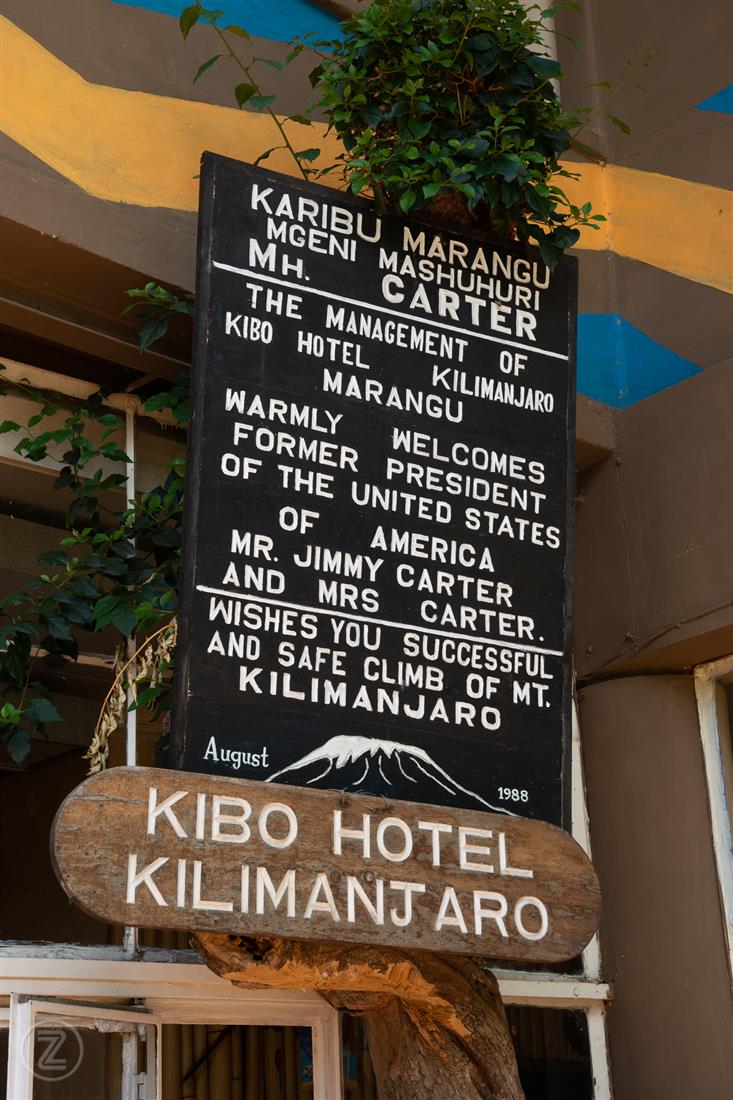
mount kilimanjaro guide
Is climbing kilimanjaro possible at age 50.
Yes, climbing Kilimanjaro is possible at age 50 and beyond. Age is not a limiting factor when it comes to climbing this mountain. However, physical fitness, overall health, and proper acclimatization to altitude are crucial for a successful climb. Many people in their 50s, 60s, and even 70s have successfully reached the summit of Kilimanjaro. It’s always recommended to undergo a thorough medical check-up before undertaking such a strenuous activity.
Non-Summit Short Kilimanjaro Climbs & Day Treks
Kilimanjaro short treks | Day Hikes | look no further. Climbing Kilimanjaro is not on everyone’s wish list. Some people just wanted to get a chance to experience this majestic mountain without reaching Uhuru Peak and having to go through the hard slog of getting to the summit.
Some don’t have the time, not the money to spend 7 days trekking and if you are one of these people, then our short treks are perfect for you. Doing a short trek on Kilimanjaro is a great option, giving you the chance to do either a 1-day, 2, or 3-day trek. While you can choose the number of days you spend on the mountain, you can’t choose your routes, as the Marangu route is the only route where short treks are allowed.
For overnight hikes, you will stay at the park huts. All of these short Kilimanjaro treks and day hikes are offered on a private basis so you can start on any day that suits you.
These tours can then be combined with a short Tanzania safari option to give you the best of both worlds. Note that for each of the tours, there is a day pre- and post at the hotel, so a 1-day trek e.g. is a three-day tour
From 650 USD TO 1000 USD, These prices do include 2-star hotel accommodation, airport transfers, therefore – only the transfers to the mountain and back, guide and porter wages, park fees, and food on the trek.
AVERAGE DAILY HIKING HOURS ON KILIMANJARO
When it comes to hiking on Kilimanjaro, the duration of trekking hours can vary depending on the day and the chosen route. However, on average, hikers typically spend around 4 to 7 hours per day trekking. It is advisable to start your climb between 8:00 and 8:30 am to ensure that you have enough daylight to complete your journey. It’s worth noting that hiking times can be affected by weather conditions, altitude sickness, and the fitness level of the individual. Therefore, it’s crucial to pace yourself and take breaks when necessary to avoid exhaustion and ensure a successful climb.
DISTANCE OF KILIMANJARO HIKE
Mount Kilimanjaro offers several routes to hike, and the distance to cover depends on the route you choose. The shortest route is Umbwe, measuring 23 miles or 37 kilometers. However, it is also the steepest route, requiring a high level of fitness and experience. On the other hand, the Northern Circuit is the longest route, measuring 56 miles or 90 kilometers. This route offers a more gradual ascent, providing hikers with ample time to acclimatize to the altitude. Therefore, the number of miles to hike Mount Kilimanjaro can range from 23 to 56 miles, depending on the route you pick.
CLIMBING KILIMANJARO: DO YOU NEED OXYGEN?
Climbers do not need supplemental oxygen to climb Kilimanjaro or reach the summit. Kilimanjaro’s altitude of 5,895 meters (19,341 feet) is a significant challenge, but the acclimatization method of walking slowly “pole pole” climb high, sleep low is used to help the body adjust to the lower levels of oxygen in the air. This means that climbers take their time ascending the mountain, allowing their bodies to gradually adapt to the altitude. Additionally, climbers are advised to stay hydrated, eat well, and get enough rest to help their bodies cope with the physical demands of the climb. While supplemental oxygen is not typically required on Kilimanjaro, climbers should always consult with their doctor before attempting the climb to ensure they are physically fit enough to do so.
CAN YOU BREATHE AT THE SUMMIT OF MOUNT KILIMANJARO?
You can breathe at the top of Mount Kilimanjaro, but the air is much thinner and contains much less oxygen than at sea level, which can make it difficult to breathe. At nearly 6000 meters above sea level, the air pressure is less than half that at sea level, which means that each breath you take contains much less oxygen. This can make it feel like you are working with only one lung and can cause symptoms such as shortness of breath, fatigue, and headaches. However, with proper acclimatization and the use of supplemental oxygen, most people can make it to the summit and breathe comfortably. It’s important to take the necessary precautions and listen to your body to avoid altitude sickness and other potentially dangerous side effects of high-altitude trekking.
FAILURE RATE OF CLIMBING MOUNT KILIMANJARO
It is estimated that the overall summit success rate for Kilimanjaro falls between 45% and 65%, meaning that a significant portion of climbers do not make it to the top. However, it is important to note that success rates can vary greatly depending on the specific route taken, the duration of the climb, and the preparation and fitness level of the climbers. It is generally recommended to choose a longer itinerary, typically lasting at least a week, to give yourself the best chance of reaching the summit. Additionally, working with a reputable guide and ensuring proper acclimatization can also increase the likelihood of a successful climb. While climbing Kilimanjaro is a challenging and demanding endeavor, with proper preparation and support, many climbers can achieve their goal of reaching the summit.
THE DIFFICULTY OF CLIMBING MT.KILIMANJARO
Mount Kilimanjaro is considered a difficult mountain to climb. With an altitude of 19,341 feet or 5,895 meters, Kilimanjaro is an extreme altitude trek that requires careful preparation and training. More than 50% of climbers suffer from mountain sickness, which is a condition caused by the lack of oxygen at high altitudes. Therefore, it is essential to acclimatize properly to the altitude before attempting to climb Kilimanjaro. Additionally, climbing Kilimanjaro involves hiking through various terrains, including rocky paths, steep inclines, and challenging weather conditions. Therefore, climbers must have adequate physical fitness and endurance. climbing Mount Kilimanjaro is a challenging but rewarding experience for those who are prepared well and have the necessary skills and determination.
THE CHALLENGES OF CLIMBING MOUN T KILIMANJARO
The hardest part of climbing Kilimanjaro varies from person to person, as everyone has different physical abilities and mental strengths. However, most climbers would agree that the summit night is the most challenging part of the climb. This is because it involves a steep ascent to the peak in very cold and high-altitude conditions. Climbers need to exert themselves physically while also battling altitude sickness and fatigue. The summit night typically involves waking up in the middle of the night and trekking for several hours in the dark, often using headlamps. Additionally, the weather conditions can be unpredictable and harsh, with strong winds and snowfall. It’s crucial to be mentally prepared for the physical and emotional challenges of summit night, as it can be an incredibly demanding experience.
KILIMANJARO TOILETS
So let’s start with the worst problem of all; human waste. It is something we all need to do at some point of the day and there are purpose built toilets at each camp and at some places along the route. If you are on Marangu you will find nice flush toilets but for the rest of the mountain they are long drops. Lower down the mountain in the forest zone and at the first camps, the toilets smell due to low altitude and warm weather during the day. The effect of this is that many people elect to go outside the toilet in the surrounding area, resulting in unwanted piles of human waste and toilet paper littering the area. The situation at Crater camp at 5700m is even more dire, where there are no custom toilets meaning that the only places to go are in and around crater camp itself. Due to the sub zero temperatures, nothing freezes. Between camps, there are few, if any toilet facilities. For the reasons mentioned above, regardless of how dire the conditions are in the toilet we ask that climbers make use of them. They are there for good reason. Take vicks and rub it under your nose if you must. If not, hire a toilet tent where the waste can be properly disposed of. And if you really do need to go between camps, find yourself a “loo with a view” a good 20m off the trail and away from any streams, dig and hole and bury your deposit.
LITTER ON KILIMANJARO
Everything that is carried up the mountain that is not consumed must be brought back down again. At every camp, the gear that the porters carry must be weighed on leaving each camp and again on arriving at the next one. KINAPA enforces strict regulations to keep Kilimanjaro clean. Licenses are easily revoked or heavy fines imposed if it is found that a guide is leaving litter on the mountain. So in theory, all you have to do is give your little paper bag to the kitchen team to be carried off the mountain or better still, leave it in a bag in your duffel and dispose of it when home. Why a paper bag? Simple, plastic is a global curse and as of 1 June, Tanzania has banned the use of plastic bags. Anyone arriving into Tanzania will have to “surrender” plastic bags in their possession before entering the country. En route to the summit, sucking on glucose sweet helps with thirst and a dry mouth but sadly, most of those sweet wrappers find their way to the scree paths. If you have the energy to dig out a sweet and open it, then you have the energy to put the wrapper back in your pocket. The same applies to hand warmers and dead camera batteries.
NOTABLE POINTS ON KILIMANJARO TREK
uhuru peak.
Standing on Uhuru Peak, the summit of Kibo, and the highest mountain in Africa, Mount Kilimanjaro at 5895m amsl, The highest point in the whole continent of Africa and the goal of every trekker on Mt Kilimanjaro. At a height of 5895m above sea level, Uhuru Peak is the highest summit on Mt Kilimanjaro’s crater rim. First reached by Hans Meyer in 1889, the peak was named by Tanzania’s first president Julius Nyerere as Uhuru Peak, which translates to ‘Freedom Peak’, when Tanzania gained its independence in 1964. Till then it was known as Kaiser Wilhelm Spitze or Kaiser Wilhelm Peak as was named by Hans Meyer. The topic of its height is also a hotly debated one, with official figures (since the British Ordnance Survey in 1952) putting it at 5895, but contested by several independent sources. GPS data from a 1999 study puts it at a lower height of 5892.55m. Source
FURTWANGLER GLACIER
This glacier, on the crater floor, is named after Herr Furtwangler, the first person to ski down the slopes of Mt Kilimanjaro. It has sadly, been greatly reduced, but remains an important landmark
GILLMANS POINT
The Gillman point lies on the crater rim and has a steep ascent, especially when climbing from the Kibo huts. Gillman’s point lies at 5719m, and it usually takes about an hour and a half to reach Uhuru from here.
STELLA POINT
Climbing the Mount Kilimanjaro, Machame route – Stella Point (5756m) – the last milestone before the top. An important waypoint, especially on the Barafu Route, is what is called, a false summit as it towers above in your line of sight. Once you reach Stella Point, Uhuru is not far away! Stella Point also lies on the crater rim and is named after Stella Latham
REUSCH CRATER
The Reusch crater is a majestic sight. The crater contains a 360m wide and 120m deep Ash Pit, which drives home the point that Mt Kilimanjaro is a volcano. Named after Pastor Richard Reusch, the crater honors him and marks his 25th climb of Mt Kilimanjaro. He went on to further climb the mountain, a total of 65 times! He is also known to have taken an ear off the Frozen Leopard, which was featured in Ernest Hemingway’s book, The Snows of Kilimanjaro.
THE WESTERN BREACH
Though it sounds like something out of a war movie, the Western Breach is an area of the Kibo Crater, through which at some point in the past, lava has broken through and breached the crater wall – hence the name. This is an interesting, quite stunning breach and allows an access route to the summit.
WHAT IS AN EVACUATION ON KILIMANJRO?
On Mt. Kilimanjaro, there are three ways of evacuation: helicopter, ambulance, and stretcher. Each one depends on several factors. As part of your Kilimanjaro Park Fee, emergency evacuation services are included. This means that you will be carried down to the base of the mountain as quickly as possible, on a mountain stretcher. In many cases, a foot evacuation is quicker than waiting for insurance cover to arrange the logistics for a helicopter. There are helicopter evacuation points on all of the major routes at specific locations, namely Horombo, Barranco, Barafu, Kosovo, Stella, Millennium and Shira. All points are within less than five hours from the crater by stretcher and SAR emergency medical service can be deployed within 5 minutes from Kilimanjaro or Meru, regardless of the season. Of course, nothing is free and deployment of this service is contingent on you already having insurance covers for evacuations to 6,000 meters above sea level.
At any point, if you are too exhausted or ill to trek down the mountain, we can carry you down via stretcher. Depending on where you are on the mountain, you might also have the option of getting an ambulance or a helicopter.
Ambulance rescue is possible from all routes, but the highest it can reach is Shira point for (Lemosho and Machame Routes), or Horombo Hut on the Marangu Route (and Rongai Route on the descent). On other routes, you would have to come further down the mountain to be picked up by ambulance. The ambulance fee is included in the park fee so you will not have to pay for this service.
Your safety is guaranteed by a Moshi-based helicopter rescue team. Some hut stations and camping areas have a helicopter landing space for an efficient and secure evacuation. In Moshi, patients are taken to nearby hospitals (Kilimanjaro region). Depending on the day’s weather, a helicopter can land in as little as 10 to 15 minutes.
EVACUATION ON KILIMANJARO? COST CONSIDERATIONS:
– Walking evacuations – No cost beyond crew tips – Helicopter evacuations – Can cost $ 2500 to $5000+ per incident & Medical treatment – Evacuees must cover all medical costs
MOUNT KILIMANJARO TRAVEL INSURANCE
The cost of a medical evacuation from the mountain is expensive, which is why adequate travel insurance is required on all climbs booked through us. Adequate, means you must be covered for 1) Trekking or hiking – this may sound strange, but many insurance companies list that as an exclusion.
2) Altitude up to 6,000 meters. Most travel insurance providers do not include this under their standard cover and often limit it to 3500m or less. 3) Sprains strains and physiotherapy – yes, many insurers exclude this; though ironically, this is what you will most likely need cover for. 4) Personal accidents – this is the horrible part of insurance. Yes, you need to be covered in the case of death. We are often told by clients – “if anything happens to me, just leave me there.” It is not that simple.
Climbing Mount Kilimanjaro Costs
Climbing Mount Kilimanjaro can be a significant financial investment, with costs varying depending on the route chosen, the length of the climb, the tour operator, and the level of service. On average, Climb Kilimanjaro local guides can cost between $2,000 to $4,000, excluding flights. This typically includes park fees, guides, porters, food, and accommodation. Additional costs may include gear, tips for guides and porters, travel insurance, vaccinations, and visa fees.
Lower cost per person w/ more people
Days on the mountain, higher cost for longer duration, level of service, varies depending on tour operator, kilimanjaro route choice, $2,000 to $4,000, kilimanjaro national park fees, $70 to $100 per day for park fees, $50 to $60 per day for camping fees, staff wages, $20 to $30 per day for guides, $10 to $20 per day for porters, food, water, and transportation cost, $20 to $50 per day for food, $5 to $10 per liter for water, $100 to $300 for transportation, $200 to $600 for renting equipment, guide to climber & porter to climber ratio, 1 guide to every 2-3 climbers and 1 porter to every climber, tipping guides and porters, $200 to $500 per climber, 12 interesting facts about mount kilimanjaro, 1. it is one of the seven summits..
Mount Kilimanjaro is the tallest mountain in Africa, making it one of the seven summits. Here are the seven summits in order from highest to lowest.
- Asia: Everest (29,035’/8850m)
- South America: Aconcagua (22,834’/6960m)
- North America: Denali (20,310’/6,190m)
- Africa: Kilimanjaro (19,340’/5895m)
- Europe: Elbrus (18,513’/5642m)
- Oceania: Carstensz Pyramid (16,023’/4884m)
Kilimanjaro is very popular with both experienced hikers and first-time adventurers because it is considered harnesses the easiest of the seven summits. Scaling the mountain requires no technical skills or equipment, such as rope, harnesses, crampons, or ice axes. Therefore, it is a hiking or “free-standingwalk-upice couldn’t free-standing” peak, not a mountaineering or climbing peak.
2. Kilimanjaro stands on its own.
Kilimanjaro is not only Africa’s tallest peak but also the world’s tallest free-standing mountain. The summit, named Uhuru Point, is 5,895 meters (19,341 feet) above sea level.
Most high mountains are part of ranges, such as Mount Everest’s Himalayan Mountain Range. These are formed in a process called plate tectonics. Below the ground, Earth’s crust is made up of multiple tectonic plates. These plates have been moving since the beginning of time due to geologic activity.
When plates push against each other, the edges crumple, forcing slabs of rock into the air. These are known as fold mountains and are the most common type of mountain. A fault-block mountain range is caused when a fault (crack) in the Earth’s crust pushes blocks of rock up between two tectonic plates. The uplifted blocks become block mountains.
Free-standing mountains like Kilimanjaro are usually a result of volcanic activity. Volcanic mountains are formed when molten rock erupts, and piles upon the surface.
3. The mountain is on the equator.
The equator is an imaginary line that divides the Northern Hemisphere and Southern Hemisphere. It passes through the exact center of the Earth and divides it in half.
The equator is distinct from the rest of the globe due to the high amount of solar radiation it receives. The equatorial climate stays nearly the same year-round. The dominant patterns here are either warm and wet or warm and dry.
Mount Kilimanjaro lies just 205 miles from the equator, in the country of Tanzania. When early explorers reported seeing glaciers on the top of Kilimanjaro, people did not believe them as they thought ice couldn’t form so close to the hot, equatorial sun. Scientists now believe that the glaciers shrink and then regrow during the planet’s ice ages.
4. Three volcanic cones created it.
As mentioned above, Kilimanjaro was formed from volcanic activity. However, the mountain once had three volcanic cones – Kibo, Shira, and Mawenzi .
- Kibo (19,340’/5,895m)
- Mawenzi (16,893’/5,149m)
- Shira (13,000’/3,962m)
Kibo is the tallest cone and also the central cone. This is where Kilimanjaro’s summit lies. It was formed 460,000 years ago.
Mawenzi is a craggy peak that ranks as the third highest peak in Africa, after Kibo and Mount Kenya (12,549’/3825m). You will have good views of Mawenzi on the Rongai and Northern Circuit routes.
Shira is no longer a peak. It is estimated to have been about 16,000 feet high before it collapsed, creating the Shira Plateau on the western side of the mountain. The Machame, Lemosho and Shira routes trek across this feature.
5. Kilimanjaro isn’t dead; it’s dormant.
Mount Kilimanjaro is a stratovolcano – a term for a very large volcano made of ash, lava, and rock. Shira and Mawenzi are extinct volcanoes, meaning that there is no activity underneath these cones. In short, they are cut off from their supply of lava.
However, Kibo is considered a dormant volcano; it can erupt again! If a volcano hasn’t erupted in the last 10,000 years, but scientists think it will erupt again, it’s considered dormant.
The last major eruption was 360,000 years ago. The most recent activity was 200,000 years ago. The ash pit is a two-hour round trip hike from the highest campsite, Crater Camp. Those who visit the ash pit will be greeted by the smell of sulfur from the volcano’s lava.
6. No one knows the real meaning of ‘Kilimanjaro.’
The origin of the name Kilimanjaro is not certain.
European explorers had adopted the name by 1860 and reported that “Kilimanjaro” was the mountain’s Swahili name. But according to the 1907 edition of The Nuttall Encyclopædia, the name of the mountain was “Kilima-Njaro,” comprised of the Swahili word “Kilima” meaning “mountain” and the Chagga word “Njaro” meaning “whiteness.”
German missionary Johann Ludwig Krapf wrote in his Missionary Labours (1860), “The Swahili of the coast call the snow-mountain Kilimanjaro, “mountain of greatness.” It may also mean “mountain of caravans” (kilima – mountain; Jaro caravans), a landmark for caravans seen everywhere from afar, but the inhabitants of Jagga call it Kibo, `snow.”
Another possibility is that Kilimanjaro is the European pronunciation of a KiChagga phrase meaning “we failed to climb it.”
7. The first ascent was more than a century ago.
Mount Kilimanjaro was first climbed in 1889 by German geologist Hans Meyer , an Austrian climber Ludwig Purtscheller, and a local guide Yohani Kinyala Lauwo.
On Meyer’s first attempt in 1887, he made it to the base of Kibo but had to turn around there. He encountered thick snow and ice walls and did not have equipment for heavy snow and ice.
He made a second attempt in 1888 that was also unsuccessful. But it was not due to the mountain itself, but because Meyer was captured and held as a prisoner by locals as part of the Abushiri Revolt when the Arab and Swahili population rebelled against German traders. He was freed after a ransom was paid.
Meyer finally succeeded in 1889. His support team included a guide, two local tribe leaders, nine porters, and a cook. They reached the summit on the southern rim of the crater. The Marangu route closely follows Meyer’s groundbreaking path up and down Kilimanjaro.
8. Half of the people who attempt Kilimanjaro fail.
Now approximately 30,000 people climb Kilimanjaro every year. Though not substantiated, it is often reported that 50% of climbers fail. This comes as a surprise as Kilimanjaro is not regarded as a particularly difficult peak when compared to other mountains. After all, it is not a technical peak and does not require superhuman abilities to scale it.
Why do so many people fail? Mostly due to altitude sickness. People make the mistake of selecting the wrong route. Many who fail choose to climb on the Marangu Route, which is the shortest path (five days round trip) to the peak. However, the best way to climb is to use a longer route to aid in acclimatization.
Additionally, many people climbing Kilimanjaro are first-time backpackers. They do not adequately prepare for their climb in terms of having the right gear, doing enough training, and hiring a reputable guide service.
9. Elite athletes have climbed the Kilimanjaro elevation fast.
Kilimanjaro has been tackled at a pace that will amaze you. The fastest ascent and descent of Kilimanjaro was completed by Swiss Karl Egloff in just 6 hours and 42 minutes in 2014.
How is this possible? Athletes who do perform speed climbs of the elevations mountains have already well acclimatized to the altitude prior to their attempt. They’ve spent many days or weeks at high elevation to prepare. Therefore the risk of acute mountain sickness is eliminated.
Some other notable accomplishments include Spanish mountain runner Killian Jornet’s ascent to Uhuru Peak in just 5 hours 23 minutes and 50 seconds in 2010.
German Anne-Marie Flammersfeld holds the record for the fastest ascent and descent by a woman on Kilimanjaro, climbing to the summit in 8 hours 32 minutes and reaching the bottom in a total time on the mountain of 12 hours 58 minutes in 2015.
The record for fastest unaided ascent (meaning that the climber carried his own food, water and clothing) is held by Tanzanian Simon Mtuy, who climbed to the summit and back in 9 hours 19 minutes in 2006.
10. The young and the old have conquered Kilimanjaro.
Anyone with a reasonable degree of fitness can climb Kilimanjaro. Here is the proof.
The oldest person to successfully climb Kilimanjaro is 89 year old American woman Anne Lorimor, led by Ultimate Kilimanjaro®. She took the world record in 2019 from Dr. Fred Distelhorst, who was 88 when he summited.
The youngest person to climb Kilimanjaro is American Coaltan Tanner, who summited at age six in 2018. The youngest girl to summit is Ashleen Mandrick, who was also six years old when she accomplished the feat, wrestling that title away from Montannah Kenney, who was seven.
The minimum age for climbing Kilimanjaro is 10 years old, but the park authority grants exceptions to children who have significant experience trekking.
11. The journey to the summit is like going from the equator to Antarctica.
While climbing Kilimanjaro, trekkers will experience five distinct ecological zones on their way to the top. These include:
- Bushland/Cultivated Zone: 2,600′-6,000’/800m-1,800m
- Rainforest Zone: 6,000′-9,200’/1,800m-2,800m
- Heath/Moorland Zone: 9,200′-13,200’/2,800m-4,000m
- Alpine Desert Zone: 13,200′-16,500’/4,000m-5,000m
- Arctic Zone:16,500’+/5,000m+
Weather conditions near the base of the mountain tend to be tropical to semi-temperate and are relatively stable all year round. The lower plains are hot and dry. As one heads away from the bushland towards the rainforest, conditions become increasingly warm and humid.
Each zone gets colder and drier as the elevation increases. Plant and animal life also disappear with the rise in altitude through the heath and alpine desert zones.
The summit is in the arctic zone, characterized by ice and rock. At this altitude, categorized as “extreme”, there can be no permanent human habitation as the body is deteriorating necessarily (short exposures are OK).
12. Kilimanjaro’s ice cap is destined to disappear.
Kilimanjaro’s glaciers are the poster child of global climate change. It’s icecap has shrunk 82% since 1912. Scientists estimate the glaciers may be completely gone in 50 years. The cause of this is thought to be due to deforestation, and not necessary global warming.
Melting and sublimation (the transition from solid phase directly to vapor) both contribute to the ice loss, says study author Doug Hardy, a glaciologist from the University of Massachusetts at Amherst. The glaciers have been in retreat for more than a century, Hardy says, with a drying climate in East Africa one main culprit.
Nearly 5 million indigenous trees were planted around the base of the mountain in 2008 to combat the issue. If you are thinking about climbing Kilimanjaro, the time to do it is soon.

How To Climbing Kilimanjaro?
Climbing Kilimanjaro requires careful planning and preparation. It is recommended to choose a reputable tour operator who can guide you through the process, including obtaining necessary permits and arranging for porters and cooks. Physical fitness is crucial, so a regular exercise regimen should be started months in advance, focusing on cardiovascular endurance, strength training, and hiking. Acclimatization to high altitudes is key to avoiding altitude sickness, so choose a route that allows gradual ascent. Pack appropriate gear for varying weather conditions, including thermal clothing, rain gear, hiking boots, and sun protection. Hydration and proper nutrition are also vital throughout the climb.
Climbing Kilimanjaro is one of the most rewarding experiences you might ever have the chance to do. It’s quite a bit different from climbing Everest or any other mountaineering experience. There is typically no mountaineering equipment involved, and most anyone in good physical shape can reach the summit if they plan carefully, even with no real previous climbing experience. It’s basically like a long hike. Of course, that’s not to make it sound easy. It’s not. Climbing Kilimanjaro is a very challenging thing and a not insignificant number of people are unable to make it to the summit. The most common problem is altitude sickness and no one is immune from that possibility.
The climb almost always takes between 5 and 8 days, and always with a fixed and preset itinerary. The climb up Kilimanjaro is mostly a walk. Some places – particularly summit day – are steep and grueling, but at other times you’ll be walking through flat meadows or even descending for periods along the fixed routes. Here are the basics of the things you’ll need to consider before you find yourself standing on the top of Africa:
CHOOSE AN KILIMANJARO OPERATOR
Organizers of Kilimanjaro climbs and associated safaris are known as operators or outfitters. Their function is to retain experienced guiding and support crews and to arrange and conduct the expedition, supplying all kit, food, and other climb logistics. They will also usually arrange for your transfers to and from Kilimanjaro International Airport, basic hotel accommodation before and after the climb itself, and a general flow of information and advice before, during, and after the sales/climb process. The best packages are all-inclusive except for drinks, tips, and a few occasional meals at the hotel.
CHOOSE A KILIMANJARO ROUTE
The most common routes will take between 5 and 8 days, depending on which you choose and what you pay for in advance. In other words, you’ll decide in advance how many days your climb will be and you’ll stick to that plan unless something goes wrong and you have to descend.
BOOK YOURSELF A FLIGHT TO TANZANIA
The best option would be to pick one of the direct flights into Kilimanjaro airport, located approximately 45 kilometers from the towns of Moshi, Marangu, or Arusha as this is, where most climbs will start or where your small group tour will meet.
Flights are easily arranged into Kilimanjaro, from European gateways like Amsterdam, London, Frankfurt, and Zurich, or via Nairobi, Dubai, Abu Dhabi, Doha, or Addis Ababa. Kilimanjaro International Airport (KIA): CODE (IATA: JRO, ICAO: HTKJ), which is serviced daily by several airlines, is where you must fly to reach Kilimanjaro.
When you book a flight to Kilimanjaro, there are four major airports that you can fly into in Tanzania and one into Kenya (Nairobi). There is a detailed article where I talk about how to get to Kilimanjaro . This not only includes flights but also how to travel to Kilimanjaro overland. The airports catering to international flights in Tanzania are:
- Kilimanjaro International Airport ( JRO – flight schedule )
- Abeid Amani Karume International Airport in Zanzibar, previously called Zanzibar International Airport( ZNZ – flight schedule )
- Julius Nyerere International Airport in Dar es Salaam ( DAR – flight schedule ), previously called Dar Es Salaam International Airport
- Mwanza Airport ( MWZ – flight schedule ), located on the shores of Lake Victoria
There is also the small Arusha airport ( ARK – flight schedule ) which caters to private chartered flights, although most flights here come through from JRO.
The most convenient Airport for your Kilimanjaro climb is, as the name suggests, Kilimanjaro International Airport (JRO). Most people climbing Mt Kilimanjaro fly into JRO these days. That said, Nairobi and Dar Es Salaam are the regional hubs and flights to these airports are much more frequent and cheaper. That said, they are still about seven to ten hours away from Arusha or Moshi by road, and the money saved by traveling here and then to Arusha is not significant. Do make sure that you check prices for all these airports as sometimes you can get a really good deal and save over a hundred dollars per person. This is of course, only valuable if you have more time than money. Also note that, when planning your trip, July and early August comprise the high seasons for these routes. If you are planning your trip during this time, book everything as early as you can! If you want to travel overland and save on costs, check the Riverside shuttle , which conducts daily bus service from Nairobi to Moshi and Arusha from US$ 35 onwards.
As of 2017, you will find the following Airlines operating flights to Kilimanjaro from Europe:
- KLM – Most KLM flights to Kilimanjaro usually pass via Amsterdam. KLM was one of the earliest airlines operating flights to Kilimanjaro. A ticket via KLM can cost between €700 to €900, though prices may increase to €1200 as well. Prices mentioned are one-way.
- Ethiopian Airlines – Another early operator running flights to Kilimanjaro.
- Kenya Airways
- Turkish Airlines
- Qatar Airways
Many flights that you see (like Emirates, Air France, British Airways, Qantas) may also have connecting flights with one of the local operators:
- Precision Air
- Air Tanzania
- Regional Air
If you’re flying in from the USA, it is extremely rare to find direct flights to JRO, and as of the current moment, no flights are flying directly here. However, most of the major airlines will fly you to a local hub, from where another airline will complete the final leg of the journey. Airlines departing from the US are listed here – Delta, Alaska, KLM, Condor, Etihad, and Turkish Airlines.
If you are traveling from SouthEast Asia, Etihad, Qatar, and Ethiopian Airlines are the most popular airlines that usually tie up with either Kenya Airways or one of the local operators mentioned above for the last stretch.
Most of us, book flights via the marketplace services that allow instant comparison amongst different airlines and dates. A few of the ones I recommend are listed below:
- DialAFlight
- Skyscanner
- Lastminute
- Cheapflights
but a typical flight to Kilimanjaro will cost about USD 700 to 1500. This depends on your starting location, your ending location, your travel dates, and when you book. The following should give an approximate idea:
- From the UK – £600 to £1200
- From the USA – $400 to $1200
- From Australia / NZ – AUD 800 to $1500
- From Germany – €400 to €1900
These figures are only indicative. The airline industry is quite variable in terms of price and depends not only on the distance and fuel costs but also on expected traffic on the routes (demand), competition (supply), local and global events, personal information about you, and even the time of the day that you book.
ARRIVE IN TANZANIA
You’ll likely spend a night or two in Arusha, Marangu, or Moshi, whichever Kilimanjaro’s basis is normally included in your package.
Though the cost of transport is usually included in your booking price, it is important to know how much it amounts to, as you are the one who is paying for it. Usually, this includes the pickup from and the drop back to the Airport unless you are going for an extended vacation in East Africa. Many people combine it with an African Safari, as it makes economic sense.
You will mostly be based in Arusha or Moshi. Besides the journey to Arusha from the Airport (about an hour and a half from JRO), the next step is to drive to the beginning of your trekking point. Now this is dependent on the route you have chosen, but here are some indicative figures:
- Arusha to Marangu – Almost a 3-hour drive – ~120 km – costs about US $150
- Arusha to Machame – a 2-hour drive – 80 km or more – costs about US $100 to $120
- Arusha to Lemosho – a 3-hour drive – 130 km – costs about US $200
- Arusha to Rongai – a 4-and-a-half hour drive – 260 km – about US $300
- Arusha to Umbwe – a 2-hour drive – 90 km – costs about US $120
A liter of petrol(gasoline) costs approximately 1 USD in Tanzania at the time of writing, and you can verify the current rates here .
When getting Insurance for your trip, do make sure to include that you will be climbing Kilimanjaro – a mountain that is over 5000m tall. Doing so will raise your premium, but make sure that it covers everything and it will be well worth it. Reading the small print is essential and I cannot stress the importance of it. In case something happens and you make a claim for it, you need to be sure that your evacuation, medical, hospitalization, and repatriation expenses are covered.
Things to look out for in your travel insurance:
- Insurance covers Trekking / Hiking up to 6000 m – High Altitude Trekking. Most Insurance packages do not cover this and this usually needs to be selected/added separately
- Insurance covers accidents that can occur on Kilimanjaro – AMS, rock slides, falls, health complications (e.g. heart conditions, ear problems, snow blindness)
- Insurance cover includes the costs of hospitalization, evacuation, and repatriation
- An additional benefit would be if your insurance could also cover equipment, damage, theft, and flights
- Insurance covers trip interruption, cancellation, delays, damaged baggage and equipment. Also, look out for any policies that include the tour operator’s default.
This insurance package may cost something around the US$ 100 figure. It will be deeply linked to your origin country and state and your trip duration. Do not skimp on this as this will be the best hedge for your vacation!
Note that helicopter evacuation is available on Kilimanjaro only at certain points, which I will refer to later in this article. The AMREF Flying Doctors of Africa conducts helicopter evacuation service, and tourists looking to climb Kilimanjaro or go on a Tanzania safari or Kenya safari can buy the Maisha Tourist Cover scheme , costing US$16 and up for a 30-day evacuation coverage in Kenya, Tanzania, and Zanzibar.
Some medical insurance companies I recommend are:
- Worldnomads
- Travel Guard
- International Plan
ACCOMMODATION
Any Kilimanjaro accommodation you book before and after your trek must be booked separately. The easiest way to go about it is to go through your booking agency if you trust them. Be aware that, as with everything, they will charge a commission for this.
Basic accommodation for tourists starts at US $50 to $100 per night and may vary based on the particular time of the year that you are looking to book. Anything cheaper than this is suspect and We would not recommend it. Tanzania is still a developing country and as such faces acute infrastructural shortages especially regarding cleanliness, hygiene, and public health. Do be careful when booking your accommodations in Tanzania – be it Arusha, Moshi, Dar es Salaam or Zanzibar. That said, the most expensive accommodations can range up to US $4000 a night! You can be assured of the best services money can buy in these places.
Equipment is divided into two parts. One that you will need to buy (even better if you already own them), and the second that will be provided by your agency, whether already included in the price or rented separately. Renting is a great way of ensuring that you do not end up paying for equipment that you won’t use much as well as save space and weight on your flight. Details about the Kilimanjaro gear list are further .
CLIMBING KILIMANJARO
The morning of the climb you’ll be driven to the starting point for your route and a large crew of local helpers will organize all the gear they’ll be bringing up the mountain for your group. A lead guide will be in charge of everything, but there will also be assistant guides, porters, and cooks making the trip with you. If four of you are climbing you’ll be bringing a support crew of between 10 and 16 people with you.
You’ll carry just your rain gear, camera, and water, and the porters will carry the rest of your gear along with all the tents, chairs, cooking equipment, food, water, and everything else your group will need.
You’ll set off for around 5 to 8 hours each day, except for summit day, which is much, much longer. The lead guide will coordinate everything and all the support staff and will lead your group personally, but climbers in your group can go at their own pace so assistant guides will space themselves out through the group, with one at the back of the pack.
By the time you arrive at the specified camp for that night, the porters will have set up tents and cooking gear. After dinner, you’ll get as much sleep as you can manage and the next morning the cooks will prepare breakfast. After eating you’ll begin climbing again and the porters will pack up all the gear, pass you at some point during the day, and will be all set up again with water boiling at the next camp when you arrive.
Descending From Kilimanjaro’s Summit
Descending from Kilimanjaro’s summit is a challenging yet rewarding experience. After reaching the peak, climbers must carefully navigate their way down the steep, rocky terrain, often battling fatigue, altitude sickness, and harsh weather conditions. Despite the difficulties, the descent offers stunning views of the surrounding landscape and a sense of accomplishment. The descent typically takes two days, with climbers spending one more night on the mountain before reaching the base. Those on the Machame, Umbwe, Lemosho, or Shira routes must take as their descent trail the Mweka Route. Those who ascended on the Marangu or Rongai/Loitokitok trails must descend by the Marangu Route. The descent typically begins 20-30 minutes after reaching the summit, allowing time to soak in the breathtaking views and capture unforgettable memories.
How Long Does It Take To Come Down Kilimanjaro?
Descending Mount Kilimanjaro typically takes about two days. After reaching the summit, climbers usually descend to a lower camp on the same day, which can take 5-7 hours. The following day, climbers continue their descent to the park gate, which can take 5-7 hours as well. The exact time can vary based on the route, the individual’s fitness level, and weather conditions.
Descending From Kilimanjaro’s Summit Is A Bit Like Skiing
While the climb upwards requires immense physical exertion, the descent offers a different kind of challenge. The path is mostly downhill, providing a welcome break from the strenuous climb. The terrain can be quite steep, requiring caution and mindful navigation. However, the stunning scenery makes the journey worthwhile.
Getting Off The Mountain Kilimanjaro – From High Altitude To Lower Depths:
Descending from Kilimanjaro’s summit is often compared to skiing due to the steep, loose gravel slopes that allow climbers to take large, sliding steps, almost as if they were skiing down the mountain. This method, known as scree sliding, is not only a faster way to descend but also reduces the impact on the knees and legs. However, it requires careful balance and control to prevent falls or injuries.
Reaching the Gate:
After a day of trekking downhill, the body and mind can feel both exhausted and exhilarated. The physical exertion of navigating steep, uneven terrain tests the body’s strength and endurance, while the mental challenge of maintaining focus and balance sharpens the mind. Despite the fatigue, there’s a sense of accomplishment and satisfaction from completing the trek. The surrounding natural beauty and the tranquility of the outdoors can also provide a sense of peace and rejuvenation.

KILIMANJARO SUMMIT DAY
Kilimanjaro Summit Day is the most challenging and rewarding part of the trek to Mount Kilimanjaro, the highest peak in Africa. On this day, climbers start their ascent in the early hours of the morning, often around midnight, in order to reach the summit by sunrise. The trek is physically demanding due to the high altitude, steep slopes, and extreme cold. Upon reaching the summit, climbers are rewarded with breathtaking views and the satisfaction of having conquered one of the world’s highest peaks.
You’ll reach the summit on the second to last day of your total climbing package. The night before summit day you’ll try to get to sleep around 7 p.m. and you’ll wake up shortly before midnight with four good hours of sleep if things go well. You’ll begin climbing around midnight and will spend the next 5 or 6 hours ascending the most challenging section of the mountain, mostly due to the extreme altitude. You’ll be near the summit around sunrise, and the final two hours are usually spent walking in the snow as you approach the peak.
You reach the summit, celebrate, snap a few photos, maybe make a call or two on your mobile phone from the top of Africa (no joke, holly work up there) and before you know it you’ll begin descending. After about 6 hours you’ll reach camp for your last night on the mountain, making the total journey of this day around 16 hours. The following day you’ll descend for another 4 or 5 hours, and then be driven back to Moshi for at least one more night.
Here’s a look at what to expect on your Kilimanjaro summit Day.
Stella or gilmans.
No matter what route you take through the foothills of Kilimanjaro you will make your approach to Uhuru Peak through either Stella Point or Gillman’s Point, the two connecting paths along the crater rim. Both routes are steep and challenging, however, the success rates on summit night are influenced more by the days leading up to the summit rather than the final approach. The majority of people take the Lemosho, Machame, or Umbwe routes and approach through Stella Point. The alternative is to take the Rongai, Marangu, or Northern Circuit to approach Gilman’s Point. The toughest mentally and the most demanding physically. From waking in the early hours in pitch black and sub-freezing temperatures to collapsing exhausted at camp at the end of the day, there is no respite.
KILIMANJARO SUMMIT NIGHT SCHEDULE
Nighttime vs. Daytime Summits on Kilimanjaro
Depending on the route you take up the mountain, your summit bid may be a 10-15 hour night bid, or you may have the opportunity to summit during the day. Shorter routes, like Umbwe, include nighttime summits with immediate descents since limited acclimatization time on these treks makes it uncomfortable for climbers to stay at the summit elevations for long. Both daytime and nighttime summiteers will start at Barafu camp or Kibo hut but their experiences will unfold a bit differently…
Nighttime Summit Bid (all times approximate)
12 AM: Midnight After dinner, rest for a few hours; at midnight, you’ll be woken up by your guide. Put on your headlamp and head outside for a hot beverage and a snack; you have a long night ahead of you!
3 AM: Your slow, steady pace has brought you far enough up the mountain to get a special view of the line of glowing headlamps snaking up the trail, a human highway to the top.
4 AM: Take as deep a breath as you can; you’re facing the most difficult section of your summit bid: the steep, scree-covered switchbacks that wind their way up to Stella Point.
5:30 AM: You’re starting to get bone-tired from the steep slopes and the altitude, but the sight of the sun rising behind the crags and spires of nearby Mawenzi gives you new energy to keep pushing to the top!
6 AM: Finally, you’ve reached Stella Point: the steepest part of your climb is over! Take a break for a drink and a light snack, enjoy the morning sunshine on your face, and summon your last reserves of energy for the final push to Uhuru Peak!
7-7:30 AM: You’ve Reached the Summit! It will be crowded with other hikers, and the air here is very thin, so take a few quick photos and begin your descent back to Stella Point.
8 AM: It’s so much easier going down! After you reach Stella Point, you’ll get your adrenaline pumping by taking the “direct” route down the mountain… “scree-skiing!”
10 AM: As the elevation drops, your body starts to feel better. Enjoy an early lunch to fuel up for the remaining hours of hiking into camp.
3-4 PM: Arrive into your camp in time for afternoon tea. It was a long, difficult day, but you did it!
Daytime Summit Bid (all times approximate)
5 AM: Wake up with some hot coffee or tea and enjoy breakfast at camp. You’ll set out just as dawn is breaking!
11 AM: Take a rest along the scree switchbacks that lead to Stella Point for a hot beverage and a picnic lunch. The fuel will help you push through to the top!
12:30 PM: Phew! You’ve finally reached Stella Point, so the steepest part of the trail is behind you; from here to Uhuru Peak, the trekking will be much easier.
2 PM: You’ve reached the Summit! Not many people are here, and your body has had plenty of time to acclimatize, so you can take your time at the top, snapping photos and celebrating with your fellow trekkers!
3 PM: Descend into Crater Camp via the quickest route possible: scree-skiing!
3:30 PM: You’ve reached Crater Camp. Refuel with tea and popcorn.
4 PM: Explore the sparkling glaciers, the ash pit, and the surrounding crater. Few trekkers have the chance to see these stunning sights up close!
6 PM: Enjoy a hot dinner with your fellow trekkers and some hot tea to keep you warm and hydrated in the dry, cold air of crater camp. Tomorrow morning, you’ll have the chance to summit again if you want, joining the trail of night-summiteers near the end of their journey, or you can enjoy a more leisurely descent day.
COMPARING THE DIFFICULTY OF CLIMBING EVEREST BASE CAMP AND KILIMANJARO
When itcomess to comparing the difficulty level of Everest Base Camp and Kilimanjaro, it’s important to consider a variety of factors. While both treks are challenging and require a certain level of fitness and preparation, the general consensus among most people is that Kilimanjaro is the harder of the two.
One of the main reasons for this is the summit night climb, which is considered one of the toughest parts of the Kilimanjaro trek. During this final push to the summit, climbers must navigate steep and rocky terrain, deal with extreme cold and altitude sickness, and overcome the mental challenge of pushing themselves to their limits. In contrast, the trek to Everest Base Camp doesn’t involve a summit push, and while it still requires a high level of physical fitness, it’s generally less strenuous than the Kilimanjaro trek.
Another factor to consider is the altitude. While both treks involve high altitudes, Kilimanjaro is shorter in terms of overall elevation, with a peak altitude of 19,341 feet. Everest Base Camp, on the other hand, is situated at an altitude of 17,600 feet, but the trek involves a longer period of acclimatization to help climbers adjust to the thin air.
It’s worth noting that the terrain and climate on each trek are different. Kilimanjaro involves hiking through lush rainforests, alpine deserts, and icy glaciers, while the Everest Base Camp trek takes you through rugged mountain terrain and harsh, cold climates. Both treks are physically demanding and require a high level of fitness and preparation, but it’s generally agreed that Kilimanjaro is the harder of the two.
WHY IS CLIMBING MOUNT KILIMANJARO FAMOUS?
Mount Kilimanjaro is situated in the Northern part of Tanzania, in the Kilimanjaro National Park. It covers an area of 100 kilometers long and 65 kilometers wide. The mountain is a dormant volcano that is comprised of three volcanic cones, Shira, Kibo (on which Uhuru summit stands), and Mawenzi. Kibo is classified as dormant but not extinct. The last major eruption from Kibo occurred 350,000 years ago. The last volcanic activity happened 200 years ago and resulted in today’s ash pit (visible from Uhuru Peak).
Mount Kilimanjaro is the highest mountain in Africa and the tallest free-standing mountain in the world. By free-standing, or non-massif, we mean it is not part of a mountain range. The height of Mount Kilimanjaro is 5,895m or 19,341 feet, and its main summit is called Uhuru Peak. To put Mt Kilimanjaro’s height into perspective, Mount Everest stands at 8,848 meters (29,029 feet) – just over 2,950 meters higher.
But here’s an interesting Kilimanjaro Fact: Both Everest Base Camps (EBC) – South and North – are below the summit of Kilimanjaro; however, most hikers take upwards of 8-10 days to reach EBC. On Kilimanjaro trekkers on fast routes reach the summit within 4-5 days. The rapid ascent of Mount Kilimanjaro makes it a difficult and rather dangerous mountain to hike due to the risks of altitude sickness. As the highest mountain in Africa, Mount Kilimanjaro is one of the Seven Summits

Where is Mount Kilimanjaro?
Mount Kilimanjaro is a dormant volcano located in Tanzania, East Africa. It is the highest mountain in Africa and the highest single free-standing mountain in the world, with its summit about 4,900 meters from its base and 5,895 meters above sea level. The mountain is part of the Kilimanjaro National Park and is a major climbing destination. Kilimanjaro is composed of three distinct volcanic cones: Kibo, Mawenzi, and Shira. Despite its location near the equator, the mountain is known for its snow-capped peak, offering a unique and stunning landscape. It is a popular destination for climbers and trekkers from around the globe.
Where Is Mount Kilimanjaro? | Geographical Region
Geographical Region: East Africa
Country: Tanzania
Province: Kilimanjaro
Location: Near the Kenyan border inner part of Tanzania
Height: 5,895 meters (19,340 feet)
Prominence: 5,885 meters (19,303 feet)
Cities Nearby: Moshi, Arusha
Type: Stratovolcano
Geographic Coordinates: 03°04′33″S 37°21′12″E / -3.07583, 37.35333
History Of Climbing Mount Kilimanjaro
Mount Kilimanjaro, located in Tanzania, has a rich history of climbing that dates back to the late 19th century. The first recorded attempt to reach the summit was made by German geologist Hans Meyer and Austrian mountaineer Ludwig Purtscheller in 1889. Despite the challenges posed by the high altitude, freezing temperatures, and lack of proper climbing equipment, they successfully reached the highest point, Uhuru Peak, on October 6, 1889. Since then, Mount Kilimanjaro has become a popular destination for climbers from around the world, with thousands of people attempting the climb each year. And, the first woman to successfully conquer the summit of the mountain was Scottish mountaineer Sheila MacDonald in 1927.
Mt. Kilimanjaro and its six surrounding forest areas collectively came to be known as the Kilimanjaro National Park. This fascinating national which park has its own unique vegetation, and climate including the rare flora and fauna (home to the blue monkey Cercopithecus mitis)was established in 1973 to protect the unique environment surrounding the freestanding mountain. The Kilimanjaro National Park also got listed in a UNESCO World Heritage Site in 1987. Kilimanjaro, is the region which is home to the Chagga people who settled at the base civilization of the tallest mountain in Africa 400 years ago. Now, has become modern bustling cities and are the major tourist hubs in the country.
First Ascent of Mount Kilimanjaro
The first recorded ascent of Mount Kilimanjaro was accomplished by Hans Meyer and Ludwig Purtscheller in 1889. Meyer, a German geographer, had made two previous attempts to reach the summit but was hindered by severe weather, insufficient equipment, and health issues. On his third attempt, accompanied by Austrian mountaineer Ludwig Purtscheller and a local guide named Yohani Kinyala Lauwo, they successfully reached the highest point, Uhuru Peak, on October 6, 1889.
THE PEOPLE OF KILIMANJARO
The people of Kilimanjaro are primarily the Chagga tribe, one of the largest ethnic groups in Tanzania. They are known for their agricultural skills, particularly in cultivating bananas and coffee on the fertile slopes of Mount Kilimanjaro. The Chagga people have a rich cultural history with traditional customs and beliefs, including the practice of age-old rituals and ceremonies. They are also known for their advanced system of irrigation and terracing, which has allowed them to thrive in the region for centuries.
THE NAME KILIMANJARO
Kilimanjaro is the name of the highest mountain in Africa, located in Tanzania. The name is believed to come from the Swahili word “Kilima,” meaning “mountain,” and the Kichagga word “Njaro,” loosely translated as “whiteness,” giving it the name “Mountain of Whiteness.” The mountain is famous for its three volcanic cones and is a popular destination for climbers from around the world.
HOW HAS CLIMATE CHANGE IMPACTED MOUNT KILIMANJARO GLACIERS?
Climate change has significantly impacted the glaciers on Mount Kilimanjaro, one of the most iconic landmarks in Africa. Rising global temperatures have caused a rapid melting and retreat of these glaciers. According to scientific studies, more than 80% of the ice cover on Mount Kilimanjaro has disappeared since the early 20th century. If the current rate of glacial retreat continues, it is predicted that the glaciers on Mount Kilimanjaro could disappear entirely within a few decades.

HOW HIGH IS MOUNT KILIMANJARO?
There has been quite a lot of debate about the actual height of Kilimanjaro. The altitude measurement and therefore the official elevation that the Tanzanian authorities quote is that concluded by the 1952 survey that used Wild T2 theodolites and calculated a height for Kilimanjaro’s summit of 5895 metres above mean sea level. However, using more high-precision Leica Geosystems survey equipment, the 1999 survey team calculated Kilimanjaro’s altitudes as follows:
- ITRF Ellipsoidal Height of Kilimanjaro = 5875.50 metres (correct to within 5cm)
- Orthometric Height of Kilimanjaro = 5891.77 metres
THE EXACT HEIGHT OF KILIMANJARO IS 5893m. Or 5895m
Orthometric Height of Kilimanjaro (using Tanzanian geoidal datum) = 5892.55 metres
All this being said, when using a modern GPS that approximates the geoid globally, you can likely expect your GPS to tell you that the elevation of Kilimanjaro is 5895 metres. This was tested very thoroughly, when a Swiss team of map makers produced what is believed to still be the best available topographical map of Kilimanjaro, the data was observed carefully over a period of 17 minutes and fluctuated only between 5894 and 5895 metres.
THREE PEAKS OF KILIMANJARO HIKE
Climb three of the volcanic cones (or peaks) of Mount Kilimanjaro in Tanzania – Kibo, Mawenzi, Shira and Reach elevations as high as 16,000+ feet for Total trek time around 7-10 days roundtrip
Kibo, the highest peak (5,895m) on Mount Kilimanjaro, is covered by snow throughout the year despite being close to the equator. Conquering this peak is an adventure of a lifetime.
MAWENZI PEAK
Is the second highest peak which forms mount Kilimanjaro 5,149m. It is rugged and maintains the features of glaciation
With an altitude of 3,962m, is the oldest peak that collapsed and forms a Shira plateau with outstanding scenic beauty on the mountain with several kinds of migratory large mammals such as buffaloes, elephants, and especially elands.
MONTANE FOREST
Montane Forest – A wide band of exceptionally beautiful montane forest encircles the whole of Kilimanjaro from about 1800 –2800m. The forest zone is worth a visit even if you are not climbing to the peaks. Marangu nature trails is particular taking you through this forest belt which supports several plant species, including endemic plants like Impatiens kilimanjari.
MOUNT KILIMANJARO NATIONAL PARK
Mount Kilimanjaro National Park is located in Tanzania, East Africa, and is home to the highest mountain in Africa, Mount Kilimanjaro. The park covers an area of 1,688 square kilometers and is a UNESCO World Heritage site. It is renowned for its diverse ecosystems, including savannah, rainforest, alpine desert, and an arctic summit. The park is a popular destination for mountaineers and trekkers from around the world, offering various routes to the summit of Mount Kilimanjaro. The Park Headquarters is at Marangu, about 44 Km from Moshi town and 80km from Kilimanjaro International Airport
CLIMATE OF MOUNT KILIMANJARO PARK
Mount Kilimanjaro Park experiences a wide range of climatic conditions due to its varying altitudes. The base of the mountain has a tropical climate with warm temperatures and high humidity. As you ascend, the climate transitions through a temperate zone with cooler temperatures and frequent rainfall, followed by a cold desert climate with freezing temperatures at night. The summit is characterized by an arctic climate with extremely low temperatures, strong winds, and almost no precipitation. The park’s weather can be unpredictable, with the possibility of snowfall at any time of the year.
HOW TO GET TO KILIMANJARO NATIONAL PARK
Kilimanjaro National Park is located in Tanzania, East Africa. The most common way to get there is by flying into Kilimanjaro International Airport (JRO), which is serviced by several international airlines. From the airport, it’s about a one-hour drive to the park. Alternatively, you can fly into Julius Nyerere International Airport in Dar es Salaam or Jomo Kenyatta International Airport in Nairobi, Kenya, and then take a domestic flight to Kilimanjaro International Airport.
BEST TIME TO VISIT KILIMANJARO NATIONAL PARK SAFARI
The best time to visit Kilimanjaro National Park Safari is during the dry seasons, which are from late June to October and from late December to early March. During these periods, the weather is generally clear and sunny, providing excellent conditions for wildlife viewing and hiking. The lack of rainfall also means the roads and trails are more accessible. However, it’s important to note that temperatures can drop below freezing at night, especially at higher altitudes, so appropriate clothing is necessary.
ACCESSIBILITY:
Mount Kilimanjaro National Park, located in Tanzania, is easily accessible by road, with all main entrances to the various climbing routes reachable by vehicle. The park entrances are closest to the town of Moshi, making it a convenient base for those planning to climb the mountain. The park is renowned for its breathtaking views and diverse ecosystems, and is home to Mount Kilimanjaro, the highest peak in Africa.
Kilimanjaro National Park Attractions
Kilimanjaro National Park, located in Tanzania, is renowned for its stunning natural beauty and diverse wildlife. The park’s main attraction is Mount Kilimanjaro, the highest peak in Africa, which attracts climbers from around the world. The park is also home to a variety of wildlife species, including elephants, leopards, and buffalo. Visitors can explore the park’s lush rainforests, alpine meadows, and moorlands, and enjoy breathtaking views of the African plains.
UHURU POINT
This is first highest point reached by climbers trying to conquer Kibo peak, 6km from Kibo hut (5895m). Visitors reached at this point are provided with the gold certificates and recorded as a successful climber.
STELLA POINT
This is a second highest point reached by climbers trying to conquer Kibo peak, 5.3km from Kibo hut (5739m). Visitors reached at this point are provided with the silver certificates and recorded as a successful climber
This is a recent volcanic landmark on the highest point of Africa (100,000yrs). Visitors after reaching the summit may have a visit to this unique area
Mawenzi, the rugged peak (5,149m), can only be attempted by technical climb. Only people with specialized knowledge, skills and equipment are allowed
Shira with the height of 3962m, is the oldest peak that collapsed some 750 years ago while before collapsing was the highest of the three.
CATHEDRAL POINT – SHIRAPEAK
Cathedral is the point found on Shira Peak and can be climbed easily during day hike or summit
SHIRA PLATEAU
After collapsing, the Shira peak formed a plateau of outstanding scenic beauty on the mountain. This plateau has an open grassland, heath and moorland with a large concentration of endemic plants including Senecio and lobelias. While on the plateau, one can visit the Shira central cone, the Cathedral and the Needle. Several kinds of migratory mammals such as buffaloes, elephants and elands use this plateau for feeding or salt licking
This stripped rocks are allocated along the Horombo -Kibo alternative trail 3Kms from Horombo huts. Visitors can have a short walk to this rocks as a part of the slogan “Go higher slip low”
VEGETATION ZONES
Mount Kilimanjaro supports a unique combination of eco-climatic zones that takes you to the equivalent of a trip from the equator to the arctic in a brief tour.
As one climbs Kilimanjaro, vegetation and weather changes in response to the changing elevation. Between 1800-2800m, one goes through a montane forest. From 2800-4000m, vegetation is mainly heath and moorland composed of Helichrysum [Everlastings], Lobellia and Senecio. From 4000-5000m, vegetation is alpine desert with sparse plants adapted to harsh conditions. The summit zone has temperatures below the freezing point throughout the year. The mountain peak is covered by snow all year-round
MONTANE FOREST
A wide band of exceptionally beautiful montane forest encircles the whole of Kilimanjaro from about 1800 –2800m. About 96% of water on Kilimanjaro originates from within this zone. The forest zone is worth a visit even if you are not climbing to the peaks. Marangu nature trails in particular take you through this forest belt. This belt supports several plant species, including endemic plants like Impatiens Kilimanjaro
MAUNDI CRATER
This crater is about 15 minutes walk past Mandara huts on the Marangu route. On clear days, the crater provides a panoramic view of Lakes Chala, Jipe and Nyumba ya Mungu, all of which derive their waters from the Majestic Kilimanjaro
LAUWO WATERFALL
Located along Marangu route 2.8Kms provides a spectacular experience while enjoying walking inside the thick montane forest
MARANGU WATERFALL
Located along Marangu route 1Km provides a spectacular experience while enjoying walking inside the thick Montane forest.
Lake Chala is located about 30 minutes’ drive from Himo town. Although situated outside the Park, the lake is an important geological link to the park. It draws its water via underground streams that originate from Kilimanjaro. This deep fresh water lake can be visited prior to, or after climbing the mountain
Mount Kilimanjaro inhabits 140 species of mammals; 7 primates, 25 carnivores, 25 antelopes, 179 bird species and 24 species of bat. Hikes may view various animals including The Black and White Colobus Monkey, Blue monkey, Forest Duikers and small mammals like Myosorex zinkii which is endemic to Mt. Kilimanjaro. Buffaloes, Elands and Elephants are the large mammals often seen on Shira plateau and Rongai

KILIMANJARO NATIONAL PARK TOURISM ACTIVITIES
Kilimanjaro National Park, located in Tanzania, offers a variety of tourism activities centered around its main attraction, Mount Kilimanjaro, the highest peak in Africa. The park provides opportunities for mountain climbing and trekking, with several routes leading to the summit. Wildlife viewing is also popular, with animals such as elephants, buffalos, and monkeys inhabiting the lower slopes. Bird watching is another activity, with the park being home to numerous bird species. Additionally, visitors can explore the Chala Crater Lake, visit the Marangu village to experience local culture or enjoy scenic views and photography.
The park is endowed with various tourism activities that visitors can do during their visit. The activities include; Mountain Climbing to the Summit (MC), Paragliding, Nature Walking Safaris (Short Walking Safaris (SWS), Long Walking Safaris (LWS), Mawenzi Technical Climbing (MTC), Picnicking, Filming, Non-Summit Bound Climbers, Crater Camping and Mountain Cycling (MB).

MOUNTAIN CLIMBING
Climbing to Kibo peak takes 5 to 8 days depending on the route. The more days, the higher the possibility to conquer the summit. An extra day in any station above 3000m above sea level during the climb is highly recommended for adequate acclimatization. Six mountain trails can take a climber to the highest point in Africa, each route offering different attractions and challenges
MAWENZI TECHNICAL CLIMBING
Mawenzi is the second highest peak on Mount Kilimanjaro. The rugged peak of Mawenzi (5,149 m) lies to the East. The top of its Western face is fairly steep with many crags, pinnacles and dyke swarms. Its Eastern side falls in cliffs over 1,000m high in a complex of gullies and rock faces, rising above two deep gorges. The terrain of Mawenzi peak makes it unreachable but by technical roped ascents (supplied by an individual client). Technical climbers can hike the present seven sub-peaks namely Nordecke 5136 m, Hans Meyer 5149 m, highest point, Purtscheller 5120 m, Borchers 5115 m, Klute 5096 m, Latham 5087 m and Londt point 4945 m depending on the time and season of the year.
CRATER CAMPING
Camping in the crater provides unique visitors’ night experience. While inside the crater tourist can visit the unique bench-shaped glaciers, the formation that can only be found at Mount Kilimanjaro.
MOUNT KILIMANJARO PARAGLIDING
Paragliders should feel home at Mount Kilimanjaro as freeflying the Worlds biggest free standing mountain is now under operation.
MOUNT KILIMANJARO CYCLING (KILEMA ROUTE)
Tourists have a chance to cycle inside the park. There are two routes, one for summit bound visitors (Kilema route) and second one for non summit visitors (Shira plateau). These routes are equipped with picnic sites and resting points. It takes 5 to 7 days to reach the summit. Mount Kilimanjaro cycling is named the “World’s most challenging mountain cycling” and also “Worlds’ longest mountain downhill ride” with a difference of 4000m within a strip of 34Kms
KILIMANJARO NATIONAL PARK PICNICKING
There are total of 13 picnic sites along the hiking routes (Rongai starting, Kisambioni, Lauwo, wona, last water, Jiwe la Ukoyo, Machame half way, Jiwe la Mbula, Baranco junction, Morum, Uwanja wa ndege, Mgongo wa Tembo, Daraja Refu, Kilimamchele) that offer a spectacular view of the attractions found in and outside the park. They are best places for taking packed meals on your way to the roof of Africa.
Marangu Via Lauwo To Mandara Route (SWS) :
The Route starts from Marangu via Lauwo Waterfall to Mandara Hut then back to Marangu. The route covers a distance of 12Km.
Machame Gate To Machame Hut Route (SWS)
The Route starts from Machame Gate to Macham Hut then back to Machame Gate. The route covers a distance of 11Km
Morum Barrier To Shira I Route (SWS)
The Route starts from Morum Barrier to Shira I then back to Morum Barrier Gate. The route covers a distance of 6Km.
Rongai Gate To Simba Camp
The Route starts from Rongai Gate to Simba Camp then back to Rongai Gate. The route covers a distance of 5Km.
NON – SUMMIT BOUND KILIMANJARO CLIMBERS
Activities for non-summit-bound Kilimanjaro climbers include:
- Visit the waterfalls (Lauwo)
- Visiting the Shira Plateau
- Watching wildlife including high-altitude birds
- Walking through the Mountain Forest
- Day walk to Maundi crater in the park, Lake Chala and cultural sites such as Kifunika and cultural camps in the Kilimanjaro villages around.
Lemosho Route (LWS)
This route is also for ascending located on the western side of the mountain and it comprised of six stations of Mti Mkubwa then join Londorosi route at Shira I.
Londorosi Route (LWS)
This is ascending route located on the western side of the mountain and it comprised of five stations namely Shira I, Shira II, Baranco, Karanga and Barafu. It also offers the chance of using the Northern circuit and Western breach.
Machame Route (LWS)
This is ascending route located on the South-West of the mountain and it has five stations namely Machame hut, Shira cave, Baranco, Karanga and Barafu.
Mweka Route (LWS)
This is a descending route located on the southern side of the mountain. It comprised of three stations namely Mweka hut, High camp (Millenium) and Barafu. Visitors form Londorosi, Lemosho, Machame and Umbwe descent using this route.
Umbwe Route (LWS)
It is ascending route located on the South-West of the mountain and it has four stations, the Umbwe cave inside the forest belt and the other three after join Machame route at Baranco camp.
Kilema Route (LWS)
This route is for cycling. It has three stations namely Kilemamchele, Maua and Kibo; it is two way traffic.
Marangu Route (LWS)
This is ascending-descending route with provision of huts along the trail. It has three stations namely Mandara, Horombo and Kibo. On the mountain stations, there are toilets, kitchens, dinning and rooms for clients. Advance booking through a licensed mountain tour operator is mandatory.
Rongai Route (LWS)
It is ascending route with an option of using four or five stations depending on the choice of the climber. Visitors who ascend through this route will descend through Marangu route. Option of four stations includes Simba camp, second cave, third cave and school hut and the second option for five stations is Simba camp, second cave, Kikelelwa, Mawenzi tarn hut and School hut.

KILIMANJARO ACCOMMODATION FACILITIES
The Park provides a variety of accommodations ranging from Mountain huts, hostel and 32 public Campsites. Booking for huts and hostel is done through licensed local tour operators
MANDARA HUT
It a first station located along the Marangu ascending/descending trail 8kms from Marangu gate. The word Mandara originate from the name of the former Chief of Marangu whose name was Mandara. The reason is to keep the good memory of the chief Mandara who was in charge during the time when the hut was opened in 1942. The hut has a capacity of 100beds for tourists and 200beds for guides and porters; therefore total number of people being 300 at a time
HOROMBO HUT
This is a second station allocated 19kms from Marangu gate, at an altitude of 3720m amsl. The word Horombo originate from the name of the former Chief of Rombo district (Keni) whose name was Horombo Urio. The reason is to keep the good memory of the chief Horombo. The hut has a capacity of 170 beds for tourists and 900beds for guides and porters; therefore total number of people being 1,070at a time
This is the third and base station located 28kms from Marangu gate at an altitude of 4720m amsl. It originates its name from the peak “Kibo”
MACHAME CAMP
This is the first camp along Machame route located 11kms and at an altitude of 2835M amsl
SHIRA CAVE CAMP
This is the second camp along Machame route located 16kms from Machame gate and at an altitude of 3750M amsl
LAVA TOWER CAMP
This is a camp (used mostly for acclimatization) along Machame route located 23kms from Machame gate and at an altitude of 4600M a.m.s.l
BARANCO HUT CAMP
This is the fourth/third camp along Machame route located 26kms from Machame gate and at an altitude of 3900M a.m.s.l
ARROW GLACIER CAMP
This is the third camp along Machame route located 24kms from Machame gate and at an altitude of 4903M a.m.s.l. It is used by visitors who attemps their summit using the Western breach to uhuru
KARANGA HUT CAMP
This is the fifth camp along Machame route located 32kms from Machame gate and at an altitude of 3995M a.m.s.
BARAFU HUT CAMP
This is the sixth camp along Machame route located 36kms from Machame gate and at an altitude of 4673M a.m.s.l
This is the second camp along Mweka route located 13.5kms from Mweka gate and at an altitude of 3950M a.m.s.l
This is the last camp along Mweka route located 10kms from Mweka gate and at an altitude of 3100M a.m.s.l. This camp is used by visitors after summit
MTI MKUMBWA CAMP
This is the first camp along Lemosho route located 3.5kms from lemosho gate and at an altitude of 2650M a.m.s.l.
SHIRA 1 CAMP
This is the second camp along Lemosho route located 10.5kms from lemosho gate and at an altitude of 3610M a.m.s.l.
SHIA 11 CAMP
This is the third camp along Lemosho route located 20.5kms from lemosho gate and at an altitude of 3850M a.m.s.l.
MOIR HUT CAMP
This is a first camp located 10Kms from Shira I camp and it is used for overnight for visitors using the western circuit.
This is a second camp after Moir hut were visitors overnight before joining the Rongai route at Third cave or School hut.
This is the first camp along Rongai route located 5kms from Rongai gate and at an altitude of 2671M a.m.s.l
SECOND CAVE CAMP
This is the second camp along Rongai route located 13kms from Rongai gate and at an altitude of 3450M a.m.s.l.
THIRD CAVE CAMP
This is the third camp along Rongai route located 16kms from Rongai gate and at an altitude of 3800M a.m.s.l.
KIKELElWA CAMP
This is the third camp via Mawenzi hut along Rongai route located 1kms from Rongai gate and at an altitude of 3600M a.m.s.l.
MAMWENZI TARN HUT CAMP
This is the fourth camp along Rongai route located 21kms from Rongai gate and at an altitude of 4315M a.m.s.l.
SCHOOL HUT CAMP
This is the fifth and a base camp along Rongai route located 31kms from Rongai gate (via Mawenzi tarn hut) and at an altitude of 400M a.m.s.l.
This camp is under development and it will be used by visitors from Rongai route. It is located adjacent to Horombo huts
UMBWE CAVE CAMP
This is the first camp along the Umbwe route “the whisky route”
KILIMANJARO NATIONAL PARK FEES
Kilimanjaro National Park fees are mandatory costs for visitors wishing to explore the park and climb Mount Kilimanjaro. The fees include park entry, camping, rescue fees, and guide and porter services. The cost varies depending on the length of the climb and the route chosen, but generally, it ranges from $800 to $5000 per person. These fees contribute to the maintenance and preservation of the park.
Rescue Fees
First up are the rescue fees for Kilimanjaro. Should anything happen, then the KINAPA, Kilimanjaro National Park, will arrange a rescue.The fees for this are 20 USD. Not a bad price considering the fact that this mountain is almost 6,000 meters high.
Conservation Fees
The conservation fee is basically the entry fee for Kilimanjaro, your ticket to the party. This is a daily fee of 70 USD. If you are choosing a 7-day Lemosho or Machame route, then you can do the math: 7 x 70 USD = 490 USD. The conservation fees are charged by the park department and go towards, you’ve guessed it, conservation of Kilimanjaro National Park. Apart from the fact that this is the highest fee, it is also the most important one. These fees make sure that Kilimanjaro is looked after.
Camping Fees
On all Mount Kilimanjaro climbing routes other l than the Marangu Route, you will be staying on campsites. Just like the conservation fees, this fee is calculated per person per day/night. The fees are USD 50 / 44 EUR / 40 GBP.
On the Marangu route, you will be staying in huts. These huts need a coat of paint every now and then as well. Although the Marangu Route is a relatively affordable trek, you must know that still, 60 USD / 53 EUR / 48 GBP per night goes towards the huts.
Crater Fees
It is an interesting experience that comes at an extra cost. For 100 USD / 88 EUR / 80 GBP a night you can stay at Crater Camp.
Guide & Porter Fees
What is also included in the costs of your Kilimanjaro climb is the daily fees for guides and porters. You pay 2 USD / 1,80 EUR / 1,60 GBP per staff member a day. There are a few exceptions for the above-mentioned park fees. For children, there are some discounts and if you are a citizen (and resident) of Tanzania, Kenya, Uganda, Burundi, Rwanda or South Sudan you can also enjoy some benefits. There is also some discount applicable to expatriates.

WHAT IS THE COST OF CLIMB KILIMANJARO INCLUDING FLIGHTS, TIPS, YOUR HEALTH, PARK FEES
The cost of climbing Mount Kilimanjaro can vary greatly depending on several factors such as the route chosen, the length of the climb, the tour operator, and the level of comfort or luxury you desire. On average, the climb itself can cost between $2,000 to $4,000. Flights to Tanzania, where Kilimanjaro is located, can range from $800 to $2,500 depending on the time of year and where you are flying from. Therefore, a rough estimate for the total cost, including flights, could be between $2,800 to $6,500. However, this does not include additional costs such as gear, tips for guides and porters, travel insurance, and potential visa fees.
Value Added Tax [Tax]
A value-added tax (VAT) 18% of services is a type of general consumption tax that is placed on goods and services whenever a value is added at a stage of production or distribution. The Tanzanian government charges an 18% VAT to Kilimanjaro operators.
Common things that are included are accommodation, both one day before your trek starts and the day it ends in a hotel, camping or hut accommodation on the mountain, food and water during the trek. Your agency will also provide you with basic utilities like a dining and a sleeping tent, utensils for your meals and hot water. A major component of this price is the national park fees . You will also have to cater for vehicle entry fees, camping fees / Hut fees, Rescue fees, Crew fees and taxes etc. and these are included in this price. The fee is usually based on a daily limit, but the minimum fee fixed by the Tanzanian government is for a five day trek. We strongly recommend a minimum six day trek and ideally 7 or 8 day trek. Despite the higher price tag for longer routes, the success rates due to better acclimatization are unarguable.
The National Park or Conservation Fees is different for Tanzanian residents ( and other EAC members ) and, as is usual, is much higher for non-residents. Do remember to carry your own first aid kit and snacks (energy bars) as well, because vendors are no longer allowed to sell these things on the route

FLORA & FAUNA OF KILIMANJARO
Mount Kilimanjaro, located in Tanzania, is home to a diverse range of flora and fauna. The mountain’s varying altitudes and climates contribute to its biodiversity, with each altitude level hosting different ecosystems. The lower slopes are covered in dense tropical rainforest, home to elephants, leopards, and various monkey species. As the altitude increases, the vegetation changes to moorland, populated by unique high-altitude plants like the giant groundsels and lobelias. The alpine desert zone, above the moorland, is largely devoid of large wildlife but hosts a few hardy bird and rodent species. The summit zone is inhospitable to most life forms due to its extreme conditions.
There are those who have devoted a lifetime study to the flora of Kilimanjaro, and even then have only scratched the surface. Diversity is the key word, and in certain species, such as the cloud forest orchids, these can experience relatively rapid evolution causing some merging of species and some confusion as to what is a species, a sub-species or merely a localised variation on an established theme.
The main floral features of Kilimanjaro are the Giant Lobelia, or Lobelia deckenii, a curious plant with an otherworldly structure and occasional gigantism thanks to high rainfall and intense tropical solar radiation. Another is the Tree Grounsel, or Senico Kilimanjari, a local variation of a common mountain plant seen on both Mount Kenya and Rwenzori. Another feature of the ecology is a selection of Protea varieties that again are a standard African highland floral species. These most commonly form part of the Cape Fynbos family. It is in fact a commercial species in many parts of Africa. The crisp, dry textured daisies that proliferate in many forms beyond the forest belt are the ubiquitous everlasting daisies, a perennial favourite in and pot pourri, and again a species common to most tropical highland regions of Africa.
A type of diminutive wild cedar of the Widdringtonia variety grows in what is known as heather fields of Kilimanjaro, and although not a heather in strict terms it certainly does give the slopes a temperate highland feel.
Animal and birdlife in the lower forests compete in every respect with the flora for sheer diversity. What can mostly be seen and heard are the larger primates consisting of the piebald Colobus Monkeys, Blue Monkeys and of course the ubiquitous baboons. Forest elephants, giraffe and buffalo are all rare and secretive forest dwellers, but a chance encounter now and again is distinctly possible along certain routes.
Known disparagingly as a sky rat the white-collared raven is a very common sight. Sometimes a single pair will track a climbing party for an entire trip in the hope of bounty, and they have on occasions been known to advance their fortunes by raiding unattended camps. They are the safe-crackers of the local animal kingdom, and can unzip a backpack and locate a bag of noodles or candy with uncanny skill. They also mate for life and a single specimen will either be a juvenile or an adult that has lost its mate.
Look out for hornbills, a variety of raptors and a staggering diversity of smaller forest species. On higher ground the presence of life grows increasingly sparse, until eventually even the ravens peel of and leave you to your own devices as you ascend the kill-zone.
Mount Kilimanjaro Glaciers: The 4 Famous Glaciers
Mount Kilimanjaro, located in Tanzania, is renowned for its four famous glaciers: the Northern Ice Field, the Eastern Ice Field, the Southern Ice Field, and the Furtwängler Glacier. These glaciers, despite being near the equator, exist due to the mountain’s high altitude. However, they have been rapidly receding due to climate change. The Furtwängler Glacier, in particular, has lost more than 80% of its mass since the early 20th century. These glaciers contribute to the unique beauty and biodiversity of Mount Kilimanjaro, attracting climbers and tourists from around the world.
What Are The 4 Famous Kilimanjaro Glacier?
Besides the Furtwangler Glacier, the Kilimanjaro Glacier also consists of the Rebmann Glacier, Credner Glacier, and Arrow Glacier.
Furtwängler Glacier
Furtwängler Glacier is located at the peak of Mount Kilimanjaro. It gets its name from mountaineer Walter Furtwängler. He, alongside Siegfried König started a fourth party and summited the mountain in 1912. The Kilimanjaro climb was quite legendary!
Unfortunately, from 1912 to 2023, about 85 percent of the ice cap melted and disappeared due to the changing weather conditions. The glacier was formed out of a small ice cap of Kilimanjaro and had been there for the longest time known. It has been estimated that the glacier is at least eleven thousand years old, dating back to 1650 CE.
One of the saddest realities, as per the statistics and patterns from the past to this date, is that the glacier is close to completely disappearing by the year 2060, which is not very far from the current time. All the ice had been estimated to have disappeared by 2040 at this pace.
The history of a drastic change in the glacier dates back to 1976 when the glacier started disappearing and making its complete half disappearance by the year 2000. Furtwangler went from 113,000 square meters (1,220,000 sq ft) to 60,000 m2 (650,000 sq ft). The decline was constant after the year. In 2018, the glacier had been cut to 11,000 m2 (120,000 sq ft). Though there is still a much smaller remnant of the glacier to this day, it had been forecasted from the declining patterns of the glaciers that it would be churned down to nothing by 2023. Thankfully, so has not been the case yet!
A mysterious thing happened in the Furtwangler glacier in 2006. A big hole was discovered by scientists during fieldwork in the center of the glacier. The hole runs deep to 6 meters (20 feet). This led to the glacier being cut into two halves the following year, in 2007.
Credner Glacier
Credner Glacier is located on the northwest slope at an elevation between 5,800 and 5,500 meters (19,000 and 18,000 ft) of Mount Kilimanjaro. This glacier is located in the top half of the glacier as well. The glacier goes down from the Northern Ice Field. This is possibly one of the largest glaciers in Tanzania, if not the largest. The Credner glacier, sadly, has been the target of the growing climate change and has been decreasing in size for a while now. In 2013, it was estimated that the glacier would perish in a decade. So is not the case, but the glacier’s end may be very close, considering how badly the climate is changing. Credner has always been the likelihood of retreating since it is in the most exposed area of Mount Kili.
Rebmann Glacier
In 1848, German explorer and mountaineer Johann Rebmann reported the observations of the glaciers in Kilimanjaro. This gave the name Rebmann Glacier as a tribute to Johann. Rebmann is located on the opposite side of Credner Glacier. Furthermore, it is a small remnant of the glacier in Kilimanjaro. The glacier has been retreating for many decades now, dating back to 1912, which makes it more than 100 years ago. And 82 percent of ice has perished from the glacier as of 2023.
Arrow Glacier
The Arrow Glacier is a small remnant of ice glacier in Mount Kilimanjaro located at an elevation between 5,470 and 5,300 meters (17,950 and 17,390 ft). The glacier is on the west side of the mountain. This glacier is adjacent to the Lemosho route of Mount Kilimanjaro. In the past, it had been forecasted that arrow glaciers may not even exist by 2011. Furthermore, Arrow Glacier did not possess the name since the very beginning of time. It was only called so after it lost big parts of itself and only remained as a very small piece of ice. The Arrow Glacier was once part of the Little Barranco Glacier, which has already perished.
What Type Of Glacier Has Mount Kilimanjaro?
Mount Kilimanjaro has a tropical glacier alongside other peaks like Mount Kenya and the Rwenzori range across the Democratic Republic of Congo and Uganda in Africa. All these mountains are very tall and cross an altitude of 5000 meters above sea level. This makes the mountain extremely cold and freezy throughout the year.
How Many Glaciers Are On Kilimanjaro?
In total, Kilimanjaro has 16 glaciers that have yet to be discovered and explored. Among all these, the four most famous are Arrow Glacier, Rebmann Glacier, Credner Glacier, and Furdwangler Glacier. All these glaciers have been dispersed in almost every direction of the mountain. Kilimanjaro glaciers are located all at the summit of the peak.
One of the most heartbreaking realities about the Kilimanjaro glacier is that there have been at least four glaciers that have already disappeared to this date and numerous others which have retreated or kept retreating. This is the result of excessive humidity and harsh climatic changes. The glaciers are melting or breaking down from their original forms even today. It has been forecasted by many explorers and intellectuals that the glaciers will no longer remain in existence and have the probability of disappearing completely with time.
Does Kilimanjaro Still Have A Glacier?
The activities in nature are unstoppable. Though there still are glaciers in Kilimanjaro, they are not in the same form as they used to be even a few years ago. The glaciers are retreating and perishing with time. It is also said that the glaciers have been existing in Mount Kilimanjaro for 11,700 years.
Mount Kilimanjaro Climate – Five Main Mount Ecological Zones
Mount Kilimanjaro, the highest mountain in Africa, is unique for its five distinct ecological zones. The first zone, the bushland or lower slopes, is characterized by coffee and banana plantations. The second zone, the rainforest, is home to a variety of wildlife and receives high rainfall. The third zone, the heath and moorland, is a semi-alpine area with lower temperatures and less precipitation. The fourth zone, the alpine desert, is a harsh environment with extreme temperature fluctuations and very little life. The fifth and final zone, the arctic zone, is a barren landscape covered in ice and snow. Each zone has its unique climate, flora, and fauna.
LOWER SLOPES
Altitude: 800m to 1800m Rainfall: 500mm to 1800mm
The southern lower slopes of Kilimanjaro contain ample evidence of human activity. The original scrub and lowland forest have been replaced by grazing land, cultivation and densely populated settlements fed by water permeating from the forest zone. The slopes were originally earmarked by the British and Germans as potential settlement areas due to the ‘European’ weather. These lush and fertile lands are in stark contrast to the northern slopes where low rainfall coupled with the porosity of the lava soils prohibits cultivation. There are none of the larger mammals in this zone but some of the smaller tree-dwelling mammals are numerous such as bushbabies, tree hyrax, and genet.
Altitude: 1800 to 2800m Rainfall: 2000mm to the south and west and under 1000mm to north and east
The forest belt completely encircles Kilimanjaro and provides the best conditions for plant life. It serves as the water provider for all the lower slopes with up to 96% of all the water on the mountain originating from this zone and then percolating down through the porous lava rock to emerge as springs. The forest supports a variety of wildlife including several large mammals such as elephants and buffalo and in certain areas, it is compulsory to have an armed guide. Occasionally eland inhabits the upper fringes of the forest. Colobus and blue monkeys are common, along with bushbuck, duikers, leopard, and bush-pig. The forest is often cloaked with a band of clouds, particularly between 2500m and 3000m. This cloud promotes high humidity and dampness year-round. Whilst clear nights can get pretty cold, during the day temperatures rarely leave the range 15C to 20C.
HEATH & MOORLAND
Altitude: 2800m to 4000m Rainfall: 1300mm at the edge of the forest and 530mm at the upper limit.
This semi-alpine zone is characterized by a heathland type of vegetation and abundant wildflowers. Lobelia deckenii, a species of flowering plant, and Senecio Kilimanjaro, a giant groundsel, are endemic to the area and particularly striking. This zone does not support abundant wildlife due to its altitude but there have been sightings of hunting dogs, buffalo, elephants, and most commonly eland. The Shira plateau is even occasionally visited by lions. Smaller mammals are more common and support a few predators such as civets, servals, and leopards.
HIGHLAND DESERT
Altitude: 4000m to 5000m Rainfall: 250mm
The temperature of the Kilimanjaro semi-desert zone ranges from sub-zero at night to 30C during the day. Water is scarce and there is little soil to retain any moisture. There are only 55 recorded plant species that survive at this altitude. Lichens and tussock grasses are present in reasonable numbers, as are some mosses. But as the soil is subject to movement overnight as the ground water freezes, most root plants find life extremely hard. There are no resident larger animals in the desert, although eland, leopard, serval and hunting dog all pass through on occasion. Only a few birds can survive in this rarefied air and once again none are resident. Ravens and some large birds of prey will hunt during the day but head downhill with the sunset.
THE SUMMIT OF KILIMANJARO
Altitude: 5000m – 5985m Rainfall: under 100mm
An arctic zone characterized by freezing cold nights and a burning daytime sun. Oxygen levels are half that of sea level. There is minimal liquid surface water because of a combination of low rainfall and porous rock, and the bleak terrain supports minimal life forms. A few lichens grow, but only at a rate of about 1mm per year, so even the most unimpressive-looking spread is probably of venerable age. The highest recorded flowering plant was a Helichrysum newii at 5670m within the Kibo Crater but these are few and far between, as are sightings of mammals at this altitude
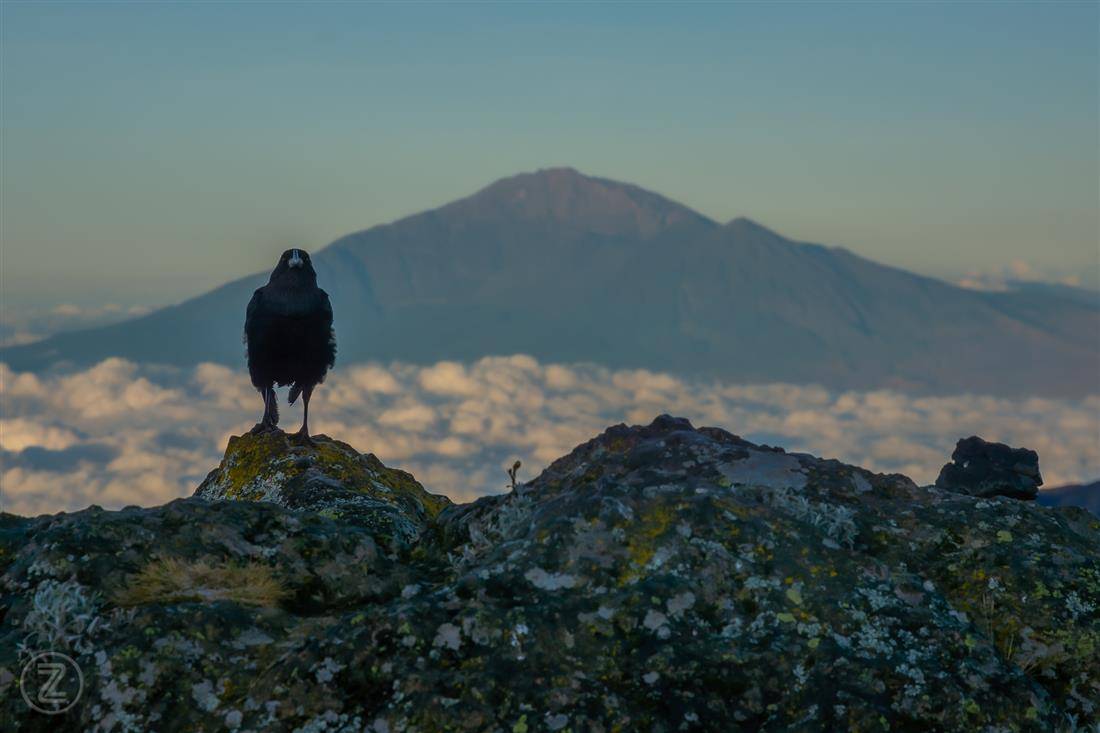
Wildlife on Mount Kilimanjaro
Mount Kilimanjaro, located in Tanzania, is home to a diverse range of wildlife species, largely due to its varying climates and habitats. The lower slopes of the mountain are inhabited by elephants, leopards, buffalos, and monkeys, while the higher altitudes are home to smaller mammals like bushbabies and duikers. The mountain also hosts a variety of bird species, including sunbirds, warblers, and the endangered Abbott’s Starling. However, due to the harsh conditions at the highest altitudes, wildlife is sparse near the summit.
If you are ever around Mount Kilimanjaro, you will be going around on a safari ride. Kilimanjaro National Park will provide you with a view of different animals in the area. However, you will get to see a wide variety of animals as you go higher for mount climbing. Not only the daytime but nighttime also serves to be the best to find some nocturnal animals in the Kilimanjaro area. Animals and birds are easily spotted on the slopes on the lower sides of the mountain.
District Zones In Mount Kilimanjaro To Find Wildlife
There are five district zones in Kilimanjaro where you can find wildlife, namely; cultivated zone, rainforest zone, Afro-alpine moorland zone, alpine desert zone, arctic zone at 800 m to 1,800 m, 1,800 m to 2,800 m, 2,800 m to 4,000 m, 4,000 m to 5,000 m, and above 5,000 m respectively.
Mammals On Mount Kilimanjaro
When you are in the lower ranges of Kilimanjaro, you will get to see several mammals like, elephant s, bush babies (galagos), cape buffaloes, black rhinos, giraffes, leopards, servals, hyenas, baboons, monkeys, antelopes, aardvarks, mongooses, porcupines, honey badgers, and tree hyraxes.
The larger animals like cape buffaloes, black rhinos, and elephants roam around the lower range. While you may spot them around the lower range of the national park, it is least likely for them to go to higher ranges which lowers the chances of you seeing them anywhere around the base camp. The dangers of being attacked by such animals around the night while ascending Mount Kilimanjaro, hence, aren’t probable. But, in exceptional cases, you might want to watch for such animals even when you are in the higher ranges, as you always have to remain safe regardless of the low chances of them being there.
Monkeys On Mount Kilimanjaro
Kilimanjaro is famous for the widest range of the rarest monkeys in the world. Old-world monkeys in the area are very common. These monkeys are often found in the rainforest belt of the wildlife reserve. The ever enthusiastic breed of monkeys called blue monkeys or diademed monkeys are always around. They are not very afraid of humans. Hence you can encounter them up close around the national park. Another common breed of monkey is the black-and-white colobus monkey. They are, however, more timid in comparison to the blue monkeys. Regardless, finding them around the Kilimanjaro area will not be as hard.
Antelopes on Kilimanjaro
You will find many types of antelopes on Kilimanjaro, including red and grey duikers, Abbot’s duikers, mountain reedbucks, common elands, klipspringers, and bushbuck. Common elands (or oryxes) are the bigger antelopes in the area. These species are 1.6m tall and can weigh up to 940 kg ranging from 400 kg. Likewise, there are extremely small species like klipspringers who only weigh a maximum of 18 kg. Klipspringers are monogamous to their mates and are nocturnal. Another amazing fact about this species is that they walk on the tip of their hooves. Similarly, the most endangered species on Kilimanjaro is Abbot’s duikers. They can only be found in Tanzania. These animals are likely to hide in their thick vegetation. They are, again, nocturnal by nature.
Chameleons On Kilimanjaro
Chameleons can be found widely on Kilimanjaro. One of the rarest types of chameleon, three-horned chameleons, are in big numbers on the lower slopes of Kilimanjaro. The female of this species does not have any horns. These chameleons are the natives only in East Africa. Kilimanjaro two-horned chameleon or Dwarf Fischer’s chameleon are found in northern Tanzania and southern Kenya. These are just as rare to find in general. However, it can be found in good numbers in Kilimanjaro.
Nocturnal Wildlife On Kilimanjaro
Nocturnal animals are the ones that are wide awake during the night time in contrast to the daytime. Some of the most common nocturnal animals on Kilimanjaro are klipspringers, bush babies, and tree hyraxes. Bush babies have the appearance of innocence because of their big and round eyes. However, they are harder to spot because of their timid nature. Tree hyraxes or tree dassies are Kilimanjaro’s most common and noisy nocturnal animals. Their screeches can be heard not just in the lower ranges but also in the upper ranges. Likewise, while they look similar to a rabbit, they are far relatives of elephants and manatees. They tend to way up to only 2 kg.
Birds On Kilimanjaro
There are about 179 different species of birds in Kilimanjaro which includes; vultures, buzzards, ravens, hornbills, turacos (Laurie), shrikes, hornbills, cuckoos, flycatchers, barbets, chats, woodpeckers, bee-eaters, and sunbirds. In the moorland area of the base camp, you will spot White-necked ravens. Another beautiful species of bird in Kilimanjaro is the African pygmy kingfisher. Abbot’s starling can be found only in some areas of Kenya and Tanzania. Therefore, if you are around the Kilimanjaro wildlife area, you will surely get a rare sighting of this bird species. Emerald malachite sunbird is terrific-looking birds that are rare but can be spotted in the Kilimanjaro area. And you will not want to miss out on the unique African pitta in Kilimanjaro.
Which Routes Should I Take To Find Wildlife On Kilimanjaro?
While there are quite many routes that you can take on your way up to the top of Kilimanjaro, there are some routes that are better than others. The most commonly taken route will be The Northern Circuit or Grand Traverse if you want to find sightings of birds and animals. A large number of animals roam around the northern part of Kilimanjaro. This gives you the option of exploring more animals and birds in this circuit. The nine-day route of the Northern circuit allows one to spot and explore various animals and birds in Kilimanjaro.
The Rongai route in the northeast also provides you with an impressive range of wildlife. The Lemosho and Machame routes are other great routes to find wildlife on Kilimanjaro. You will be ascending through the rainforests. Whatsoever, the trekking and walk-up will be gentler than you may think. The Shira route and the Marangu route are also an option for you. But, these routes have a comparatively difficult ascend and descent which makes the former routes more convenient and better options.
Do Lions Live On Kilimanjaro?
You will not encounter animals as large and dangerous as lions in Kilimanjaro. Mount Kilimanjaro has a wider range of mammals and giant animals; however, predators like lions are not present in the mountain area or the base camp either. Besides, you are safe from lion attacks even around the national park area. Whatever, you must be aware enough to find animals like elephants, monkeys, antelope, and Abbott’s Duiker in the lower ranges of Kilimanjaro.
Do Gorillas Live On Mount Kilimanjaro?
No, you will not find any gorillas on Mount Kilimanjaro. However, if you take a 1-and-a-half-hour flight to Kigali, you will find mountain gorillas there. In Kilimanjaro, there are no such primates as gorillas, though.

MOUNT KILIMANJARO TEMPERATURE
Mount Kilimanjaro, located in Tanzania, experiences a wide range of temperatures due to its elevation. At its base, the average temperature is around 70 to 80 degrees Fahrenheit (21 to 27 degrees Celsius). As you ascend, the temperature drops approximately 1 degree Celsius for every 200 meters in altitude gained. The summit, at 5,895 meters above sea level, can experience temperatures as low as -20 degrees Celsius. The temperature can also vary greatly between day and night, with nights being significantly colder.
RAIN FOREST ZONE (~800 Meters – 3,000 Meters)
From the earliest part of your trek you are going to be confronted with tropical rain forest. Humidity is high and light mist or sometimes drizzle is common. Various flora such as orchids, ferns, fig and olive trees cover this area of Kilimanjaro. You will likely see Blue and Colobus monkeys, and if you are trekking from the North-East Rongai route or Western Lemosho, Shira or Northern Circuit you may even see elephant, buffalo and large antelope.
LOW ALPINE ZONE (~3,000 Meters – 4,200 Meters)
At approximately.3,000 metres the rainforest rapidly gives way to semi-arid grasslands and moorlands, this area is known as the low alpine zone. Heather and small shrubs cover the landscape, the weather is significantly less humid and temperatures can get to sub-zero in the evening. The most prominent flora features in this zone are the Senecios and Giant Lobelias, which look like deformed palm trees. Fauna is sparse; however you will likely see crows overhead foraging for food.
HIGH ALPINE ZONE (~4,200 Meters – 5,000 Meters)
This zone is characterised by an arid desert environment that is rather inhospitable. During the day temperatures are hot and solar radiation is high (make sure to apply lots of sun-cream). At night temperatures plummet to below freezing. From this zone the slopes of Kibo and Kilimanjaro’s summit come into perfect view.
GLACIAL ZONE (5000 To 5,895 Meters)
The final zone houses the upper reaches of Kibo and Mawenzi and consists of high altitude artic conditions. Life is very scarce in this zone as oxygen levels are near half what they were on the lower reaches of the mountain. Fine glacial silt covers the slopes that reach up to Kilimanjaro’s summit and large glaciers are visible from Kilimanjaro’s crater rim. Due to the high solar radiation during the day, freezing temperatures at night, gale force winds and low oxygen levels, this zone is not one where you want to stay too long!
SNOW ON KILIMANJARO
Snow on Kilimanjaro can occur all year round, but the most common months are November through March. Here is a chart showing average snowfall by month.
WHAT IS THE TEMPERATURE AT TOP OF MOUNT KILIMANJARO?
The temperature at the summit of Mount Kilimanjaro can range from 0 to -20 degrees Celsius (32 to -4 degrees Fahrenheit). A big factor that drives the temperature at the top of Mount Kilimanjaro is the wind. The wind chill factor can make a relatively cold night, like -2 degrees Celsius (28 degrees Fahrenheit), feel like -15 degrees Celsius (5 degrees Fahrenheit). It’s worth noting that temperatures at the summit are colder at night, which is the time that most trekkers push for the summit. By late morning it can actually feel quite hot at the summit, especially on a windless clear day.
WHICH ARE THE WETTEST MONTHS ON KILIMANJARO?
The wettest months on Kilimanjaro are April and May. These are not good months to hike the mountain. Later March can also see quite a lot of rain. There is a short rainy season in November as well. The Northern side of Kilimanjaro is in a rain shadow, so if you’re limited to these months, then try the Rongai route.

Kilimanjaro Routes are the designated paths that climbers use to ascend and descend Mount Kilimanjaro, the highest mountain in Africa. There are seven main routes: Marangu, Machame, Lemosho, Shira, Rongai, Northern Circuit, and Umbwe. Each route varies in terms of difficulty, scenery, traffic, and the number of days required for the climb. The Marangu route is the most popular, often referred to as the “Coca-Cola” route, while the Machame route, known as the “Whiskey” route, is considered the most scenic. The choice of route depends on the climber’s experience, fitness level, and personal preference.
MARANGU ROUTE
The Marangu Route , often referred to as the “Coca Cola” route, is one of the most popular routes to the summit of Mount Kilimanjaro in Tanzania. Known for its relative ease compared to other routes, it offers sleeping huts along the way for climbers, and is the only route that can be hiked in five days, although six days are recommended for better acclimatization. Despite its reputation for being easier, the success rate is not as high as other routes due to the faster ascent.
MACHAME ROUTE
The Machame Route , also known as the “Whiskey” route, is one of the most popular routes to ascend Mount Kilimanjaro in Tanzania. Known for its scenic beauty, the route approaches the summit from the southwest and descends using the Mweka route, offering climbers varied and stunning landscapes. Despite its popularity, the Machame Route is considered a difficult route due to its steep trails and is recommended for more experienced climbers.
LEMOSHO ROUTE
The Lemosho Route is a popular trekking path for climbing Mount Kilimanjaro in Tanzania, known for its beautiful scenery and high success rate. It starts on the western side of the mountain and crosses over the Shira Plateau, before joining the Machame Route. The trek typically takes 7 to 8 days, allowing climbers to acclimatize to the altitude. The Lemosho Route is considered one of the most scenic routes on Mount Kilimanjaro, offering panoramic views of various sides of the mountain.
NORTHERN CIRCUITS ROUTE
The Northern Circuits Route is a popular trekking path in Tanzania, known for being the longest route to ascend Mount Kilimanjaro. It offers a complete traverse of the mountain, allowing trekkers to see every aspect of Kilimanjaro’s diverse environments. The route takes approximately nine days to complete, providing a high success rate due to its longer acclimatization period. The Northern Circuits Route is less crowded compared to other routes, offering a more solitary and serene experience.
RONGAI ROUTE
The Rongai Route is one of the less crowded paths to ascend Mount Kilimanjaro, the highest mountain in Africa. Starting from the northeastern side of the mountain near the Kenyan border, the route offers a unique wilderness experience with the possibility of spotting wildlife. It is considered one of the easier routes, with a gradual ascent that allows for better acclimatization, although it is less scenic compared to other routes. The descent is made through the Marangu Route.
UMBWE ROUTE
The Umbwe Route is one of the shortest but also the most challenging and demanding routes to reach Uhuru Peak, the highest point of Mount Kilimanjaro in Tanzania. Known for its steep and rapid ascent, it is often chosen by experienced climbers who are well-prepared for the physical and mental challenges it presents. The route offers stunning and diverse landscapes, from rainforests to moorlands, but has a low success rate due to the difficulty of acclimatization.
SHIRA ROUTE
The Shira Route is one of the six main routes used to climb Mount Kilimanjaro, the highest mountain in Africa. It is considered one of the more difficult paths due to its high altitude and steep climbs. The route starts at Shira Gate on the western side of the mountain and traverses across Shira Plateau, one of the highest plateaus in the world. Despite its difficulty, the Shira Route is known for its stunning panoramic views and diverse landscapes.
WESTERN BREACH ROUTE
The Western Breach Route is one of the most challenging and less-traveled paths to the summit of Mount Kilimanjaro in Tanzania. It involves a steep climb and potential rockfall danger, making it suitable for experienced climbers. The route approaches the summit from the west and includes an overnight stay at the Arrow Glacier camp. Despite its challenges, the Western Breach Route offers stunning views and a unique climbing experience.
CRATER CAMP KILIMANJARO: AFRICA HIGHEST CAMP
Crater Camp is a campsite located near the summit of Mount Kilimanjaro, the highest mountain in Africa. Situated at an altitude of approximately 18,800 feet, it is nestled in the mountain’s crater, next to the Furtwangler Glacier. The camp is not frequently used due to its high altitude and the associated health risks, but it offers climbers a unique opportunity to explore the glaciers and ash pit of Kilimanjaro. It is typically used by climbers on longer routes who want to spend an extra day acclimatizing or exploring the summit area.
KILIMANJARO ASH PIT : THE CENTER OF THE VOLCANO
The Kilimanjaro Ash Pit is a volcanic crater located at the peak of Mount Kilimanjaro, the highest mountain in Africa. It is part of the dormant Kibo volcano, one of the three volcanic cones of Mount Kilimanjaro. The ash pit is approximately 140 meters deep and 360 meters wide, and it is considered one of the most perfectly formed volcanic craters in the world. Despite the harsh conditions at the summit, the ash pit is a popular destination for climbers and adventurers.
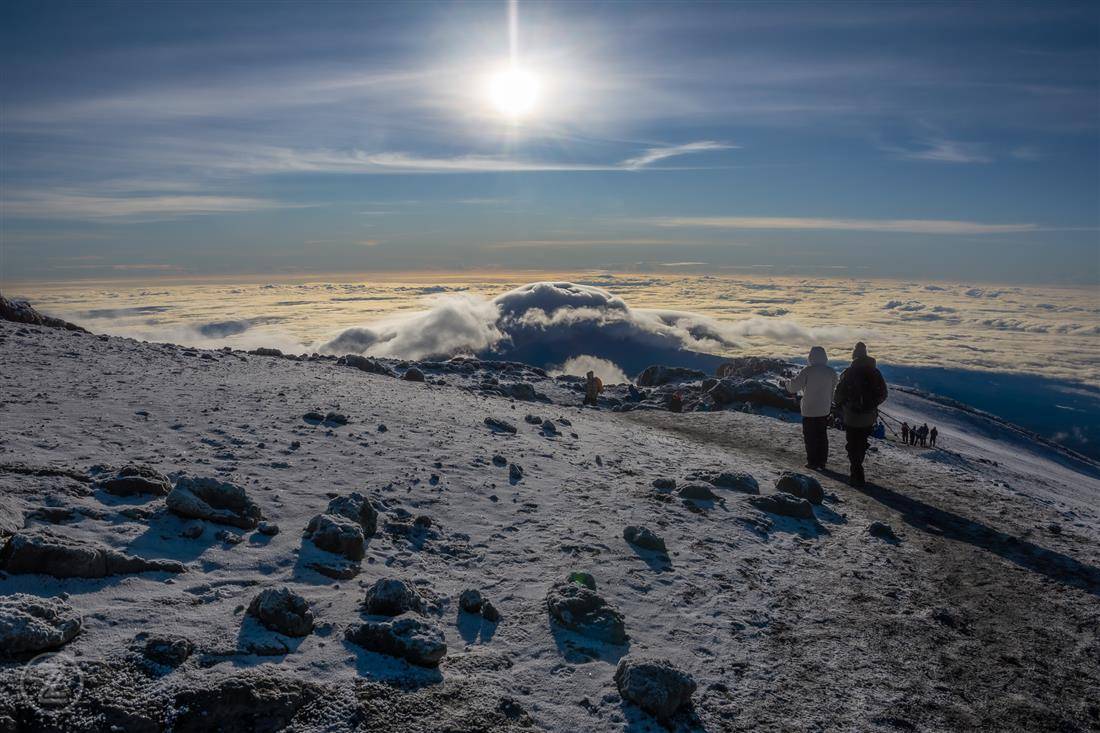
MOUNT KILIMANJARO DIFFICULTY LEVELS
Mount Kilimanjaro, located in Tanzania, is the highest mountain in Africa and is a popular destination for climbers. However, the difficulty of climbing Kilimanjaro should not be underestimated. Despite not requiring technical climbing skills, the trek is physically demanding due to the high altitude, low temperature, and occasional high winds. The main challenge for most climbers is altitude sickness, which can be life-threatening if not managed properly. Proper acclimatization, physical preparation, and a slow ascent can increase the chances of a successful climb.
The trek involves daily hiking for 5 to 8 hours, with significant elevation gains of 1,000 to 2,000+ feet (305 to 610+ meters) per day. This demanding level of trekking will be experienced throughout the trip, and you should be in excellent physical shape to undertake the climb. Before attempting the trek, it is recommended to engage in regular workouts, including at least 4 one-hour sessions per week. Ideally, some of these workouts should involve hiking with a small backpack, gradually increasing the duration and altitude gain if possible.
The distance covered on the Kilimanjaro trek is not the main challenge; a seven-night trek can add up to as little as 150 kilometers or 100 miles, and about half of it is optional. The focus lies on the elevation gain and acclimatization process. Each day on the trail usually starts with a 2-4 hour morning walk, covering most, if not all, of the distance between camps. In the afternoons, trekkers are encouraged to participate in additional acclimatization treks, which take them higher in altitude before returning to camp to sleep at a lower altitude. This acclimatization process helps the body adjust to the altitude and reduces the risk of altitude sickness. These treks typically last for 2-5 hours.
The summit day of Mount Kilimanjaro is particularly challenging, involving around 12-15 hours of continuous walking to reach the top. It’s a long and grueling day, often with cold temperatures and difficult terrain.
For a seven-night trek, you can expect a total of around 56 hours of walking. However, the average walking speed tends to be quite slow due to the high altitude and challenging conditions.
Mount Kilimanjaro Elevation Gain
Mount Kilimanjaro, located in Tanzania, is the highest mountain in Africa and the highest single free-standing mountain in the world, with an elevation gain of approximately 4,900 meters (16,100 feet) from its base to the summit. The mountain’s peak, known as Uhuru Peak, stands at 5,895 meters (19,341 feet) above sea level. The elevation gain is significant and challenging, making acclimatization crucial for climbers to avoid altitude sickness.
1. Northern Circuit: 2,100 M (6,890 Ft) At Lemosho Gate
This is the longest route in Kilimanjaro. Yet, it is also the most common route taken by travelers. The Northern circuit route will take up to 9 days of trekking, extending towards the Lemosho route to the Shira plateau. The Lemosho route is west, while the travelers must cross the Lava Tower and head north to the Rongai route. When you take the Northern route, you should climb from the eastern side and descend from the southern side of the Mweka route.
The Northern Circuit may be one of the most commonly chosen and longest routes, but it is not for those with bad health and fitness. This route might lead to difficulty and a lot of tiredness which is not always the best experience for all. If you want to take a route where you can go slow in case any respiration problem arises in the higher route, however, then this route might be it for you.
2. Lemosho Route: 2,100 M (6,890 Ft) At Lemosho Gate
The Lemosho route at 2100m at Lemosho Gate is probably one of the best routes anyone can take when they are looking to summit Mount Kilimanjaro. This is one of the most scenic yet convenient routes of all time. And it has been highly preferred by travelers as well. Moreover, the chances of altitude sickness lessen when traveling from the Lemosho route because it will take you eight days which is good enough to familiarize yourself with the altitude sickness probable as the altitude increases.
The Lemosho route is also famous for the forests you will go through before you summit the peak of Kilimanjaro. The route is around 70 km or 42 miles. It joins with the Machame route. And, it is not likely for you to take more than 7 to 8 days at maximum if you trek continually, given the fact that you are not suffering from any respiratory diseases or accidents along the way, which is a lot less likely in this route.
How hard is the Lemosho route, though? Well, the answer to this is quite simple. The Lemosho route is probably the easiest route to Kilimanjaro. The longer route serves for better acclimatization. One of the downsides for many travelers, whatsoever, might be that they have to go up to the Barranco Wall, and the mountain only gets steeper and steeper until summited.
3. Shira Route: 3,414 M (11,200 Ft) At Morum Barrier
The Shira route has always been compared to the Lemosho route. But a major difference between these two is that the Shira route is a far less advanced version of the Lemosho route. While the Lemosho route makes it easier for travelers to get proper acclimatization, the Shira route makes it impossible to get better acclimatization, with the summit ending at six days. Most travelers tend to suffer the most on this route. Moreover, the Shira route starts higher from the west at Morum Barrier. In comparison to other easier routes, including the Lemosho route, the Shira route requires you to get used to the changing altitudes much quicker due to the high altitude it begins its route with. It would not be wrong to call the Lemosho route a more developed version of the Shira route, though.
4. Machame Route: 1,640 M (5,380 Ft) At Machame Gate
After the Lemosho route, the Machame route is the easiest route a traveler can take. One of the pros of the Machame route is that it does not take long to climb the mountain and be able to summit it, even for beginners. Though inexperienced backpackers might not have the easiest time climbing the mountain, the Machame route at Machame Gate is probably one of the best for proper acclimatization. The length of this route is 62 km or 37 miles. And since the route is short, it will take around six days to trek through this route. Beginners are recommended to start from the Machame route.
5. Marangu Route: 1,843 M (6,047 Ft) At Marangu Gate
Marangu route approaches the peak of Kilimanjaro from the southeast. This route is probably the easiest as it is also the shortest taking only 5-6 days. The time taken to summit through this route is just around five days. Whatsoever, the benefit might also become a back draw for many as this route will lessen the chances of acclimatization for people. Speaking of the length, the route is 72 kilometers (45 miles) long. Sadly, this route has only a 50% success rate which is quite low considering the success rates of routes like Lemosho. This is mostly due to the lack of time travelers get to adjust their respiration as the altitude changes quickly and fast.
6. Rongai Route: 1,950 M (6,398 Ft) At Rongai Gate
When you take the Rongai route, you climb the mountain from the northeastern side. The success rate of climbing from the Rongai route is 80% which is quite impressive. And it will take travelers about 6 to 7 days at most to climb the mountain through this route. You also get to experience the wilderness of Kilimanjaro through the Rongai route.
7. Umbwe Route: 1,800 M (5,906 Ft) At Umbwe Gate
The Umbwe route is one of the shortest routes to climb Mount Kilimanjaro. But, this does not play any significance in the summit’s success. Travelers will likely suffer from oxygen problems and hardships on the Umbwe route. The Umbwe route is probably one of the riskiest, mostly because it takes only five days. The shortness contributes to bad acclimatization and hence higher risks of suffering from health mishaps. Among all the other elevation gains of Mount Kilimanjaro, this is the most dangerous.
KILIMANJARO WEATHER FORECAST
Mount Kilimanjaro’s weather is highly variable due to its elevation and location near the equator. The mountain experiences a range of climates, from tropical at the base to arctic conditions at the summit. The lower slopes are warm and humid, while the higher altitudes are cold and dry. Rainfall is most common during the two rainy seasons, from March to May and November to December. The best times to climb are during the dry seasons, from June to October and January to February. Temperatures at the summit can drop below freezing, especially at night.
At the base of the mountain, the weather is typically warm and humid, with temperatures ranging from 20°C to 30°C (68°F to 86°F). As climbers ascend, the temperature decreases and the weather becomes colder and more challenging.
On the lower slopes, climbers might experience a temperate climate with temperatures ranging from 10°C to 20°C (50°F to 68°F). As they climb higher, they enter the alpine zone where temperatures drop even further. In the alpine zone, temperatures can range from -10°C to 10°C (14°F to 50°F).
As climbers reach the summit, the weather conditions become extremely harsh. The summit area is characterized by freezing temperatures, strong winds, and low oxygen levels. Temperatures at the summit can drop as low as -20°C (-4°F) or even lower, especially during the night.
Mt Kilimanjaro is Big. If fact, it is so big, that it changes the climate around itself and has it’s own weather system. Mt Kilimanjaro, in terms of weather, is a huge huge obstruction to the trade winds that bring along with it, precipitation. When moisture laden winds encounter an obstruction, there are two ways they can go – around the obstruction or over it. It is usually a combination of both. Mt Kilimanjaro, however, is so big that it forces these winds to go higher, which results in them cooling. These form the basis of rain or snow on and around the mountain. These patterns are studied in detail by scientists and, interestingly, paragliders.
Best Time To Climb Kilimanjaro
The best time to climb Mount Kilimanjaro is during its two dry seasons, January to mid-March and June to October. During these periods, the weather is generally more predictable and the risk of rainfall is lower, making the climb less challenging. However, it’s important to note that the mountain can be climbed at any time of the year, and weather can be unpredictable at high altitudes.

HOW FIT DO YOU NEED TO BE TO CLIMB KILIMANJARO?
Climbing Kilimanjaro is graded strenuous and you should be in good physical fitness and have experience of multi-day trekking or walking trips prior to undertaking a Kilimanjaro climb. Most days involve 4 – 7 hours of walking at altitude and the summit day is very strenuous with most people walking for between 14 – 18 hours. Even for fit people, the effects of altitude can make the climb very tough.
The most challenging day of your Kilimanjaro Climb, regardless of which Kilimanjaro route you choose, will be the summit day. Because the time for acclimatisation is limited most people will suffer from mild Acute Mountain Sickness and this combined with a very long day of walking will make it one of the toughest days of your life.The trails on Kilimanjaro are generally clear and well maintained, although they can be slippery lower down and, you will be walking over shale closer to the summit.
The Barranco Wall on the Machame and Lemosho routes involves an easy scramble for 1.5 hours and the final climb to the summit is on loose scree and rock and can be snowy/icy. The climb is a hike so no specialist climbing skills are necessary. You must have done extensive hill-walking or aerobic exercise in the run-up to your Kilimanjaro Climb. If you do not currently enjoy a good level of fitness it may take many months of training to reach a suitable level of fitness to enjoy the walk. It is important to start slowly and gradually increase your fitness. Try to exercise for between 30 and 45 minutes three times per week (walking, running, cycling or swimming) and go for long walks on the weekends which should include some hills. A good local gym will be able to draw up a fitness program for you on request.
You must consult your doctor prior to embarking on a fitness program or this trip if your answer is YES to any of the following questions:
- Has your doctor ever told you that you have a heart condition?
- Have you had any pains in your chest or heart?
- Do you frequently lose your balance, feel faint or have spells of severe dizziness?
- Has your doctor has ever said that your blood pressure is too high?
- Do you have a bone or joint problem that could be made worse by a change in your physical activity?
- Are you taking any prescription medications, such as those for heart problems, high blood pressure, high cholesterol or diabetes?
- Do you know of any other reason why you should not engage in physical activity?
- Are you pregnant?
What’s The Best Training For The Kilimanjaro Plan?
You should do at least 6-8 weeks of training before embarking on your Kilimanjaro trek. The best type of training is long-distance mountain trail walking. If you can’t get out into the mountains though, then aerobic gym workouts (running, cross-training, swimming, etc.), that combine some strength work (especially leg workouts) are a good bet. See our detailed Kilimanjaro training guide.
What Is The Minimum Age To Climb Kilimanjaro?
The minimum age to climb Mount Kilimanjaro is 10 years old, as set by the Kilimanjaro National Park. However, many tour operators recommend that climbers be at least 12 to 14 years old due to the physical demands and potential health risks associated with high-altitude trekking. Ultimately, the decision is dependent on the child’s physical fitness, mental maturity, and previous hiking experience.
How Long Does It Take To Climb Kilimanjaro?
Climbing Mount Kilimanjaro typically takes between five to nine days, depending on the route chosen. The journey involves trekking through five different climatic zones, with the final ascent often starting around midnight to reach the summit by dawn. Adequate time is needed for acclimatization to prevent altitude sickness. The quick descent usually takes one to two days.
Available Routes
Route distance, number of days, marangu route, 64 km (40 miles), umbwe route, 37 km (23 miles), rongai route, 65 km (23 miles), machame route, 49 km (30 miles), lemosho route, 66 km (35 miles), northern circuit, shira route, 56 km (33 miles).
If you are looking for a short-lasting adventure in the mountain the Marangu and Umbe routes are the best options, with an average expedition of 5 days, Your conquest of the Kilimanjaro mountain will be complete within the 5 days. However, if you are not an experienced mountaineer or you haven’t done high-altitude trekking, both of these routes can be a bit too much for you.
Only for mountaineers enthusiasts who have recently climbed a high-altitude mountain and are with the element of the pre-acclimatization process. These short routes with relatively quicker ascend and descend won’t put much toll on their body as it used to acclimatization process.
Both Marangu and Umbwe are quick-paced routes with short periods to get accustomed to the acclimatization process. Thus, if you are relatively new to climbing and don’t share many experiences with similar high-altitude adventures, it will be better if you stick with the longer routes with enough period to adapt to the significant elevation of the mountain.
On the other hand, the Rongai, Machame, Lemosho, Northern Circuit, and Shira routes are the longer alternative routes lasting from 6 to 9 days. These five routes give enough time for the climbers to get accustomed to the acclimatization process. So if you are new to trekking and climbing adventures, taking these longer alternatives will increase the chances for successful scaling of Mt. Kilimanjaro.
Is It Hard To Climb Mount Kilimanjaro?
Climbing Mount Kilimanjaro is considered a challenging feat, but it does not require any technical climbing skills or special equipment, making it accessible to non-professional climbers. The main difficulties come from the high altitude, which can cause altitude sickness, and the physical endurance required for the long trek. The success rate varies depending on the route and the climber’s physical condition, but proper preparation, acclimatization, and a good guide can significantly increase the chances of reaching the summit.

ALTITUDE SICKNESS PREVENTION ON MOUNT KILIMANJARO
Altitude sickness prevention on Mount Kilimanjaro involves a combination of proper acclimatization, staying hydrated, eating a balanced diet, and avoiding alcohol and tobacco. Climbers are advised to ascend slowly, allowing their bodies to adjust to the decreasing oxygen levels. Medications like Acetazolamide can also be used to prevent and reduce the symptoms of altitude sickness. It’s crucial to listen to your body and not push beyond your limits. If symptoms of altitude sickness occur, it’s important to descend immediately to a lower altitude.
ALTITUDE ZONES
High altitude: 2400m to 4200m.
This zone covers the majority of all treks, except the first half day on some of the lower starting routes. Here you can expect to be seriously impacted by the effects of altitude in terms of workload and stamina and you may start to feel mild symptoms of sickness such as headaches and nausea.
Very high altitude: 4200m to 5400m
This zone covers the night before the summit attempt on all routes and, on better routes, one or two acclimatization hikes on earlier days. Here the effects of altitude are starting to become more acute, walking at anything other than a snail’s pace is quickly tiring. Most people will now be experiencing adverse symptoms unless they are taking supplementary oxygen. Some people cannot handle this altitude at all and need to be removed from the mountain.
Extreme altitude: above 5400m
The levels commonly known as “the death zone” cover much of the summit attempt, with Uhuru Peak at 5895m. At these altitudes your body is operating below its respiratory equilibrium and is unavoidably deteriorating, if you stayed up here too long without additional oxygen you would die. You are making a run for the summit to get down before you succumb to the adverse effects. If you have supplementary oxygen then you can take your time and will be more likely to appreciate what’s going on around you.
TYPES OF ALTITUDE SICKNESS
There are three different types of altitude sickness. The first is the most common and can often be managed without recourse to evacuation from the mountain. The other two are much more serious and tend to lead to immediate removal to lower altitudes
During a trek on Kilimanjaro, it is likely that more than 75% of trekkers will experience at least some form of mild altitude sickness caused by a failure of the body to adapt quickly enough to the reduced level of oxygen in the air at increased altitudes.
This type of altitude sickness is known as altoxia. This term is used almost exclusively on Kilimanjaro since this is the only commonly trekked mountain where these extreme altitudes are encountered so quickly.
Altoxia is most commonly experienced on the summit approach, but can also occur earlier in a trek, especially during day hikes to higher altitudes, in which case it should recede as the trek overnights at a lower altitude.
Altoxia can have many different symptoms, the most common being headaches, light-headedness, nausea, loss of appetite, vomiting, and mild swelling of the face, ankles, and fingers. These symptoms can be rather unpleasant, add a new dimension to the adversity faced by trekkers, and can take the shine off the experience. However, in this mild form, altoxia does not generally have serious consequences and normally disappears within 48 hours.
Aspirin is recommended for headaches because it also thins the blood, improving circulation and oxygen delivery to the body. Strong painkillers are not recommended as they can suppress respiration.
The symptoms of altoxia are commonly relieved or even eliminated by the use of an ALTOX Personal Oxygen System or by taking Diamox, more on these methods below.
One unusual but not usually so serious a problem is Cheynes Stokes Breathing, which involves waking up at night gasping for breath. Trekkers should not panic about this, it is simply because the slow breathing at rest is not able to pull in enough oxygen from the thin air. A period of panting should restore you to normality.
ACUTE MOUNTAIN SICKNESS
If the symptoms of altoxia become persistent or severe, then there is a danger of acute mountain sickness developing. This is much more severe and must be treated by immediate removal to lower altitudes. There are two distinct forms of this sickness …
HAPE: High Altitude Pulmonary Oedema: “Water On The Lungs”
High Altitude Pulmonary Oedema is characterized, by breathlessness at rest, a very high pulse, a crackling sound in the chest, and the coughing of pink fluid (sputum). This condition is rapidly fatal unless the patient experiences immediate descent. There are no drugs to cure the condition and no possibility of re-ascent following an episode.
HACE: High Altitude Cerebral Oedema: “Swelling Of The Brain”
High Altitude Cerebral Oedema is a combination of two or more of the following: Very severe headache, severe loss of balance, mental confusion, and repeated vomiting. This condition is rapidly fatal unless the casualty experiences immediate descent. There are no drugs to cure the condition and no possibility of re-ascent following an episode.
Treatment Of HAPE And HAPE
Trekkers should not be too scared by all this talk, but it is essential to understand that if you push on up the mountain or remain at the same altitude with HAPE or HACE then you will probably die. People do. The only correct resolution is immediate descent.
Our guides are all very experienced in dealing with the problems of altitude. They will be constantly monitoring you for symptoms.
It may be necessary for you to descend to a lower altitude until you recover or even to abandon the trek in the interests of safety. The decision of the guide in such situations is final.
AVOIDING ALTITUDE SICKNESS
Altitude sickness, also known as Acute Mountain Sickness (AMS), can be avoided by taking several precautions. Gradual ascent is key, allowing your body time to acclimatize to the decreased oxygen levels at higher altitudes. Staying hydrated, avoiding alcohol, and eating a high-carbohydrate diet can also help. It’s also recommended to take rest days during your ascent, and medication like Acetazolamide can be used for prevention. If symptoms of altitude sickness such as headache, dizziness, or shortness of breath occur, it’s crucial to descend to a lower altitude immediately.
High water intake
A fluid intake of 4 to 5 effects per day is recommended. Fluid intake improves circulation and most other bodily functions, but does not increase fluid leakage from the body. Thirst should not be an indicator of proper fluid intake, if your urine is clear then you are drinking enough.
The pace at which you walk is a critical factor on all routes. Unless there is a very steep uphill section your breathing rate should be the same as if you were walking down a street. If you cannot hold a conversation you are walking too fast. Breathing through the nose for the first 2 days of the trek will limit the pace. Walk softly, allowing your knees to gently cushion each pace. “Pole pole” (slowly slowly) is the phrase that will echo around your head as it is repeated to you by the yourliter guides.
Walk high sleep low
If you have enough energy and are not feeling the acclimatization of altitude, then you might take an afternoon stroll further up the mountain before descending to sleep. All our routes already include these recommended acclimatization walks whenever possible.
Personal Oxygen Systems
An ALTOX Personal Oxygen System is a set of equipment that provides a low-dosage, oxygen supply to a trekker on the mountain. Whereas drugs such as Diamox allow you to push your body harder in a high altitude environment, an ALTOX Personal Oxygen System serves to lower the effective altitude, causing your body to have to work less hard. It is therefore much safer and more predictable. All trekkers using an ALTOX Personal Oxygen System should experience considerable relief from the symptoms of extreme altitude, have greater energy, and experience less of the mental haziness that can impair the summit experience, massively increasing the overall levels of enjoyment of the trek. Trekkers using these systems increase their chances of reaching the Crater Rim by 4% and going on to the summit by a remarkable 7%.
Around 37% of all our trekkers now use ALTOX Personal Oxygen Systems, the number rising to 63% on the shorter 5 and 6-night routes. Of course, the additional cost is a considerable factor for some trekkers, so if you choose not to take oxygen then we are more than happy to support you in that decision. Whilst there can indeed be an initial feeling on the part of trekkers that using an oxygen system might be a little over the top, once on the mountain and starting to suffer the first mild symptoms of altoxia, these concerns quickly fade and the vast majority of trekkers are delighted that they have decided to go with oxygen.
On the summit attempt itself, we had anticipated that trekkers from other groups may view those using oxygen rather disparagingly, but in reality, the dynamic seems to be rather different. Everyone without oxygen suffers to such an extent on those nighttime summit pitches that they all want to know why on earth no one told them that they should be using oxygen. As one of our head guides put it: “If we had a little stall renting oxygen kits out at the high camps everyone would have one, no matter what the price!
It is very important to note that we cannot guarantee the availability of ALTOX Personal Oxygen Systems. In peak season we sometimes do not have enough systems to meet demand; the economics make it impossible for us to stock in sufficient numbers. It is therefore essential that you book as far in advance as possible to maximize your chances.
The ALTOX equipment
An ALTOX Personal Oxygen System works by supplying oxygen directly into the nostrils through a small plastic tube, or nasal cannula, connected to a small oxygen cylinder carried in a backpack. The clever part of the system is the controller, or pulse dose meter, which detects when the user is commencing an inward breath and delivers a small and precise dose of oxygen during the first part of the intake, ensuring that the valuable oxygen reaches the deepest parts of the lungs. This method of dosing makes it possible for each oxygen cylinder to last for 7 to 10 hours, rather than the usual 40 to 50 minutes.
ALTOX Personal Oxygen Systems are serious bits of kit, with a proven track record in extreme environments. They have been used since 2007 by American, British, and other armed services, on successful ascents of Mount Everest, by Chinook helicopter pilots and crews during high-altitude special forces deployments, by extreme altitude skydivers and para-gliders, by pilots of unpressurized light aircraft and by pilots of military aircraft in the event of pressurization systems failure.
Each ALTOX Personal Oxygen System comprises …
2 x lightweight oxygen cylinders 1 x regulator 1 x pulse dose meter 1 x inline flow indicator 1 x tubing with nasal cannula
The kit that we provide contains two oxygen cylinders, each weighing 3kg or 6.6lbs. The first cylinder is usually used partly during a practice session during the middle part of a trek and on the evening of the summit attempt. The second cylinder is usually then used for the summit attempt itself. If you are not acclimatising well on the first few days of the trek you can also use some of the oxygen whilst resting at the lower camps to ease your acclimatisation. The kits are carried by the porters on all days when they are being used.
ALTITUDE DRUGS
Altitude drugs, also known as altitude sickness medications, are used to prevent or treat the symptoms of altitude sickness. This condition can occur when someone ascends to high altitudes too quickly. The most common altitude drug is Acetazolamide (Diamox), which works by increasing the amount of bicarbonate excreted in the urine, thus making the blood more acidic and stimulating breathing, improving oxygenation. Other drugs like Dexamethasone and Nifedipine are also used to treat severe cases of altitude sickness. These medications should be used under the guidance of a healthcare professional.

What are Emergency Oxygen Systems?
Emergency Oxygen Systems are simply cylinders of compressed oxygen that can be used by trekkers who are starting to show symptoms of altitude sickness and need to be removed from the mountain. They are not used to keep trekkers on the mountain, but only in the event of evacuation.
Emergency Oxygen Systems should not be confused with ALTOX Personal Oxygen Systems. An ALTOX Personal Oxygen System is designed to provide oxygen at low dosages to assist a trekker in continuing their Kilimanjaro climb. An Emergency Oxygen System provides full-flow oxygen to a trekker suffering from acute symptoms as part of their evacuation from the mountain. ALTOX Personal Oxygen Systems can easily be converted for use as Emergency Oxygen Systems by bypassing the pulse dose meter. Still, Emergency Oxygen Systems cannot be converted into ALTOX Personal Oxygen Systems.
Are Emergency Oxygen Systems needed?
For many years we did not carry Emergency Oxygen Systems as part of our standard kit on the mountain, although we have always been able to provide them as an optional paid extra. The main pressure to carry these systems comes from the fact that some of the large charity outfits have started to take them as standard, largely because they have much more mixed clients, some of whom are not particularly well suited to the rigors of the mountain. Some of our competitors have followed suit and now offer emergency oxygen systems as standard. But we continue to advocate that Emergency Oxygen Systems are not essential. Since starting our Kilimanjaro operations in 1999 we have never encountered a situation where one was needed. In all cases, the best and most expedient solution to altitude sickness is early detection and removal to lower altitudes.
Deaths On Mt.Kilimanjaro
Mount Kilimanjaro, located in Tanzania, is the highest peak in Africa and a popular destination for climbers around the world. Despite its popularity, it can be a dangerous endeavor, with an estimated 3-7 climbers dying each year. The primary causes of death are altitude sickness, falls, and hypothermia. The exact number of deaths is difficult to determine due to the lack of a centralized reporting system. Despite the risks, thousands of climbers attempt the trek each year, drawn by the mountain’s beauty and the challenge it presents.
Have People Died On Mt. Kilimanjaro?
Yes, people have died on Mount Kilimanjaro. Despite being considered a “walk-up” mountain, Kilimanjaro is not without its dangers. Altitude sickness is the most common cause of death, but other risks include hypothermia, falls, and other medical conditions. The exact number of deaths is not known, but estimates suggest an average of 3-7 deaths per year among climbers.
Causes Of Death On Mt. Kilimanjaro
Deaths on Mt. Kilimanjaro are relatively rare, but when they do occur, they are most commonly caused by altitude sickness, also known as Acute Mountain Sickness (AMS). This condition can lead to potentially fatal complications such as High Altitude Pulmonary Edema (HAPE) or High Altitude Cerebral Edema (HACE). Other causes of death include hypothermia, falls, and underlying health conditions that can be exacerbated by the extreme conditions on the mountain.
Kilimanjaro Death Zone
The Kilimanjaro Death Zone refers to the area above 8,000 feet on Mount Kilimanjaro where the oxygen levels are significantly lower, making it difficult for humans to survive for extended periods. The reduced oxygen and pressure can lead to altitude sickness, hypothermia, and other life-threatening conditions. Despite the risks, many climbers attempt to reach the summit each year, with some unfortunately succumbing to the harsh conditions of the Death Zone.
How Safe Is It To Climb Mount Kilimanjaro?
Climbing Mount Kilimanjaro is generally considered safe, especially when compared to other high-altitude climbs. However, it is not without risks. The most common danger is altitude sickness, which can be life-threatening if not managed properly. Other risks include hypothermia, falls, and injuries from rock slides. It is highly recommended to climb with a reputable guide service, stay properly hydrated, and acclimatize to the altitude gradually to mitigate these risks. Despite these precautions, the climb should only be undertaken by individuals who are physically fit and well-prepared.
How To Avoid Death In Mount Kilimanjaro?
To avoid death on Mount Kilimanjaro, it’s crucial to prepare adequately before the climb. This includes physical training, proper acclimatization to high altitudes, and ensuring you’re in good health before the trip. It’s also important to have the right gear, stay hydrated, eat well, and follow the guidance of experienced guides. Recognizing and promptly addressing symptoms of altitude sickness can be life-saving. Lastly, always inform someone about your climbing plans and expected return date.
BOOK YOUR KILIMANJARO CLIMB AS EARLY AS POSSIBLE
Lead Time and Peak Seasons: The usual lead time for booking a trek on Mount Kilimanjaro is 2-4 months. However, for peak season treks (Dec, Jan, Feb, Jul, Aug, and Sep), it’s recommended to book even further ahead, as popular months tend to fill up quickly.
Getting Started: Initiate the booking process by having a conversation with the trek organizers through LiveChat or phone. This discussion will help you decide if the trek is right for you. After this initial chat, you’ll receive a detailed quotation via email.
Securing Your Spot: To confirm your participation, a 30% deposit of the total tour price (around 600-700 USD) is required. Payment can be made via wire transfer or cash.
Timing: It’s advisable to book your trip 3-6 months in advance, especially if you plan to travel during high seasons (June to the end of October, December to February).
- Flexible Flight Tickets: Given the unpredictability of international treks, consider booking flexible flight tickets that can be rescheduled if needed.
- Alternative Flying Options: If flights to Kilimanjaro International Airport are costly, you can explore alternative routes, like flying to Nairobi and taking a bus to Moshi. Ensure to factor in visa costs for both Kenya and Tanzania.
- Applying for a Visa: Obtaining a Tanzanian visa is straightforward through the E-Visa Immigration Online portal . You can also obtain a visa upon arrival.
Private Expeditions: The treks are organized as private expeditions for you and your travel partner(s). If you wish, you can create your own group with friends.
Flexibility in Itinerary: Private treks allow for itinerary customization. The itinerary can be adjusted to suit your preferences and stamina, making the experience more tailored to your needs.
Cultural Differences: Traveling to a different part of the world comes with cultural differences. It’s important to be prepared for varying standards and embrace the contrasts in culture, driving, accommodations, and more. Local guides are well-trained but may have different standards from Western leaders.
KILIMANJARO CLIMB AND TANZANIA SAFARIS
The Kilimanjaro climb and safari package is a popular tourist package that offers a thrilling adventure in Tanzania. It typically includes a guided climb to the summit of Mount Kilimanjaro, the highest peak in Africa, followed by a wildlife safari in the Serengeti National Park or other nearby reserves. The package often includes accommodation, meals, park fees, and transportation, providing a comprehensive experience of both the stunning natural landscapes and diverse wildlife of East Africa.
What Are The Best Kilimanjaro Guidebooks?
There are all very interesting and useful books and guidebooks that have been written on Mount Kilimanjaro. The following books should give you a feel for what the trip will be like. Your local library is also a good resource.
- Stedman, Henry, Kilimanjaro: The Trekking Guide to Africa’s Highest Mountain, 4th edition. Trailblazer Publications.
- Ridgeway, Rick, The Shadow of Kilimanjaro, On Foot Across East Africa. Henry Holt Publishers.
- Salkeld, Audrey and David Breashears, Kilimanjaro: Mountain at the Crossroads. National Geographic Society.
- Withers, Martin B., and David Hosking, Wildlife of East Africa. Princeton University Press.
- Stevenson, Terry, and John Fanshawe, The Birds of East Africa: Kenya, Uganda, Rwanda, Burundi, Princeton Field Guides, 2002.
As for the other resources :
Mount Kilimanjaro National Park Website : This is likely the official website of Mount Kilimanjaro National Park, where you can find detailed information about the park, its history, geography, various routes, permits, regulations, and more. It’s a valuable resource for anyone planning a visit to the park.
Kilimanjaro National Park – UNESCO World Heritage Centre : This indicates that Mount Kilimanjaro National Park is recognized as a UNESCO World Heritage Site. This recognition signifies its outstanding cultural or natural value to humanity.
Acute Mountain Sickness – MedlinePlus Medical Encyclopedia : Acute mountain sickness (AMS) is a condition that can affect individuals at high altitudes, including those climbing Kilimanjaro. This medical encyclopedia provides information about the symptoms, prevention, and treatment of AMS, which is important for climbers to be aware of.
KPAP – Kilimanjaro Porters Assistance Project[ KPAP ]is a nonprofit organization, that assists porters of the climbing companies that voluntarily collaborate with their Partner for Responsible Travel Program. To understand the reason why they exist or what they are trying to achieve, it is essential to know about the Porters of Kilimanjaro and their lives.
TANZANIA VACCINATIONS
Tanzania is still a developing nation and as such there is still a lot to be done for Public Health. What this means for you, dear traveler, is a pre-emptive strike against pathogens and germs that threaten to mess with your health and your holiday.
The best way by far is to visit your doctor about six weeks before your trip and ask them about the inoculations and vaccinations required for Tanzania . This ensures that you will get the latest information about the health conditions there and be prepared for it! Briefly, these are the vaccinations you should worry about:
- Yellow Fever: especially important if you are coming from an area where the disease is endemic or commonly found. These include large swathes of Africa and South America. Plan because even if your flight is transiting such a country, you will have to show your yellow fever certificate, without which you will not be able to enter the country. The yellow fever vaccination and certificate cost about $100 in the USA. This varies widely from place to place and is dependent on whether you have insurance. If you have insurance, the same shot can cost between $10 to $40 and may range from $120 to $300 if you do not have insurance. The same vaccine costs about £50 in the UK to about €40 in Germany. It is important to note that Yellow fever is the only disease that requires proof of vaccination from travelers as a condition for entry to certain countries. But the silver lining is that, as of 2016, the immunization lasts for your lifetime and you do not require a booster dose at any time.
- Typhoid: Usually occurs when you consume contaminated food or water. If you get typhoid, you will feel drained of energy and have headaches and diarrhea. The vaccination for Typhoid provides immunity for up to three years.
- Hepatitis A: Spread by contaminated water. The vaccine is usually combined with the one for Typhoid. Immunity lasts for a year unless a booster dose is taken, which extends it for up to twenty years.
- Tetanus: Highly recommended for Tanzania! This vaccine is usually given as a part of the DPT vaccine, which also covers Diphtheria and Whooping Cough. Most children are vaccinated against this. Do check with your doctor if you need a booster dose.
- Polio: One of the most commonly administered vaccines in childhood, there is a high probability that you have already been vaccinated against this. Immunization lasts for life.
- Meningitis: A vaccination lasts about 5 years, so if you haven’t had a shot in the last 5 years, get one before your trip.
- Rabies: Highly recommended if you plan to take a safari, or interact with animals in general.
CLIMBING KILIMANJARO WITH A LOCAL GUIDE
Climbing Kilimanjaro with a local guide is an adventurous and enriching experience. The local guides, being well-acquainted with the terrain and weather conditions, provide invaluable assistance and insights throughout the journey. They lead climbers through various routes, each offering unique landscapes and challenges. These guides are also trained in emergency procedures and altitude sickness management, ensuring the safety of climbers. Moreover, their knowledge of local flora, fauna, and culture enhances the overall trekking experience, making the climb not just a physical challenge, but also a cultural immersion and learning opportunity.
Getting Kilimanjaro International Airport
The trip begins with pick-up at Kilimanjaro International Airport, located between Arusha and Moshi. The most convenient flight is KLM direct from Amsterdam, but other connections may be made through Nairobi, with a short flight to Kilimanjaro. The leader will guide travel plans once you are approved for the trip. Please do not make nonrefundable travel arrangements until notified to do so by the trip leader.
You must have a passport valid for at least six months beyond the date of entry into Tanzania. A Tanzania visa is also required, and details on how you apply for that will be provided once you are approved for the trip.
Climb Kilimanjaro with the Experts | Local Guides Provided | Low Deposits - Book Now.
Choosing the right Best Kilimanjaro guide companies is equally important as selecting the individual guide. With the above experience, we have selected the best Kilimanjaro guide for our daily company operation. Initially Mount Kilimanjaro National Park Authority trains and certifies these guides. In most cases, these guides are the former Mount Kilimanjaro porters who had served in Kilimanjaro for not less than 4-5 years and thereafter attended the Kilimanjaro guide course. It is against the park regulations and dangerous to trek Kilimanjaro without a certified guide.
Climbing Kilimanjaro Exclusive Packages
Climbing kilimanjaro packages by routes, mount kilimanjaro paragliding, mount kilimanjaro marangu route, kilimanjaro crater camp, mount kilimanjaro machame route, kilimanjaro ash pit hike, mount kilimanjaro lemosho route, kilimanjaro base camp hike, mount kilimanjaro rongai route, visiting kilimanjaro without climbing , mount kilimanjaro northern circuit route.

The #1 Guide to climbing Mount Kilimanjaro
- Basic Facts about Kilimanjaro
- Preparing to climb
- What it’s like on the mountainn
- Travelling around Tanzania
- Kilimanjaro posts: Advice, info and news
CLIMB MOUNT KILIMANJARO
Welcome to Climb Mount Kilimanjaro, the most comprehensive and established guide to climbing Africa’s Highest Mountain.
We’ve been running this site since 2006, and writing the bestselling guide book to climbing Kilimanjaro since 2001. During that time we’ve advised millions of people from all over the world in their ambition to climb the Roof of Africa. People just like you.
So without further ado, let’s dive straight in and look at….
The 21 Questions Every Climber Asks…
These are the questions I get asked most often about climbing Kilimanjaro – and my answers to them!
Let’s start by looking at the really big stuff. Just click on the questions below for their answers
The top-selling Kilimanjaro guide book, the most comprehensive website…. and now the best trekking operator too!

CLIMB WITH THE EXPERTS!
* Experienced, safe – and brilliant! – guides * New Routes * Unmatched success rate for getting trekkers to the top * The best information for trek preparations * Fully fledged KPAP partners * Strong ethical policy towards the environment …And a lot less expensive than you’d think!
1. So how difficult is it to climb Mount Kilimanjaro?
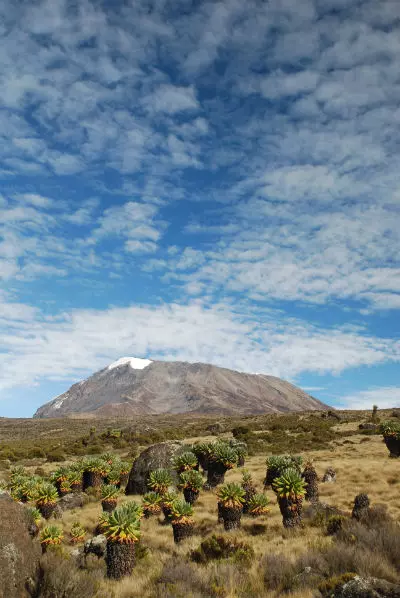
All the main routes up the mountain are just walking routes.
I really need to emphasise this point. You do not need any technical climbing or mountaineering skills to get to the summit. So you don’t need to be a mountaineer. You just need to be able to walk.
Indeed, given the number of paraplegics and those in wheelchairs, even that skill is not essential. Blind climbers have felt their way to the top and amputee victims have hobbled and crawled up to the top.
Even the walking is not particularly exhausting. After all, just do the maths. For example, the most popular route is the Machame Route, which is 60.76km (37.75 miles) in length in total from gate to summit and back to gate. Do it in six days and that’s only a fraction over 10km per day (ie just over 6 miles); do it in seven days and it’s only around just 8.5km per day , ie a little under 5.5 miles per day.
(You can follow this link to find a table showing the total distances of each route .)
So why do people fail to reach the summit?
Don’t be fooled into thinking that getting to the top is easy. You still have to battle against the cold and exhaustion. Most importantly, there’s the lack of oxygen that’s available to breathe at altitude and the complications (altitude sickness etc) that follow. This is what defeats most climbers. Which is why we go into detail on this site (and even more so in the book) about altitude sickness, its symptoms, how to prevent it – and what to do if you get it .
I would say that over 90% of people fail because of altitude sickness. The rest: well, injuries or other illnesses undoubtedly cause others to stop before they reach the top: upset stomachs can be common on Kilimanjaro. A lack of fitness counts for a few people, though not that many.
But I have to say that, after altitude sickness, the most common reason as to why people fail to get to the summit is attitude sickness. In other words, people just give up. Which is why it’s important to understand just how hard it can be to climb Kilimanjaro, and to be aware of all the hardships and privations – the cold, the possible lack of sleep, the nausea and headaches etc – that you’ll suffer on the mountain.
If you’re aware of them, you’ll be prepared for them – and, as such, you’ll be less likely to give up on the mountain.
Our most useful and popular posts
- Why do we climb to the summit at night – and do we have to?
- Can you climb Kilimanjaro in the rainy season – and is it worth it?
- Can you climb Kilimanjaro independently?
- Can you climb Kilimanjaro without porters?
- Advice for organising a group climb on Kilimanjaro
- Advice for gay travellers to Tanzania
- Advice for taking children on the mountain
- Women on Kili – some advice and tips
- For those travelling solo to Kilimanjaro
- Tips for older trekkers
- Why everyone should climb Mount Meru
2. So how do I improve my chances of making it to the summit?
It is only logical, therefore, that if you manage to avoid altitude sickness, you’ll stand a much better chance of getting to the top. (The actual summit of Kilimanjaro, by the way, is known as Uhuru Peak.)
So how do you do that? Well, reading our advice about altitude sickness on this site and in the book will help.
It also helps if you can go with a decent company, which is why we provide a lot of information on this site about how to choose a trekking company. It is also why, in the guide book, we provide reviews of over 80 of the most prominent companies working on the mountain (as well as the overseas agents that use them). Or if you can’t be bothered to read all that, then we do have our own trekking company, Kilimanjaro Experts , which we believe ticks every box when it comes to being a safe, fairly priced and ethical operator.
Other factors that will help you get to the top?
- Take as many days as you can afford to climb Mount Kilimanjaro, on a route with a high success rate. Treks typically last 5-8 days, though we consider five days to be too short – and dangerous! – and so should you. Remember: the longer you spend on the mountain, the greater your chances of getting to the summit.
- Pack some warm clothes and decent boots ,
- Stick to a training regime before you leave,
- Eat and drink plenty when you’re on the mountain.
And to help you negotiate the whole process of preparing for your trek, we’ve compiled a schedule that takes you step by step through the process of preparing for your trek . And you can follow this link for advice on how to maximise your chances of reaching the summit .
Do all of the above and, with a bit of luck, you’ll be fine. But even if, after all our advice, you still fail to get to the top, well at least you’re in good company. Famous people we know who failed to reach the summit include tennis ace Martina Navratilova, tycoon Roman Abramovic and, so it has long been rumoured, mountaineer and conqueror of Everest, Sir Edmund Hillary!
DID YOU KNOW…?
Strange but true facts about the roof of africa.
- The crater of Kilimanjaro, which lies about 5730m above sea level (18,799ft), has been the venue for both the world’s highest cricket match and the world’s highest football match too ! The football match was between two teams of women, including several ex-international players. The pitch was marked out with flour to prevent any permanent damage to the crater floor. As for the cricket match, they managed to play only ten overs each side before the weather closed in.
- In 2016, Pizza Hut delivered a pepperoni pizza to the top of Kilimanjaro to celebrate opening a branch in Tanzania. It set a record for the highest altitude pizza delivery. The delivery took four days to reach the summit.
- For most people, just getting to the summit of Kili is achievement enough. But others just like to do that little bit more. In 1994 Douglas Adams, author of The Hitchhikers’ Guide to the Galaxy , reached the top while wearing an 8ft rubber rhinoceros costume. There’s an Irishman conquered Kili with a washing machine strapped to his back. And there’s the story of the man who walked backwards to the summit in order to get into the Guinness Book of Records – only to find out, on his return to the bottom, that he had been beaten by somebody who had done exactly the same thing just a few days previously.
- The tallest trees in Africa can be found on Kilimanjaro’s western slopes. The trees measure up to 81.5m tall. In addition to being the biggest tree in Africa, the tree is also a contender for being one of the oldest: it is estimated that the trees are all around 500-600 years old!
Strange happenings on Kilimanjaro >>
3. Which is the best route up the mountain?
As you may know, there are six official paths leading up the slopes of Kilimanjaro to the summit (which is called Uhuru Peak).
Just to recap, the routes are:
The trails up Kilimanjaro
MARANGU ROUTE: The oldest and prettiest route, and the only one where you sleep in huts and not tents. But it does have its drawbacks…. Marangu >>
MACHAME ROUTE: The most popular route on the mountain… but is it too popular? Machame >>
RONGAI ROUTE: Hidden away by the Kenyan border and thus often overlooked, this is a terrific route! Rongai >>
UMBWE ROUTE: The quietest, and least popular route on the mountain. Which is just one reason why we love it! Umbwe >>
LEMOSHO ROUTE: Great forest, wonderful views, breathtaking scenery, and a great chance of making the summit! Lemosho >>
SHIRA ROUTE: Included here just for completeness sake, though it’s a road now for emergency vehicles Shira >>
To see a map of the Kilimanjaro routes please click on the image below.
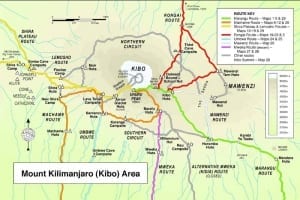
* Figures assume the Barafu Route is taken to the summit rather than the Western Breach ** Latest figures available
In addition to these trails there are a few ‘unofficial’ trails up Kilimanjaro. These include our own Alternative Lemosho (aka Northern Circuit Route) and Full Circuit Umbwe (note both of these links will take you to the Kilimanjaro Experts website). These unofficial paths have been constructed by the more creative agencies and can be some of the best hiking trails around, with high success rates and fewer crowds.
So which path should you choose?
It’s a question I get asked an awful lot. The first thing to say is that all routes on Kilimanjaro are beautiful. So if you have been booked on a trek, and had no say in what path you will be taking, then don’t despair. Because you should have a great time on a lovely route, whatever trail you end up taking.
That said, there’s no doubt that some trails seem better than others. Now I could go into a great detail about the relative advantages and disadvantages of each route. But to keep it simple, this is what I usually say:
Of all the trails in the park, my favourite route is possibly the 8-day Alternative Lemosho . (Note that some companies call this the Northern Circuit but be careful, as this name can refer to several quite different routes.) It is, in my opinion, the route with the best forest for the first day or so. It also has the best views and scenery once you leave the forest. It takes you away from the crowds that are on some other trails, choosing instead to opt for quiet paths away from the crowds and the noise. And because it is the longest route, so it gives you more time to acclimatise – which it also has the highest success rate of any on the mountain.
If you can’t find a company that deals with this route specifically, then the standard Lemosho Route is good too, though this does have more crowds on it and the success rate is slightly lower.
Look at our own Full Circuit Umbwe Route too – it’s great!
What if you can’t afford an 8-day climb
The big disadvantage with the above trails is that they are best done over eight days rather than seven. And as a result, they are a little more expensive than the other trails .
So if you can’t afford the time or money for an 8-day hike, then my favourite seven-day path is Rongai . Again, this has some spectacular views and is quieter than many other routes. Once again, it also has a very high success rate.
Finally, if even a seven-day adventure is too expensive, then the best six-day option is Machame . It’s overcrowded at times but it’s cheaper and has, for a six-day hike, a good success rate for getting people to the summit. (Though not as good as the seven- or eight-day choices, of course.)
Of course, this is just my personal opinion and there are advantages with all the routes. If you don’t want to sleep under canvas, for example, then the Marangu Route is the best choice. Why? Well, because it’s the only one where you sleep in dormitories. Or if you want a more adventurous experience, I think the Umbwe trek is perfect: quiet, steep and spectacular.
Further reading
You can read a whole lot more about the paths on Kilimanjaro on this site, including descriptions and itineraries of each. Just follow this link to our Kilimanjaro routes section. You can also get in touch if you are having trouble deciding on a suitable route for your trek. I’ll do my best to help.

4. When should you climb Kilimanjaro?
The mountain is open every day of the year. There are two rainy seasons, April-May (known as the ‘Long Rains’) and November-mid December (the ‘Short Rains’). Few people climb Kilimanjaro during these seasons.
The main trekking seasons , therefore, coincide with the mountain’s two ‘dry’ seasons: January to mid-March and June to October.
Note that rain will probably still fall on your trek during these months too. Because it’s rare to climb Kilimanjaro without getting rained on at least once .
You can read more about the mountain’s seasons by visiting our trekking seasons and weather pages.
So when is our favourite time to climb?
We like trekking at any time on Kili. But if I was pushed into saying what two months I like best, I would have to say March and October . There are two main reasons for this:
1) The weather is usually good and the skies are often clear during these months.
2) Because they both fall just before the rainy seasons, they tend to be quieter than at other times. Trekkers tend to be worried that the rains will come early, so avoid these months. But in our experience, the rains are more likely to fail altogether than arrive early. As a result, the mountain is usually emptier and quieter – yet the weather is still lovely.
Of course, occasionally the rainy season does arrive early, such as in October 2019, when the weather was dreadful. But these are the exceptions.
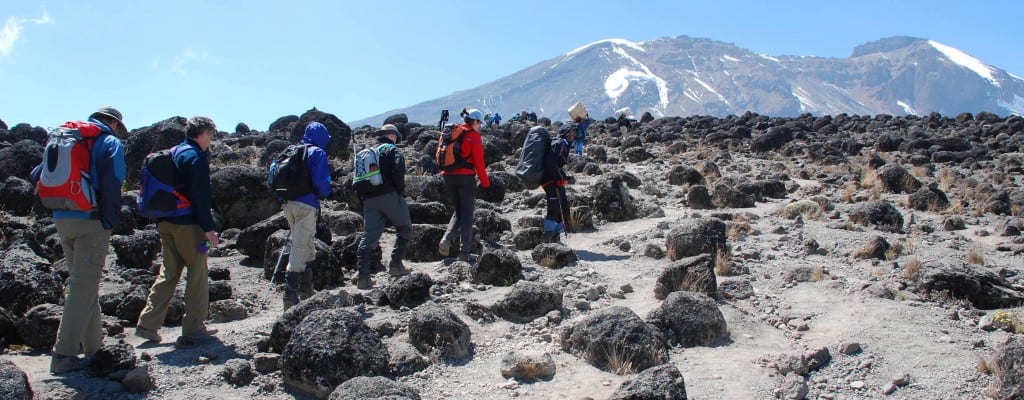
5. How much does it cost to climb Mount Kilimanjaro?
The cheapest way to organise a climb is to just turn up at the airport, get a taxi to Moshi or Arusha, and negotiate with the companies there. But you need to have confidence in your bargaining skills, and – at the risk of sounding like a salesman! – it’s a good idea to have a copy of our book . In it we tell you what to look out for, and what should be in the contract that you sign. Read it, and you’re in a better position when you haggle.
If you book in Moshi then you can, just possibly, get a Kilimanjaro trek starting at about US$1000. Of course, at this budget I cannot guarantee the reliability or honesty of the company concerned. But I can guarantee that their treatment of porters will be terrible, and the wages they pay desultory. So we urge you to think of the bigger picture, and spend more on your trek, to stop this exploitation. Because most decent companies will charge at least double the price above – ie around US$2000 for a standard trek on the Machame Route .
And it’s not unusual for some companies to charge US$3000, or even US$5000 per person for a trek!
What do I get for my money?
Included in this price should be the following:
- Airport transfers at the start and end of your trip
- A couple of nights in a hotel, usually one either side of the trek
- Transport to and from the mountain at the start/end of the trek
- All park fees, rescue fees, conservation fees and camping fees
- Food and drink on the mountain, as well as camping equipment
- Wages of your guides, assistant guides, cook and porters
Other items to look out for? Well there may be some sort of financial failure insurance (so, if the company goes bankrupt, your money is safe. All UK companies – indeed, I believe all European companies – have to have this.) Oxygen on the mountain should also be issued as standard. And some foreign agencies may also include flights.
Which begs the question:
What isn’t usually included in a trek package?
These items are, typically, not included in your trek package so you’ll need to budget for them:
- Tanzanian visas (US$50 for most people, US$100 for American passport holders)
- Meals when you’re not on the mountain (other than breakfast).
- Travel insurance
Need more info? Well do check out our pages on How to book a Kilimanjaro trek .

6. What should I pack for my trek?
Your trekking agency will provide you with a list of clothes and other items that you need to bring for your trek.
Typically, they will provide a tent and cooking equipment – so you don’t need to bring them.
The ground operator may also supply sleeping mats and, in some instances, sleeping bags too. So check with them what they provide and what you need to bring. They may also rent out certain items, too, such as head, torches, walking poles and clothing. Hiring various items for your trek makes a lot of sense, particularly if you don’t plan to do any trekking or camping after you’ve finished with Kilimanjaro.
We have provided a comprehensive packing list for Kilimanjaro.
7. How fit do I need to be to climb Kilimanjaro?
While it is always good to get fit, there’s no need to go overboard with fitness preparations for climbing Kilimanjaro.
Some guidebooks and websites go into extraordinary detail about fitness regimes. But there’s no need. Why? Simply because the main reason why people fail to reach the summit is due to altitude sickness rather than lack of necessary strength or stamina.
So just remember: you don’t need to be very fit to climb Mount Kilimanjaro.
It’s more that you need to be ‘not unfit’ (if that makes sense).
If you’re out of shape on the mountain, then you’ll find it a struggle tackling the gradients each day, may fall behind your friends (even though you should all be going very slowly), and will generally have a fairly unpleasant time – which is not what any of us want.
Besides, on the final push to the summit, and the descent that follows, people typically walk for 16 hours. So try to get into some sort of shape before your climb – it may increase your chances of reaching the summit only slightly, but at least you’ll enjoy the trip much more.
How to get fit for climbing Kilimanjaro
So what sort of training should you do? Well, there is no substitute for following a structured anaerobic and aerobic training regime for at least 12 weeks in the run up to your trek. Running, jogging, swimming, cycling – all of these are good exercises to follow.
The best thing you can do, however, to prepare for your walk – is to go for a walk!
For more information on preparing mind and body for Kilimanjaro, please visit our fitness for Kilimanjaro page.

THE SLIGHTLY SMALLER QUESTIONS: Other stuff that people often ask….
8) when should i book my climb.
Ideally, we say that you should book at least six months in advance – and preferably a year before you want to trek. On this website you can find our timetable for booking and preparing for your trek .
By booking early you give yourself more time to prepare and train for your trek. It also increases your chances of getting exactly the trek you want, with the route you want, the dates you want and your preferred choice of hotel too.
That said, we at Kilimanjaro Experts can arrange a trek with just a day or two’s notice. If you are fit enough and have the right gear, there is nothing wrong with booking so late, as long as you are fully aware of the challenge that awaits you and know about the dangers too.
9) Can I climb Kilimanjaro without guides and porters?
Not any more. In 1991 the park authorities made it compulsory for all climbers to sign up with an agency. They in turn provide you with a crew (consisting of a guide and his assistants, a cook and several porters).
The choice of which agency to sign up with is perhaps the most important decision you’ll have to make. Which is why we provide a lot of advice on this website about finding the right company for your trek – and an extensive review of all the major ones in the guide book .
10) Which day of my trek do I reach the summit?
It’s a good question, particularly if you want to reach the summit on an important day such as your birthday. The easy way to work it out is this: normally you will reach the summit at dawn on the penultimate morning of your trek . So, for example, for a seven-day trek you would reach Uhuru Peak at dawn on the sixth day. You then spend the rest of the day, and the next morning, descending down the mountain to the exit gate.
Here’s an example. Your birthday is on the 10 March and you want to do a seven-day trek on the standard Machame Route. So you need to book a trek running 5-11 March. That way, you’ll spend five days (5, 6, 7, 8, 9 March) walking to Barafu. You will then walk through the night (beginning at about midnight), reaching the summit at dawn on the 10 March – your birthday.
You then spend the rest of our birthday walking down to Millennium or Mweka Campsite. The final day is then spent walking to Mweka Gate, from where you’ll be transported back to your hotel.
11) What happens if I have an accident or need to descend?
The policy on this varies from company to company and on the severity of the injury/illness. But, usually, if you are injured or suffering from altitude sickness, the head guide will make plans for you to descend. Usually , this will be to the previous campsite, though the guide may decide that it may be prudent to evacuate you off the mountain altogether .
If it’s necessary, your crew may strap you into a stretcher and carry you down. But usually trekkers can walk down the mountain unaided. On your descent, one of the assistant guides will accompany you. He will be carrying some oxygen as a precaution. (All treks should be equipped with oxygen, to help you get off the mountain safely. It should never be used as a means of assisting a climber to the summit.)
While you are descending, the guide will contact the base in Moshi or Arusha to update them on the situation. So by the time you reach the exit gate, there should be a car waiting to take you back to your hotel. Usually your transfer back from the mountain to the hotel will be included in your package, even if you have come off the mountain early. But you will have to pay for any extra nights of accommodation.
12) What insurance do I need for my climb?
There is no law that says you must buy insurance for climbing the mountain. But some companies will certainly insist that you have some of insurance for your trek. And even if they don’t, it’s certainly a good idea to have some, and not just for the mountain either. North Tanzania isn’t particularly crime-ridden, but thefts, pickpocketings and muggings do happen. But even if you don’t have anything worth nicking, you’ll still want medical cover: there are several diseases you can catch when you’re not on the mountain, and plenty of ways to injure yourself when you are.
For more information on what insurance is suitable, including links to several UK and US companies that offer cover for the mountain, please visit our What insurance do I need for my trek?
13) How many people climb Kilimanjaro each year...?
The latest figures that have been released by the park authorities show that there were 47,232 people who tried to climb Kilimanjaro. The table below summarises how the visitor numbers have changed since we wrote the first edition of the Kilimanjaro guide back in 2001:
Kilimanjaro visitor numbers
14) and how many people make it to the top.
As a rough estimate, about 75% of people make it to the summit. The percentage of people getting to the summit varies according to the route, the duration of the climb and the trekking company they used. Some companies boast of having success rates over 90%.
15) Are the toilets as bad as people say?
Unfortunately, yes, they are still pretty terrible. When researching for the last edition of the book, we noticed that the park authorities were starting to tackle the problem. They built some state-of-the-art eco-toilets at the major campsites, and improved the state of many others.
Alas, things have once more declined, and if anything the toilets are worse than ever. Broken doors, flooded floors and poo everywhere. The stench, moreover is overpowering too. I don’t consider myself particularly squeamish – the opposite, in fact – but I can understand why people make such a big issue of this.
Thankfully, many of the better trekking companies now provide their clients with their own private toilets. I’m not a fan of these either: I feel vulnerable sitting on what is, essentially, a box with my trousers round my ankles in the middle of a busy campsite, separated from the outside world by nothing more than a flimsy bit of canvas that flaps furiously in even the slightest breeze. But at least it gives you an option if the public toilets are simply too disgusting to contemplate.
16) What language do the locals speak?
The national language of Tanzania is Swahili . Pretty much everyone in Tanzania speaks Swahili. But round the mountain, the local Chagga people have their own language called Kichagga . Kichagga has several dialects. English is widely spoken, at least amongst the guides and more educated members of the mountain crews. Click on this link to find out more about the Chagga people >>
17) Is it true that smokers perform better than non-smokers?
There’s very little science to suggest that smokers actually perform better than non-smokers. And I certainly don’t recommend taking up the tobacco habit to increase your chances of getting to the summit. But this rumour has been hanging around for years now, and there could be something to it. A few years ago I led a party of 12 Scottish guys up the Machame Route. All of them made it. But my distinct memory is that the two smokers in the group suffered less than the others from the altitude.
Is it because their bodies are used to less oxygen? Or was it just a coincidence? Who knows? But I’d love to find out if smoking is indeed beneficial for coping with high altitude – and why!
18) Can I use my mobile/cell phone on the mountain?
Yes you can. But I would say that, overall, reception on the mountain remains patchy.
There are several variables that can affect your ability to get a phone signal. The network you’re with or the quality of the phone you’re carrying, for example. But we do think the situation is improving. The last time we were round the northern side of Kibo our group was, on the whole, able to get reception for two whole days. This is certainly an improvement from the situation a few years ago.
That said, it’s highly possible that you may have to go for a day or two without being able to communicate with the outside world, whatever route you take.
In the book we provide details of where we’ve found reception on the mountain for each of the routes.
19) What's the food like?
You can read all about what you eat and drink on the mountain – as well as much else – by looking at our On the Mountain section. This describes the kind of experience you can expect to face on your trek.
20) Are there any age limits on Kilimanjaro?
You need to be at least ten years old to climb to the summit of Kilimanjaro . (And there are huge discounts on the park fees for under 16s – thought some unscrupulous companies don’t pass on all of the discount. If you want to know how much your discount should be, just contact us.)
That said, the youngest person to climb Kilimanjaro was just six years old .
At the other extreme, there is no upper-age limit . indeed, the oldest person ever to make it was 89 when she made it to the top.
21) Do people still die on Kili?
Understandably, the authorities are reluctant to release figures on the number of people who die on Kilimanjaro every year. But extrapolating from the only academic study done on this subject, we estimate that there are approximately 6-7 deaths every year . Follow this link for an extensive article on the number of deaths on Kilimanjaro each year .
WHAT TO DO NOW
Read through the above? Still want to climb Kilimanjaro? Don’t know where to go from here? Then read on..
If you’re looking to organise your own African adventure, then the next thing to read is our Countdown ; this is our step-by-step guide to planning for your trip. This tells you exactly what to do when planning your own expedition – and when.
After that, you may want to go through our site in greater detail. We have divided it into four main sections, which together provide you with all the basics you need to know to plan and prepare properly for your Mount Kilimanjaro trek:

Information about the history, geography, geology, flora and fauna of the mountain. Not essential, but (hopefully) interesting.

Vital information for anyone planning a trek, from when to go to the best route to take and what to pack.

What’s it like on the mountain? What do you eat? Where do you sleep? Who’s in your crew? How much should you tip?

Information for those looking to explore the country in greater depth, with plenty of useful info for Kili trekkers too.
In addition, you’ll also find details of our own climbing outfit, Kilimanjaro Experts , where all my favourite guides, cooks and other mountain crew staff that I’ve climbed with over the past two decades have been gathered into one great value, ethically-minded company.
Don’t forget the book!
Still want more info? Well you can’t beat our bestselling guide book , which provides comprehensive advice on climbing, including REVIEWS OF ALL THE MAJOR TREKKING COMPANIES . You’ll also find guides to the towns and cities that will act as the base for your trek, plus, of course, detailed descriptions of all the routes on both Kili and Meru, written by somebody who has climbed them all. Many times. The book has now been published since 2001 and is currently in its fifth edition.
Oh, and I don’t think we’ve mentioned our Kilimanjaro blog yet, which has all the latest news from the mountain and lots of useful advice.
And if you still can’t find the information you require, then just email us. We can be reached at [email protected] or [email protected] and I’ll be happy to help in whatever way I can.
About Climb Mount Kilimanjaro
Climb Mount Kilimanjaro is the work of Henry Stedman, author of the bestselling guide book Kilimanjaro – The Trekking Guide to Africa’s Highest Mountain , which is now in its sixth edition. I’ve been trekking up Kilimanjaro for more than 20 years and have hiked to the summit more than 30 times now, on every possible route (and in every sort of weather).
I still adore hiking on Kilimanjaro and hope, by providing as much information as I can on this site and in the book, that you will be persuaded to climb Kilimanjaro too – and love it as much as I do.
I am happy to advise you in any way I can – and I promise you I won’t try to sell you a trek with my own company, Kilimanjaro Experts! So please do get in touch if you have any questions about any aspect of climbing the mountain. The address is:
[email protected]
We are also on facebook.
I look forward to hearing from you!
Copyright 2010-2024 Climb Mount Kilimanjaro | All Rights Reserved | [email protected]
- +255 713 532 542
- [email protected]

Welcome to Kilimanjaro Trip Safaris
Climb Kilimanjaro with Kilimanjaro Trip Safaris, the Number 1 guide service on Mount Kilimanjaro. We specialize in group climbs and private climbs at a reasonable cost
About Kilimanjaro
Mount Kilimanjaro is the highest free standing Mountain in the world and the second highest mountain in the world after the Everest. Well Mount Kilimanjaro has lots of good tale but the bottom line of all visitors who wished to Climb Mount Kilimanjaro is to conquer the Kilimanjaro.
Kilimanjaro Location
Mount Kilimanjaro is located on the border of Tanzania and Kenya approximately 3 degrees south of the equator. The mountain can be clearly viewed when you are in the town of Moshi and its suburban. Also the nearest town of Arusha in a clear day you can see it.
Kilimanjaro Routes
There are six routes officially sanctioned for climbing Kilimanjaro and two routes used for descent. These are: Machame, Marangu (used for descending from other route and itself), Rongai, Lemosho, Umbwe, Shira, Mweka (descent only)
Trekking Preparation
Travel to Africa Tanzania especially for the attempt of the Mount Kilimanjaro which stands at 5895 meters above the sea level or any Mountain it demands physical, mental and equipment preparation for successful start and finish.
Let Kilimanjaro Trip Safaris organize your Mount Kilimanjaro Climbing in Tanzania
Whether it is your first time trekking or whether you have climbed dozens of peaks, we have the top Kilimanjaro routes for you. For an unrivaled experience on Mount Kilimanjaro, select the route that best suits you, and maximizes your comfort, enjoyment, and chance of success. We will take you every step of the way, until the summit of 5,895 meters, or 19,340 feet.
Marangu Route
The Marangu Route is also known as the "Tourist Route" and the "Coca-Cola Route." This is because Marangu is the most popular route on the mountain, and thus is considered "touristy". Read more
Machame Route
The Machame Route is known as the "Whiskey Route" in comparison to Marangu's "Coca Cola Route". This is because Machame is a more difficult route, and does not have sleeping huts for accommodation. Read more
Rongai Route
The Rongai Route is the only route that approaches Kilimanjaro from the north, near the Kenyan border. It is one of Kilimanjaro's easier routes. The climb to the top is gradual and steady. Read more
Lemosho Route
Little used and more remote than other routes. Those electing to take the Lemosho Route will have the bonus of crossing the spectacular Lemosho Glades, which are home to herds of animals such as buffalo, elephant and other big game animals. Read more
Shira Route
The Shira Route is a relatively gentle and incredibly scenic route to the Roof top of Africa. Encompassing the Shira Plateau, this route provides breathtaking views of the African landscape below. Read more
Umbwe Route
The Umbwe Route is the least used, least crowded route on the mountain. For good reason, it is also the most difficult route on the mountain. Umbwe is a steep, constant, straight climb to the top. Read more
Explore Our Customized Kilimanjaro Trekking Itinerary
Kilimanjaro Trip Marangu Route 5 Days Kilimanjaro Trip Trekking Marangu Route 6 Days Kilimanjaro Trip Machame Route 6 Days Kilimanjaro Trip Machame Route 7 Days Kilimanjaro Trip Lemosho Route 7 Days Kilimanjaro Trip Trekking Lemosho Route 9 Days Kilimanjaro Climbing Marangu Day Trip Kilimanjaro Climbing Machame Day Trip
Climbing Mount Meru
Mount Meru is located in the heart of Arusha National Park and it is 50 miles west of Mount Kilimanjaro, the highest free standing Mountain in the world. Mount Meru is a massive volcano reaching 14,980 feet (4,565 meters). This trek serves as an ideal warm up for Mount Kilimanjaro due to its altitude acclimatization and hiking distances. This trek is also geared towards hikers that prefer less crowds and a challenging ascent.
Oldonyo-lengai Climbing
Ol Doinyo Lengai, "Mountain of God" in the Maasai language, is an active volcano located in the Gregory Rift, south of Lake Natron within the Arusha Region of Tanzania. Part of the volcanic system of the East African Rift, it uniquely produces natrocarbonatite lava. After a climb to Oldonyo-Lengai, we advice you to spend sometime and take a tour around Lake Natron. Where you will get the opportunity to explore numerous flamingos and other bird-life.
The Cheapest Campsite in Moshi - The Kilimanjaro Campsite
Adventure alternative tanzania.
Located in Moshi, The Kilimanjaro Campsite near Bonite Bottlers CocaCola Factory, Moshi. We recognize that everyone has different preferences and expectations for their travels and are ready to accommodate your needs. All units at the camping feature WI-Fi and a satellite flat-screen TV. There is a seating and/or dining area in some units. A continental breakfast is served daily at the property.

We provide the following facilities and services at our hostels;
- Very near to the city centre
- Bed and Breakfast
- Gated fence
- Free parking
- Transport at extra cost.
Our Safari Bookings Reviews
Our business partners.
Your Name (required)
Your Email (required)
Your Message

- Meet the Team
- Work With Us
- Itineraries
- Italy Travel Guide
- Hawaii Travel Guide
- Travel Tips
Attractions
Climbing mount kilimanjaro on your trip to tanzania.
Mount Kilimanjaro, a towering dormant volcano in northern Tanzania, is the highest mountain on the African continent – an impressive 19,341 feet (5,895 meters) high. Obviously a mountain of this height is going to intrigue and beckon to climbers as a challenge they need to tackle. You might be one of those adventure seekers. You might even be planning a trip to Tanzania for the sole purpose of climbing Mount Kilimanjaro. I get that.
Embarking on a climb to the iconic Uhuru Peak of Kilimanjaro is something more than 35,000 people attempt annually. While no technical climbing skills are required, this is no small feat, as your journey will take you through rainforests, alpine deserts, and arctic terrain, up to the peak. You need to be properly prepared.

When we started researching a trip to Kilimanjaro, we learned that there are multiple routes to choose from that cater to different experience levels, each providing a unique perspective of the mountain, so that’s your first decision to make. We’ll go from there. In this article, we’re going to share what we learned traveling to Tanzania for this challenge.
Table of Contents
Where is Kilimanjaro
Mount Kilimanjaro is Africa’s tallest mountain. It’s located in northern Tanzania, near the border with Kenya. It’s obviously a prominent geographical landmark, but it’s more than just a mountain; it’s part of a larger national park. The Kilimanjaro National Park serves as a protective barrier for the mountain’s unique ecosystem and is a UNESCO World Heritage Site, reflecting its global importance.
I would recommend combining your climbing trip with a safari, or even going to Zanzibar or Kenya while you’re there. We did all three on our trip and I was glad we optimized that way, because it’s a long journey to get there. You don’t want to miss the opportunity to go on a Tanzania or Kenya safari. We did a safari in Maasai Mara in Kenya . And we also spent a day at Giraffe Manor in Kenya.
Quick Facts
- Elevation Gain: Kibo, Kilimanjaro’s highest cone, rises approximately 12,940 feet from base to summit.
- Length of Climb: It typically takes 6-10 days, allowing for gradual acclimatization.
- Recommended Routes: Marangu Route is shorter and more comfortable. Lemosho or Northern Circuit are longer and offer better acclimatization.

How to Visit Kilimanjaro
Visiting Mount Kilimanjaro requires careful planning. It’s not as easy as just showing up and climbing.
You should look for registered and experienced providers with a track record of success and responsible mountain practices. It is also essential to ensure that they offer good porter welfare standards. We’ll talk more about why porters are super important later.
I would highly recommend choosing and booking with a reputable tour operator for climbing Kilimanjaro and an African safari trip in one, like Altezza that offers customizable or group tours of any length, climbing any of the available routes, for a cost of around $2000-2300 USD per person. Altezza offers Kilimanjaro group climbs every 2-3 days, so you can find one that suits your schedule.

Choosing the Right Route
As I mentioned before, Mount Kilimanjaro has multiple routes, each offering a different experience. You should choose based on your physical fitness, experience, and personal preferences. Here is a brief overview of the three most popular paths:
- Marangu Route : Known as the “Coca-Cola” route because it’s the most chosen route, with 30% of climbers using this route. You will sleep in a shared hut rather than a tent , it’s a shorter journey, and uses the same route up and back.
- Machame Route : Known as the “Whiskey” route is more challenging but rewards with stunning views. The Machame hiking trail is the second most popular on Kilimanjaro. It starts in the tropical rainforest on the southern slope. Beginners should choose the seven-day option for a better acclimatization profile. Many of the Altezza’s group climbs go via the Machame Route.
- Lemosho Route : This is a longer and more scenic route with a higher success rate because it’s easier to acclimate. It also features the famous Shira Plateau and Cathedral Peak, which at 13,000 feet is the highest point of the western slope.
Best Time to Visit
The best times to visit are during the dry seasons. This is when the Kilimanjaro weather is nearly ideal. If you want the best chance of success, I wouldn’t really choose a time outside of these windows.
- Late December to early March : Warmer weather with clear mornings and evenings.
- Mid-June to late October : Cooler temperatures and less precipitation.
Keep in mind that even in the dry season, the weather on Kilimanjaro can be unpredictable, so you’ll need to prepare for all conditions. See our packing list below for some help with that.
Preparation and Training
Obviously you wouldn’t even start this planning thinking you might not complete the climb, so why not set yourself up for success from the start? Even if you’re an experienced and in-shape athlete, you can benefit from a preparation and training regimen. Altitude sickness is one of the biggest concerns that you shouldn’t ignore. Your training should take into consideration the oxygen deprivation at this high of an elevation.
Here is our 8-week training regime that we used for our climb. You can obviously adapt it to fit your preferred type of exercise.
- Cardiovascular exercises : Include activities like running, cycling, or swimming at least four times per week to boost your aerobic capacity.
- Strength training : Focus on leg strength with exercises like squats and lunges. Strong core and upper body will help with longer treks.
- Hiking : Go on regular hikes to adapt your body to similar conditions. Include varied terrain and gradually increase the distance and elevation. If possible, hike at elevations above 6,000ft to familiarize your body with lower oxygen levels.

What to Pack
Packing the right gear can really make a difference. We are light packers so I tried to keep it streamlined. I don’t like to carry a lot of things. I’d suggest doing some shopping for lightweight, quick-dry, and moisture-wicking items. And always pack in layers (you’ll be going from hot to cold frequently).
- Base Layers: Quick-dry, moisture-wicking materials.
- Insulating Layers: Fleece or down jacket for warmth.
- Outer Layer: Waterproof and windproof jacket and pants for protection.
- Head Gear: Warm hat, sun hat, and a balaclava or neck gaiter.
- Handwear: A pair of warm gloves and lightweight gloves.
Gear and Equipment:
- Backpack: A light daypack for your essentials and a duffel bag for porters to carry.
- Sleeping Bag: A quality bag rated for at least -10°C/14°F.
- Trekking Poles: Adjustable and sturdy to help with the walking.
- Headlamp: Be sure to bring extra batteries or a charger.
- Hiking Boots: Waterproof and broken-in to prevent blisters.
- Camp Shoes: Comfortable, lightweight shoes you can wear after hiking.
- Socks: Wool or synthetic, plus a couple of liner socks to wick away moisture.
Personal Items:
- Hygiene: Travel-sized, biodegradable products, and personal medications.
- Sun Protection: High-SPF sunscreen, lip balm with SPF, and sunglasses.
Miscellaneous:
- Water Bottles or Hydration System
- Camera/Phone: In protective cases.
- Documents: Passport, permits, and insurance that you can leave with your guide.

Why You Need Guides and Porters
Porters and mountain guides are invaluable. I can’t stress that enough. Actually, Kilimanjaro National Park requires that you have a licensed guide, thus our recommendation to work with a company like Altezza. They take care of leading the climb, safety, cooking, and pacing so you can properly acclimatize, and they ensure you have good porters that can take the strain off of your hike and hopefully ensure you make it to the top. Believe me, you don’t want to deal with these details yourself.
When we started looking around, I was worried about hiring the right company, because I’m always worried about fair wages, respectful treatment, and proper working conditions. As a regular traveler, I’ve seen so many different scenarios where I didn’t feel certain. So be sure to do your research on the company you use.
About Tipping
I was also wondering about tipping before we set out. This is something you should plan for in advance, if you wish to tip your guides and porters. I won’t go as far as to say tips are expected, but they are customary and are appreciated. They do contribute to the local economy and they put real money into the pockets of those who assisted you.
My recommendation is this. There’s no “expected” amount, so give what you feel comfortable with.
- Porters $5 – $10 per day
- Cooks $10 -$15 per day
- Guides $15 – $20 per day
Extending Your Stay

After you’ve climbed Mount Kilimanjaro, you might want to stay in Tanzania for other experiences. I mean, you’ve traveled so far to get there, and there are other great things to do in the country, as well as nearby. You could go on a safari, take a beach vacation, or do a cultural tour.
- Serengeti National Park : See the great wildebeest migration (it’s pretty incredible), and go on a hot air balloon ride.
- Tarangire National Park : Renowned for its large elephant population and spectacular baobab trees.
- Zanzibar : Relax on the beach, dive, snorkel, or explore the historical Stone Town.
- Kilwa Kisiwani: A UNESCO World Heritage site, this ancient city was once a significant trading post along the Swahili Coast. Tours explore the ruins of great mosques, palaces, and the famous Kilwa Fort.
- Maasai Villages: Visiting a Maasai village gives insights into the life of one of Africa’s most famous ethnic groups. These tours often include traditional welcome dances, a walk through the village to learn about Maasai huts (bomas), and insights into their traditions.
- Olduvai Gorge: Often referred to as the “Cradle of Mankind,” Olduvai Gorge is an archaeological site where you can learn about early human history.
Be Prepared For Travel Planning is the most important part of any successful trip. Do it the easy way:
🧳 Travel Packing List | ✔️ Why You Need Travel Insurance | ✈️ What to Do Before You Leave Home
- Find and book the best hotel (our favorite booking site is Expedia)
- Research flight options (our favorite tool is Skyscanner )
- Book a tour (we always use Viator to find the best tours)
- Rent a car through Discover Cars (they search the best deals for you!)

Laura Lynch, creator and writer of Savored Journeys, is an avid world traveler, certified wine expert, and international food specialist. She has written about travel and food for over 20 years and has visited over 75 countries. Her work has been published in numerous guidebooks, websites, and magazines.
Leave a Reply Cancel reply
Your email address will not be published. Required fields are marked *
Save my name, email, and website in this browser for the next time I comment.
- Travel Resources
Climbing Kilimanjaro
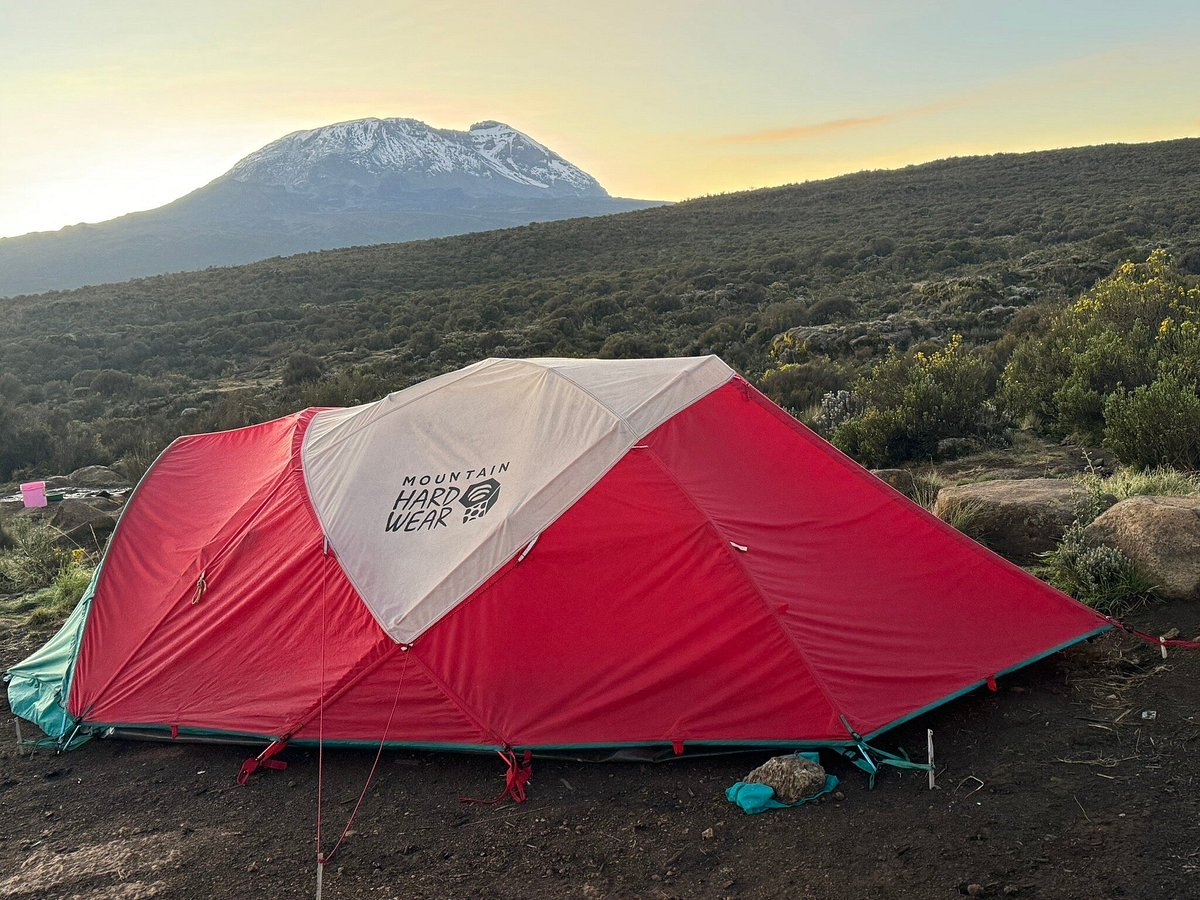
- See all photos

Similar Experiences

Most Recent: Reviews ordered by most recent publish date in descending order.
Detailed Reviews: Reviews ordered by recency and descriptiveness of user-identified themes such as wait time, length of visit, general tips, and location information.
Climbing Kilimanjaro - All You Need to Know BEFORE You Go (2024)

Trek to the Summit of Africa's Highest Peak
Kilimanjaro private journey.
From $6,895
Very Strenuous
Call 1-800-368-2794 or contact us for any questions
SAFARI EXTENSION DISCOUNT
We've perfected the climb to the celebrated “snows of Kilimanjaro” on the stunning Lemosho-Crater trail on Kili's remote southwest flanks, and it makes a fantastic Private Journey to celebrate with family or friends. With seven days on the ascent for maximum altitude acclimatization, your group will have the best chance of peak success—plus just a short climb to the summit to view the sunrise (not the grueling 9-hour climb in the dark required on other routes!). On our route, your group will also have the opportunity to hike right to the rim of Kili's astonishing inner crater, a surreal moonscape. Our camps have the finest amenities on the mountain, and for extra security we always carry oxygen and a Gamow bag. Our legendary, highly skilled guides and crew bring experience, camaraderie, and fun to your climb. Have it your way—with your own group and your own trip dates!
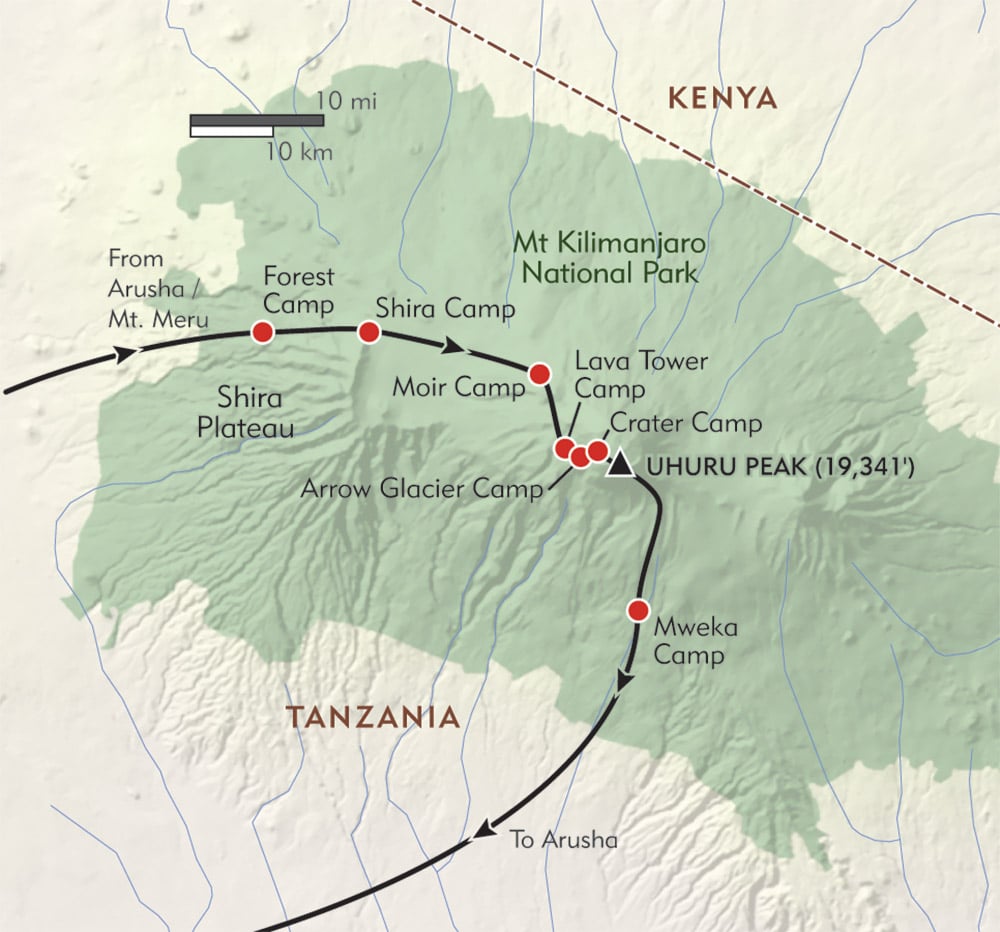
Arrive: Arusha, Tanzania
Depart: Arusha, Tanzania
- Climb the best route to the summit of Africa's highest mountain!
- Uncrowded trails, Kili's five ecozones, vital extra days for acclimatization
- Sunrise on the summit of Africa, camp by the glaciers on Kili's crater rim
- Led by the most experienced guides on the mountain
- Best camp amenities for your comfort, safety, and nourishment on the climb
- We insure and outfit our porters
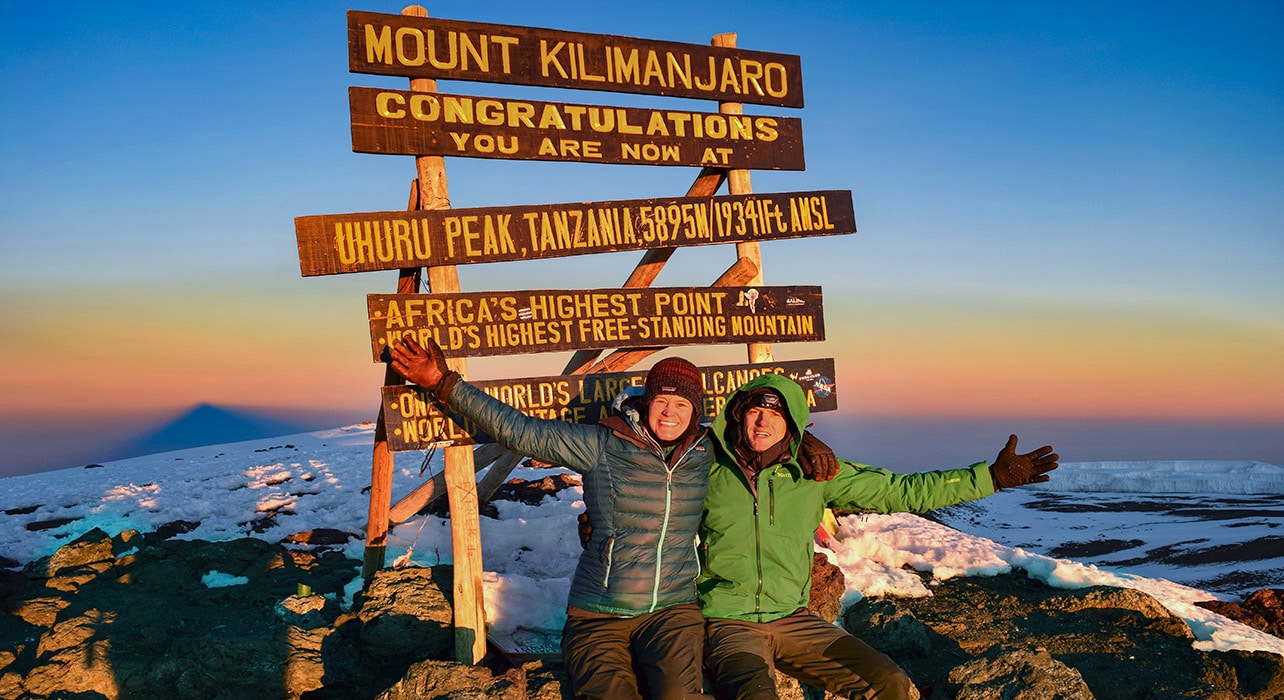
Dates & Pricing
Best months to go: July to September & December to March. For our Private Journeys, you choose your own group and your preferred dates. Prices are per person and not guaranteed until services are confirmed. Contact us for availability, questions, or to book your adventure!
Payment & Cancel Schedule
At time of reservation: $1,000 90 Days prior to departure: Balance Please note that this differs from our standard policy.
Cancellation & Transfer Schedule
Minimum fee: $500 per person 61-90 days prior to departure: 25% of trip cost 46-60 days prior to departure: 50% of trip cost 45 days or less: 100% of trip cost Please note that this differs from our standard policy.
- Expert leadership of a Wilderness Travel Trip Leader and porters
- Accommodations in mountain camps and private private acclimatization camp
- All group camping and cooking equipment
- All ground transportation and baggage handling from meeting until departure
- All activities as indicated in Detailed Itinerary
- Use of Mountain Hardwear Lamina sleeping bag rated to -30°F and 3-inch Therm-a-Rest sleeping pad
- Membership in Knight Support First Air Responder
Not Included
- Travel to and from the arrival and departure location as indicated in Detailed Itinerary
- Additional hotel nights outside the trip's scheduled dates
- Optional gratuities to Trip Leaders or staff
- Optional travel insurance
- Other expenses of a personal nature (some alcoholic beverages, laundry, etc.)
Accommodations
Scroll through our signature accommodations for this trip below. Although it is highly unlikely, we may make substitutions when necessary.
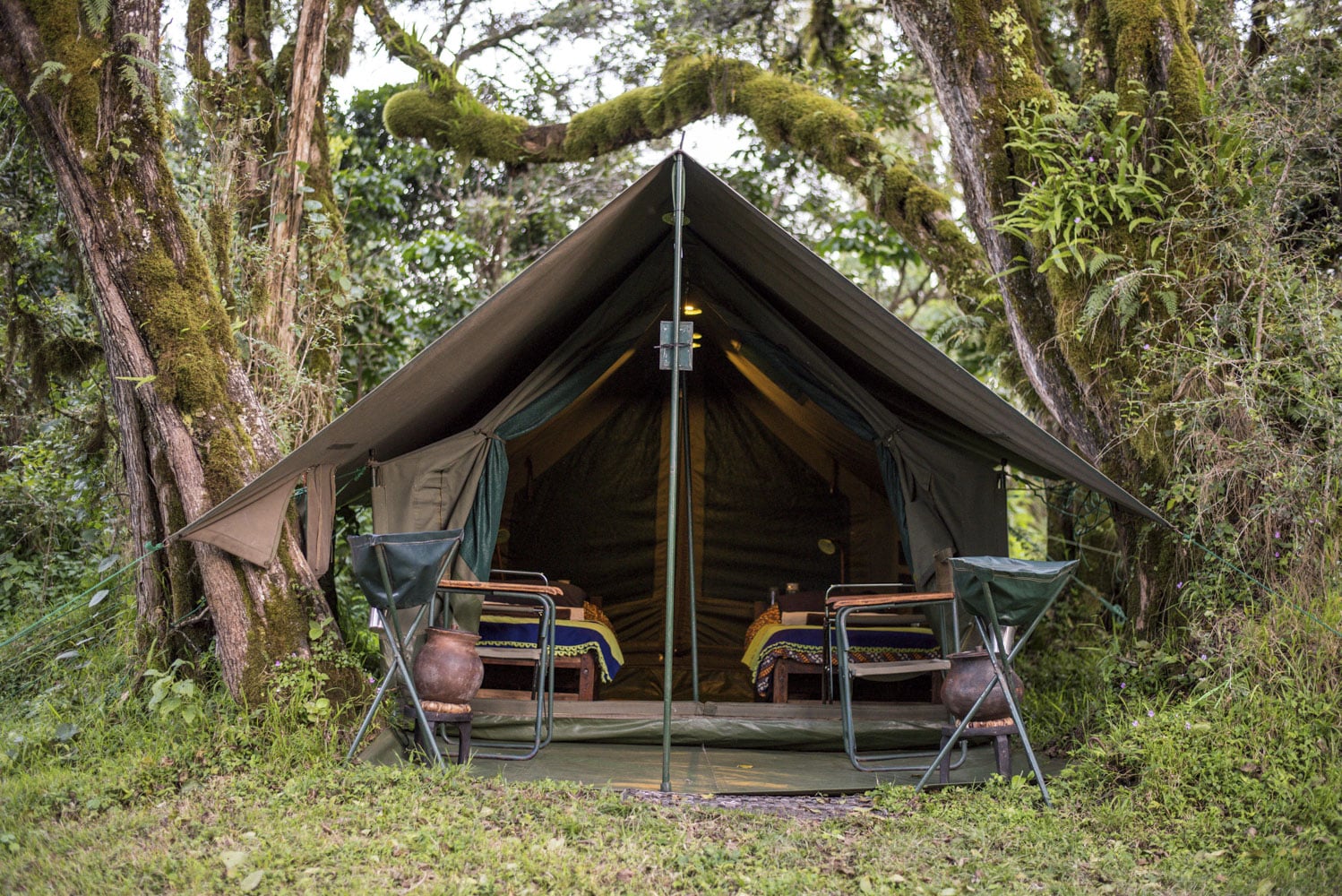
Mount Meru Seasonal Camp
Arusha National Park, Tanzania
Days 1-2 (2 nights)
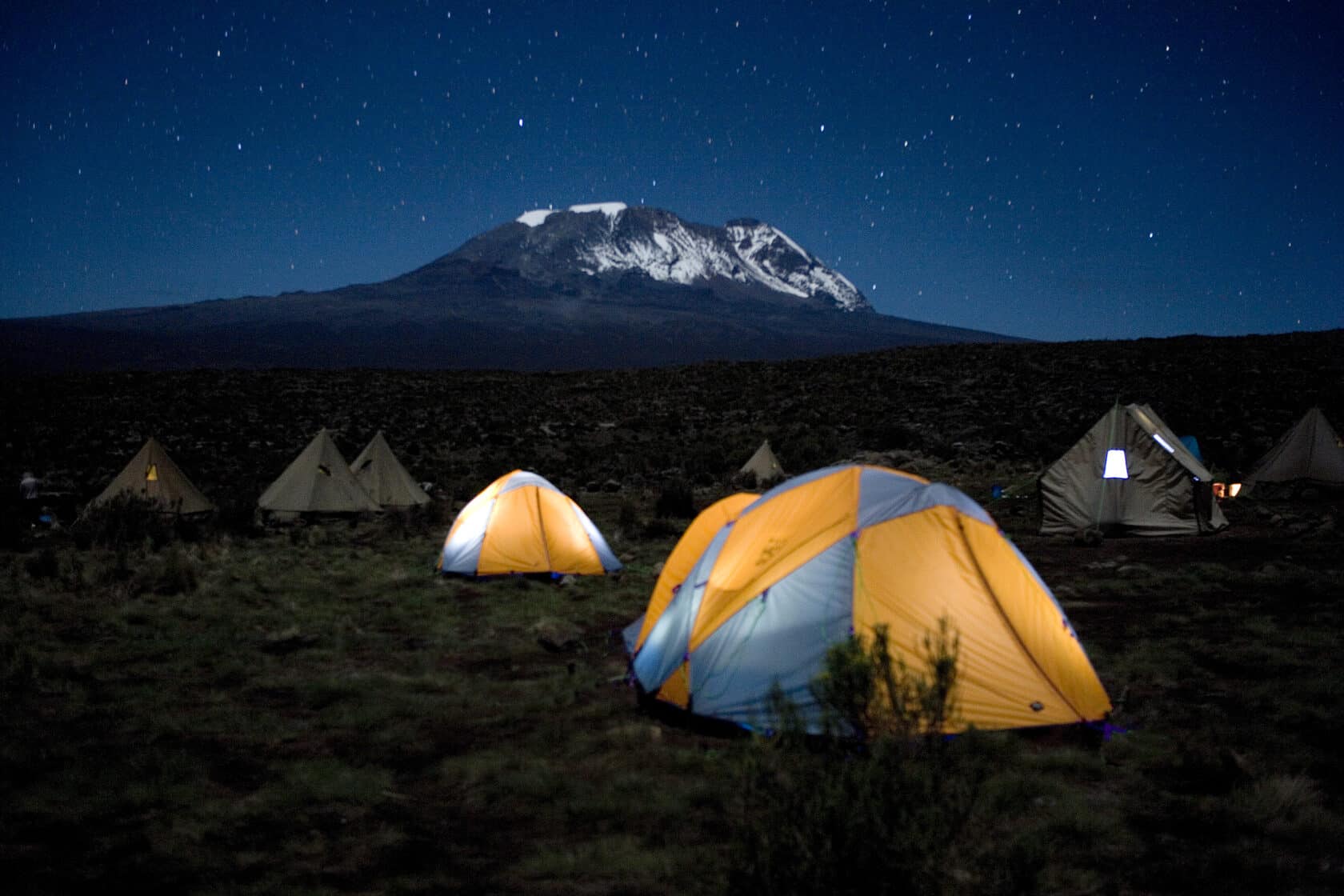
Camping on the Mountain
Mount Kilimanjaro, Tanzania
Days 3-10 (8 nights)
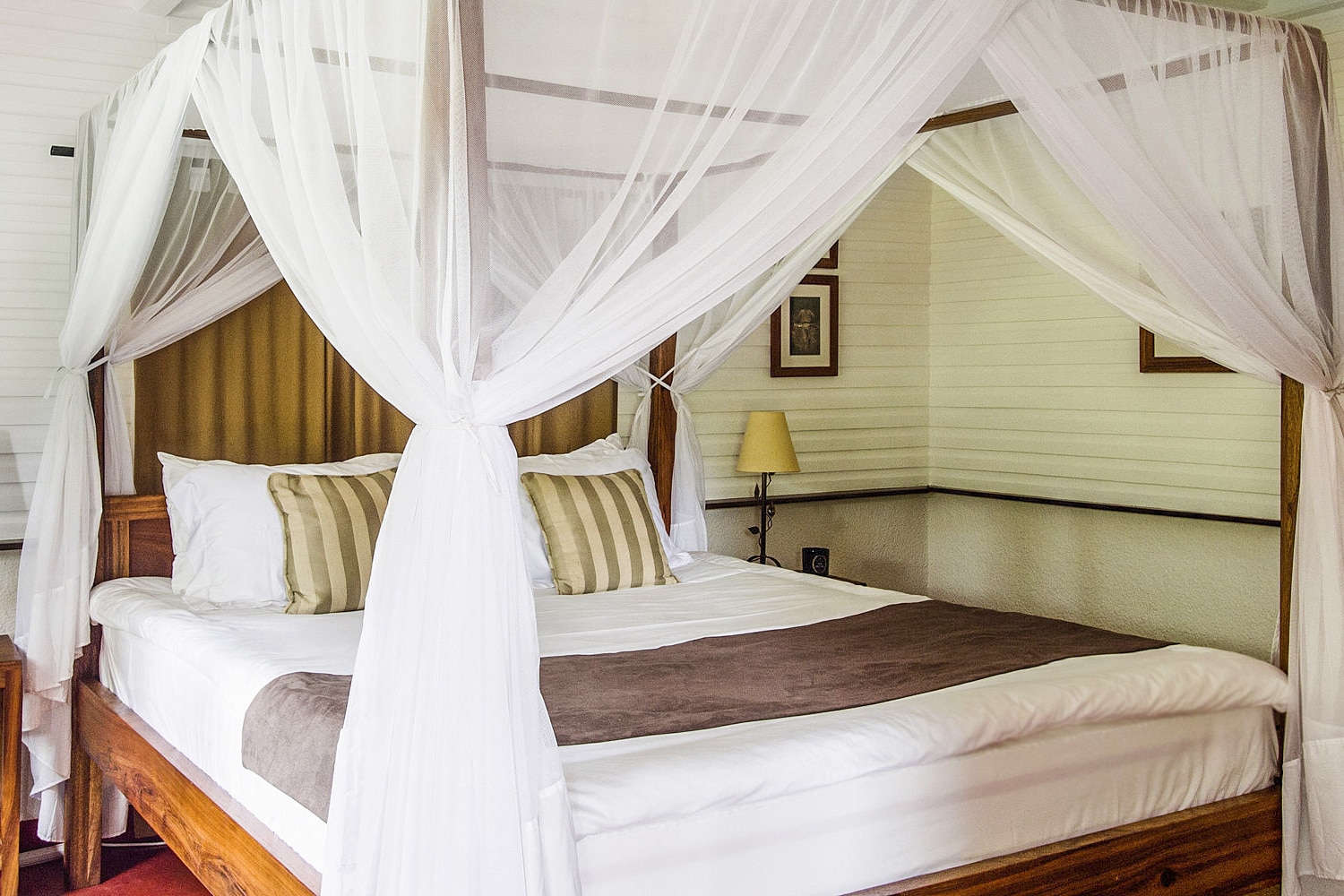
Mount Meru Game Lodge
Arusha, Tanzania
Day 11 (Day Room Only)
Trip Leaders
Wilderness Travel Trip Leaders have a passion and a joy for creating an unforgettable journey. We are extremely proud of them and the incredible travel experiences they make possible. For more information, including client comments about them and which specific trips they will be leading, please click on their profiles below.
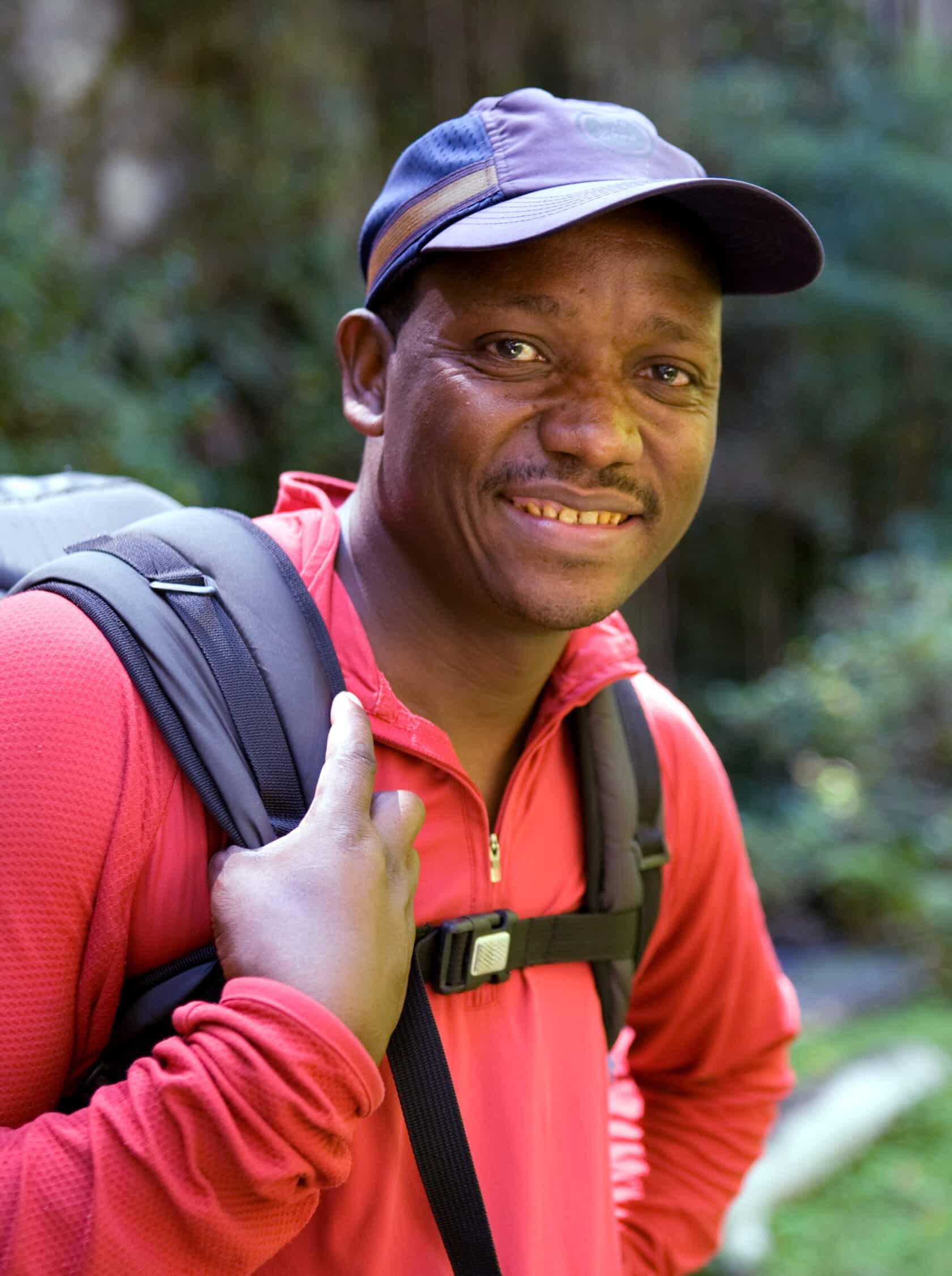
Samia Asindamu
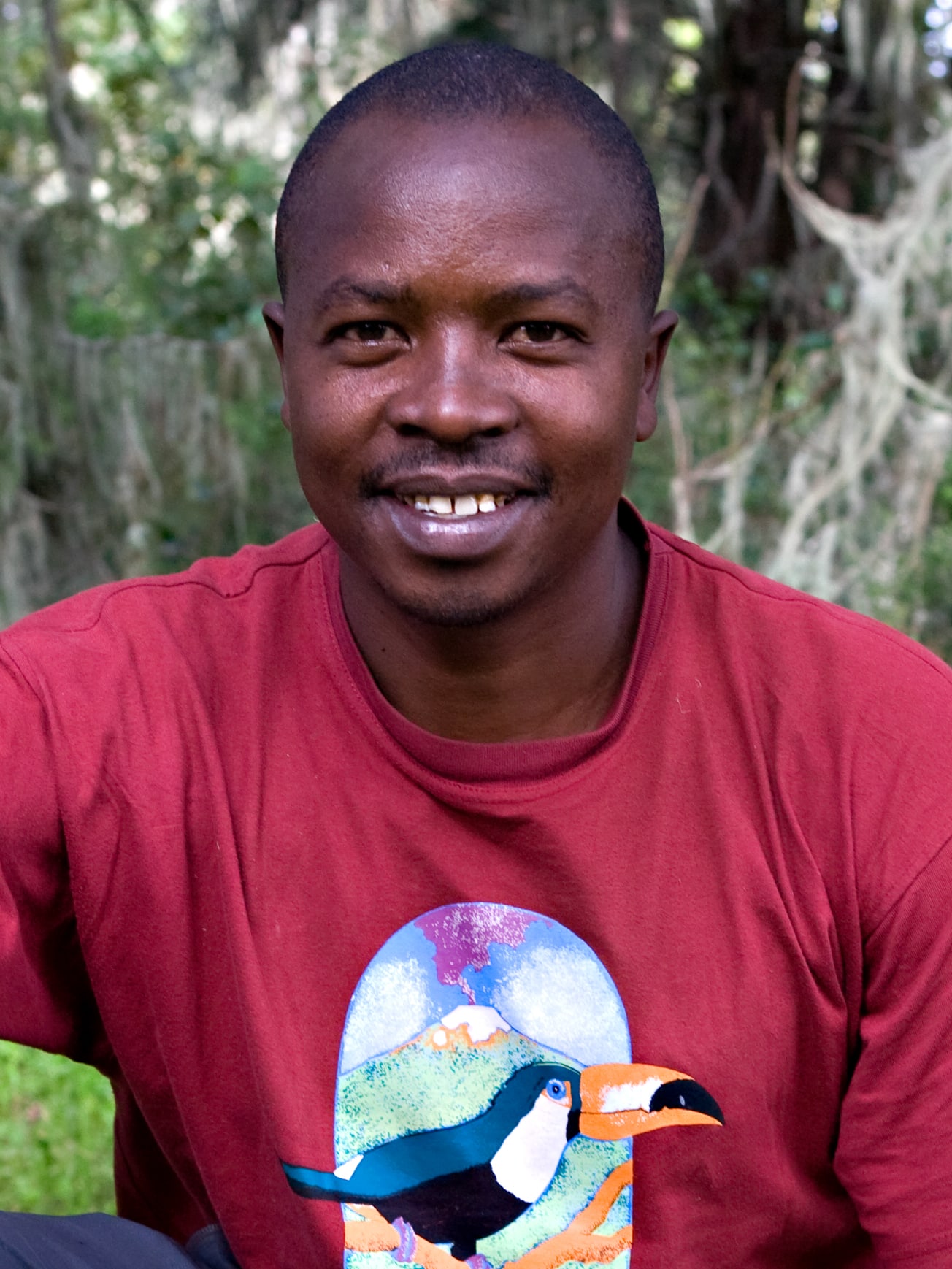
Bonaventure Kivuyo
What the Trip is Like
- Day 9 - 7-9 hours, 2 miles, 2,840 feet ascent
- Day 10 - 8-10 hours, 8 miles, 541 feet ascent, 9,301 feet descent
Every participant must understand that this trek is truly challenging — you should be in excellent physical condition. Even though trip members carry only a daypack (with camera, jacket, rain gear, water bottle, and other small necessities you may need during the day), we recommend you make a special effort to get in top physical shape for the trip by hiking, running, swimming, bicycling, or engaging in other forms of aerobic exercise well beyond your normal routine. Many activities get heart and lungs into shape, but the most effective way of getting fit for hiking is to hike! Walking up and down flights of stairs is also an effective way to train. Bending your knees as you go down stairs will help strengthen your quad muscles. At least two months prior to your trek, we urge you to go on weekend day hikes that involve long uphill and downhill walking.
For this trek, we require your doctor sign the Wilderness Travel Medical Form. Once Wilderness Travel has confirmed your place on the trip roster, no refunds beyond our standard fees will be made if your physician refuses to sign the form. It is very important that you and your physician fully agree that you are physically capable of undertaking a strenuous trek, and equally important that you undertake proper conditioning prior to the trek
The Trek Leader has the right to disqualify any member from the trip at any time if it is medically necessary, to avoid endangering the group, or if the participant in question is physically unfit for the rigors of the trip. Refunds are not given under such circumstances.
On the Kilimanjaro climb, porters carry the group gear and you carry a daypack for your wind/rain jacket, water bottle, and camera (depending on your equipment, this can weigh approximately 10 pounds). The camp crew sets up camp each day and we are served dinner in a dining tent with tables and chairs. We use American-made mountaineering tents rated by the manufacturer as 3-person tents but we use them for only two people, ensuring a fair amount of space for sleeping. Sleeping bags are rated to -30°F and sleeping pads are three inches thick and over two feet wide. Fires are not allowed on the mountain so there are no hot showers available at camps (hot showers are available at all of our safari camps).
For more information about our accommodations, please reference our “Camping with Wilderness Travel” and “Climb Kilimanjaro Lodging” pages of the detailed itinerary.
While there are certainly limits as to what can be done in such a setting, our Kili climbs have become renowned for the excellent meals served on the mountain, even at the highest altitudes. We have put a great deal of effort into combining proper nutrition with appealing and varied dishes; WT even launched the first chef training school in Tanzania over twenty years ago to create the highest standard of food quality for our high-altitude climbs.
Breakfasts typically include tea, coffee, fruit, eggs, bacon, porridge and homemade granola. Picnic lunches set up along the trail midway through the day can include sandwiches, soup, energy bars, nuts, fruit, cheese, crackers, and guacamole. Dinners vary day by day (and with elevation moving to foods that are easier to digest) but include soups with baked bread, an assortment of salads, pasta with garlic bread, spaghetti Bolognese, cauliflower, carrots, tomatoes, and of course brownies and apple pie with cream!
We have a separate dining tent with food available upon request at any time, and provide an assortment of snacks for you to take on the trail, including mixed nuts, energy bars, homemade granola, dried fruit and much needed sugary sweets to boost your energy at higher elevations such as chocolate bars.
Please let us know of any dietary needs and we will accommodate as best as possible.
Environmental Concerns
From our Kilimanjaro camps, we try to carry out every item of trash that we cannot burn easily. Toilet paper, which is put in a can beside the chemical toilet, is burned by the crew before leaving each camp and some small easily burnable items can be given to them to burn at the same time. For pit stops on the trail, carry toilet paper back to camp in a plastic bag. Please keep your own trash in a trash bag and pack it in your porter duffel for removal from the mountain. Take chemical or toxic trash (such as dead batteries) back to the US with you so they can be disposed of properly.
Extend Your Trip
Gorilla Tracking in Rwanda’s Parc National des Volcans Extension
From $3,395
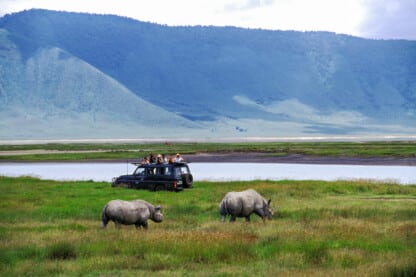
Ngorongoro Crater and Serengeti Safari Extension
From $3,885
Other Trips You Might Like
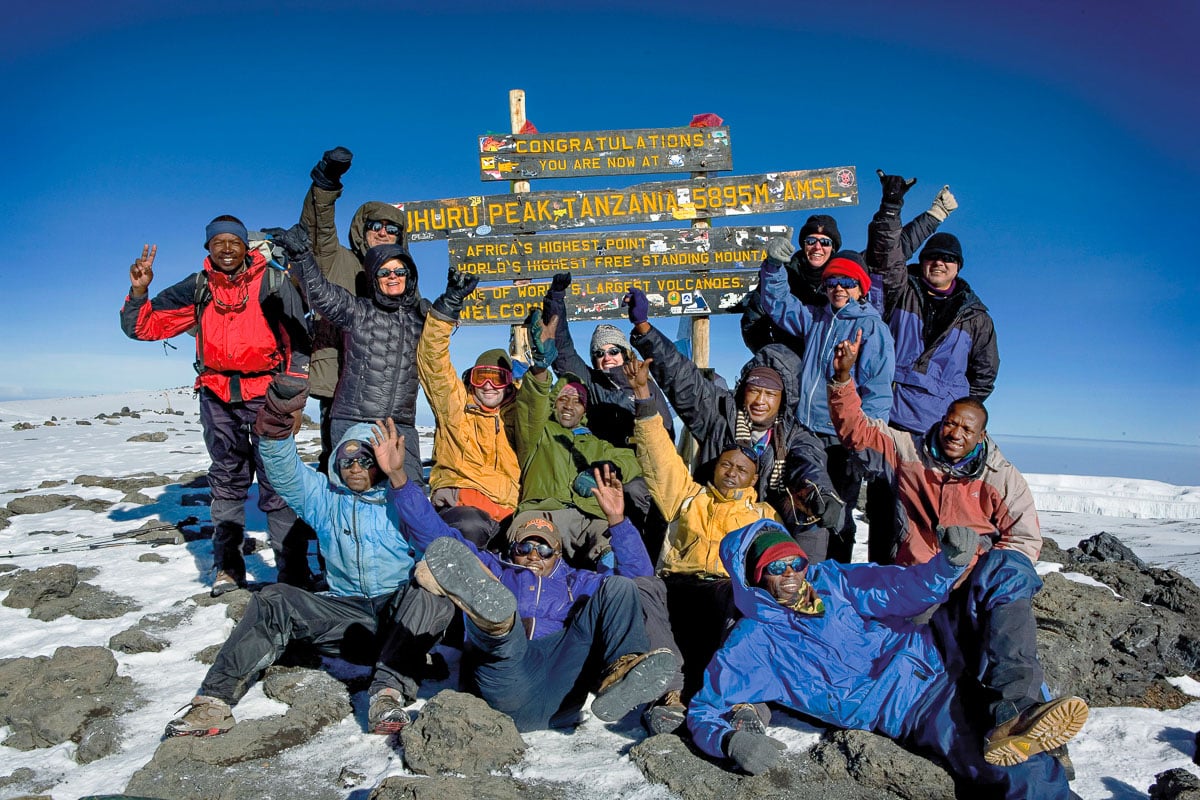
Small Group Adventure
- Climb Kilimanjaro!
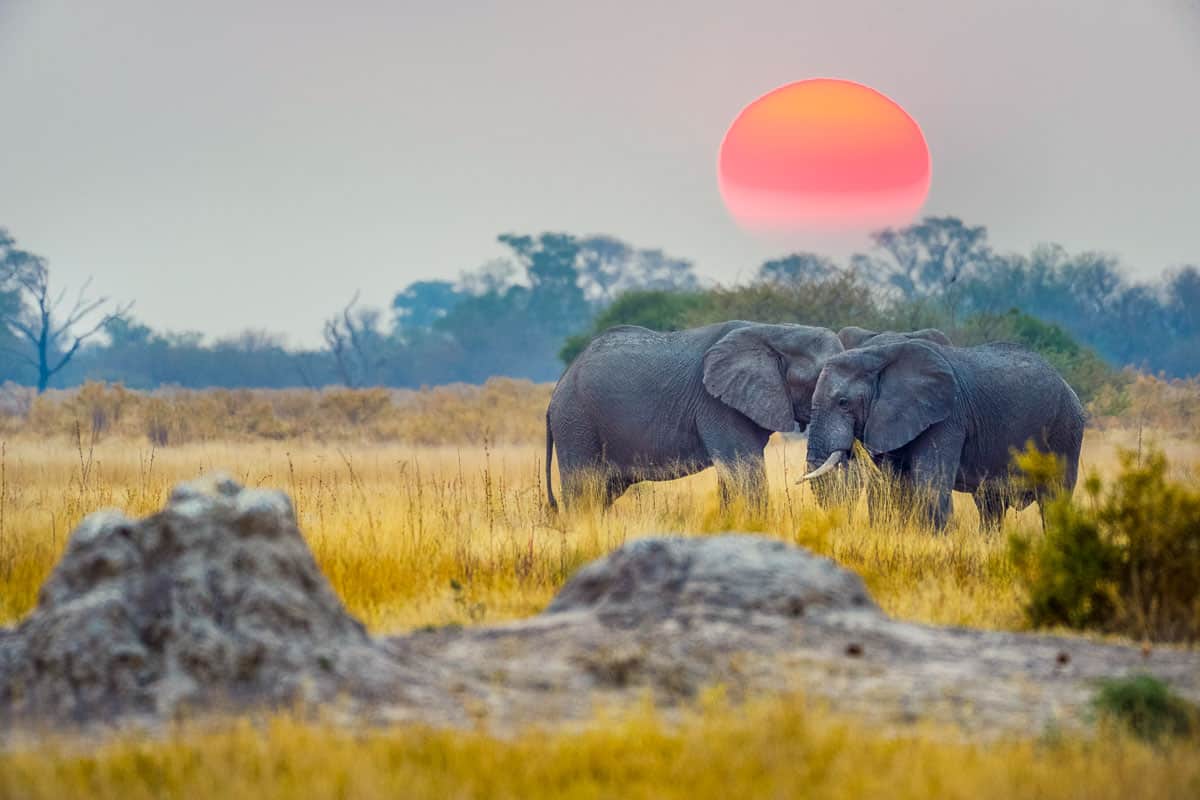
Southern Tanzania: Off the Beaten Path
From $11,995
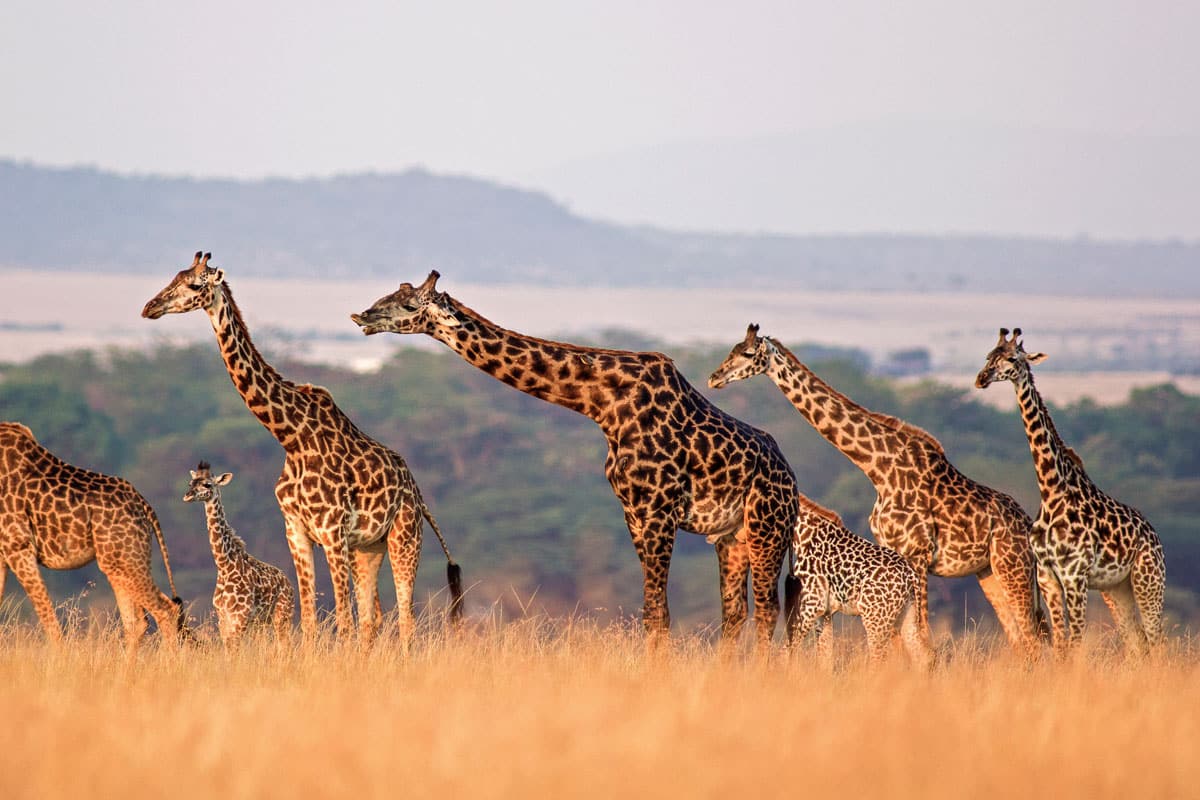
Private Journey
Tanzania Private Safari
From $8,995
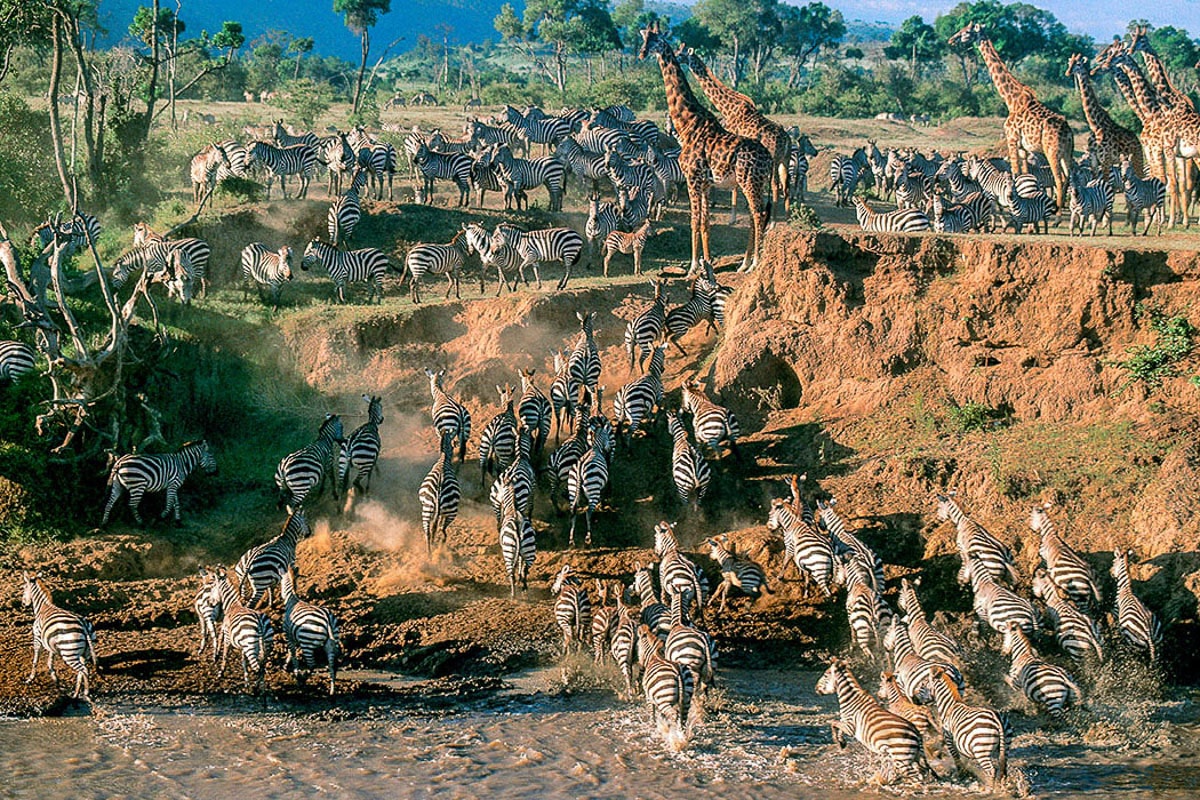
Tanzania: The Great Migration Safari
From $10,195
Book your trip today
Our Area Specialists know every detail about our tours. They will be happy to answer any questions and help you choose the journey that’s right for you. Contact us to learn more or book your trip today!
Submit the form below to download itinerary
Trip Download Itin
Trip Levels
With more than 200 different adventures to choose from, we want to help you find the trip that’s right for you. Our Trip Level system ranks each trip in two ways: a number rating from 1 to 6 according to the activity, and general travel rigors. 1 is the easiest and 6+ the most difficult—see descriptions below for explanations of each number. A plus (+) sign means the trip is a bit more strenuous than other trips of that level. The detailed explanation of each trip—below the bar with the number rating—is perhaps more important, specifying activities, altitudes, hiking, and travel conditions. The Detailed Itinerary, available by download or mail, gives further information. Our Area Managers can also answer questions and guide you to the trip that best suits your interests.
Level 1 – Easiest
Non-camping journeys, optional walks, little elevation gain or loss.
- Royal Rajasthan and Villages of India
- Small ship cruises
Level 2 – Easy to Moderate
Hotel nights and/or safari-style camping, hikes of two to four hours on some days. Other physical activities are sometimes included, such as optional sea kayaking.
- Our African safaris
- Costa Rica Wildlife
Level 3 – Moderate
Half- to full-day hikes (3-6 hours) over rolling countryside on most days, occasional steep trails. Many of our hotel-based walking tours are in this category, as are our snorkeling adventures.
- Tuscany & the Cinque Terre
- Argentina: Hikes and Estancias of Patagonia
- Palau Snorkeling & Sea Kayaking
- Some trips with minimal hiking but rugged travel conditions or long drives, such as Tribal Ghana, Togo & Benin, are Trip Level 3.
Level 4 – Moderate to Strenuous
Full-day hikes (4-6 hours), mountainous terrain, significant elevation gains and losses (hiking up or down as much as 3,000 feet) on many days. Altitudes no greater than about 10,000 feet.
- Ultimate Patagonia
- Hiking the Spanish Pyrenees
Level 5 – Strenuous
Full-day hikes (4-8 hours), mountainous, steep terrain (hiking up or down as much as 3,500 feet) on many days. Trips with hiking at average altitudes of 10,000 to 12,000 feet are in this category.
- Inca Trail to Machu Picchu
- Everest Lodge to Lodge
Level 6 – Very Strenuous
Full-day hikes (5-8 hours), mountainous, steep terrain (hiking up or down as much as 3,500 feet) on many days. Most hikes take place at altitudes above 10,000 feet, with some days ascending as high as 18,000 feet.
- Everest Base Camp

Mount Kilimanjaro
Mount Kilimanjaro is the tallest peak in Africa, standing at 5,895 meters (19,341 feet) high. Being on the equator, the climate on Kili doesn’t tend to vary over the course of the year; rather it changes with altitude, and almost every climate type on earth is represented on the mountain. Kilimanjaro can be climbed year-round, but we recommend avoiding the two rainy seasons (November and April-May). Climbing Kili is a major draw for all adventure-seekers, but this 7-10 day trip is not for the faint-hearted. It is estimated that half of those who attempt the climb do not summit. There are numerous trip lengths and routes to the top, and as w ith most high-altitude climbs, the more time you spend on the mountain, the easier it is for your body to acclimatize.
Here are a few of our most recommended routes:
- Lemosho 8 days: the best in terms of scenery & acclimatization, this route is going to be less crowded and offer the highest success rate.
- Machame 7 days: this route is popular for its success rate and time. It is also scenic in that it joins the Lemosho route after a couple of days. It has a great ascent profile for acclimatization with a shorter amount of time. This is a great option for a little less money.
- Rongai 7 days: this route starts on the opposite side of Kilimanjaro and will be the least crowded. It has a more moderate grade and is a bit dryer in terms of scenery (not rainforest). Though it is the most off-the-beaten-path route, it is getting busier and is a little more expensive than the Machame route.
We like to use Hoopoe or Zara as our partnering guiding companies to make sure that you have the best guides, porters, and equipment on your climb. Safety training is critically important on the mountain, so paying a little more for your trek in order to use a company who trains year ’round and ensures their crews are well-equipped is a sound investment. Day hikes from the base camp are also a great option for those who don’t want to commit to the summit.
Climbing Kilimanjaro is a very specific experience, and it is the main reason to travel to the area, located about one hour from Arusha. Before and after your climb, we recommend spending at least one night either in Moshi, a small back-packers village at the base of the mountain (the best option is Springlands Hotel ), or back in Arusha , where there’s a better selection of properties. Kili is also very close to both Kilimanjaro International Airport and the domestic Arusha Airport, so a climb can be very easily combined with a wildlife safari or beach experiences.
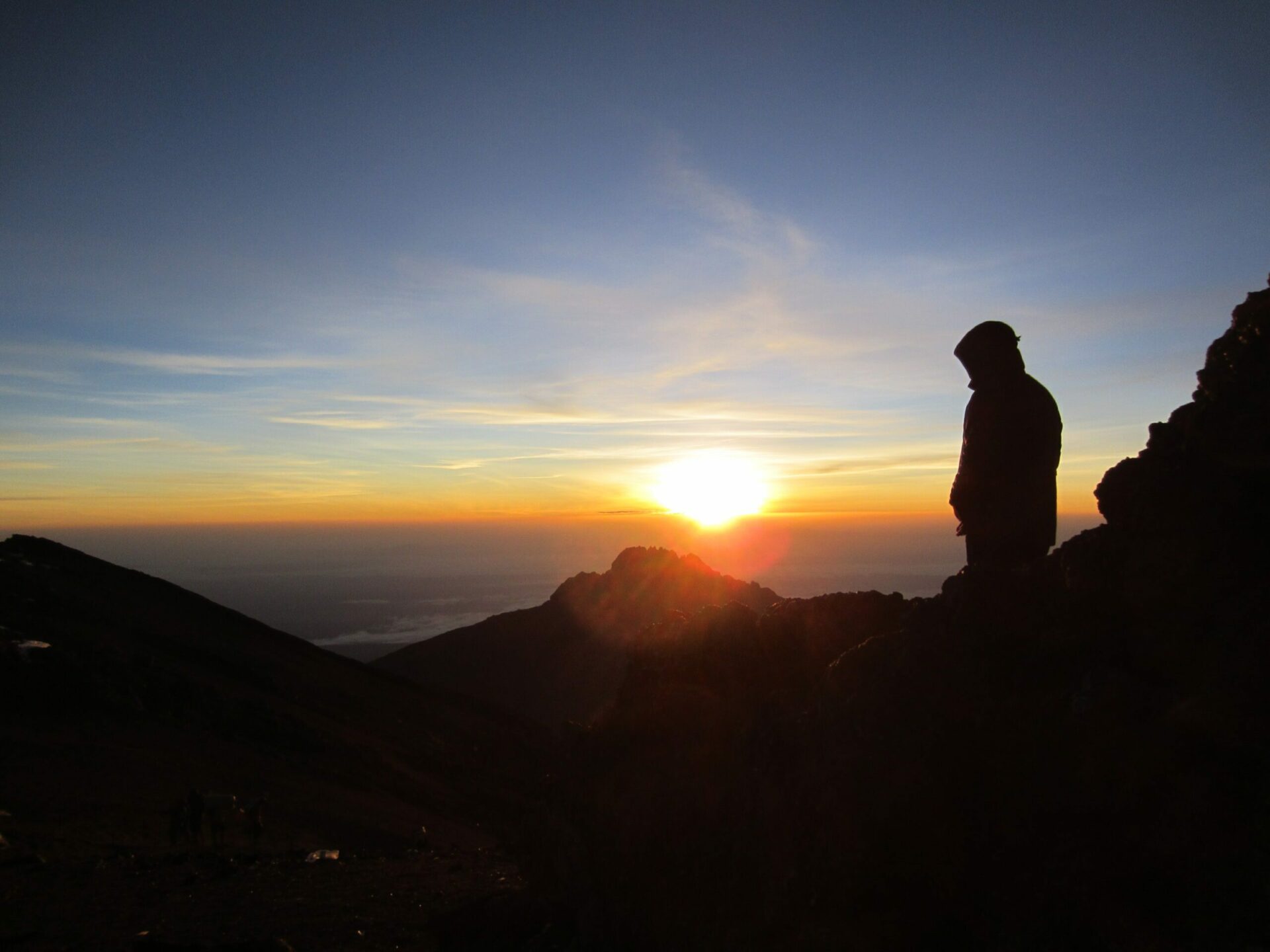
Itineraries
Climbing mount kilimanjaro.
Conquering Africa’s Highest Summit
Other areas to explore
Mahale mountains national park, matthews range, bwindi impenetrable forest, plan your trip.
Ready to start planning your own incredible adventure? We make the process stress-free and enjoyable.
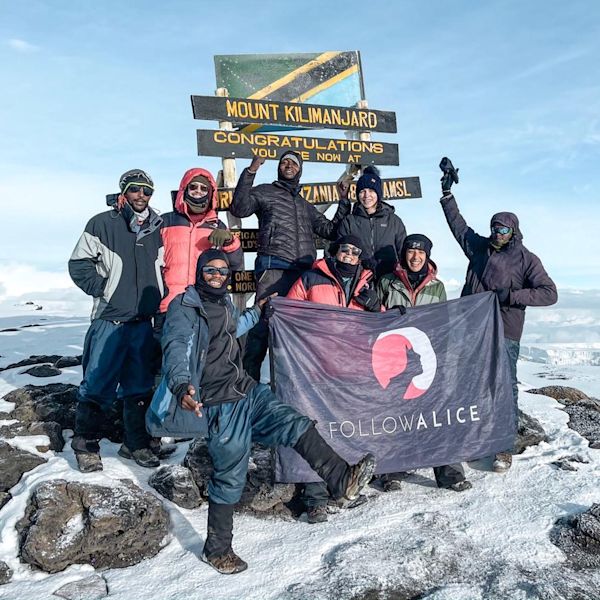
Climb Kilimanjaro
from USD2,850
Keen to stand on the roof of Africa? Climb the world-famous Mount Kilimanjaro with us and make once-in-a-lifetime memories! The three itineraries below are our favourites and the ones we most recommend, as they're all very beautiful and allow you to acclimatise properly – very important for a successful climb!
Our itineraries
We offer four of the seven routes up Kilimanjaro – the best and safest ones! These routes range from seven to nine days, but our itineraries include a night at a local lodge on either side of the climb.

Lemosho Route
The Lemosho is one of our favourite routes up Kilimanjaro as it has varied and beautiful scenery. It also has a high summit success rate!
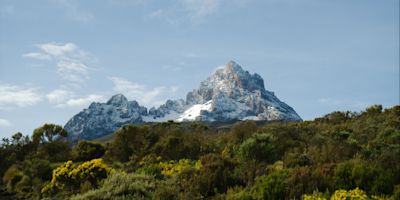
Rongai Route
The Rongai is a quiet and pretty route that lets you see both sides of the mountain. There are no steep sections, rather it's a gradual climb.
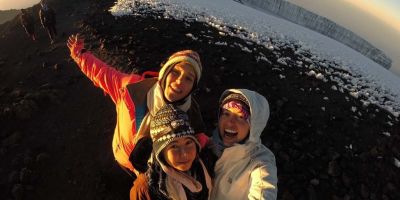
Northern Circuit
The Northern Circuit (also known as the Grand Traverse) is the newest route up Kilimanjaro and it has an excellent summit success rate.
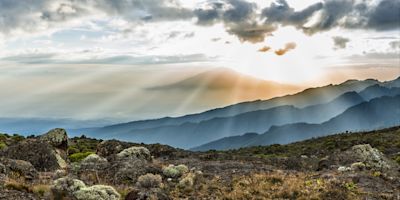
Machame Route
The Machame is a beautiful and popular route. It's a middling route in terms of duration and difficulty.
Country info and facts
Here are the basics you need to know about Tanzania to help you prepare for your adventure, like the nearest airport to Mt Kilimanjaro and the local currency. We also discuss the seasons and potential health risks for climbing Africa's tallest mountain!
Swahili, English
Tanzanian shilling (TZS)
The nearest airport and the one all our clients use is Kilimanjaro International Airport (JRO) just outside the city of Arusha. When coming from outside of East Africa, you must usually fly via Nairobi (Kenya) or Dar es Salaam (Tanzania) to catch a connecting flight to JRO.
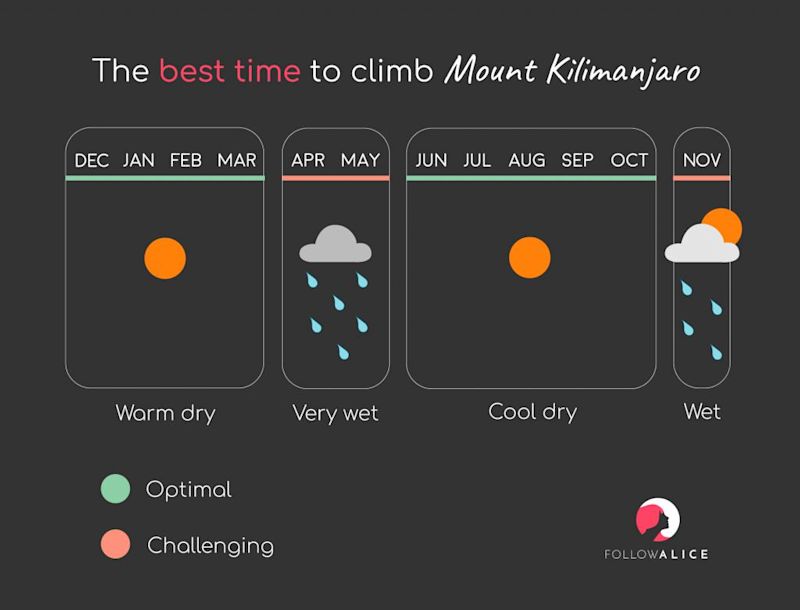
To learn more, please read Best time to climb Kilimanjaro .
A standard Tanzanian tourist visa is valid for up to 90 days and costs $50. US citizens must purchase a multiple-entry visa for $100 that is valid for a year. Note, however, that a visa isn't required for nationals from around 50 countries worldwide, including South Africa, Kenya, Hong Kong, Singapore, China, India, Brazil and Turkey. Learn more here .
It's safe to climb Kilimanjaro when you travel with a reputable tour operator who has your health and safety as their number one priority. The biggest safety issue on a Kilimanjaro climb is the extreme altitude (please read Kilimanjaro altitude sickness so you understand the situation). Note that you must have travel insurance that covers you for hiking up to 6,000 m above sea level to be allowed to climb Kilimanjaro with Follow Alice. A good all-round article to read is Kilimanjaro safety .

Get your free Kilimanjaro guide!
Everything you need to reach the summit of Mount Kilimanjaro successfully
Local leaders
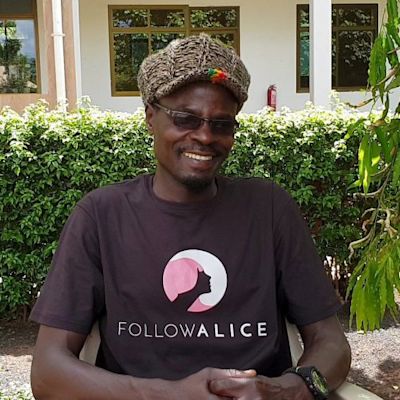
Chris Sichalwe
Chris started working on Kilimanjaro in 1999 and has since made it to the summit over 300 times. He's the founding father of Follow Alice Tanzania and loves taking people to the roof of Africa! He's the steady and competent hand you need, but also a great storyteller who adds so much to every trip!
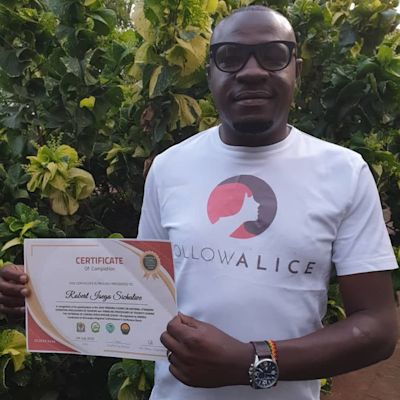
Robert Sichalwe
Robert is a highly experienced Kilimanjaro lead trek guide. He's been leading treks with Follow Alice for years, and we know our climbers are in great hands with Robert as the expedition leader. He's also a great guy who will soon become your friend and an integral part of your Kilimanjaro memories!
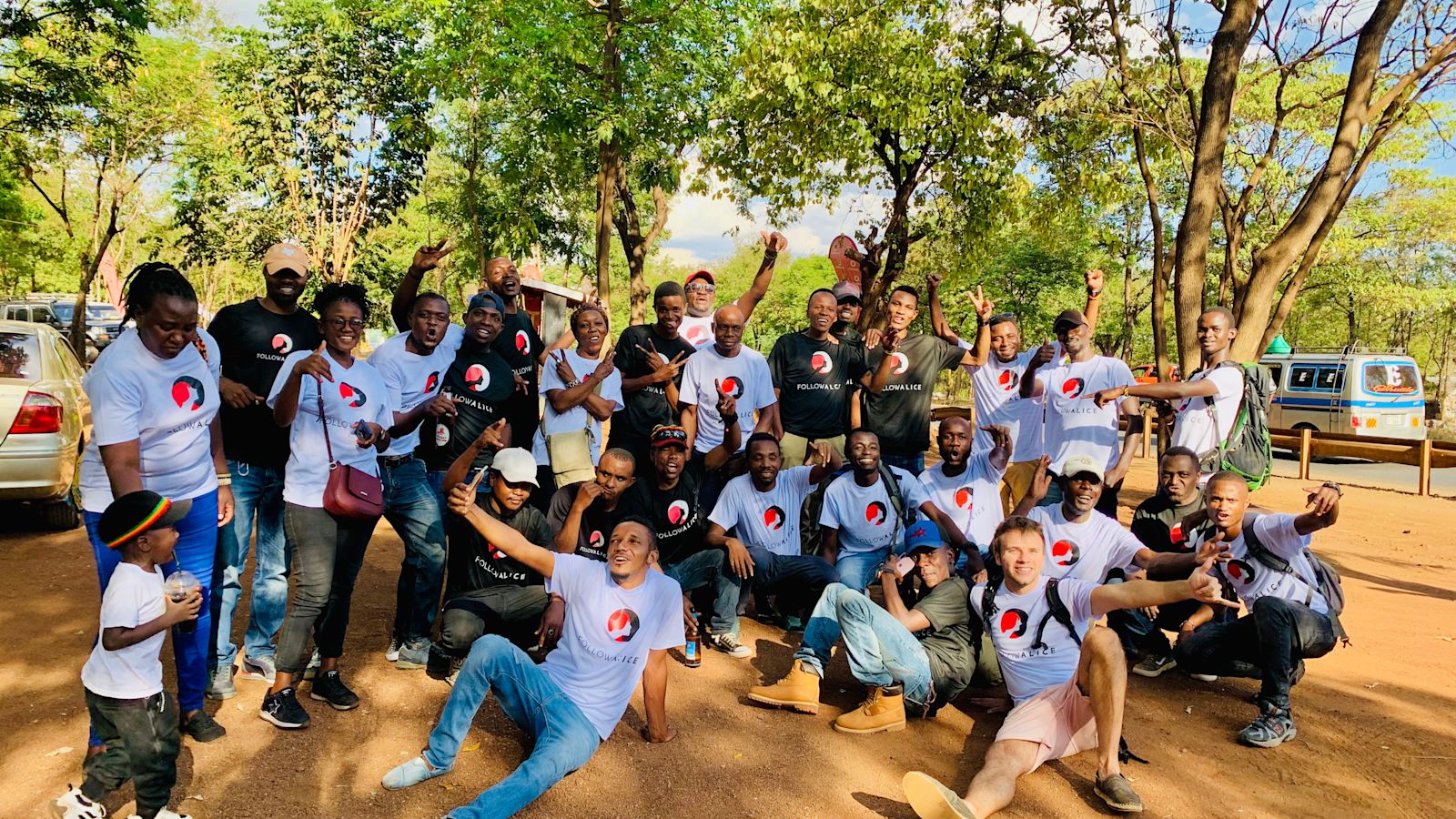
Book your trip
We do our best to provide you the best experience ever
9 Day - Northern Circuit
Jul 4, 2024
Guaranteed to run
8 Day - Lemosho Route
Jul 11, 2024
9 Day - Northern Circuit 🌕Full Moon
Jul 14, 2024
8 Day - Lemosho Route 🌕 Full Moon
Jul 15, 2024
7 Day - Lemosho Route 🌕 Full Moon
Jul 16, 2024
Jul 23, 2024
7 Day - Rongai Route
Jul 25, 2024
7 Day - Machame Route
Jul 30, 2024
Aug 4, 2024
7 Day - Lemosho Route
Aug 7, 2024
Aug 12, 2024
Aug 13, 2024
7 Day - Machame Route 🌕 Full Moon
Aug 14, 2024
Aug 20, 2024
Aug 24, 2024
Don't see your dates?
We can make it happen!
See what others say
Reward yourself after kilimanjaro with a safari.
A safari is a popular way to unwind after your Kilimanjaro climb. The Serengeti and Ngorongoro Crater are only a few hours away by car!
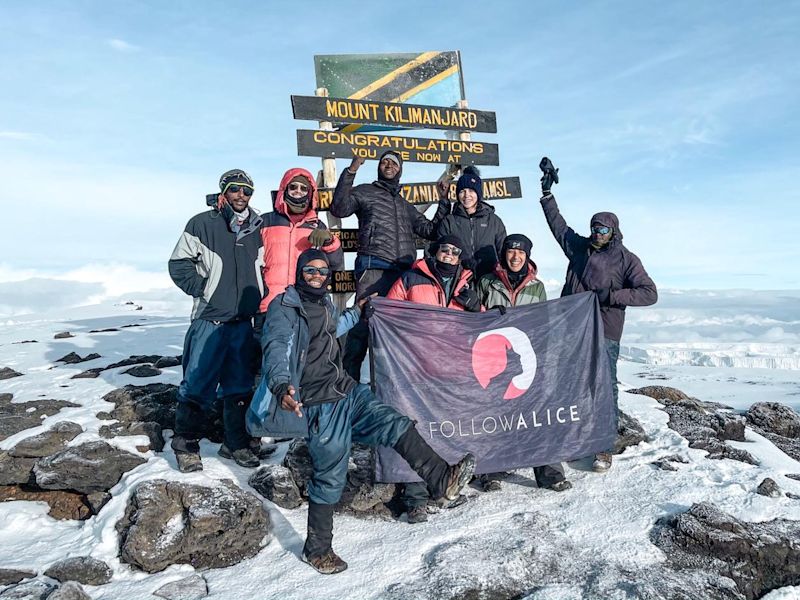
Tanzania Safari
Why follow alice.
We’re one of the only travel companies worldwide with perfect 5* reviews
Customer Reviews
Recommended reads
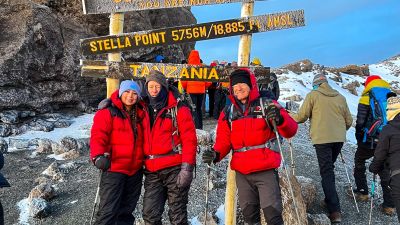
What you pack for your Kilimanjaro climb is vitally important to your health and the success of your trek. We've put together a comprehensive list of what to pack, and why. Please use this as a checklist in planning and packing for your Kili adventure.
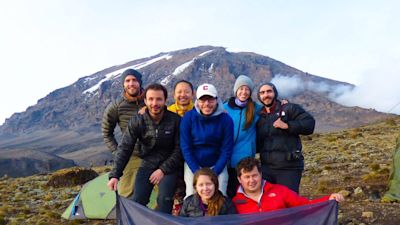
A seven-day Kilimanjaro climb costs around $2,500 to $3,200 on average when travelling with a reputable tour operator. This post explains all the costs involved in a Kilimanjaro climb so that you can make an accurate budget for yourself.
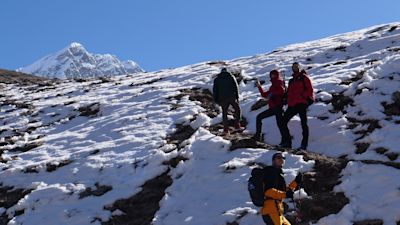
Kilimanjaro and Everest Base Camp are two of the world's most famous and challenging high-altitude treks. But they're very different from one another. We discuss these differences and argue that Kilimanjaro is the harder trek overall.
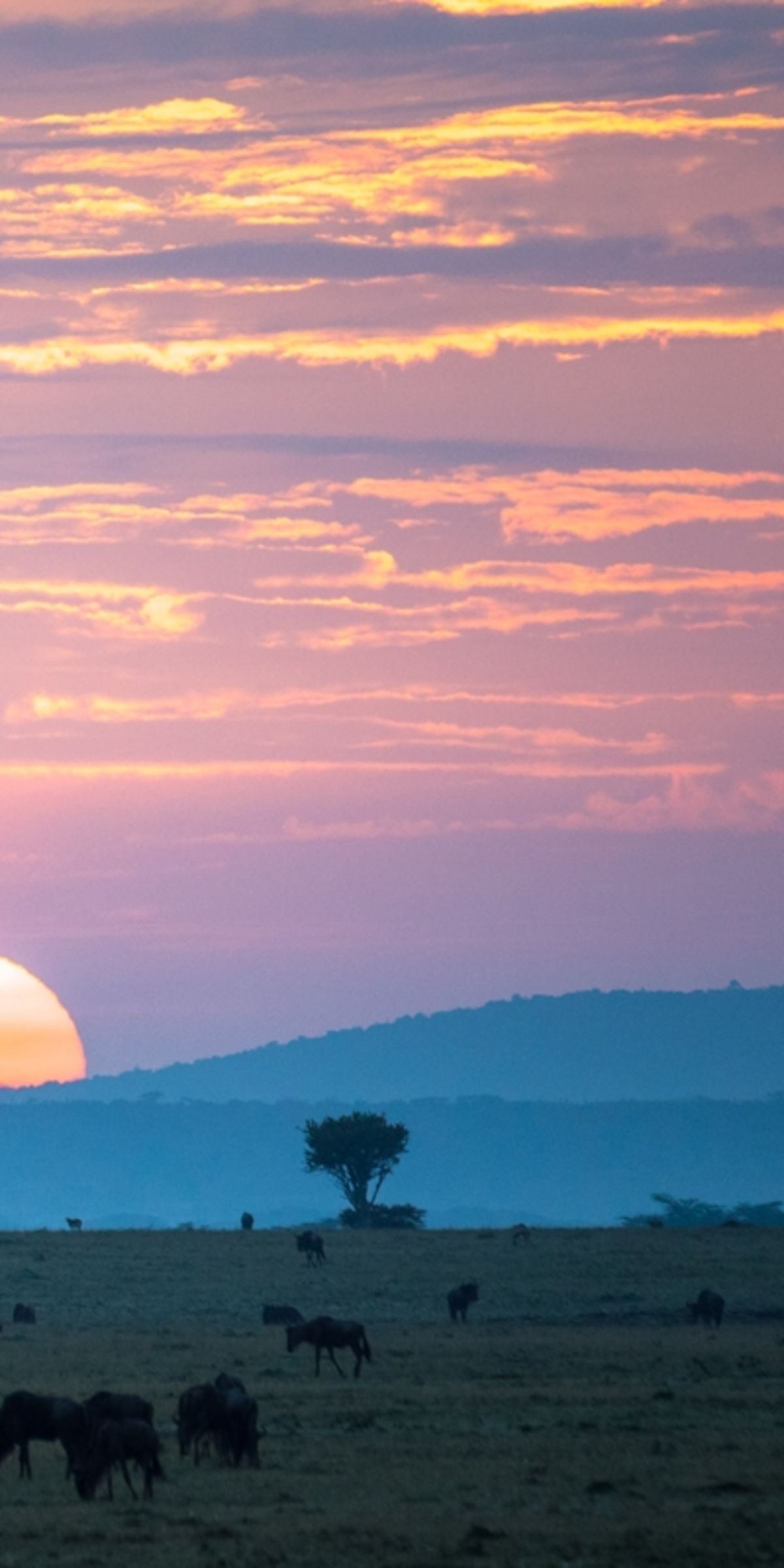
Do I need a visa to travel to Tanzania?
Yes, you need a Tanzanian visa to visit Tanzania, unless you're a national of one of the countries listed here . US, Canadian, British and most European citizens can obtain their visas upon arrival at the airport in Tanzania. If you're a citizen of a different country and need a visa, please check with your embassy whether or not you can obtain a visa upon arrival. That said, we don't recommend waiting till you arrive in the country to obtain a visa, as the queues can be long. We highly recommend applying for your visa online before heading to Tanzania. You can apply for an e-visa at www.immigration.go.tz. We recommend applying at least two weeks in advance of your trip. The cost of a Tanzanian visa is $50. US citizens, however, must purchase a longer, multiple-entry visa for $100.
Please note that in addition to a Tanzanian visa, you also need a passport that's valid for at least six months after your departure date.
Do I need any vaccines for Tanzania?
No. There are no specific vaccine requirements for visitors to Tanzania. However, be aware that the Government of Tanzania does require proof of yellow fever vaccination upon arrival if you're travelling from a country with a risk of yellow fever.
You might want to talk to your doctor about getting the following vaccinations (which are standard in developed countries) before travelling to Tanzania: Hepatitis A and B, typhoid, tetanus, polio, MMR and meningococcal meningitis.
As the situation with Covid-19 is an ever-changing one, please speak to us about this and we'll advise you on the Government of Tanzania's current coronavirus rules and regulations.
Fit for Travel is a good resource for travel health advice.
Is Kilimanjaro safe?
Kilimanjaro is a safe climb when you give yourself enough time to acclimatise and travel with a tour operator that uses well-trained guides. Our guides are well trained in knowing how to keep you safe on the mountain, and you should always listen to their advice.
To learn more about safety on Kilimanjaro, which is an important topic, you might like to read:
- How we keep you safe on Kilimanjaro
- Kilimanjaro safety
- Kilimanjaro altitude sickness
How difficult is it to climb Kilimanjaro?
Kilimanjaro requires no technical climbing experience and any moderately fit person can summit the mountain. However, for most people, it will be one of the hardest things they ever do. Learn how to prepare for Kilimanjaro .
Can I join a group as a solo climber?
Yes, we encourage both solo and group travellers to sign up for our trips! If travelling on your own, we will put you with a bigger group of like-minded fellow travellers who will soon become your new friends. There's nothing quite like being stuck with each other for a week on a mountain to lead to strong bonds!
Where do I sleep on Kilimanjaro?
On six of the seven Kilimanjaro routes , you sleep in tents provided by your tour operator. Only on the Marangu route , the original Kilimanjaro route, do you sleep in communal, A-frame huts.
Read more about sleeping on Kilimanjaro .
When is the best time to climb Kilimanjaro?
Kilimanjaro can be climbed all year round. That said, the best months to climb it are:
- June to October
- December to March
These are the warmest and driest months. July, August and September tend to be the busiest months on the mountain. You can learn more in The best time to climb Kilimanjaro .
Another factor to take into consideration is whether or not you want to do a full moon climb , which is stunning!
If you love travel, join our newsletter
Get the latest news about hidden adventure gems, discounted launch trips and much more straight to your inbox

Kilimanjaro Day Hike Trip
Mount Kilimanjaro is the highest mountain in Africa , standing at 5,895 meters above sea level . It is a dormant volcano located in Tanzania, and it is one of the most famous and challenging mountains in the world to climb. Many adventurers and hikers come from all over the world to conquer this magnificent peak.
One day trip to Mount Kilimanjaro is designed for those who do not have the time or physical ability to climb to the summit , but still want to experience the beauty and grandeur of this iconic mountain. The trip includes a guided hike, transportation, and a chance to learn about the local culture and environment.
Kilimanjaro Day Hike Trip Itinerary:
8:00 AM – Pick up from your hotel in Moshi or Arusha:
Our experienced guide will pick you up from your hotel in Moshi or Arusha and drive you to the foot of Mount Kilimanjaro .
9:00 AM – Arrive at Marangu Gate:
After a one-hour scenic drive, we will arrive at Marangu Gate, the starting point for the trek. Here, we will take care of registration and other formalities before starting our hike.
10:00 AM – Begin the hike:
The hike starts from Marangu Gate, passing through lush rainforests filled with various species of birds, monkeys, and other wildlife. Our guide will lead the way, and you can ask any questions you may have about the mountain or the local culture.
12:30 PM – Reach the first viewpoint:
After a two and a half hour hike, we will reach our first viewpoint, where we will take a break and enjoy a packed lunch while admiring the stunning views of the surrounding landscapes.
1:30 PM – Continue the hike to Maundi Crater:
After lunch, we will continue our hike towards Maundi Crater, a small but beautiful crater on the slopes of Mount Kilimanjaro. Here, we will have another break and take in the magnificent views of the mountain.
3:30 PM – Begin the descent:
After spending some time at Maundi Crater, we will begin our descent back to Marangu Gate.
5:00 PM – Arrive back at Marangu Gate:
We will arrive back at Marangu Gate, where our driver will be waiting to take us back to your hotel in Moshi or Arusha.
6:00 PM – Drop off at your hotel:
Our driver will drop you off at your hotel, where you can relax and reflect on your amazing one-day trip to Mount Kilimanjaro.
What to bring on Kilimanjaro day Hike trip:
– Comfortable hiking shoes
– Sunscreen, hat, and sunglasses
– Light jacket, as the weather can be unpredictable on the mountain
– Enough water and snacks for the hike
– Camera to capture the stunning views
– Cash for any personal expenses or souvenirs
One day trip to Mount Kilimanjaro is perfect for those who want to experience the beauty of this iconic mountain without committing to a longer climb. Our experienced Kilimanjaro guide will ensure your safety and provide you with interesting facts and information about the mountain and the local culture.
Book your trip now and make unforgettable memories on Africa’s highest peak.


This African Mountain Is Considered One Of The Best Natural Wonders In The World
M ount Kilimanjaro, which translates to English as "White Mountain" or "Shining Mountain," is a wondrous sight. Its white peaks are visible from afar, and its gigantic width and height drastically contrasts the flat plains and vegetation below. It stands tall, rising to almost 20,000 feet, making it the tallest point on the whole continent of Africa. This glorious sight is located in Tanzania, which is in East Africa.
Experienced climbers, novice climbers, and those uninterested in climbing all have a place at Kilimanjaro. Whether you're looking to reach the summit in record time or simply observe its enormity and beauty from afar, there are several ways to make your trip memorable. This destination isn't only for adults, either. It can be a family trip. The Tanzania National Parks Authority allows kids 10 and older to climb the mountain (up to 10,000 feet). So bring your climbing gear and family and prepare to have a blast as you take in the breathtaking sights and sounds of Mount Kilimanjaro.
Read more: The Top Natural Wonder In Your State
Hiking Tours And Checklists
For those hoping to climb the mountain, there are multiple groups you can go with. They have tour guides that help you and offer insightful information about the mountain itself, surrounding environment, and cultural history. You can choose among trips ranging from just a couple of days to a whole week. For seasoned climbers, you still have to go with a guide. There are regulations in place prohibiting people from climbing on their own.
Kopa Tours is highly rated on TripAdvisor for their climbs as well as safaris, so if you're interested in getting up close and personal with animals, Kopa Tours is for you. Climbing Kilimanjaro is another company that offers guided climbs up five out of the seven routes — the LeMosho route and Machame route are the easiest, so take note if you're a novice climber.
It's important that you're in good physical shape and that you have all the right items on your checklist before you hike the famous mountain . Some often overlooked items include lotion and chapstick, plenty of layers of clothing (it gets cold, especially at night), sunglasses, and sunscreen. The best time to climb is in January and February as well as June through October to avoid the wet seasons. Typical costs range from $2,000 to $6,000 plus tip.
Exploring Moshi
For those who'd rather not climb, there's still plenty for you to do. Moshi is the closest Tanzanian town to Mount Kilimanjaro, so it's a great place to observe the mountain while being entertained. If you want to have a calm day, consider shopping at a market filled with produce and colorful textiles, or visiting one of the many cafés. If you have a curiosity about where your coffee comes from, you can head over to a coffee plantation. Kilimanjaro Plantation offers guided tours around the plantation as well as coffee tastings.
If you're looking to spend time in nature but aren't quite ready or willing to hike Mount Kilimanjaro, then you can take a dip in the natural Kikuletwa, alternatively known as Chemka, Hot Springs. You can relax in the warm waters or swing on a rope in the jungle. Next, you can visit the breathtaking Materuni waterfalls. You can sign up for a day tour and hike your way to see the splendid, nearly 500-foot waterfall. Finally, there's the Olpopongi Maasai Cultural Village about two hours away. You can learn more, as the name indicates, about Maasai culture as well as history.
As you can see, Mount Kilimanjaro and the surrounding area offers a wide variety of activities for everyone. For those itching for adventure, book your trip to this underrated adventure destination and spend your days climbing, exploring, or doing both.
Read the original article on Explore .
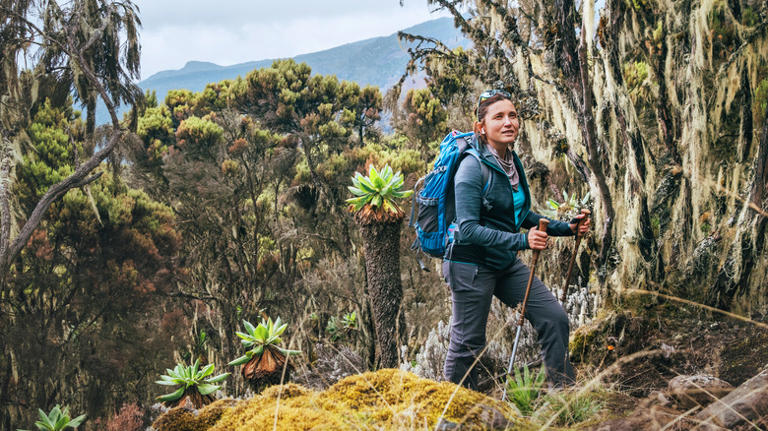

Richland Source
North Central Ohio's Independent Local News

Clear Fork graduate recounts experience of trying to climb Mount Kilimanjaro

Share this:
- Click to share on Facebook (Opens in new window)
- Click to share on X (Opens in new window)
BELLVILLE — A seven-day experience on Africa’s tallest mountain brought Courtney Snell newfound confidence.
In February, Snell, a 2015 Clear Fork High School graduate, travelled to Tanzania along with her boyfriend, Mason Kuhr, to begin a journey up the African continent’s highest peak.
A snow-capped volcano, Mount Kilimanjaro is the largest free-standing mountain rise in the world, according to National Geographic.
Guides from Popote Africa Adventures led Snell, Kuhr and other climbers up the Rongai Route — a remote, seven-day, 49-mile trek approaching Kilimanjaro from the north.
While several thousand miles away from the U.S., Snell said her hometown remained a major source of inspiration.
“It’s super cool to have grown up there (Bellville) and had the small town, country upbringing and now being out exploring the world in the most wild ways,” she said.
“My life is a dream come true — but I’ll never forget my roots. I’m forever grateful.”

Trip to Tanzania was ‘spur of the moment’
Snell was quick to confess hiking isn’t typically a part of her fitness routine — but a once-in-a-lifetime trip was something she couldn’t ignore.
In December 2023, Kuhr, Snell’s boyfriend, was invited by a friend to join them in Tanzania and attempt to climb Kilimanjaro.
“I love the outdoors and nature,” she said. “It was just something that was thrown into me and my boyfriend’s scope.”
Snell admitted she was hesitant to join the journey when Kuhr first approached her about it — but a night’s sleep sparked a change of heart.
“I was absolutely terrified because I hadn’t even trained or anything. But I was like ‘You know what, this is a once-in-a-lifetime opportunity, so I might as well just face this fear and go ahead and do it, and I’ll see what I’m made of.'”
Snell overcame adversity as trek began
Before stepping foot on the Rongai Route, Snell faced adversity.
Dealing with stomach issues — which flared up the night before and morning of the climb’s first day — she also battled the physical and mental challenges Kilimanjaro presents.

“Going into the trip, I was already down and out,” she said. “My digestion was bad and I was super nauseous. Just was not doing well at all.”
“You have all the altitude symptoms of feeling nauseous. It’s harder to breathe, you have headaches constantly and you get very dehydrated.
“You don’t absorb as many nutrients because your body is working in different ways and trying to survive.”
‘Am I strong enough? Can I do this?’
Snell and her fellow climbers began their trek on Feb. 2. The group departed from the Village of Nalemoru and hiked five hours to Simba Camp — gaining nearly 3,000 feet in elevation.
Throughout the next six days, Snell battled significant physical and mental challenges — most notably on Feb. 7.
While her group climbed to the summit of Kilimanjaro, Snell was forced to remain at base camp due to lingering health issues.
Struggling with a mix of emotions, she questioned whether her efforts had been “a waste” while recording a vlog segment.
“You face some pretty dark shadows as you’re climbing it (Kilimanjaro),” Snell said as she reflected on the mental hurdles. “With that, I think you gain a lot of freedom because you go through that pain.”
‘I gained so much clarity on that mountain…’
Several lessons and memories — gained throughout the seven-day journey — accompanied Snell on her trip back to the U.S.
Along with breathtaking views, Snell said she absorbed a strong sense of community while bonding with local guides and other members of the group.
On the fourth day of their trek, the group celebrated its progress with a DJ set.
“It takes a team to do something like this — but you also have to play your role,” she said. “You gain a community when you collectively go through pain like that.”
Snell also explained some of the most memorable moments were experienced in silence.
“The ultimate high was being in silence on the mountain and being with God,” she said. “I feel like I gained so much clarity on that mountain from just being in silence and praying.”
Confidence continues after Mount Kilimanjaro journey
Snell, who currently resides in Tampa, Florida, is a full-time social media content creator — focusing largely on women’s health and fitness.
She has more than 444,000 followers on TikTok and over 70,000 on Instagram.
The confidence gained throughout her time in Tanzania is something Snell said she applies during her everyday life.
“I’d never climbed a mountain before,” she said. “I had no idea what I was doing.
“But now I can look at other challenges in my life and be like ‘I think I’m capable of that because I’ve done this other really hard thing.'”
Although it was an unforgettable experience — Snell isn’t sure it’s something she’d suggest to everyone.
“It was the most challenging experience of my life. I wouldn’t say I recommend it — but at the same time, like I do recommend it,” she said with a smile.
(Below is a YouTube vlog Snell recorded over the course of her seven-day hiking trip. Video courtesy of Courtney Snell.)

(Below are photos from Snell’s seven-day experience climbing Mount Kilimanjaro. All images courtesy of Courtney Snell.)

Community investment made this reporting happen. Independent, local news in Shelby and Northern Richland County is brought to you in part by the generous support of Phillips Tube Group , R.S. Hanline , ArcelorMittal , Lloyd Rebar , Hess Industries , and Shelby Printing .
Hayden Gray Shelby/North County Reporter
Staff reporter at Richland Source since 2023. I focus on the city of Shelby and northern Richland County news. Shelby H.S./Kent State alum. Have a story to share? Email me at [email protected]. More by Hayden Gray

IMAGES
VIDEO
COMMENTS
Climb Kili is the premier trekking company for climbing Kilimanjaro and Tanzania safaris and we answer all the Kilimanjaro Questions. At Climb Kili, we pride ourselves in providing the safest Mt Kilimanjaro treks with our certified equipment and professional Mt Kilimanjaro Guides. Make your reservation for a Kilimanjaro tour today!
Assistant guide - $15 USD per day. Cook - $12 USD per day. Toilet engineer - $5-10 USD per day. Waiter - $5-10 USD per day. Porters - $5-10 USD per day (each) What I read online beforehand stated that a 15% tip is customary. So, if you paid $2,500 USD for your trip than you'd tip at least $330 USD to the team.
Machame Route. Despite being longer and more arduous than the Marangu and Rongai trails, the Machame route has emerged in recent years as a popular choice for trekkers. The 25 miles trail passes through cloud forests and moorland zones to the glaciated precipices of Kibo's south face. Unlike the Marangu and Rongai routes, trekkers descend via ...
Climb Mount Meru - A little under 43 miles (69 kilometers) to the southwest of Kilimanjaro, Mount Meru is the next great peak that scores the Serengeti. It hits 14,900 feet (4,542 meters) and can be conquered in three or four days. It's often seen as a fantastic acclimatization hike before climbing Kilimanjaro proper.
What I wish I knew before climbing Kilimanjaro. written by Jen Welch October 1, 2022. My hike to Kilimanjaro started a year before I even set foot on Tanzanian soil. I was on a domestic flight in neighboring Kenya and the pilot announced that if we looked out the window to our right, we could see the summit of Mount Kilimanjaro - the tallest ...
This is the classic climb of Kilimanjaro with Alpine Ascents. Most of our offerings are on the Machame and with over a 95% success is an excellent non-technical route for both beginners and those with some prior climbing experience. It should be noted that the "Lemosho" becomes the Machame route on day 3 or 4. The Lemosho 8 Day Route ...
As of 2023, a comfortable and safe 7-day group climb costs about $2500-2700. A shorter 5-6-day adventure or a season-discounted trip comes at $2000-2300. This amount includes the park entrance fees, which make up about 40% of the total trip cost. Any trekking companies offering below this amount should warrant caution.
Climb Kilimanjaro with Ultimate Kilimanjaro® - The #1 Guide Service on Mount Kilimanjaro. For over 15 years, we have provided the highest quality Kilimanjaro hikes at a reasonable cost. Our expert guides, quality standards and focus on safety have made us the top choice for thousands of happy customers from all over the world. We are one of the largest and most reputable operators on Mount ...
Mt Kilimanjaro Trek Tours. Located in stunning Tanzania right near the border with Kenya, Mount Kilimanjaro is a dormant volcano and a bucket list destination for any adventure lover. Climbing Kilimanjaro has never been easier. Embark on a tour that will take you on majestic hiking routes, where you will get to visit impressive landmarks and travel accompanied by like-minded people.
Time Your Trip . It is possible to climb Mount Kilimanjaro all year round, but some months are distinctly more comfortable than others. Tanzanian weather patterns mean that there are two optimum seasons for trekking Kilimanjaro—from January to March, and from June to October. Between January and March, the weather is cooler and the routes are less crowded.
Climb Kilimanjaro! Tanzania. 11 Days. From $6,895. Level 6+. Book Online Download Itinerary Call 1-800-368-2794. Book Online Download Itinerary. Call 1-800-368-2794 or contact us for any questions. Important Note: Wilderness Travel does not summit Kili from Barafu (15,311'), as most other companies do!
Mawenzi (16,893'/5,149m) Shira (13,000'/3,962m) Kibo is the tallest cone and also the central cone. This is where Kilimanjaro's summit lies. It was formed 460,000 years ago. Mawenzi is a craggy peak that ranks as the third highest peak in Africa, after Kibo and Mount Kenya (12,549'/3825m).
The tallest trees in Africa can be found on Kilimanjaro's western slopes. The trees measure up to 81.5m tall. In addition to being the biggest tree in Africa, the tree is also a contender for being one of the oldest: it is estimated that the trees are all around 500-600 years old! 3.
Climb Kilimanjaro with Kilimanjaro Trip Safaris, the Number 1 guide service on Mount Kilimanjaro. We specialize in group climbs and private climbs at a reasonable cost. About Kilimanjaro. Mount Kilimanjaro is the highest free standing Mountain in the world and the second highest mountain in the world after the Everest. Well Mount Kilimanjaro ...
Quick Facts. Elevation Gain: Kibo, Kilimanjaro's highest cone, rises approximately 12,940 feet from base to summit. Length of Climb: It typically takes 6-10 days, allowing for gradual acclimatization. Recommended Routes: Marangu Route is shorter and more comfortable. Lemosho or Northern Circuit are longer and offer better acclimatization.
Climbing Kilimanjaro. Mount Kilimanjaro, located in Tanzania, East Africa, is the highest mountain in Africa with an elevation of 19,341 feet (5,895 meters). It is the largest free-standing mountain in the world and is one of the seven summits. Its snow-capped peak towers above the surrounding Savannah's and is part of the Kilimanjaro ...
Climbing Kilimanjaro Company receives our highest recommendation. On June 6th, 2021, our family of 5, including 2 boys 18 and 16, and a girl, 14, began climbing the 7 day Lemosho route to the summit of Mt. Kilimanjaro. We had fantastic support from many people including the porters, chef, and assistant guides.
We've perfected the climb to the celebrated "snows of Kilimanjaro" on the stunning Lemosho-Crater trail on Kili's remote southwest flanks, and it makes a fantastic Private Journey to celebrate with family or friends. With seven days on the ascent for maximum altitude acclimatization, your group will have the best chance of peak success—plus just a short climb to the summit to view the ...
Kilimanjaro can be climbed year-round, but we recommend avoiding the two rainy seasons (November and April-May). Climbing Kili is a major draw for all adventure-seekers, but this 7-10 day trip is not for the faint-hearted. It is estimated that half of those who attempt the climb do not summit.
The biggest safety issue on a Kilimanjaro climb is the extreme altitude (please read Kilimanjaro altitude sickness so you understand the situation). Note that you must have travel insurance that covers you for hiking up to 6,000 m above sea level to be allowed to climb Kilimanjaro with Follow Alice.
Preparing for a Kilimanjaro Trip. You'll need to prepare in various ways for your trip up Mt. Kilimanjaro, from proper outfitting and gear, to physical and mental preparation. ... Stress Management: Climbing Kilimanjaro can be physically and mentally demanding, which leads to stress and anxiety for some climbers. Develope effective stress ...
Kilimanjaro Day Hike Trip. Mount Kilimanjaro is the highest mountain in Africa, standing at 5,895 meters above sea level. It is a dormant volcano located in Tanzania, and it is one of the most famous and challenging mountains in the world to climb. Many adventurers and hikers come from all over the world to conquer this magnificent peak.
It can be a family trip. The Tanzania National Parks Authority allows kids 10 and older to climb the mountain (up to 10,000 feet). ... Climbing Kilimanjaro is another company that offers guided ...
Trip to Tanzania was 'spur of the moment' Snell was quick to confess hiking isn't typically a part of her fitness routine — but a once-in-a-lifetime trip was something she couldn't ignore. In December 2023, Kuhr, Snell's boyfriend, was invited by a friend to join them in Tanzania and attempt to climb Kilimanjaro.